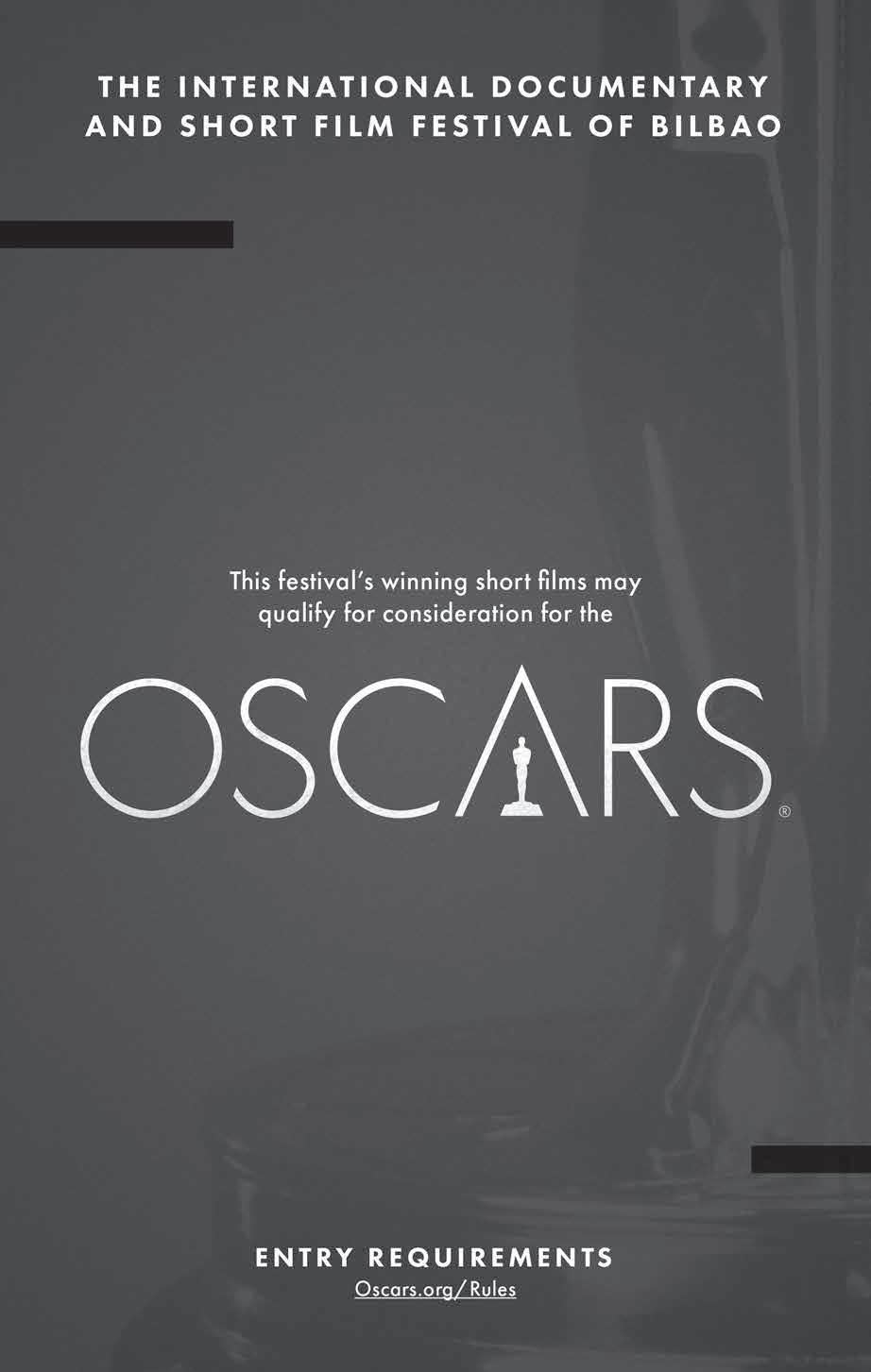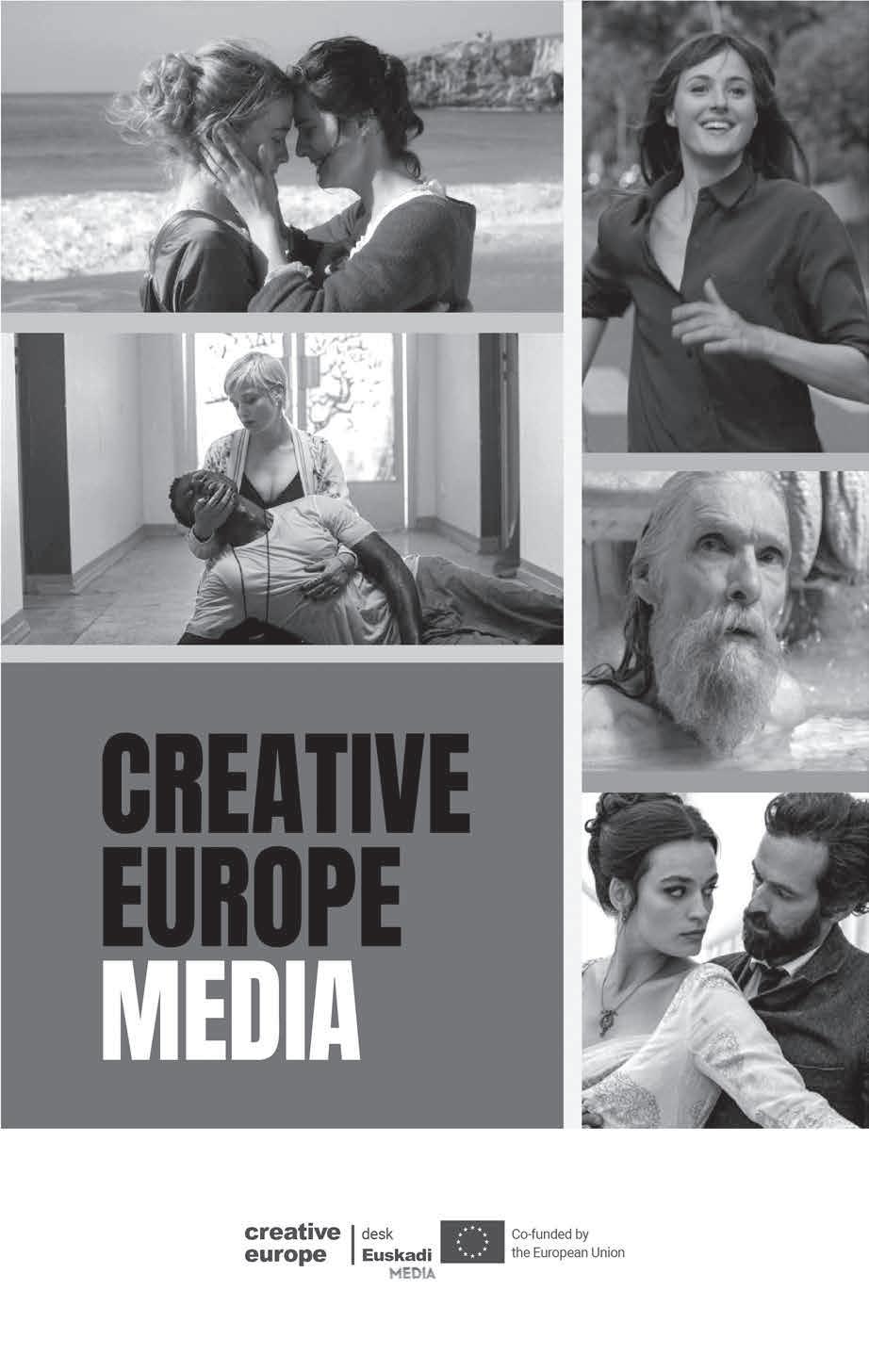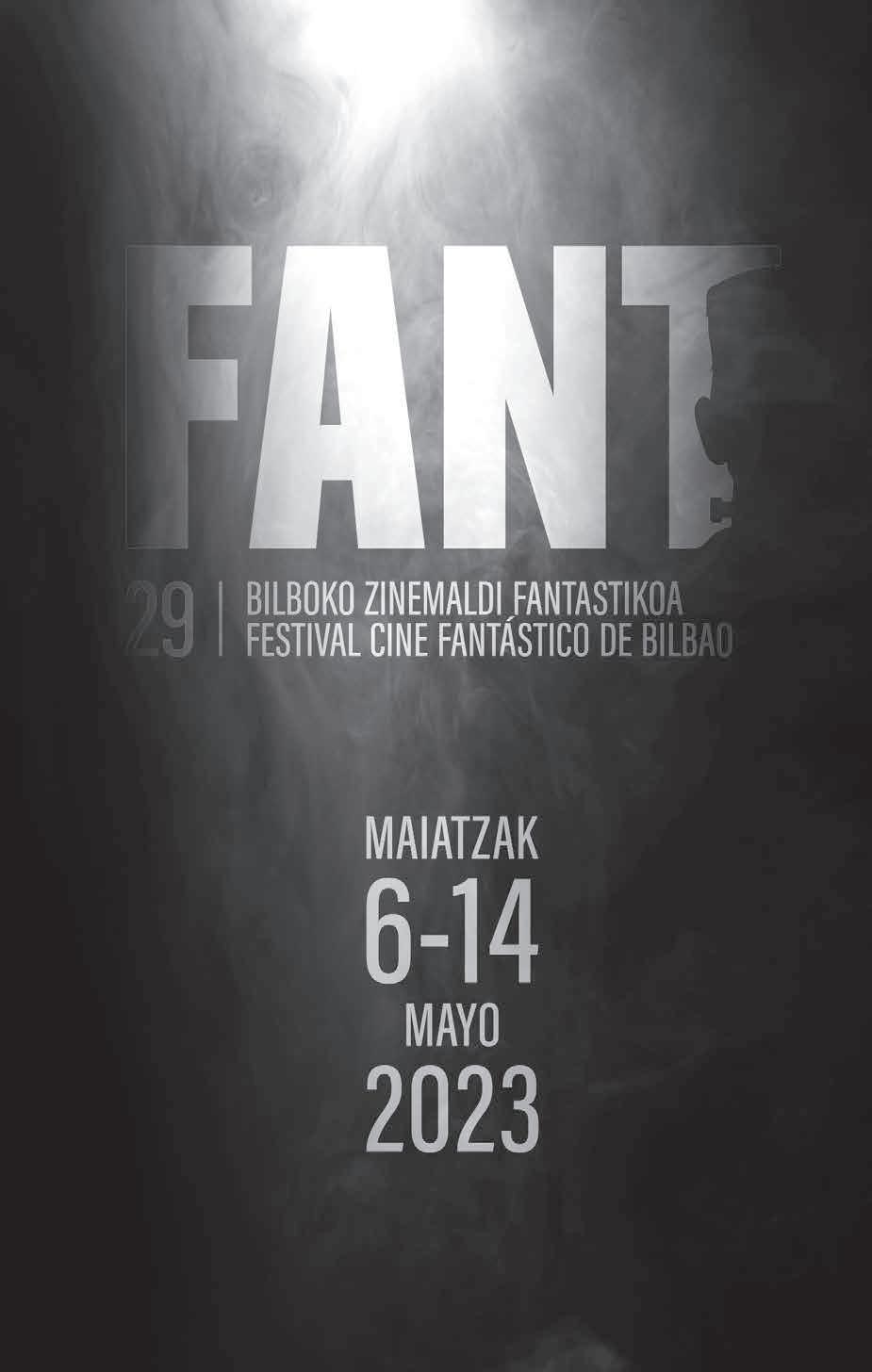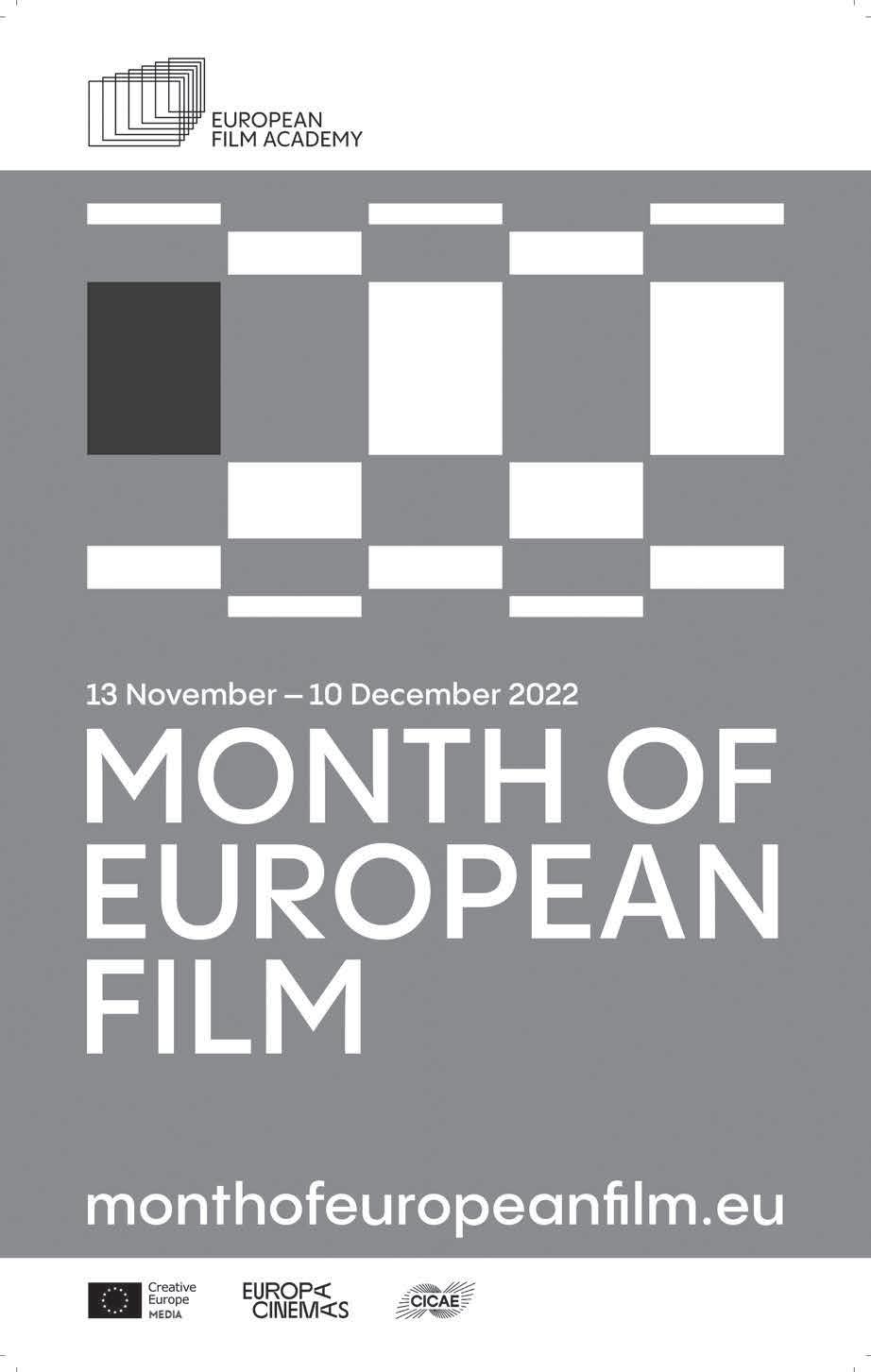

Organizers / Antolatzaileak / Organizadores:
Financed by / Finantziatutakoa / Con financiación de:
ZINEBI Networking:
Venues / Egoitzak / Sedes:
Collaborators / Laguntzaileak / Colaboradores:




Organizers / Antolatzaileak / Organizadores:
Financed by / Finantziatutakoa / Con financiación de:
ZINEBI Networking:
Venues / Egoitzak / Sedes:
Collaborators / Laguntzaileak / Colaboradores:

190 Éric Rohmerren atelierra. Eric Rohmer’s Atelier. El atelier de Éric Rohmer
Urak dakar
218 Peloponnisos International Doc Film Festival at ZINEBI 64
224 Futbola, zinema eta Munduko Txapelketa. Football, Cinema and the World Cup. Fútbol, cine y el Mundial
232 Islatutako keinua. The Reflected Gesture. El gesto reflejado
ZINEBItxiki
250 Saio bereziak. Special Programmes. Programas especiales
Batalla de vídeos: Velasco Broca vs. Carlo Padial
Ez bultza egin! (EBE!)
Martian Civilization A/V Show
258 Industry. Industria
260 ZINEBI Networking 2022: Dokumentalen Sorgunea Biboko zinema dokumentalari buruzko V. Foro profesionala
Documentary Film Professional Forum of Bilbao
Foro profesional de cine documental de Bilbao
Cantabria-Euskadi Networking 2022
Meetings
269 Emakumeak zinemaren jaialdietan… Non gaude? Women at Film Festivals… Where Are We? Las mujeres en los festivales de cine… ¿Dónde estamos?
Film laburrak hedatzea eta nazioartekotzea: Autonomia Erkidegoen arten sarean lan egitea. Circulation and Internationalization of Short Films: Networking between Spanish Autonomous Communities. Difusión e internacionalización de los cortometrajes: trabajar en red entre las Comunidades Autónomas
Aukera programa jardunaldi profesionala. Aukera Programme Professional Meeting. Jornada profesional programa Aukera
277 Filmeen aurkibidea. Film Index. Índice por películas
Zuzendarien aurkibidea. Index of Directors. Índice por cineastas
Jaialdiaren antolatzaileak. Festival Organization. Organización del festival

Politika, nire ustean, zerbitzu publikoa da: hala defendatzen dut, eta hala aldarrikatzen dut. Eta guri politikan aritzera bultzatzen diguna da gure gizarte osoaren aurrerabidea bilatzea, inor atzean utzi barik. Erakunde publikoetan bete izan ditudan karguetan egindako bidean, hori izan da nire helburua, jardun batean aitzindari izan naizen bakoitzean, eta hala da orain ere.
Azken urte hauetan lan handiagoa izan dugu uriko herritarrei eta eragile sozial eta ekonomikoei laguntzen, ustekabean iritsi diren egoera larriak saihestu behar izan dituztenez eta aurre egin behar izan dietenez: pandemia globalak, inbasioak eta gerrak Europan, hornigai eskasia, inflazio bat orain dela 40 urte baino gehiago gertatzen ez zena...
Aurre egin beharreko desafioak zailak dira, baina, nola herritarrak erresilentziaz hornitzen diren, halaxe, Udalean ere, gogotik jartzen gara erresistentzia bermatzen laguntzera. Berba gogorrak dira, bai,... jarduteko gaitasuna dugun arlo guztietan zain dauzkagun erronken mailakoak. Arlo horien artean dago, hain zuzen, kultura ere. Kulturak beti balio izan du arma intelektualez hornitzeko unean uneko erronkei aurre egiteko ideiak eskaini behar dituztenak, eta, gaur den egunean, oraindik ere zeregin funtsezkoa bete-
tzen du. Eta, logikoa denez, kultura garaikidearen lurraldean, komeni da Bilbon arreta jartzea ZINEBIk ekarriko digun zinemari.
Zinema Dokumentalaren eta Film Laburren Nazioarteko gure Jaialdi honetan ez dugu konponbiderik aurkituko, esate baterako, Ukrainako gerra konpontzeko,... Hala balitz! baina aurkituko ditugu, bai, lekukotza urgenteak, Errusiak inbaditu duen herrialde horretako zinemagileenak, eta aurtengo programa guztiz interesgarrian datoz: Ukrainan beren garaiarekin engaiatuta dauden artistek han bertan egindako film laburrak eta dokumentalak, eta, artista horiek, hain zuzen, uste dute film batek ezin duela gerra irabazi, baina ireki ahal dituela gure begiak, basakeria ikaragarri horretatik hain hurbil ez egon arren. Orain, jada, hedabideetako berriek ez dute betetzen lerroburu handirik, baina, hala ere, ZINEBIk gogoraraziko digu gauza bat, otsailetik hona ahaztu ez zaiguna: Europan gerra bat izatea etxean gerra bat izatea dela.
Pentsamenduaren gezi-burua denez, artea beti izan da gure orainaz gogoeta egiteko tresnarik eraginkorrena. Zinemaren arlotik, ZINEBI da Bilbok horretarako eskaintzen duen erantzuna.
Juan Mari Aburto Bilboko Alkatea
I stand by politics and vouch for it as a public service. The driving force behind our actions is the comprehensive progress of our society, with no one left behind. In the course of my long career in a number of posts in public institutions, that has been and still is my objective in each action I have led, and still lead.
For some years now the workload has shown more of a tendency to encourage the general public and the social and economic agents of the City to prevent or cope better with unexpectedly serious situations: global pandemics, invasions and wars in Europe, supply shortages, levels of inflation not seen for almost forty years…
Though the challenges we must face may be complex, just as citizens are showing resilience, at the Town Hall we are also making a contribution to guarantee resistance. These words are just as harsh as the challenges facing us in all areas where we have the capacity to act. One of those areas is culture.
Culture has always served to shore up intellectually those who must produce ideas to solve challenges at any given time, and it continues to play a vital role at the present time. And, logically, in
the territory of contemporary culture, we must pay attention in Bilbao to the programme we find in ZINEBI.
In our International Festival of Documentary and Short Film we will not find the solution, for example, to the war in Ukraine — if only we could; but this year we will find the urgent testimony of filmmakers from this country invaded by Russia, in a most interesting programme of short films and documentaries made there by artists committed to their times, who understand that a film does not win the war, but it does open the eyes of those of us who are not seeing the barbarity at close range. Even though news items in the media may no longer make the headlines, ZINEBI will remind us of something that we have not forgotten since February: that a war in Europe is a war at home.
As the maximum exponent of thought, art has always been the most effective instrument to reflect on our current times. In the world of cinema, ZINEBI is Bilbao’s answer to this.
Juan Mari Aburto Mayor of BilbaoDefiendo y reivindico la política como servicio público. Siendo el motor de nuestras actuaciones el progreso de nuestra sociedad al completo, sin dejar a nadie atrás. En mi amplia trayectoria en diferentes cargos en instituciones públicas ese ha sido y es mi objetivo en cada actuación que he liderado y lidero.
Llevamos unos años en los que la carga de trabajo se ha inclinado más hacia propiciar que la ciudadanía, agentes sociales y económicos de la Villa puedan esquivar o mejor hacer frente a situaciones inesperadamente graves: pandemias globales, invasiones y guerras en Europa, escasez de suministros, una inflación que no se veía desde hace casi cuarenta años…
Por complejos que sean los desafíos a los que tengamos que enfrentarnos, del mismo modo que la ciudadanía se arma de resiliencia, desde el Ayuntamiento nos aplicamos en contribuir a garantizar la resistencia. Son palabras de una dureza al nivel de los retos que nos apelan, en todas las áreas en las que tenemos capacidad de actuación. Entre ellas, la cultura.
La cultura siempre ha servido para rearmar intelectualmente a quienes tienen que aportar ideas para solucionar los retos de cada momento, y a día de hoy, sigue desempeñando un papel fun-
damental. Y, lógicamente, en el territorio de la cultura contemporánea conviene prestar atención en Bilbao al cine que encontramos en ZINEBI.
En nuestro Festival Internacional de Cine Documental y Cortometraje no encontraremos la solución, por ejemplo, a la guerra de Ucrania, ojalá; pero sí encontraremos este año los testimonios urgentes de cineastas de ese país invadido por Rusia a través de un interesantísimo programa de cortometrajes y documentales hechos allí por artistas comprometidos con su tiempo, que entienden que la guerra no la gana una película, pero que sí que abre los ojos de aquellas personas que no estamos tan cerca de la barbarie.
Aunque las noticias en los medios de comunicación ya no ocupen los grandes titulares, ZINEBI nos recordará algo que no hemos olvidado desde el mes de febrero: que una guerra en Europa es una guerra en casa.
Como punta de lanza del pensamiento, el arte siempre ha sido el instrumento más eficaz para reflexionar sobre nuestro presente. Desde el ámbito cinematográfico, ZINEBI es la respuesta que Bilbao ofrece para ello.
Juan Mari Aburto Alcalde de BilbaoIragarpen asko eta oso ilunak egin ziren zinema hil egingo zela-eta, asmatua izan eta handik gutxira: zinemaren asmakaria bera bezain aspaldikoak dira iragarpen horiek. Are eta gehiago, esaten da Lumière anaiek ere “etorkizunik gabeko asmakuntzatzat” jo zutela beren sorkaria. Bada, iragarpen horiek zeinen oker zeuden erakusten du aurki zinematografoak beteko dituen 127 urteak.
Arte guztiak bezala, zinema egokitu egin da denborarekin, eta ez dira urriak izan zinemagileen eta zinemazaleen ahaleginari esker garaitu dituen mehatxuak, aldaketak eta izurriteak: zinemagileek egiten dituzten filmei abegi egiten diete zinemazaleek. Eta, dirudienez, hala izango da aurrerantzean ere, aldi batean.

Eta, tartean, zinemagintzako industria, finantzaketa biltzen eta proiektuak hobetzen, eta laguntza bilatzen emaitza hobeak lortzeko, banaketa handiagoa lortzeko, erakusteko leiho gehiago aurkitzeko...Zinemagintzako ekoizpenaren xedea da garaiotan berriz ere hegan hastea, eta Bilbon, bertako enpresek indarrari eusteko egiten dituzten ahalegin iraungiezinei gehitu behar zaie Bilbao Bizkaia Film Commission entitatearen ahaleginak, beti Bizkaira filmaketak erakartzeko lehian, eta, gero, prozesuaren beste maila batean, ZINEBIk ekar ditzakeen finantza-pizgarriak daude, zeren eta gure zinema-jaialdi honek, zinemak berak bezala, urtero-urtero berrasmatzen baitu bere burua, gehiago izatera iristeko.
ZINEBI Networking: Dokumentalen Sorgunea da Bilboko Zinema Dokumentalaren Foro Profesio-
nala, zeina orain dela bost urtetik hona ospatzen baita, jaialdia den bitartean. Foro horretan, euskal dokumental filmen proiektuak lehiatzen dira, beren ekoizpen-aurrekontuetarako gehigarri polit bat eskuratzearren. Aurten, ZINEBIk ahalegin horiek adinako bi egingo ditu, eta euskal proiektuei ezertan kalterik egin gabe, lehiaketa berri bat abiaraziko du Estatu osoko film dokumentalen proiektuetarako. Baina ez hori bakarrik: gainera, aukera eskainiko du zinemaren munduko merkaturik garrantzitsuenera joateko ZINEBIren eskutik, Cannes-era, 2023ko maiatzean beren proiektuak aurkeztera.
Gehiago izatera iristea da gehiago egitea, eta hala erakutsiko du ZINEBIk bere 64. edizio honetan ere: izan ere, elkarlan berri bat estreinatuko du, Gijóngo Zinemaren Nazioarteko Jaialdiarekikoa, zeina egonkorra bihurtu nahi baitu, zeren eta, hartara, filmetako batzuk bi lehiaketetan ikusi ahalko baitira ia-ia aldi berean.
Gehiago izatera da film gehiago izatea, munduko leku gehiagotatik ekarrita, eta, halaber, Bilbon eta Bizkaia osoan publiko berriak bilatzea, atzen urteotan aretoetatik alde egin beharrean izan direnak: ZINEBIk hitzordua egin nahi du berriro bere ikusleekin, udazkenean, zeina beti baita egokia horretarako, eta beren-beregi gonbidatu nahi ditu adinekoak eta adingabeak. Zinemagileek filmak egiten jarraitzen dute, eta jarraitu nahi dute gurea bezalako jaialdietan beren filmak publikoari erakusten.
Many darker than dark prophesies heralded the death of cinema not long after it was invented: they are as old as the invention itself. They say that even the Lumière brothers dubbed their creation an “invention with no future”. 127 years of history to be celebrated by filmmakers in a few days go to show just how wrong they were.
Like all forms of art, films have always adapted to the passage of time, and they have managed to overcome no small number of threats, modifications and plagues thanks to the determination of directors and the public: films produced by the former are welcomed by the latter. And it seems that will be the tonic for some time to come.
Amid all this, the film industry, tasked with securing funds, completing projects, seeking collaboration to obtain better results, better distribution, more exposure outlets etc. Film production is now attempting a comeback, and in Bilbao the perennial efforts of local businesses to maintain their muscle team up with those of the Bilbao Bizkaia Film Commission to bring film shoots to the Territory and, in another phase of the process, the potential financial stimulus of ZINEBI, our film festival which, like the cinema itself, is reinventing itself to grow bigger every year.
ZINEBI Networking: Dokumentalen Sorgunea is Bilbao’s Professional Documentary Film Forum, which has been held during the Festival for the
last five years. Basque film documentaries have competed here to secure a healthy plus for their production budgets. This year ZINEBI is redoubling this task and, without wresting a single possibility from Basque projects, it now has a new competition for documentaries produced in the rest of the State. But that is not all — this also offers the possibility of going with ZINEBI to the world’s major film market, Cannes, to present their projects in May 2023.
Growing bigger means doing bigger, and ZINEBI is demonstrating this at its 64th Festival, which also includes a first-time stability collaboration with the Gijón International Film Festival, thanks to which a number of films will be screened during both events at practically the same time.
Growing bigger means having more films at more locations around the world, but it also means seeking out new viewers in Bilbao and the rest of Bizkaia province who have had to forsake cinemas in recent years, and ZINEBI will meet up with its audience again in the eternally propitious autumn, with an explicit invitation for both young and old. Directors are still making their films, and they still want to show them to the public at festivals such as ours.
Gonzalo Olabarria Culture and Governance CouncillorMuchos y muy negros fueron los vaticinios que auguraron la muerte del cine desde poco tiempo después de su invención: son tan antiguos como el propio invento. Se dice que incluso los hermanos Lumière tacharon su creación de “invención sin ningún futuro”. De hasta qué punto estaban equivocados dan testimonio los 127 años de historia que, en unos días, podrá celebrar el cinematógrafo.
Como todas las artes, el cine siempre se ha adaptado al paso del tiempo, y no han sido escasas las amenazas, modificaciones y plagas que ha logrado derrotar gracias al empeño de cineastas y público: las películas que producen desde el primer extremo son recibidas por el segundo. Y parece que así seguirá siendo durante un tiempo.
En medio, la industria cinematográfica, encargada de reunir financiación, perfeccionar proyectos, buscar colaboraciones para obtener mayores resultados, una mayor distribución, más ventanas de exhibición… La producción cinematográfica intenta remontar el vuelo estos tiempos, y en Bilbao, a los perennes esfuerzos de las empresas locales para mantener el músculo se suman los de la Bilbao Bizkaia Film Commission para atraer rodajes al Territorio y, en otro escalón del proceso, los estímulos financieros que puede aportar ZINEBI, nuestro festival de cine que, como el propio cine, se reinventa para llegar a más cada año.
ZINEBI Networking: Dokumentalen Sorgunea es el Foro Profesional de Cine Documental de Bil-
bao que, desde hace cinco años, se celebra durante el Festival. En él, proyectos de películas documentales vascas han competido por hacerse con un buen añadido a sus presupuestos de producción. Este año, ZINEBI redobla ese esfuerzo y, sin restar ni una sola posibilidad a los proyectos vascos, abre una nueva competición para proyectos de películas documentales del resto del Estado. Pero no solo eso, también la posibilidad de acudir de la mano de ZINEBI al mercado del cine más importante del mundo, el de Cannes, para presentar sus proyectos en mayo de 2023.
Llegar a más supone hacer más, y ZINEBI lo demuestra en su 64ª edición, en la que además estrena una colaboración con vocación de estabilidad con el Festival Internacional de Cine de Gijón, merced a la cual, algunas películas se podrán ver en los dos certámenes prácticamente al mismo tiempo.
Llegar a más es tener más películas y de más lugares del mundo, pero también es buscar esos nuevos públicos de Bilbao y el resto de Bizkaia que se han tenido que ir de las salas en los últimos años, y ZINEBI volverá a citarse con sus espectadores y espectadoras en el siempre propicio otoño, con una invitación expresa a reencontrarse con menores y mayores. Los y las cineastas siguen haciendo sus películas, y siguen queriendo mostrarlas al público en festivales como el nuestro.
Gonzalo Olabarria Concejal de Cultura y Gobernanza365 egun, ZINEBIren edizio batetik bestera igarotzen den denbora. Gure 63. edizioa 2021eko azaroan amaitu genuen, pandemia arintzen ari zela pentsatuz, eta aurten itxaropen batekin hasi dugu urtea: zinema-aretoetara behin betiko itzuli ahal izatearekin. Horregatik, 64. edizio honetan, ikusleak aretoetara itzul daitezen sustatu nahi dugu, jaialdi erabat presentzial baten aldeko apustua eginez. Berriz ere mugarik gabe elkartzen garela ospatuko dugu, espazioak eta uneak partekatuko ditugula. Aurten atsegin handiz emango diogu Ohorezko Mikeldi sarietako bat Agnieszka Holland zinemagile eta gidoigileari, Europako Zinema Akademiaren (EFA) egungo zuzendariari, Europako Historiaren aldaketa handiak islatu dituen ibilbide borrokalari eta oso batean norbanakoaren askatasunekiko begirada konprometitua mantentzeagatik.
Eta, aurten emango ditugun aintzatespenen artean, zinemaren ezinbesteko erreferentzia bat ere azpimarratu nahi dugu, mugimenduan dauden irudien edertasunari buruz duen ikusmolde erradikalean erostezina den zinemagile bat, Albert Serra bikaina. Zinema garaikidearen izen garrantzitsuenen ibilbidea eta dimentsio artistikoa aitortzeko erantzukizun horretan, duela gutxi zendu den Iñigo Salaberria zinemagile eta artista gipuzkoarra ere omenduko dugu. Jaialdian ohikoa zen, eta beti bereizi izan da ia kontinente guztietako errealitatea jasotzeko zuen begirada bereziagatik eta, batez ere eta beti, bere talentuagatik eta eskuzabaltasunagatik gogoratuko dugu.

Aurtengo edizioa oso irekia eta askotarikoa izango da, izan ere, gustu guztientzako 148 filmez gozatzeko aukera izango baitugu: zinemazaleentzat, profesionalentzat, ikusleentzat oro har, eta baita gazteentzat eta haurrentzat ere. Nazioarteko zinema onenaren sorta bat, euskal zinemaren proposamen iradokitzaileenak ahaztu gabe. Jaialdiak urteak daramatza euskal sorkuntza berria babesten eta ikustera ematen, eta horretarako ere lotura estua du erakunde nagusi guztiekin. Horren erakusgarri —eta ZINEBItik harro egoteko arrazoia— da aurten ere elkarlanean arituko garela Arriaga Antzokiarekin, Guggenheim Museoarekin, Arte Ederren Museoarekin, Azkuna Zentroarekin, Golem Alhondegia Zinema-aretoekin, BBK Aretoarekin, Bilborockekin eta FAS Zineklubarekin. Gure programazioan, hori baita gure burua aurkezteko eta gure asmoak adierazteko modurik
onena, beste bi zinemagile handiri ere egingo diegu omenaldia: Jean-Luc Godardi eta zineman hasi zenetik bidelagun izan zuen Éric Rohmerri. Bestalde, industriari lotutako atala jarduera gehiagorekin indartuko da aurten, eta ZINEBI Networking Zinema Dokumentalaren Bilboko Foro Profesionalaren bosgarren edizioa egingo dugu. Foro horren osasun onaren erakusle dira jasotzen ari den babes instituzional gero eta handiagoa: ez bakarrik estatuko eta autonomia-erkidegoetako erakundeek ematen dioten babesagatik, baizik eta baita nazioarteko aliantzengatik ere. Horiek horrela, aurten, ZINEBI Cannes Docs-Marché du Film plataformaren jaialdi bazkide gisa estreinatu da; plataforma zinema dokumentalean espezializatutako mundu osoko ikus-entzunezkoen industriako profesionalak konektatzeko diseinatuta dago. Askok ospatutako albistea da hori, ezin baitugu ahaztu ZINEBIk nazioartean duen papera. A klaseko nazioarteko jaialdi bakarra da Estatuan, dokumental eta film laburren espezialitatean, eta jaialdi kalifikatzaile akreditazioa du Oscar sarietarako, BAFTA sari britainiarretarako eta Goya sarietarako. Gainera, iaztik, ZINEBI EFA sarietarako hautagai den film labur batean aukeratzen duen mundu osoko jaialdi talde murriztuaren parte da.
Eta hainbeste plater nagusi artean, hausnarketarako gune bat ere badago, ilusio berezia egiten didana, emakume eta ZINEBIko zuzendari naizen aldetik. Nazioarteko zinemaldi ugaritako profesionalen topaketa bat egingo dugu honako izenburuarekin: Emakumeak zinemaren jaialdietan… Non gaude? Eztabaidarako espazio bat sortu nahi dugu, oso beharrezkoa dena, sektore honetan lan egiten dugun emakume guztionotzat. Planteatzen dugun galdera, ordea, honako hau da: zer gertatzen da jaialdi horietako zuzendaritza-postuei eta programazio-taldeei erreparatuz gero?
Urtez urte, lanean jarraitzen dugu, zinemaldiak inoiz baino ezinbestekoagoak direnaren uste sendoarekin, film laburrak, dokumentalak eta sortzen ari den zinema independente guztia ikusarazteko eta erakusteko. Horregatik guztiagatik, ZINEBI 64 esperientzia presentziala izango da, kolektiboa, anitza eta berdintasunezkoa.
Vanesa Fernández Guerra ZINEBIko Zuzendaria365 days is the time between one ZINEBI festival and another ZINEBI festival. We wound up our 63rd festival in November 2021 in the belief that the pandemic was receding, and this year we began work again on what we hope is a final return to cinemas. And so at this 64th festival we want to encourage people to go back there after two very tough years for the cinemas and distributors we associate with, and this year we are staging a 100% in situ event.
We hope to meet up again with no restrictions, share spaces and time together again, and enjoy being with the famous directors paying us a visit. This year we have the immense pleasure of awarding one of our Mikeldi of Honour awards to the director and scriptwriter and current president of the European Film Academy (EFA), Agnieszka Holland, for maintaining a committed contemplation of individual freedoms throughout a complete and combative trajectory, which has documented the major changes in the History of Europe.
And, among our awards this year, we also wish to home in on an unquestionable giant of contemporary cinema, a director unbribable in his radical conception of the beauty of images in movement, the exceptional Albert Serra. In this responsibility of acknowledging the trajectory and the artistic dimension of the leading lights of contemporary films, we will also be paying tribute to the Gipuzkoa director and artist who passed away recently, Iñigo Salaberria. A regular feature at the festival, his distinguishing feature was always a specific gaze to home in on the reality of practically all recipients, and most especially we will remember him for his talent and generosity.
The new festival, which will be an extremely open and varied event, will give us the chance to enjoy 148 films catering for the tastes of one and all: film buffs, cinematographic professionals, the general public, and also young people and children. A selection of the best international films, without forsaking the most appealing examples of Basque cinema. For years the festival has been supporting and showcasing the new Basque creation, and so it also has close links to all our primary institutions. Proof of this - and a great source of pride for ZINEBI - is that this year we will also be working in association with the Arriaga Theatre, the Guggenheim Museum, the Fine Arts Museum, Azkuna Zentroa, the Golem Alhóndiga Cinemas, Sala BBK, Bilborock and Cineclub FAS.
Our schedule, which is our most visible letter of presentation and declaration of intent, will also pay tribute to two great directors: Jean-Luc Godard and his comrade-in-arms from his beginnings in films, Éric Rohmer.
Meanwhile, the section concerning industry has been enhanced this year with more activities, and we will be holding the fifth ZINEBI Networking, the Bilbao Professional Documentary Film Forum, which is showing a very clean bill of health indeed, judging by growing institutional support for the scheme: not only in terms of the support from state and autonomous-community institutions, but also through our international alliances. And so ZINEBI enters its first year as partner festival to the Cannes Docs-Marché du Film platform, designed to connect professionals operating as documentary specialists in the audiovisual industry worldwide. This is extremely good news for the sector, since we must not forget the international role played by ZINEBI. It is the State’s only Category A festival specialising in short films and documentaries, and a qualifier festival for the Oscars, the British BAFTA Awards and the Goya Awards. Last year ZINEBI also joined the small group of festivals from all over the world selecting a short film as a candidate for the EFA awards (European Film Academy).
And amid all this excitement, there is a space for reflection which I am particularly keen to implement, in my capacity as a woman and director of ZINEBI. This year, in association with Mostra Internacional de Film de Dones, we will be staging an encounter of professionals operating in a number of international film festivals, entitled Women at Film Festivals... Where Are We? We wish to generate a much-needed space for debate, because all of us working in this sector know that the teams working on production, communication, copy management, guest services, protocol and other areas of film festivals are mostly composed of women. The question we wish to pose, however, is: What if we take a look at the management posts at the festivals, and the programming teams?
Year after year, we continue to work with the firm conviction that our festivals are, more than ever before, crucial links to showcase and exhibit short films, documentaries and all kinds of emerging independent cinema. That is why ZINEBI 64 will be an in situ, collective, diverse and equality-based experience.
Vanesa Fernández Guerra Director of ZINEBI365 días es el tiempo que transcurre de una edición a otra de ZINEBI. Finalizábamos nuestra 63ª edición el pasado noviembre del 2021 pensando que la pandemia estaba ya remitiendo y comenzábamos este año, el que se espera que sea la vuelta definitiva a las salas de cine. Por ello, en esta 64ª edición, queremos fomentar la vuelta del público a las salas tras dos años muy duros para los cines y distribuidoras de nuestro entorno, apostando por un festival totalmente presencial.
Celebraremos volver a juntarnos sin restricciones, volver a compartir espacios y momentos, y disfrutar de la presencia de célebres cineastas que nos visitarán. Este año tenemos el inmenso placer de otorgarle uno de nuestros premios Mikeldi de Honor a la cineasta y guionista, actual directora de la Academia de Cine Europeo (EFA), Agnieszka Holland, por mantener una mirada comprometida con las libertades individuales a lo largo de una trayectoria combativa e integra, que ha reflejado los grandes cambios de la Historia de Europa.
Y, entre los reconocimientos que este año brindaremos, también queremos destacar a un referente ineludible del cine, a un cineasta insobornable en su radical concepción de la belleza de las imágenes en movimiento como lo es, el excepcional Albert Serra. En esta responsabilidad de reconocer la trayectoria y la dimensión artística de los nombres más relevantes del cine contemporáneo, también homenajearemos al cineasta y artista guipuzcoano recientemente fallecido, Iñigo Salaberria. Asiduo al festival, siempre ha destacado por su mirada particular de recoger la realidad de prácticamente todos los continentes y, sobre todo y siempre, le recordaremos por su talento y generosidad.
Esta nueva edición, que se presenta muy abierta y variada, disfrutaremos de 148 películas para todos los gustos: para cinéfilos, profesionales, público en general, y también para los jóvenes y el público infantil. Un abanico del mejor cine internacional, sin olvidarnos las propuestas más sugerentes del cine vasco. El festival lleva años apoyando y visibilizando la nueva creación vasca y para ello también cuenta con una estrecha vinculación con todas las principales instituciones. Prueba de ello –y motivo de orgullo para ZINEBI- es que este año volvemos a contar con la colaboración del Teatro Arriaga, Museo Guggenheim, Museo de Bellas Artes, Azkuna Zentroa, Cines Golem Alhóndiga, Sala BBK, Bilborock y Cineclub FAS.
En nuestra programación, la carta de presentación y declaración de intenciones más visible,
rendiremos también tributo a dos grandes cineastas: Jean-Luc Godard y su compañero de batallas desde sus inicios en el cine, Éric Rohmer.
Por su parte, el apartado vinculado a la industria se refuerza este año con más actividades, y llevaremos a cabo la quinta edición de ZINEBI Networking, el Foro Profesional de Cine Documental de Bilbao, cuya muestra de buena salud son los crecientes apoyos institucionales que está recibiendo: no solo por el sustento que le confieren instituciones estatales y autonómicas, sino también a través de nuestras alianzas internacionales. Así, este año, ZINEBI se estrenó como festival socio de la plataforma Cannes Docs-Marché du Film, diseñada para conectar a profesionales de la industria audiovisual de todo el mundo especializados en cine documental. Noticia muy celebrada en el ámbito ya que no hay que olvidar el papel internacional que ZINEBI desempeña. Es el único festival de categoría A en su especialidad de cortometraje y documental del Estado y es un festival calificador para los Oscar, los premios británicos BAFTA y los Premios Goya. Además, desde el año pasado, ZINEBI forma parte del restringido grupo de festivales de todo el mundo que elige en un cortometraje candidato a los premios EFA (de la Academia de Cine Europeo).
Y entre tanto plato fuerte, hay un espacio de reflexión que me hace especial ilusión llevar a cabo, como mujer y directora de ZINEBI que soy. En esta edición acogeremos, en colaboración con la Mostra Internacional de Film de Dones, un encuentro de profesionales de distintos festivales de cine internacionales titulado Las mujeres en los festivales de cine… ¿Dónde estamos? Queremos generar un espacio de debate, muy necesario, ya que todas las que trabajamos en este sector sabemos que los equipos de producción, comunicación, gestión de copias, atención a personas invitadas, protocolo y otras áreas de los festivales de cine están formadas, en su mayoría, por mujeres. La pregunta que planteamos, sin embargo, es: ¿qué pasa si observamos los puestos de dirección en esos festivales y sus equipos de programación?
Año tras año, seguimos trabajando con la firme convicción de que los festivales somos, más que nunca, eslabones cruciales para la visibilización y exhibición de los cortometrajes, de los documentales y de todo el cine emergente e independiente. Por eso, ZINEBI 64 será una experiencia presencial, colectiva, diversa e igualitaria.
Vanesa Fernández Guerra Directora de ZINEBI
Urtero, Jaialdiaren irudiaren aurkezpena da lehiaketaren abiapuntua, pixkanaka ZINEBIko programazioaren xehetasunen berri ematen hastekoa. Bertan hasten da ikusleenganako bidea eta, Jaialdiaren 64. edizioko irudiaren kasuan, Happyending estudioak begirada ikusentzunezko sorkuntzaren elementu oso berezi baterantz zuzendu du. Aukeratutako elementuak ere hasierari egiten dio erreferentzia: doitzekartei, hau da, kolorea eta fokuratzea kalibratzeko kartei. Ikusentzunezko edukiaren aurretik dagoen horretaz ari gara.
Irudi ikoniko horietatik, Ángela Alonsok eta Elena Pereak forma geometrikoen, oinarrizko koloreen eta motiboen unibertso bat lapurtzen dute, lengoaia bisual propio eta oso antzemangarri bat sortzeko aukera ematen diena. Aurten, lengoaia horrekin, ikusentzunezko sorkuntzan dihardutenen ogibidera gerturatu nahi izan dute Jaialdia. Bere printzipio bakarra ez bada ere, ZINEBIk beti izan du bere funtsean berrikuntzaren eta esperimentazioaren bilaketa, aski ezagunak diren gaietara beste modu batean hurbiltzea edo haietara gehiago gerturatzea, sakontasun handiagoz ikusteko; gai horiek, gainera, gure gizartearentzat interesgarriak izan daitezke, inspiragarriak, baita kezkagarriak ere. Horregatik, Happyending Studiok planteatutako kanpaina grafikoak bi oinarri ditu: batetik, beren apustu estetikoak gogora ekartzen dituen elementu grafikoekin esperimentazio formala egitea eta, bestetik, narratiboa den hori azpimarratzea (diskurtso sinplisten ga-
raian hausnarketarako funtsezko elementu gisa), ikusentzunezko iruditeria kolektiboko liburutegietatik abiatuta, non ikusizko pilula txikiak aurki baititzakegu, eta pilula horiek lehiaketaren bizkarrezurra diren film laburrei egiten diete erreferentzia.
Ángela Alonsok eta Elena Pereak 2012an sortu zuten Happyending Studio. Diseinu grafikoan, ilustrazioan eta arte zuzendaritzan espezializatutako sormen estudio independentea da, eta Bilbon du egoitza.

Biak Arte Ederretan lizentziadunak dira: lehenak Europako Diseinu Institutuaren “Sormen sektoreko enpresen diseinu eta hazkundeari" buruzko programa exekutiboan parte hartu zuen, eta hainbat espazioren diseinua eta kontzeptualizazioa garatu zituen, hala nola Expo Zaragozan Euskadik izan zuen pabiloia edo Segoviako Akueduktuaren Interpretazio Zentroa, besteak beste; bigarrenak Londresko UALen eta Parisko Cake Design estudioan osatu zuen bere prestakuntza, besteak beste Hennessy, Le Royal Monceau, Roger Pradier, McDonald’s edo Azkuna Zentroarentzat diseinatzaile grafiko gisa lan egin aurretik.
Happyending Studio azken urteotan Bilboko Dokumentalen eta Film Laburren Nazioarteko Jaialdiaren irudia sortu duten diseinatzaile bizkaitarren zerrendan sartu da. Bertan Rebeka Arce, Eider Corral eta Susana Blasco daude, besteak beste.
Each year, presentation of the Festival image constitutes the event’s starting point for subsequent publication of details of the ZINEBI programme. The path towards viewers begins there, and in the case of the image of the 64th Festival the Happyending studio focused on a very specific feature of audiovisual creation, which is also a reference to beginnings: test cards, and colour/focus calibration cards. Here we are talking about what precedes audiovisual content.
From these iconic images Ángela Alonso and Elena Perea proceed to steal away a universe of geometric shapes, basic colours and motifs enabling them to create an eminently recognisable visual language, in a bid to bring the craft of those who work in audiovisual creation to the Festival this year.
Although this may not be its only principle, the essence of ZINEBI has always contained a search for innovation, for experimentation, different ways of approaching issues already well known to us, or issues which require focus to find out more about them: issues that may interest, inspire or disturb our society. This is why the Happyending Studio graphics project is based on two pillars: formal experimentation with graphic features homing in on aesthetics; and a
focus on narrative concerns (as a basic element for reflection in times of simplistic discourses) in collective audiovisual concept libraries through small visual shorts conveying the short films that are the backbone of the event.
Ángela Alonso and Elena Perea founded Happyending Studio in 2012. It is an independent creative studio based in Bilbao, specialising in graphic design, illustration and artwork.
Both of them are Fine Arts graduates: the former worked on the executive programme on “Design and expansion of businesses in the creative sector” at the European Design Institute, and was responsible for the design and conceptualisation of spaces such as the Basque Country stand at Expo Zaragoza and the Interpretation Centre for the Segovia Aqueduct, among other projects; the latter completed her studies at London’s UAL and the Cake Design studio in Paris, before working as graphic designer for customers such as Hennessy, Le Royal Monceau, Roger Pradier, McDonald’s and Azkuna Zentroa, among others.
Happyending Studio joins the list of Bizkaia designers that have been creating the image of the International Festival of Documentary and Short Film of Bilbao in recent years, featuring Rebeka Arce, Eider Corral and Susana Blasco.
La presentación de la imagen del Festival constituye cada año para el certamen su punto de partida para la progresiva publicación de los detalles de la programación de ZINEBI. El camino hacia los espectadores se inicia allí, y en el caso de la imagen de la 64ª edición del Festival, el estudio Happyending ha dirigido su mirada hacia un elemento muy particular de la creación audiovisual, y que también hace referencia al inicio: las cartas de ajuste, las cartas de calibración de color y enfoque. Hablamos de aquello que precede al contenido audiovisual.
De esas imágenes icónicas Ángela Alonso y Elena Perea roban un universo de formas geométricas, colores básicos y motivos que les permiten crear un lenguaje visual propio y muy reconocible, que quiere acercar este año al Festival al oficio de quienes practican la creación audiovisual. Aunque no sea el único de sus principios, en la esencia de ZINEBI siempre ha estado la búsqueda de la innovación, de la experimentación, de maneras distintas de acercarse a temas que son de sobra conocidos o a los que hay que acercar el foco para saber más de ellos; temas que pueden interesar, inspirar o preocupar a nuestra sociedad. Por eso, la campaña gráfica planteada por Happyending Studio se sustenta en dos pilares: la experimentación formal con esos elementos gráficos a los que remite su apuesta estética; y la apelación a lo narrativo (como ele-
mento fundamental para la reflexión en tiempos de discursos simplistas) desde las bibliotecas del imaginario audiovisual colectivo, en las que hallan pequeñas píldoras visuales que remiten a los cortometrajes que son la columna vertebral del certamen.
Ángela Alonso y Elena Perea fundaron Happyending Studio en 2012. Es un estudio creativo independiente especializado en diseño gráfico, ilustración y dirección de arte con sede en Bilbao.
Ambas son licenciadas en Bellas Artes: la primera formó parte del programa ejecutivo sobre “Diseño y crecimiento de empresas del sector creativo” en el Instituto Europeo de Diseño, y desarrolló el diseño y conceptualización de espacios como el pabellón de Euskadi en Expo Zaragoza o el Centro de Interpretación del Acueducto de Segovia, entre otros; la segunda, completó su formación en la UAL londinense y el estudio parisino Cake Design, antes de trabajar como diseñadora gráfica para clientes como Hennessy, Le Royal Monceau, Roger Pradier, McDonald’s o Azkuna Zentroa, entre otros.
Happyending Studio se incorpora a la lista de diseñadoras vizcaínas que, en los últimos años, han creado la imagen del Festival Internacional de Cine Documental y Cortometraje de Bilbao, y en la que figuran nombres como los de Rebeka Arce, Eider Corral o Susana Blasco.
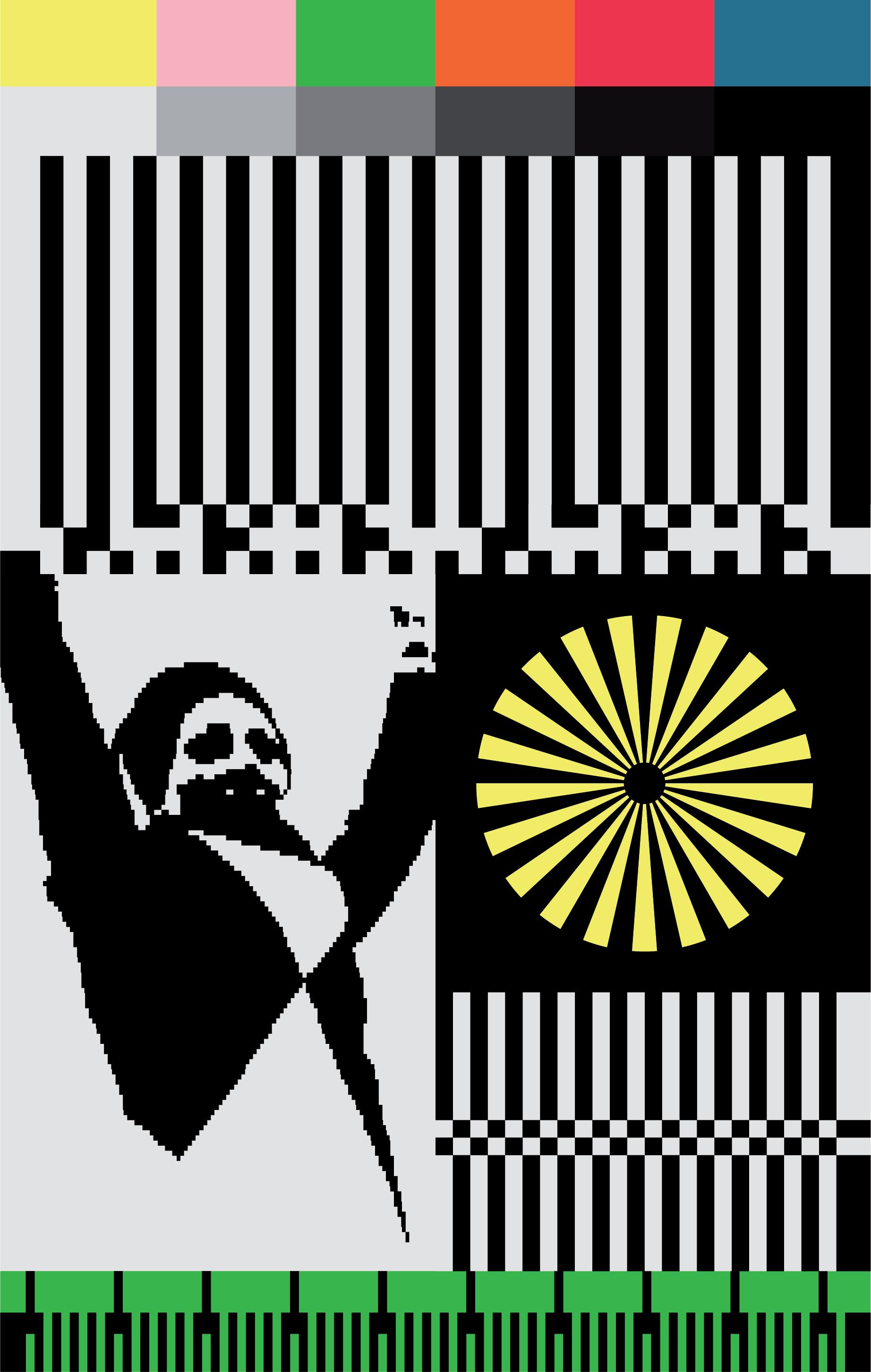
Zinema programatzailea da Ecozine Zinemaldian. Zinemaren arloko profesional gisa, hainbat zinemaldirekin kolaboratu du, hala nola Les Films de Cannes à Bucarest, Bucharest International Experimental Film Festival (BIEFF), NexT Film Festival jaialdiekin. Zinemak aldaketarako tresna gisa duen ahalmena interesatzen zaio eta, hori dela eta, elkarlan estua egin izan du Pelicam - Ingurumenari eta Jendeari buruzko Nazioarteko Zinema Jaialdiarekin, bai jaialdiaren programatzaile gisa, bai koordinatzaile gisa. Bere beste eremu profesionala zinemak hezkuntzarako bitarteko gisa duen zereginarekin lotuta dago eta, horrek bultzatuta, zinemarekin lotutako hainbat hezkuntza-programatan parte hartu du (CinEd, Éducation à l’image, CineKids, Kinoteca Bloc Zero). Antropologia eta Soziologia ikasketak egin zituen Bukaresteko Unibertsitatean, eta Zinematografia Ikasketetan masterra egin zuen East Angliako Unibertsitatean.
Film programmer at Ecozine Film Festival. As a film professional, she has collaborated with several film festivals such as Les Films de Cannes à Bucarest, Bucharest International Experimental Film Festival (BIEFF), NexT Film Festival. Her interest for cinema as an instrument for change has been the driving force of a long collaboration with Pelicam – International Film Festival about Environment and People, both as a programmer and a festival coordinator. Her other professional area revolves around the role films can play as educational resources, so she has worked extensively with various film education programmes (CinEd, Éducation à l’image, CineKids, Kinoteca Bloc Zero). She studied Anthropology and Sociology at the University of Bucharest and has a Masters in Film Studies from the University of East Anglia.
Programadora de cine en el Festival de Cine Ecozine. Como profesional del cine, ha colaborado con varios festivales de cine como Les Films de Cannes à Bucarest, Festival Internacional de Cine Experimental de Bucarest (BIEFF), NexT Film Festival. Su interés por el cine como instrumento para el cambio ha sido el motor de una larga colaboración con Pelicam - Festival Internacional de Cine sobre Medio Ambiente y Personas, tanto como programadora como coordinadora del festival. Su otra área profesional gira en torno al papel del cine como recurso educativo, por lo que ha colaborado estrechamente con diversos programas educativos relacionados con el cine (CinEd, Éducation à l’image, CineKids, Kinoteca Bloc Zero). Estudió Antropología y Sociología en la Universidad de Bucarest y tiene un máster en Estudios Cinematográficos por la Universidad de East Anglia.

1966an jaioa, eta Alemanian eta Suitzan hazia. Soziologia ikasi zuen Bielefelden eta Parisen, eta ikerketa lanak egin zituen ikusizko soziologiari eta etnografiari buruz. Oberhausengo Film Laburren Nazioarteko Jaialdian lan egiten du 1995etik, zinemaldiaren nazioarteko lehiaketaren eta nazioarteko harremanen arduradun gisa. Testuinguru horretan, Zinema Jaialdien Europako Koordinazio Batzordeko kide izan zen 1996tik 2000ra bitartean, eta Film Laburren Nazioarteko Konferentziako presidentea 1998tik 2003ra; horrez gain, European Short Film Network-eko (ESFN) bazkide sortzaileetako bat ere izan zen, 2018an. Nazioarteko zinemaldi askoren epaimahaikide izan da, eta baita mundu osoko zinema programetako komisario ere.
Born in 1966, raised in Germany and Switzerland. She studied Sociology in Bielefeld and Paris, and did research on Visual Sociology and Ethnography. She has been with the International Short Film Festival Oberhausen since 1995 as Head of the international competition and international festival relations. In this context, she has been a member of the board of the European Coordination of Film Festivals from 1996 to 2000, and has been president of the International Short Film Conference from 1998 to 2003, as well as founding member of the European Short Film Network (ESFN) in 2018. She has been jury member at numerous international film festivals and has curated film programmes worldwide.
Nacida en 1966 y criada en Alemania y Suiza. Estudió Sociología en Bielefeld y París, y realizó trabajos de investigación sobre Sociología Visual y Etnografía. Trabaja en el Festival Internacional de Cortometrajes de Oberhausen desde 1995 como responsable del Certamen Internacional y de las relaciones internacionales del festival. En este contexto, ha sido miembro de la junta de la Coordinación Europea de Festivales de Cine de 1996 a 2000, y presidenta de la Conferencia Internacional de Cortometrajes de 1998 a 2003, así como socia fundadora de la European Short Film Network (ESFN) en 2018. Ha sido miembro del jurado de numerosos festivales internacionales de cine y ha comisariado programas cinematográficos en todo el mundo.

Muntatzailea, errealizadorea eta artxibozaina da. Dokumentalen errealizazioa ikasi zuen Kubako San Antonio de los Bañoseko Zinema eta Telebistaren Nazioarteko Eskolan (EICTV). Gaur egun, Kataluniako Filmotekaren eta Escola Superior de Cinema i Audiovisuals de Catalunyaren (ESCAC) proiektu baten buru da, zeinetan Ferrán Alberichek dihardu komisario gisa. 2020an Black Canvas Festival-en Edizio Onenaren saria jaso zuen Philip Warnellen Intimate Distances lanagatik. Bi bider izendatu dute Kolonbiako Zinema Akademiaren Macondo Sarietan Editore Onena izateko. Muntatzaile gisa, lan egin ditu, besteak beste: Natalia Santarekin, Armando Capórekin, Manuel Abramovichekin eta Mo Scarpellirekin. Zuzendari gisa: Revelaciones (2020), Parábola del retorno (2016), Estudio de reflejos (2013), Nieve (2012), 19º sur 65º oeste (2010), El bombillo (2009) eta Elena dio a luz un hermoso niño (zuzendarik: Chiara Marañón), Zinemagintzaren eta Ikus-entzunezko Arteen Institutuarengandik (ICAA) jaso duena eta orain ekoizpen fasean dagoena.
He is a film editor, director and archivist. He studied Documentary Directing at the San Antonio de los Baños International Film and TV School (EICTV) in Cuba. He is currently heading up a project for Filmoteca de Catalunya and the Catalonia Higher Film and Audiovisual School (ESCAC), curated by Ferrán Alberich. In 2020 he won the Best Edited Film award at the Black Canvas Festival for Intimate Distances, by Philip Warnell. He has been nominated twice as Best Editor for the Colombian Film Academy’s Macondo Awards. Among others, he has worked as an editor with Natalia Santa, Armando Capó, Manuel Abramovich and Mo Scarpelli. As director he has filmed Revelaciones (2020), Parábola del retorno (2016), Estudio de reflejos (2013), Nieve (2012), 19º sur 65º oeste (2010), El bombillo (2009) and Elena dio a luz un hermoso niño (codir.: Chiara Marañón), funded by the Institute of Cinematography and Audiovisual Arts (ICAA), and currently at production.
Es montador, realizador y archivista. Estudió Realización Documental en la Escuela Internacional de Cine y Televisión de San Antonio de los Baños (EICTV), en Cuba. Actualmente lidera un proyecto de la Filmoteca de Cataluña y la Escuela Superior de Cine y Audiovisuales de Cataluña (ESCAC), comisariado por Ferrán Alberich. En 2020 recibió el premio a la Mejor Edición en el Black Canvas Festival por Intimate Distances, de Philip Warnell. Ha sido nominado dos veces como Mejor Editor en los Premios Macondo de la Academia de Cine Colombiano. Como montador ha colaborado con Natalia Santa, Armando Capó, Manuel Abramovich y Mo Scarpelli, entre otros cineastas. Como director ha realizado: Revelaciones (2020), Parábola del retorno (2016), Estudio de reflejos (2013), Nieve (2012), 19º sur 65º oeste (2010), El bombillo (2009) y Elena dio a luz un hermoso niño (codir.: Chiara Marañón), que ha recibido el Fondo del Instituto de la Cinematografía y de las Artes Audiovisuales (ICAA) y la que actualmente se encuentra en producción.
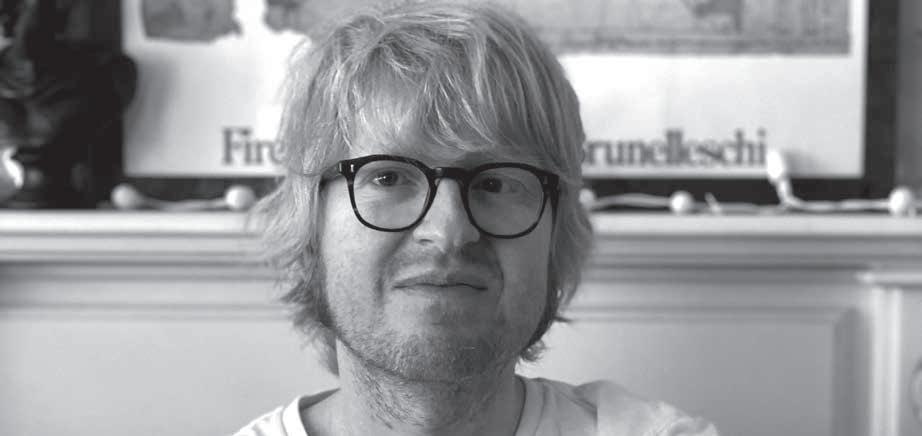

Idazlea, editorea eta kazetaria. Jaiotzez euskalduna, Tenerifen hazi zen eta Madrilen bizi da duela hogei urte baino gehiagotik. Madrilgo Complutense Unibertsitatean Ikus-entzunezko Komunikazioko lizentzia ikasi zuen, eta Gidoi diploma eskuratu zuen Madrilgo Erkidegoko Zinema eta Ikus-entzunezkoen Eskolan (ECAM). Gidoilari, telebistarako sortzaile, zerbitzari, aseguru-saltzaile eta marihuana-ebakitzaile gisa lan egin du. Espainiako hainbat hedabidetan idazten du (El País, El Cultural, Vice, Cinemanía, Eldiario.es). Las niñas prodigio (Fulgencio Pimentel, 2017), Javier Morote Saria irabazi zuen eleberriaren egilea da, eta baita Soñó con la chica que robaba un caballo (Lengua de trapo, 2021) eleberriarena ere. Andrea Abreuren Panza de burro (Barrett, 2020) liburuaren editorea da. Hainbat kultura-erakundetan idazketa-tailerrak ematen ditu. 2020an Iowa Arts Fellowship beka jaso zuen Iowako Unibertsitatearen eskutik.
Writer, editor and journalist. Born in the Basque Country, she grew up in Tenerife, and has lived in Madrid for over twenty years. She holds a degree in Audiovisual Communication from Madrid’s Complutense University, and a Script diploma from the Madrid Community’s School of Cinematography and Audiovisual (ECAM). She has worked as a scriptwriter, television creative, waitress, insurance salesperson and marijuana cutter. She writes in several Spanish media (El País, El Cultural, Vice, Cinemanía, Eldiario.es). She is the author of the novel Las niñas prodigio (Fulgencio Pimentel, 2017), which won the Javier Morote Award, and also Soñó con la chica que robaba un caballo (Lengua de trapo, 2021). She is the editor of Panza de burro, by Andrea Abreu (Barrett, 2020) and runs writing workshops at a number of cultural institutions. In 2020 she was awarded the University of Iowa’s Arts Fellowship grant.
Escritora, editora y periodista. Vasca de nacimiento, creció en Tenerife y vive en Madrid desde hace más de veinte años. Es licenciada en Comunicación Audiovisual por la Universidad Complutense de Madrid y diplomada en Guion en la Escuela de Cine y del Audiovisual de la Comunidad de Madrid (ECAM). Ha trabajado como guionista, creativa de televisión, camarera, vendedora de seguros y cortadora de marihuana. Escribe en diversos medios españoles (El País, El Cultural, Vice, Cinemanía, Eldiario.es). Es autora de la novela Las niñas prodigio (Fulgencio Pimentel, 2017), ganadora del Premio Javier Morote, y de Soñó con la chica que robaba un caballo (Lengua de trapo, 2021). Asimismo, es editora de Panza de burro, de Andrea Abreu (Barrett, 2020) e imparte talleres de escritura en distintas instituciones culturales. En 2020 recibió la Beca de Artes Iowa por parte de la Universidad de Iowa.
Arte Ederretan doktorea eta animazioko irakaslea. Hauazkena animazio-taldea koordinatzen du eta ikerketa-lanak egiten ditu Akmeka Arte Garaikidearen Ikerketa Taldean: www.akmeka.org. Zuzendari gisa, bakarkako lanak egin ditu, hala nola Pregunta por mí (1997) eta Haragia / Carne humana (2000), eta baita kolektiboak ere, esaterako, Beti bezperako koplak (2015), Areka (2016), Ehiza (2020) eta Hirian ibiltzeko jarraibideak (2021). Guztiek ere sariak jaso dituzte nazioarteko jaialdietan, Goya saria edo ZINEBI 59ko Euskal Zinemaren Sari Nagusia (2017an), batzuk aipatzearren. Animaziozko zinemari buruzko hainbat liburu idatzi ditu, besteak beste: Breve historia del cine de animación experimental vasco (1998, Madrilgo Zinema Esperimentalaren Astea), Sistiaga, el trazo vibrante (2008 Animadrid) eta Cortometraje de animación realizado por mujeres en el Estado Español (Cineastas emergentes. Mujeres en el cine del siglo XXI. Madril: Iberoamericana, 2018).

Doctor of Fine Arts and lecturer in Animation. She coordinates the Hauazkena animation group and conducts research work with the Akmeka Contemporary Art Research Group: www.akmeka.org. Her individual work as film director includes Pregunta por mí (1997) and Haragia / Carne humana (2000), alongside joint projects such as Beti bezperako koplak (2015), Areka (2016), Ehiza (2020) and Hirian ibiltzeko jarraibideak (Instrucciones para andar por la ciudad, 2021), all of which won awards at international festivals, including a Goya and the Grand Award of Basque Cinema ZINEBI 59 (2017). She has written a number of books on animated films, among which: Breve historia del cine de animación experimental vasco (1998, Semana de Cine Experimental de Madrid), Sistiaga, el trazo vibrante (2008 Animadrid) and Cortometraje de animación realizado por mujeres en el Estado Español (Cineastas emergentes. Mujeres en el cine del siglo XXI. Madrid: Iberoamericana, 2018).
Doctora en Bellas Artes y profesora de Animación. Coordina el grupo de animación Hauazkena y realiza tareas de investigación en el grupo Akmeka Grupo de Investigación en Arte contemporáneo: www. akmeka.org. Como realizadora de cine cuenta con trabajos individuales como Pregunta por mí (1997) y Haragia / Carne humana (2000), y colectivos como Beti bezperako koplak (2015), Areka (2016), Ehiza (2020) e Hirian ibiltzeko jarraibideak (Instrucciones para andar por la ciudad, 2021), todos ellos ampliamente premiados en festivales internacionales, entre los que destacan el premio Goya o el Gran Premio del Cine Vasco ZINEBI 59 (2017). Ha escrito varios libros sobre cine de animación, entre los que destacan: Breve historia del cine de animación experimental vasco (1998, Semana de Cine Experimental de Madrid), Sistiaga, el trazo vibrante (2008 Animadrid) y Cortometraje de animación realizado por mujeres en el Estado Español (Cineastas emergentes. Mujeres en el cine del siglo XXI. Madrid: Iberoamericana, 2018).
Zinematografia Ikasketetako irakaslea da Sorbona Berria Unibertsitatean; Femis-aren Analisi eta Kultura Saileko zuzendaria da 2017tik, eta Frantziako Zinematekako abangoardiako zinema-zikloaren komisarioa 1996tik. Philippe Grandrieux zinemagilearekin batera, It May Be That Beauty Has Strengthened Our Resolve film-bilduma ekoitzi zuen, zinemagintzaren historiografiek ahaztutako eta baztertutako zinemagileei buruz. Besteak beste, honako hauekin lan egin du: Chantal Akerman, Jocelyne Saab, Marylène Negro, Jean-Gabriel Périot, Jean-Luc Godard eta Jacques Kebadian-ekin. Argitaratu dituen lanen artean honako hauek aurki ditzakegu: Cinéma d’avant-garde Mode d’emploi (Tokio, Gendaishicho-shinsha argitaletxea, 2012); We Support Everything Since the Dawn of Time That Has Struggled and Still Struggles.Introduction to Lettrist Cinema (Stockholm, Moderna Museet / Sternberg Press, 2015); Jean-Luc Godard théoricien des images (Roma, La Camera Verde, 2015); Manifestations Écrits politiques sur le cinéma et autres arts filmiques (Réville, De l’Incidence, 2020).
Professor of Film Studies at the New Sorbonne University, Director of the Analysis & Culture Department at the Femis since 2017, curator of the Cinémathèque Française’s avant-garde film series since 1996. With the filmmaker Philippe Grandrieux, she produces the film collection It May Be That Beauty Has Strengthened Our Resolve, devoted to revolutionary filmmakers forgotten or neglected by the histories of cinema. She has worked with Chantal Akerman, Jocelyne Saab, Marylène Negro, Jean-Gabriel Périot, Jean-Luc Godard and Jacques Kebadian. Among her publications we can find: Cinéma d’avant-garde Mode d’emploi (Tokyo, Gendaishicho-shinsha Publishers, 2012); We Support Everything Since the Dawn of Time That Has Struggled and Still Struggles. Introduction to Lettrist Cinema (Stockholm, Moderna Museet / Sternberg Press, 2015); Jean-Luc Godard théoricien des images (Roma, La Camera Verde, 2015); Manifestations. Écrits politiques sur le cinéma et autres arts filmiques (Réville, De l’Incidence, 2020).
Profesora de Estudios Cinematográficos en la Universidad Sorbona Nueva, directora del Departamento de Análisis y Cultura del Femis desde 2017 y comisaria del ciclo de cine de vanguardia de la Cinemateca Francesa desde 1996. Junto con el cineasta Philippe Grandrieux, produce la colección de películas It May Be That Beauty Has Strengthened Our Resolve, dedicada a las y los cineastas revolucionarios olvidados o ignorados por las historiografías del cine. Ha trabajado con Chantal Akerman, Jocelyne Saab, Marylène Negro, Jean-Gabriel Périot, Jean-Luc Godard y Jacques Kebadian. Asimismo, entre sus publicaciones podemos encontrar: Cinéma d’avant-garde Mode d’emploi (Tokio, editorial Gendaishicho-shinsha, 2012); We Support Everything Since the Dawn of Time That Has Struggled and Still Struggles. Introduction to Lettrist Cinema (Estocolmo, Moderna Museet / Sternberg Press, 2015); Jean-Luc Godard théoricien des images (Roma, La Camera Verde, 2015); Manifestations. Écrits politiques sur le cinéma et autres arts filmiques (Réville, De l’Incidence, 2020).

Zinemaren arloko kazetari eta kritikaria da, hogeita bost urtetik gorako eskarmentua duena. Cinemaníaren zuzendaria da 2008tik. Zuzenbidean lizentzia egin zuen Bartzelonako Unibertsitatean, eta Kazetaritza Nafarroako Unibertsitatean. Cadena SER kateko kolaboratzailea da zinema eta futbol gaietan (La ventana, Carrusel deportivo), eta Oscar sarien eta La Ligaren esataria da Movistar+en. Futbolari ohia eta zutabegilea da ASen, eta El País, La Vanguardia, 20 minutos, Cinco Días, Rolling Stone eta Gentleman argitalpenetan ere idatzi du. Honako liburu hauen egilea da: Fútbol y cine. El balompié en la gran pantalla eta Un partido de leyenda. Historias de ‘Evasión o victoria’. Zinemari eta futbolari buruzko monografia eta liburuetan parte hartu izan du, eta Galder Reguerarekin batera idatzi zuen Quedará la ilusión:Una correspondencia durante el Mundial de Rusia gutun-liburua
Film critic and journalist with more than twenty-five years’ experience. He has been director of Cinemanía since 2008. He holds a degree in Law from the University of Barcelona, and a degree in Journalism from the University of Navarra. He works with the Cadena SER radio station (La ventana,Carrusel deportivo) as a film and football commentator, and is also a Movistar+ commentator on the Oscars and Spain’s La Liga football league. A former footballer and columnist in AS, he has also written in El País, La Vanguardia, 20 minutos, Cinco Días, Rolling Stone and Gentleman. He authored the books Fútbol y cine. El balompié en la gran pantalla and Un partido de leyenda. Historias de ‘Evasión o victoria’. He has worked on monographic projects and co-authored books on films and football, and also was co-author along with Galder Reguera of the epistolary Quedará la ilusión: Una correspondencia durante el Mundial de Rusia.
Periodista y crítico cinematográfico con más de veinticinco años de experiencia. Es director de Cinemanía desde 2008. Licenciado en Derecho por la Universidad de Barcelona y en Periodismo por la Universidad de Navarra. Es colaborador de la Cadena SER (La ventana, Carrusel deportivo) en temas de cine y fútbol, y comentarista en Movistar+ de los Oscar y La Liga. Exfutbolista y columnista en AS, ha escrito también en El País, La Vanguardia, 20 minutos, Cinco Días, Rolling Stone y Gentleman. Es autor de los libros Fútbol y cine. El balompié en la gran pantalla y Un partido de leyenda. Historias de ‘Evasión o victoria’. ha participado en monografías y libros colectivossobre cine y sobre balompié, y coescribió con Galder Reguera el epistolario Quedará la ilusión: Una correspondencia durante el Mundial de Rusia.
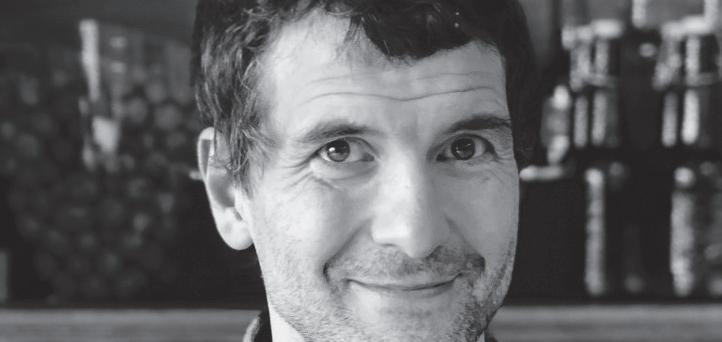
Zinemagilea, artista eta ikertzailea da. Bere lanaren kezka nagusiak memoriaren, historiaren eta ideologiaren arteko tentsioak dira, baita gorputz kolektibo eta indibidualen arteko harremanak ere. Popidovak ikuspegi feminista eta queer batetik heltzen die. Bere lehen dokumentala, Yugoslavia, How Ideology Moved Our Collective Body, 63. Berlinalean estreinatu zen eta nazioarteko jaialdi askotan proiektatu zen. New Yorkeko MoMAko film-bildumaren parte ere bada. Bere lana arte galeria garrantzitsuetan egon da ikusgai, hala nola Londresko Tate Modernean, New Yorkeko MoMAn eta Erromako MAXXI museoan. Akademie der Künste Berlin-en arte bisualen Berlin Arte sari ospetsua jaso zuen, eta Media Art arloan sortzen ari den artistaren Edith-Russ-Haus saria. Bere azken dokumentala, Landscapes of Resistance, 50. Tiger Lehiaketan IFFR estreinatu zen eta sari ugari irabazi zituen mundu osoan. 2022an bere lana honako jaialdi hauetan aurkeztu zuten: Berlingo 12. Bienalean, Manifesta 14. Bienalean eta Belgradeko Bienalean. Zinema-eskolak ematen ditu modu erregularrean SNDOn, Amsterdamgo AHKn eta Osloko Arteen Akademia Nazionalean.
Filmmaker, artist, and researcher. The main concerns in her work are the tensions between memory, history, and ideology, as well as the relations between collective and individual bodies. Popivoda approaches them from a feminist and queer perspective. Her first documentary, Yugoslavia, How Ideology Moved Our Collective Body, premiered at the 63rd Berlinale and was screened at many international film festivals. It is also part of the film collection of MoMA New York. Her work has been featured in major art galleries, such as Tate Modern London, MoMA New York, and MAXXI Rome. She received the prestigious Berlin Art Prize for the visual arts by Akademie der Künste Berlin and Edith-RussHaus Award for Emerging Media Artist. Her latest documentary, Landscapes of Resistance, premiered in the Tiger Competition of the 50th IFFR and won many awards worldwide. In 2022 her work was presented at the 12th Berlin Biennale, Manifesta 14 Biennal, and Belgrade Biennale. She regularly teaches film at SNDO, AHK in Amsterdam, and Oslo National Academy of the Arts.
Realizadora, artista e investigadora. Las principales áreas de interés en su trabajo son las tensiones entre la memoria, la historia y la ideología, así como las relaciones entre los cuerpos colectivos e individuales, que aborda desde una perspectiva feminista y queer. Su primer documental, Yugoslavia, How Ideology Moved Our Collective Body, se estrenó en la 63º Berlinale y se proyectó en numerosos festivales internacionales; también forma parte de la colección de películas del MoMA de Nueva York. Su obra ha sido expuesta en importantes galerías de arte, como la Tate Modern de Londres, el MoMA de Nueva York y el MAXXI de Roma. Ha recibido el prestigioso Premio de Arte de Berlín para las artes visuales de la Akademie der Künste Berlin y el Premio Edith-Russ-Haus para artistas emergentes de los medios de comunicación. Su último documental, Landscapes of Resistance, se estrenó en la Competición Tiger del 50º IFFR y ganó numerosos premios en todo el mundo. En 2022 su obra se presentó en la 12ª Bienal de Berlín, la Bienal Manifesta 14 y la Bienal de Belgrado. Imparte regularmente clases de cine en el SNDO, la AHK de Ámsterdam y la Academia Nacional de las Artes de Oslo.
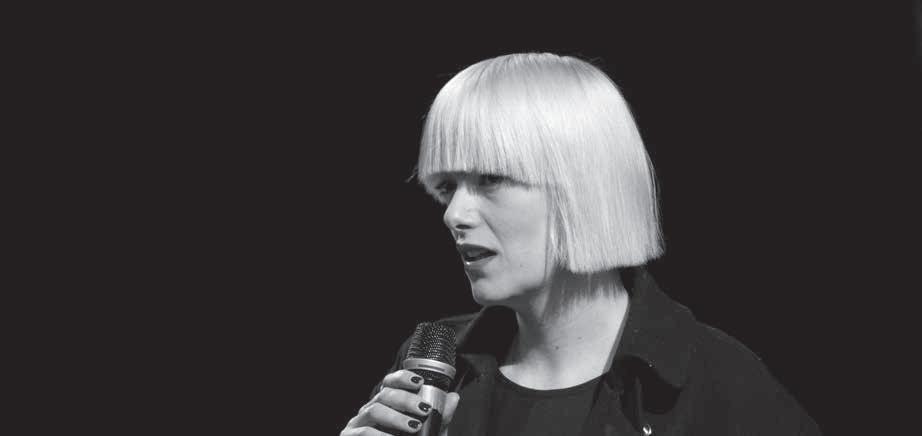

Sail Ofiziala ı ZIFF - ZINEBI First Film
Nazioarteko Lehiaketa
Official Selection ı ZIFF - ZINEBI First Film
International Competition
Sección Oficial ı Concurso Internacional ZIFF - ZINEBI First Film
12.000 € ..............ZIFF Sari Nagusia ZIFF Grand Award Gran Premio ZIFF
2.000 € ................ZIFF - Gazte Epaimahaiaren Saria (UPV/EHU)
ZIFF - Youth Jury Award (UPV/EHU)
ZIFF - Premio del Jurado Joven (UPV/EHU)
Sail Ofiziala ı Film Laburren Nazioarteko Lehiaketa Official Selection ı Short Film
International Competition
Sección Oficial ı Concurso Internacional de Cortometraje
7.000 € .................ZINEBIko Sari Nagusia ZINEBI Grand Award Gran Premio ZINEBI
6.000 € ...............Euskal Zinemaren Sari Nagusia Grand Award of Basque Cinema Gran Premio del Cine Vasco
6.000 € ...............Espainiako Zinemaren Sari Nagusia Grand Award of Spanish Cinema Gran Premio del Cine Español
5.000 € ................Fikziozko Film Labur Onenaren Mikeldia Mikeldi for Best Fiction Short Film Mikeldi al Mejor Cortometraje de Ficción
5.000 € ................Animaziozko Film Labur Onenaren Mikeldia Mikeldi for Best Animation Short Film Mikeldi al Mejor Cortometraje de Animación
5.000 € ...............Film Labur Dokumental Onenaren Mikeldia Mikeldi for Best Documentary Short Film Mikeldi al Mejor Cortometraje Documental
3.000 € ................Publikoaren EITB Saria EITB Audience Award Premio del Público EITB
2.000 € ................Cineclub FAS Saria FAS Cineclub Award Premio Cineclub FAS
10 000 € ..............ZINEBI Networking EITB 2022 Saria ZINEBI Networking EITB 2022 Award Premio ZINEBI Networking EITB 2022
10 000 € ..............ZINEBI Networking 2022 Saria ZINEBI Networking 2022 Award Premio ZINEBI Networking 2022
Unicef Saria Unicef Award Premio Unicef
Sariak | Awards

Maite Leyun euskal artista plastikoak Bizkaiko irudi ezagunenetako baten gainean egindako berrirakurketa da Mikeldi Saria: Mikeldiko idoloa basurdea irudikatzen duen hareharria da, eta Bilboko Dokumentalen eta Film Laburren Nazioarteko Jaialdiaren bereizgarria izan da lehenengo ediziotik (1959. urtetik). Orduan, argi azaldu zuten sortzaileek saria aukeratzeko arrazoiak. Dokumentalen arloan nazioarteko zinesarien lehendabiziko lerroan kokatzea zen jaialdiaren asmoa, eta honela justifikatzen zuten sinbolo haren izena eta irudia: “basurdea irudikatzen duen hareharria, Durangon topatutakoa (Bizkaia), Bizkaiko sinbolo bereizgarria da […]; Penintsulan aurkitutako zezen eta aketzen antzera, eskaintza zeltikoa da hau ere, Bizkaikoa soilik
den eguzki- edo ilargi-diskoa erakusten duena”.
ZINEBIren 60. edizioan, 2018. urtean, Maite Leyún arduratu zen sinboloa berrinterpretatzeaz, lan horretan ZINEBIren identitate garaikidea eta milaka urteko eskultura uztartuta. “[…] ezagun dugun ezer gogoraraziko ez digun, baina, aldi berean, Mikeldi gogoraraziko digun forma berri bat sortzea izan da nire asmoa. Aurretik izandako ezaugarriak aztertuta, inskripzioen ideia berreskuratzea eta diskoaren barnealdean txertatzea erabaki nuen, hori baita pieza originalaren eta proposamen berri honen arteko lotura islatzen duen elementu zentrala. Inskripzio horiei esker, egile berrien lana aitortu ahal izango dugu zine jaialdi honetan. Horrela, antzinako tailla bat abiapuntu duen zeramika-objektua dugu hau; zerbait
kontatzearekin batera, gauzak egiteko moduari garrantzia ematen dioten pertsonen lana aitortzeko balioko duen forma berri bat”. (Maite Leyun)
Maite Leyun Arte Ederretan lizentziatua eta doktorea da Euskal Herriko Unibertsitatean. Haren lana zeramikan zentratzen da batez ere, baina, tarteka diziplina anitzekoa ere izanik, errealitate garaikideari lotzen zaio, eskulturaren eta arte ezberdinen arteko mugak gainditzen saiatuz. Haren lanak mundu osoko erakusketetan eskaini dira, eta zenbait sari eta beka jaso ditu: Maximo Ramos Saria Ferrol-en, International Ceramics Studio (ICS, Hungaria) eta ikastegian egonaldia BilbaoArte Fundazioaren Beka, besteak beste. Diseinu, irakaskuntza eta ikerkuntza arloko lanekin osatzen du bere jardun artistikoa.
The Mikeldi trophy is a re-reading by the Basque plastic artist Maite Leyún of one of Biscay’s most recognizable images: the Mikeldi idol, a sandstone figure representing a boar and the symbol that has defined the International Festival of Documentary and Short Film since it began in 1959. At that time, the festival founders explained their reasons for the choice of trophy: in order position it on the front line of international cinematographic awards in the documentary film sector, and the justification they gave for the name and image was that “the sandstone figure, in the shape of a boar, found in Durango (Biscay) is understood to be an indigenous symbol of Biscay […]. It is a Celtic votive offering similar to the bulls and boars found on the Peninsula
but with a solar or lunar disc that is exclusive to Biscay.”
At ZINEBI 60, in 2018, Maite Leyún was in charge of reinterpreting this symbol and linking ZINEBI’s contemporary identity to the ancient sculpture. “I aimed to create a new form that was not reminiscent of anything we had already seen but that reminded us of the Mikeldi. Revisiting former characteristics, I decided to recover the idea of inscriptions and put them inside the disc, the central element of union between the original and this new piece. Inscriptions that will be used to acknowledge the work of new authors at this film festival. So, we have a ceramic object that, based on an ancient sculpture, intends to be a new form used to acknowledge the work of people who do care about how things are done
while also making sure that they are saying something.” (Maite Leyún)
Leyún has a Master’s Degree and a PhD in Fine Arts from the University of the Basque Country. Her work centres on ceramics and is of a multidisciplinary nature that connects with contemporary reality and aims to extend beyond the boundaries between sculpture and the different arts. It has been displayed at different exhibitions around the world and she has received a range of scholarships and awards for it, including the Maximo Ramos Award in Ferrol, a residence at the International Ceramics Studio (ICS Hungary) and the BilbaoArte Foundation Scholarship in Bilbao. In addition to her art, she also works on projects relating to the fields of design, teaching and research.
El trofeo Mikeldi es la relectura de la artista plástica vasca, Maite Leyún, de una de las imágenes más reconocibles de Bizkaia: el ídolo de Mikeldi, piedra arenisca que simula a un jabalí y símbolo que, desde su primera edición en 1959, define al Festival Internacional de Cine Documental y Cortometraje de Bilbao. Entonces las y los fundadores explicaban los motivos de elección del trofeo: situarse en la primera línea de los premios cinematográficos internacionales en el ámbito documental, y justificaban su nombre y la imagen “por entender que es un símbolo autóctono de lo vizcaíno […] la figura de piedra arenisca, simulando un jabalí, encontrada en Durango (Bizkaia). Es un exvoto oferente céltico similar a los toros y verracos hallados en la Península, pero con un disco solar o lunar privativo vizcaíno”.
En la edición 60 de ZINEBI en 2018, Maite Leyún fue responsable de reinterpretar este símbolo vinculando la identidad contemporánea de ZINEBI con la escultura milenaria. “[…] he buscado la creación de una nueva forma que no recuerde a nada conocido pero que nos recuerde al Mikeldi. Revisitando características anteriores, decidí recuperar la idea de las inscripciones para ubicarlas dentro del disco, elemento central de unión entre la pieza original y esta nueva propuesta. Inscripciones que servirán para reconocer el trabajo de nuevos autores y autoras en este festival de cine. Así pues, tenemos un objeto cerámico que, partiendo de una talla antiquísima, pretende ser una forma nueva que sirva para reconocer la labor de aquellas personas que sí le dan importancia al cómo hacer las cosas
a la par que se preocupan en contar algo”. (Maite Leyún)
Leyún es licenciada y doctora en Bellas Artes por la Universidad del País Vasco. Su obra se centra en la cerámica y se complementa con un carácter multidisciplinar que se vincula a la realidad contemporánea y que se propone rebasar las fronteras entre la escultura y las diferentes artes. Su trabajo ha formado parte de diferentes exposiciones alrededor del mundo, además de haber recibido diferentes premios y becas, entre ellos el Premio Máximo Ramos en Ferrol, la residencia en el International Ceramics Studio (ICS Hungría) y la Beca Fundación BilbaoArte. Su práctica artística se complementa con proyectos relacionados con el campo del diseño, la docencia y la investigación.
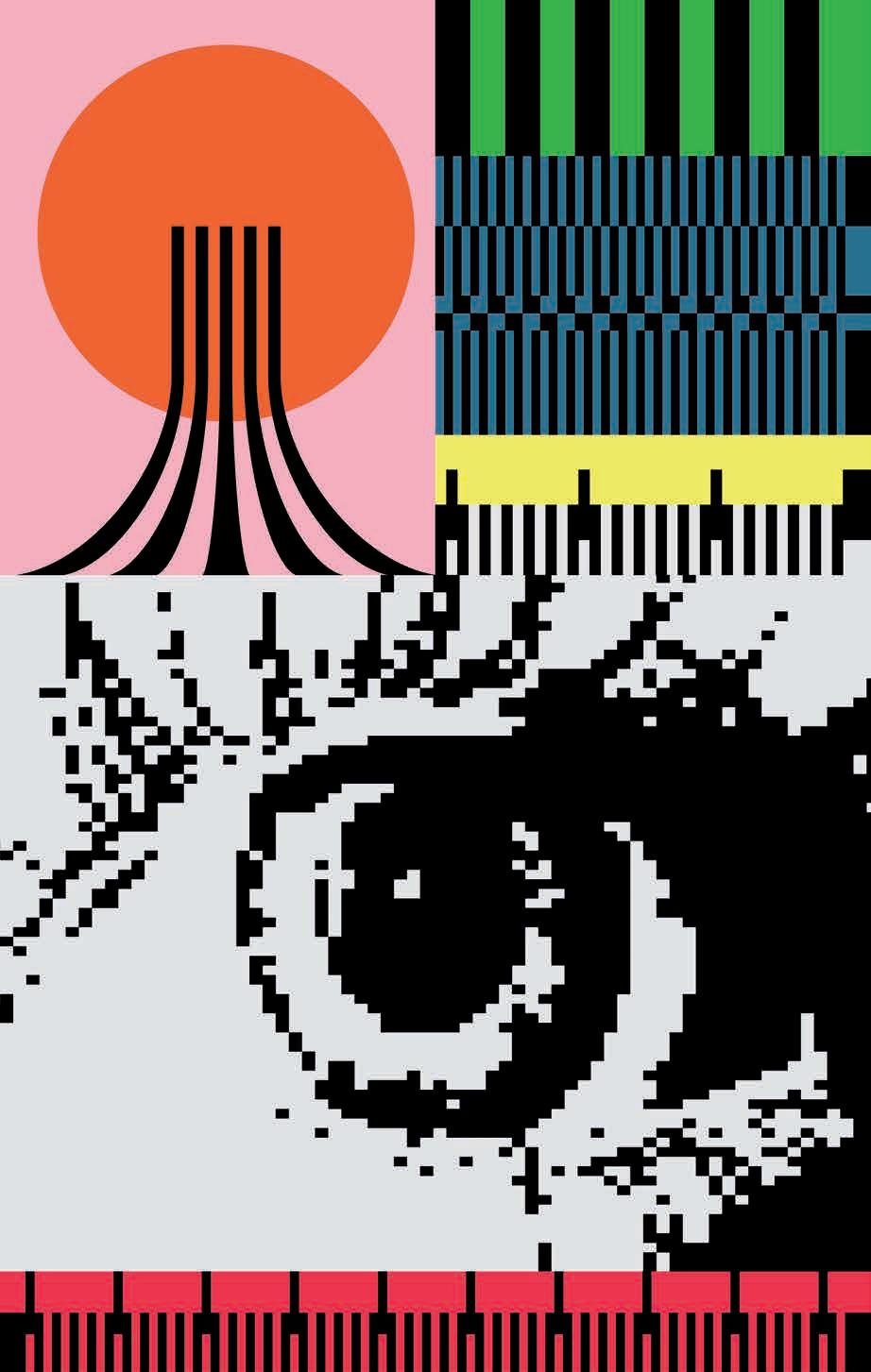

 © Jacek Poremba
© Jacek Poremba
Agnieszka Holland zinemagile garaikide oso polifazetikoa da, eta gutxi dira berak bezain jardun zabala egin dutenak. 1948ko azaroaren 28an jaio zen Varsovian, ama katolikoa zuen eta aita judua, Pragako Zinema eta Telebista Akademian (FAMU) graduatu zen 1971n, eta Poloniako zinemaren Olatu Berria deritzonaren testuinguruan ekin zion bere ibilbide profesionalari, Krzysztof Zanussi eta Andrzej Wajdaren zuzendari laguntzaile gisa.
Zinemarako egin zuen lehen film luzearekin, Provincial Actors (Aktorzy prowincjonalni, 1978), zeinetan garai hartan Polonian zegoen egoera politikoa aipatzen baitzuen, Cannesko Zinemaldiko FIPRESCI saria lortu zuen. Jaruzelski jeneralak 1981ean gerra-legea deklaratu zuenean Frantzian erbesteratu aurretik, A Lonely Woman (Kobieta samotna, 1981) filma egin zuen, eta bera izan da ZINEBIren aurtengo edizioan egingo zaion omenaldia dela eta film hori aukeratu duena. Bertan, bere lehen filmen bereizgarri diren joera politikoa eta begirada kritikoa antzematen dira, zeinetan gurutzatu egiten baitira makineria burokratikoari, gobernuaren errepresaliei, eta garai hartako miseria material eta mentalean harrapatuta dagoen gizarte baten giro itogarriari egiten zaizkion aipamenak. Erbestealdian hasi zen bere ibilbide sortzaile luzea, Alemanian, Frantzian, Kanadan, Estatu Batuetan eta, berriz ere, Txekiako Errepublikan eta Polonian egin zuena. 1985ean, Ingelesez besteko film onenaren Oscar sarirako izendapena lortu zuen Angry Harvest (Bittere Ernte, 1985) filmagatik, zeina ekoizpen alemaniarra baita, Bigarren Mundu Gerran emakume judu batek egindako ihesaldiari buruzkoa. Dena den, Europa, Europa (1990) izan zen nazioarteko behin betiko etorkizuna eman zion filma: Alemaniatik ihesi zebilela Sobietar Batasunak okupatutako Poloniako sektorera iritsitako nerabe judu baten biografian oinarrituta zegoen. Film horrekin arrakasta handia lortu zuen Estatu Batuetan, non Urrezko Globoa irabazi baitzuen eta Gidoi egokitu onenaren Oscar sarirako izendapena lortu baitzuen. Berriz izendatu zuten Oscar sarietara InDarkness (W ciemnosci, 2011) filmarekin; hau ere gerrartetako totalitarismoei buruzkoa zen, izan ere, bere obran behin eta berriz agertzen den gaia baita. Kasu honetan, filmean Poloniako juduek alemanen okupazioan zehar bizitako borroka jorratzen du.
Bere lan berrienetako bat, Mr. Jones (2019), Berlingo Zinemaldian lehiatu zen Urrezko Hartzagatik eta garai hartara hurbiltzen ari da berriro ere. Oraingoan, Gareth Jones kazetari galestarraren benetako kasuaren bitartez izan zen, zeinak Stalinek 1930eko hamarkadan Ukrainako behartutako kolektibizazioan egindako ankerkeriak ikertu baitzituen.
Bistakoa da zinemagileak gai historikoekiko duen interesa —gaiok, gainera, zuzenean bere familiaren gorabeheretan haragitzen dira—, baina bere lanaren intentsitatea eta hedadura direla-eta,
Holland askoz ere gai gehiagorekin lot dezakegu, eta beti geratzen da agerian zer nolako trebetasuna duen narratzaile gisa gai horiek tratatzeko orduan, zer nolako modu bertutetsuan menderatzen dituen ikus-entzunezko lengoaiak eta formatuak, eta nola bere apustuak, beti, pertsonaia eta istorio bakoitzaren konplexutasunarekin konprometitutako kontakizunen aldekoak diren. Horrela, bada, Olivier, Olivier (1992) eta The Secret Garden (1993) filmek haurtzaroaren hauskortasunaz eta tolesgabetasunaren galeraz hitz egiten digute; Total Eclipse (1995) filmak Arthur Rimbaud eta Paul Verlainen arteko harremana deskribatzen du; Washington Square (1997) filmeak klabe feministan interpretatzen du Henry Jamesen eleberria; Julia Walking Home (2001) filma ama batek bere semaren gaixotasunaren aurrean duen inpaktu emozionalean barneratzen da; eta Copying Beethoven (2006) filmean konpositorearen azken urteak fikzionatzen ditu. Bere film berrienetan—Spoor (Pokot, 2017), thriller animalista bat, Berlingo Jaialdian Alfred Bauer saria jaso zuena, eta Charlatán (Šarlatán, 2020), 1930eko hamarkadan oso ezaguna izan zen petrikilo txekiar baten biopica Hollandek gai eta estilo anitzekiko duen interesa erakusten jarraitzen du.
Gidoilari gisa elkarlanean aritu zen Andrzej Wajdaren Danton (1983), A Love in Germany (Eine Liebe in Deutschland, 1983), The Possessed (Les possédés, 1988) eta Korczak (1990) obretan, eta baita La amiga (Jeanine Meerapfel, 1988) filmean ere; horrez gain, zeregin garrantzitsua izan zuen Kieślowskiren Three Colours (1993-1994) trilogiaren gidoietan, aholkulari gisa egin zuen lana dela eta.
Etengabe bilatzen ditu sormenarekin lotutako erronkak eta, horrela, Hollandek hainbat telesail arrakastatsuren kapitulu batzuk zuzendu ditu: The Wire, The Killing, Treme (kapitulu pilotuan egindako lanagatik Emmyetarako izendatu zuten), House of Cards, The Affair eta The First. Horrez gain, minitelesail batzuk ere zuzendu ditu: Rosemary’s Baby (2014), Ira Levinen eleberriaren egokitzapena, eta Burning Bush (Hořící keř, 2013), Txekiako Errepublikan ekoitzia eta Jan Palach ikasleak, 1968ko errusiar inbasioaren aurkako protesta gisa, Pragan bere burua immolatu izanean oinarritzen dena. Hollandek Belusezko Iraultza deritzonean parte hartze aktiboa izan zuen eta, horren ondorioz, espetxeratua izan zen; lan honetan, bere herrialdean —maila pertsonalean, trebakuntzan eta politikoan hazten ikusi zuen lekuan— bere bizi-esperientzietatik hurbil zeuden gertaera historikoen kontakizunari heldu zion berriz.
Agnieszka Holland maisuak hurbil zituela hasi zen, zuzendari poloniar miretsi haiekin lan egin baitzuen. Panorama horretan, eta bere ondorengo karreran ere, salbuespen bat izan zen, bitxikeria bat, emakumea zelako. Hainbat oztopori egin behar izan zien aurre —judua izatea Polonia komunistan, erregimenaren aurkaria, etorki-
na— eta muga sexistak ere gainditu behar izan zituen, emakume zinemagileek beren arteko lotura kolektiboak sendotu gabe zituzten garai batean. 2021ean, Europako Zinema Akademiako (EFA) presidente hautatu zuten eta, bertan, bere gain hartu du ikusleak zinema-aretoetara itzultzen laguntzeko erronka, plataformen eta streamingaren nagusitasunaren aurrean. Orain, bere obraren aberastasuna eta zinema kultur-ondasun gisa defendatzeko egiten duen ekarpen ak-
tiboa direla-eta, miresmena eta errespetua pizten ditu, eta, horrez gain, zinemagileen belaunaldi berrientzako erreferentzia bat ere bada. Bere ibilbideari egiten dion aitortza honekin, ZINEBIk bat egiten du bere filmengatik jaso dituen sariekin, Agnieszka Hollandi Ohorezko Mikeldia emanez Jaialdiaren 64. edizioa den honetan.
Anna Solà, Marta Selva Mostra Internacional de Film de Dones de BarcelonaFew contemporary directors as polyfacetic as Agnieszka Holland can boast such an extensive trajectory. She was born on 28 November 1948 in Warsaw to a Catholic mother and a Jewish father, graduated from the Prague Film and TV School (FAMU) in 1971, and embarked on her professional career amid the so-called New Wave of Polish films as assistant director to Krzysztof Zanussi and Andrzej Wajda.
Her first feature film, Provincial Actors (Aktorzy prowincjonalni, 1978), which dwelt on the political situation in Poland at the time, won the FIPRESCI Award at the Cannes Festival. Before she was forced into exile in France by the declaration of martial law by general Jaruzelski in 1981, she made The Lonely Woman (Kobieta samotna, 1981), a film she chose herself for her tribute at this year’s ZINEBI. It conveys the political slant and the critical gaze so typical of her early films, awash with allusions to bureaucratic machinery, governmental repression and the stifling atmosphere of a society trapped in the material and mental misery of the time.
Following her exile, she began a long creative trajectory in Germany, France, Canada, the United States, and subsequently the Czech Republic and Poland. In 1985 she was nominated for an Oscar for best non—English film with Angry Harvest (Bittere Ernte, 1985), a German production about a German Jewish woman on the run during the Second World War. The film which finally gained her international recognition was Europa Europa (1990), based on the biography of a Jewish teenager fleeing Germany and arriving in the portion of Poland occupied by the Soviet Union. This earned her great success in the United States, she was awarded the Golden Globe, and was nominated for an Oscar for best adapted screenplay. She was nominated for an Oscar again with InDarkness (W ciemnosci, 2011), also set in the territory of interwar totalitarian states,
one of her recurring themes. In this case the film focused on the struggle of Polish Jews during the German occupation.
One of her more recent films, Mr. Jones (2019), which was a contender for the Berlin Festival’s Golden Bear award, also dwelt on this era. This time concerning the real case of Welsh journalist Gareth Jones, who investigated the atrocities perpetrated by Stalin during forced collectivisation in Ukraine in the 1930s.
Although it is obvious that the director has an interest in historical issues - experienced in the flesh during the vicissitudes of her own family — the intensity and proportions of her work associate Holland with much broader thematics, where her treatment of these always reveals her skill as a narrator, the virtuous mastery of audiovisual formats and languages, and her constant focus on narratives with a commitment to the complexity of each character and each story. Thus, Olivier, Olivier (1992) and The Secret Garden (1993) touch on the fragility of childhood and the loss of innocence; Total Eclipse (1995) describes the relationship between Arthur Rimbaud and Paul Verlaine; Washington Square (1997) interprets the Henry James novel from the feminist viewpoint; Julie Walking Home (2001) studies the emotional impact of a mother with a sick child; and Copying Beethoven (2006) provides a fictional account of the composer’s last years. In her more recent films — Spoor (Pokot, 2017), an animalist thriller which won the Alfred Bauer award at the Berlin Festival, and Charlatan (Šarlatán, 2020), a biopic about a Czech healer who was extremely popular in the 1930s — Holland continues to demonstrate her many thematic and stylistic interests. She worked as scriptwriter for Danton (1983), A Love in Germany (Eine Liebe in Deutschland, 1983), The Possessed (Les possédés, 1988) and Korczak (1990), by Andrzej Wajda, and La amiga (Jeanine Meerapfel, 1988), and also played a key
role as consultant on scripts for the Kieślowski trilogy Three Colours (1993-1994).
Always on the lookout for new creative challenges, Holland directed some episodes of a number of successful series: The Wire, The Killing, Treme (her work on the pilot episode was nominated for an Emmy), House of Cards, The Affair and The First. She also directed the miniseries Rosemary’s Baby (2014), an adaptation of the Ira Levin novel, and Burning Bush (Hořící keř, 2013), produced in the Czech Republic and based on the self-immolation of student Jan Palach in Prague as a protest against the Russian invasion in 1968. Here Holland, who had been an active participant in the so-called Velvet Revolution and was jailed for it, returned to a narration of historical facts closely resembling her own experiences in the country that was her scenario of formative, political and personal growth.
Agnieszka Holland started out in close contact with some leading figures, such as the Polish directors she admired and worked with. Against
this backdrop, and also during her subsequent career, she was an exception, a rarity, because she was a woman. To counter all the barriers she came up against — a Jew in Communist Poland, a regime dissident, an immigrant — she had to overcome sexist restrictions at a time when film directors had still not strengthened their collective links. In 2021 she was appointed president of the European Film Academy (EFA), where she undertakes the challenge of bringing viewers back to cinemas amid the predominance of platforms and streaming formats.The richness of her work and her active contribution to the defence of cinema as part of cultural heritage have now earned her admiration and respect as a benchmark for the new generations of film directors. With this acknowledgement of her career, the 64th ZINEBI Festival now adds to the distinctions and prizes for her films by awarding Agnieszka Holland its Mikeldi of Honour.
Anna Solà, Marta Selva Mostra Internacional de Film de Dones de BarcelonaPocas cineastas contemporáneas tan polifacéticas como Agnieszka Holland han desarrollado una actividad tan extensa. Nació el 28 de noviembre de 1948 en Varsovia, hija de madre católica y padre judío, se graduó en la Academia de Cine y Televisión de Praga (FAMU) en 1971 e inició su carrera profesional en el contexto de la llamada Nueva Ola del cine polaco como asistente de dirección de Krzysztof Zanussi y Andrzej Wajda. Con su primer largometraje para el cine, Provincial Actors (Aktorzy prowincjonalni, 1978), un film que aludía a la situación política polaca de aquella época, consigue el Premio FIPRESCI en el Festival de Cannes. Antes de exilarse a Francia, a causa de la declaración de la ley marcial por parte del general Jaruzelski en 1981, realizó A Lonely Woman (Kobieta samotna, 1981), film que ella misma ha escogido con motivo del homenaje que se le rinde en la actual edición de ZINEBI. En él se percibe el sesgo político y la mirada crítica que caracterizan a sus primeros films, cruzados por alusiones a la maquinaria burocrática, a las represalias del gobierno y a la atmósfera asfixiante de una sociedad atrapada en la miseria material y mental del momento. Con su exilio, empieza un largo trayecto creativo desarrollado en Alemania, Francia, Canadá, Estados Unidos y de nuevo en la República Checa y Polonia. En 1985, consigue una nominación al Oscar a la mejor película de habla no inglesa por Amarga cosecha (Bittere Ernte, 1985), una producción alemana sobre la huida de una mu-
jer judía durante la Segunda Guerra Mundial. El film con el que obtuvo su definitiva proyección internacional fue Europa, Europa (1990), basado en la biografía de un adolescente judío llegado al sector de Polonia ocupado por la Unión Soviética huyendo de Alemania. Con él logró un gran éxito en Estados Unidos, ganó el Globo de Oro y obtuvo una nominación al Oscar al mejor guion adaptado. Sería de nuevo nominada al Oscar por InDarkness (W ciemnosci, 2011), situado también en el terreno de los totalitarismos de entreguerras, uno de sus temas recurrentes. En este caso el film abordaba la lucha de los judíos polacos durante la ocupación alemana.
Una de sus obras más recientes, Mr. Jones (2019), que compitió por el Oso de Oro en el Festival de Berlín, vuelve a acercarse a aquella época. Esta vez a través del caso real del periodista galés Gareth Jones, que investigó las atrocidades de Stalin durante la colectivización forzada en la Ucrania de la década de 1930.
Aunque es evidente el interés de la cineasta por los temas históricos —encarnados directamente en los avatares de su propia familia—, la intensidad y extensión de su obra permiten asociar a Holland con un abanico de temas mucho más amplio, en cuyo tratamiento siempre destaca su habilidad como narradora, el dominio virtuoso de lenguajes y formatos audiovisuales, y su apuesta constante por relatos comprometidos con la complejidad de cada personaje y cada historia. Así, Olivier, Olivier (1992) y El jardín
secreto (The Secret Garden, 1993) nos hablan de la fragilidad de la infancia y de la pérdida de la inocencia; Vidas al límite (Total Eclipse, 1995) describe la relación entre Arthur Rimbaud y Paul Verlaine; en Washington Square (1997) interpreta en clave feminista la novela de Henry James; en Julia vuelve a casa (Julia Walking Home, 2001) se adentra en el impacto emocional de una madre ante la enfermedad de su hijo; y en Copying Beethoven (2006) ficciona los últimos años de la vida del compositor. Entre sus films más recientes — El rastro (Pokot, 2017), un thriller animalista, premiado con el Alfred Bauer en el Festival de Berlín y Charlatán (Šarlatán, 2020), biopic de un curandero checo muy popular en la década de 1930— Holland sigue mostrando sus múltiples intereses temáticos y estilísticos.
Colaboró como guionista en Danton (1983), Un amor en Alemania (Eine Liebe in Deutschland, 1983), Los poseídos (Les possédés, 1988) y Korczak (1990), de Andrzej Wajda, así como el de La amiga (Jeanine Meerapfel, 1988) y tuvo un papel relevante en los guiones de la trilogía de Kieślowski, Tres colores (1993-1994), en los que trabajó como asesora.
En su constante búsqueda de nuevos retos creativos, Holland asumió la dirección de algunos episodios de varias series de éxito: Bajo escucha, The Killing, Treme (su trabajo en el episodio piloto fue reconocido con una nominación en los Emmy), House of Cards, The Affair y The First. Dirigió también las miniseries La semilla del diablo (2014), adaptación de la novela de Ira Levin y Burning Bush (Hořící keř, 2013), producida en la República
Checa y basada en la inmolación del estudiante Jan Palach en Praga, como protesta ante la invasión rusa en 1968. En ella Holland, que había participado activamente en la llamada Revolución de Terciopelo, y por cuya causa fue encarcelada, volvió al relato de hechos históricos próximos a sus experiencias vitales en el país que fue su escenario de crecimiento formativo, político y personal.
Agnieszka Holland empezó con la cercanía de figuras magistrales, como los admirados directores polacos con quien trabajó. En este panorama, y también en su carrera posterior, ella fue una excepción, una rareza, por su condición de mujer. Entre todas las barreras a las que se enfrentó —judía en la Polonia comunista, opositora al régimen, inmigrante— tuvo que superar los límites sexistas en un momento donde las cineastas todavía no habían fortalecido sus vínculos colectivos. En 2021 fue elegida presidenta de la Academia Europea de Cine (EFA) donde asume el desafío de contribuir a que las audiencias regresen a las salas ante el predominio de las plataformas y el streaming Ahora, la riqueza de su obra y su contribución activa en la defensa del cine como bien cultural son motivo de admiración y respeto, así como un referente para las nuevas generaciones de cineastas. Con este reconocimiento a su trayectoria ZINEBI se suma a las distinciones y premios recibidos por sus films, otorgando a Agnieszka Hollandel Mikeldi de Honor, en su 64ª edición.
Anna Solà, Marta Selva Mostra Internacional de Film de Dones de Barcelona
director Agnieszka Holland


screenplay Agnieszka Holland, Maciej Karpiński cinematography Jacek Petrycki editing Roman Kolski sound Aleksander Gołębiowski art Ryszard Kalwa, Grzegorz Michalski music Jan Kanty Pawluśkiewicz cast Maria Chwalibóg, Bogusław Linda, Paweł Witczak production Film Team X, Polish Television TVP @ Brzezicka@tvp.pl
Adin ertaineko emakume baten istorioa. Irena du izena eta Wroclaw kanpoaldean bizi da bere 8 urteko semearekin, apartamentu soil batean. Postaria da eta bere semea da bere altxor preziatuena. Nekez komunikatzen da beste inorekin modu gizatiar, ireki eta natural batean. Bere senide gaixo bat ere zaintzen du. Bere lehenengo senar mozkorrarengandik dibortziatu ostean bakarrik bizitzera erabakita dagoen arren, badaki semeak ohitura txarrak zuzenduko dizkion gizonezko baten irudia behar duela. Eta berak ere gizon baten behar handia du.
A story of a middle-aged woman, Irena, living alone on the outskirts of Wroclaw with her 8-year-old son. They live in a drab apartment. She is a mail carrier and her son is her only pride and joy. She hardly communicates with anybody else in a humanly open and natural way. She also cares for a sick relative. Even though she is determined to live alone after divorcing her drunken first husband, she also knows that her boy needs a male figure to correct his bad habits. She also needs a man badly.
La historia de una mujer de mediana edad, Irena, que vive en un apartamento sombrío en las afueras de Breslavia con su hijo de 8 años. Ella es repartidora de correo y su hijo es su único orgullo. Irena apenas se comunica con nadie más de forma abierta y natural. Además, cuida de un familiar enfermo. Aunque está decidida a vivir sola tras divorciarse de su primer marido borracho, también sabe que su hijo necesita una figura masculina que corrija sus malos hábitos. De hecho, ella también necesita un hombre imperiosamente.

Gogoan dut zer nolako zirrara sentitu nuen Birta Mirkur bideoko irudiak lehen aldiz ikusi nituenean. Tolosako Bideoaldian izan zen, laurogeiko hamarkada amaieran. Gorputz horien presentzia lanbroaren lodieran nahasten zen eta iparreko argiak biltzen zituen, uraren urdinaren eta lurrunaren zuriaren artean murgilduta zeuden: istantean liluratu ninduen. Berehala ikertu nuen nor zegoen begirada haren atzean; eta, nire harridurarako, Donostiako bideoartista bat zela jakin nuen (tira, Errenteriakoa, Iñaki Izarrek zehaztasunez gogorarazten zidan bezala).
Eta Iñaki Izarrekin berarekin batera “Ars Video” bideoarteari buruzko katalogoa sortzen ari ginela, irudiak ikusi eta gutxira Iñigo Salaberria ezagutzeko aukera nuen (hura zen artista haren izena). Antzeko gustu artistikoak genituenez, laguntasun bat sortuz joan zen eta noizean behin soilik elkartzen baginen ere (gure bideek ez zuten maiz bat egiten), urteetan zehar elikatuz joan zen, han hemenka topo egiten genuen bakoitzean, eta beti gogo berarekin partekatzen, biok atsegin genituen idazle, artista eta zinemagileez hitz eginez. Elkar ikusi genuen azken aldietan, hain zuzen, Bilbora etorri zelako elkartu ginen, ZINEBIn bere azken lanetako batzuk aurkeztera zetorrenean, eta baita Itxaso Díazek zuzendutako BideOtik programan ere.
Izan ere, Iñigo Salaberria (1961-2022) bere belaunaldiko bideoartista garrantzitsuenetako bat izan da, aldizkako karrera izan duena, baina, aldi berean, bere ibilbideari irmotasunez eutsi ziona, laurogeiko hamarkadatik gaur egunera arte.
Paris III eta Valladolideko unibertsitateetan Historia eta Estetika Zinematografikoko ikasketak egin ondoren, 1984an eta 1985ean izan zuen bideoartearekin lehen harremana, Parisko American Centerreko bideo ikastaroen bidez. Bertan, laguntzaile tekniko gisa lan egin zuen, besteak beste, Michel Jaffrennou, Joan Logue, William Wegman edo Ken Feingold artista ospetsu eta eragin handikoen tailerretan.
Salaberria Espainiako bideoartearen bigarren belaunaldikoa zen eta lan benetan koherentea garatu zuen; beti izan zuen ezaugarri bere begirada propioa izatearekiko interesa, zeina xehetasunen zalea eta gogoetatsua baitzen, eta beti adi baitzegoen pertzepzioaren aldaketen aurrean; bat zetorren, argi eta garbi, irudiaren alderdi fenomenologikoetan zentratuago zegoen ikus entzunezkoen tradizio esperimentalarekin. Hasiera hasieratik, bere lanen bereizgarri bihurtu zen agerikoa zen jarrera gogoetatsu hura: bere lana, funtsean, begirada behatzaile eta sarkor batean oinarritu zen, zeinaren bitartez transzenditu egin nahi baitzuen ikusten zenaren itxura
hutsa. Hala ere, aipatu dugun koherentzia horren barruan, bere lanari xehetasun handiagoz erreparatuz gero, sotilki anitzak diren zenbait begirada ikus ditzakegu; horiek dira, oro har, artista poliedrikoaren eta konplexuaren erretratua osatzen dutenak.
Salaberriak hainbat bider azaldu zuen zer helburutan eta premisa estetikotan oinarrituz lan egin zuen bere obra enblematikoetako batzuk zuzentzeko, hala nola Birta Mirkur (1987), Sombras de cal (1990) edo Lo ibiltariak (2017), batzuk aipatzearren. Eta sarritan azaldu zuen, bai ikus entzunezko programazioen testuinguruan egindako elkarrizketetan —esaterako, BideOtiken Azkuna Zentroan (2017)— bai, esan bezala, ZINEBI - Bilboko Dokumentalen eta Film Laburren Nazioarteko Jaialdian bere lanik berrienetako batzuk aurkeztu zituenean (2015, 2017 eta 2019an).
Horrek, esan bezala, bere obran elkarrekin bizi ziren begirada desberdinen tipologia bat bereiztera eraman gaitu eta, era berean, horien nolabaiteko bilakaera bat ikustera. Bilakaera hori dela eta, eraldatuz joan ziren, batetik, kameren eta edizio-sistemen bilakaera teknikoaren beraren eskutik eta, bestetik, gehien interesatzen zitzaion ikus-entzunezko lengoaiaren oinarri estilistiko eta narratiboak pixkanaka bereganatu izanaren ondorioz.
Horrela, bere lanak kronologikoki ikusiz gero, ikusleak begirada horren eraldaketa eta hazkundea ikus ditzake: hasieran pintura inpresionistaren premisetatik abiatzen da (Quai de Javel [1984], Caliza [1985] edo Disdirak [1992] lanetan) eta, ondoren, bidaiari erromantikoarena edo etnografo esperimentalarena baino konplexuagoa den behaketa batez elikatzen da —besteak beste, La noche navegable (1993) edo Benarés-Sanganer (1999) lanetan—, azkenik ehiztari bakartiaren irudiarekin identifikatzeko, edo gauean zelatan dagoen frankotiratzailearekin, berak bere “Trilogía nocturna” (gaueko trilogia) deitu zuen hura osatzen duten lanetan —Txinan filmatutako Las horas contadas (2010), Islandian filmatutako Luz a la deriva (2015), eta Japonian filmatutako Lo ibiltariak—. Hori guztia Rijekan (2019) iristen da une gorenera, amaitu zuen azken lanean, zeina Kroazian grabatu baitzuen. Baina merezi du, era berean, azpimarratzea bere Super 8 zaharretako irudien azken bildumak bere lanari amaiera emateko izan duen papera. Izan ere, ikusizko testamentu gisa egin baitzen duela gutxi, Maria Elorza zinemagilearekin, honako izenburu honekin: On the Water’s Edge: Filmworks 1984-1988 (2022).
Hain zuzen ere, azken garai hauetan, 2010etik aurrera gutxi gorabehera, izugarri gozatu ahal
izan genuen, hamarkada luze baten ondoren arrastoa galduta izan ondoren, zuzendaritzara itzuli zenean; eta oso atsegina izan zen, hain zuzen, bere begiradak zer nolako bilakaera izan zuen ikustea: are zainduagoa baitzen, are bareagoa. Iñigori oinez ibiltzea gustatzen zitzaion, no-
raezean, ikusteko zain: baina bilatu gabe. Begiradari iristeko parada emanez. Hau, batzuetan, paseatzean sortzen zen; beste askotan, gelditzean. Iñigo gai zelako esertzeko, eta itxaroteko. Bere gorputza itzalaz blaitu zedin utziz. Argia ikusteko.
Gabriel Villota ToyosI remember the emotion the first time I saw footage from the Birta Mirkur video at the Bideoaldia in Tolosa in the late eighties. Those volumes mingling with the thick haze, enveloped in the light streaming in from the north, submerged between the blue of the water and the white of the vapour, instantly captivated me. At once I enquired who was behind this vision; and to my surprise I found it was a local video artist from Donostia (well, from Rentería, actually, as Iñaki Izar corrected me).
During the creation of the “Ars Video” catalogue with Iñaki Izar not long after that, in fact, I met Iñigo Salaberria in person (the artist concerned). Through the affinity of our artistic tastes, we gradually forged a friendship which, though sporadic (as our paths did not frequently cross), burgeoned over the years, every time we met up again here or there, always sharing the same enthusiasm in our discussions of the writers, artists and directors we loved. The last occasions on which we met up were, in fact, during his visits to Bilbao to present some of his latest work at ZINEBI, and also on Itxaso Díaz’s BideOtik programme.
The fact is that Iñigo Salaberria (1961-2022) was one of the leading video artists of his generation, with an intermittent career, which he nevertheless hung tenaciously onto from the eighties to the present day.
After studying Cinematographic Aesthetics and History at the universities of Valladolid and Paris III, his first contact with videoart was in 1984 and 1985 on video courses at the American Center in Paris, where he worked as technical assistant at the workshops of artists as highly acclaimed and influential as Michel Jaffrennou, Joan Logue, William Wegman and Ken Feingold.
A member of Spain’s second videoart generation, Salaberria produced some extremely coherent work, constantly featuring an interest in rolling out a personal, detailed, reflexive gaze, always homing in on perceptive changes, which clearly fell in with the tradition of experimental audiovisual focusing more on the phenomenological aspects of image. From the very outset his audiovisual work proved entirely contemplative: it was chiefly based on an observant, penetrating gaze which sought to go beyond the mere appearance of what is visible. Within the aforementioned coherence, however, if we take a closer look at his work we can pick out a number of subtly diverse contemplations, which together paint the portrait of a polyhedric, complex artist.
During interviews staged in the context of audiovisual programming such as BideOtik at the Azkuna Zentroa (2017) or, as already mentioned, during the presentation of some of his most recent works at ZINEBI - International Festival of Documentary and Short Film of Bilbao (2015, 2017, 2019), on numerous occasions Salaberria explained the objectives and the preconditions he applied to some of his most emblematic works, such as Birta Mirkur (1987), Sombras de cal (1990) or Lo ibiltariak (2017), among many others.
This has led us, as mentioned, to distinguish a typology of different gazes co-existing alongside each other in his work, and also to perceive a certain kind of evolution that gradually transformed them on the basis of relations with the technical development of cameras and editing systems, on the one hand, but on the other also in relation to his own gradual acquisition of the stylistic and narrative rudiments of the audiovisual language that interested him most.
Thus in chronological contemplation of his works, the viewer can perceive the transformation and development of a gaze which at the outset almost operates on the premise of impressionist painting (in works such as Quai de Javel [1984], Caliza [1985] or Disdirak [1992]), subsequently moves on to a more complex observation which oscillates between that of the romantic traveller and that of the experimental ethnographer, in works such as La noche navegable (1993) or Benarés-Sanganer (1999), and eventually finds identification in the figure of the lone hunter, or the sniper lurking in the night, in works making up what he himself called his “Nocturnal trilogy”, comprising Las horas contadas (2010), filmed in China; Luz a la deriva (2015), in Iceland, and Lo ibiltariak, in Japan. This all culminated in Rijeka (2019), his last complete work, which was shot in Croatia. But it is also worthwhile mentioning the
conclusive role of the final compilation of images from his old Super-8 shoots which, by way of a visual testament, was co-produced recently by director Maria Elorza, entitled On the Water’s Edge: Filmworks 1984-1988 (2022).
It was precisely in the last years, more or less after 2010, that we rejoiced in his return to directing following a long decade during which we had lost track of him: and it was wonderful to see the way in which his gaze had developed: even clearer, even more serene. Iñigo liked to walk around in no particular direction, waiting to see: but without searching. Allowing a gaze to fall. This would happen during the walk, sometimes; many other times at a standstill. Because Iñigo was capable of sitting down, and waiting. Letting his body soak up the shadow. To see the light.
Gabriel Villota ToyosRecuerdo la emoción de ver por primera vez las imágenes del vídeo Birta Mirkur, en el Bideoaldia de Tolosa, a finales de los años ochenta. La presencia de esos cuerpos confundidos en el espesor de la bruma y envueltos en la luz del norte, sumergidos entre el azul del agua y el blanco del vapor, me cautivó al instante. Enseguida indagué quién estaba detrás de aquella mirada; y para mi sorpresa, descubrí que era un videoartista del mismo Donostia (bueno, en realidad de Rentería, como me recordara con exactitud Iñaki Izar). Con motivo de la creación del catálogo de videoarte “Ars Video” junto al propio Iñaki Izar, muy poco tiempo después pude conocer en persona a Iñigo Salaberria (así se llamaba el artista en cuestión). En la afinidad de nuestros gustos artísticos, poco a poco fuimos forjando una amistad que, aunque esporádica (tampoco nuestros caminos coincidían con frecuencia), se fue alimentando a lo largo de los años, cada vez que nos íbamos reencontrando aquí o allá, siempre compartiendo el mismo entusiasmo hablando de los escritores, artistas y cineastas que a los dos nos encantaban. Las últimas veces que nos vimos fue, precisamente, con motivo de sus visitas a Bilbao para presentar en ZINEBI algunos de sus últimos trabajos, y también en el programa BideOtik, dirigido por Itxaso Díaz.
Y es que Iñigo Salaberria (1961-2022) ha sido uno de los artistas de vídeo más importantes de su generación, con una carrera intermitente, pero al mismo tiempo sostenida con tesón desde los años ochenta hasta nuestros días.
Tras estudiar Historia y Estética Cinematográfica en las universidades de Valladolid y París III, fue en los años 1984 y 1985 cuando tuvo su primer contacto con el videoarte a través de los cursos de vídeo del American Center de París, donde trabajó como asistente técnico en los talleres de artistas tan reconocidos e influyentes como Michel Jaffrennou, Joan Logue, William Wegman o Ken Feingold.
Perteneciente a la segunda generación del videoarte español, Salaberria desarrolló una obra extremadamente coherente, que siempre se caracterizó por el interés en dotarse de una mirada propia, detallista y reflexiva, siempre muy atenta a los cambios perceptivos, y que claramente entroncaba con esa tradición del audiovisual experimental más centrada en los aspectos fenomenológicos de la imagen. Su trabajo audiovisual desde el mismo comienzo se caracterizó por un acusado talante contemplativo: este trabajo se basó fundamentalmente en el desarrollo de una mirada observadora y penetrante, que buscaba trascender la mera apariencia de lo vi-
sible. Sin embargo, dentro de esa coherencia a la que nos hemos referido, si miramos con más detalle en su trabajo podemos advertir una serie de miradas sutilmente diversas, que en conjunto constituyen el retrato de un artista poliédrico y complejo.
Tanto en entrevistas desarrolladas en el contexto de programaciones audiovisuales como BideOtik en el Azkuna Zentroa (2017) o también, como decíamos, con motivo de la presentación de algunos de sus trabajos más recientes en ZINEBI - Festival de Cine Documental y Cortometraje de Bilbao (2015, 2017, 2019), Salaberria explicó en numerosas ocasiones los objetivos y los presupuestos estéticos a partir de los que trabajaba en la realización de algunas de sus obras emblemáticas, como Birta Mirkur (1987), Sombras de cal (1990) o Lo ibiltariak (2017), entre otras muchas.
Esto nos ha llevado, como decíamos, a distinguir una tipología de diferentes miradas que convivían en su obra, y también a ver una cierta evolución que las fue haciendo transformarse con base en su relación con la propia evolución técnica de cámaras y sistemas de edición, de un lado, pero también, del otro, en relación a su propia adquisición paulatina de los rudimentos estilísticos y narrativos del lenguaje audiovisual que más le interesaba.
Así, en el visionado cronológico de sus cintas, el espectador puede asistir a la transformación y al crecimiento de una mirada que en un comienzo parte casi de las premisas de la pintura impresionista (en obras como Quai de Javel [1984],
Caliza [1985] o Disdirak [1992]), para después alimentarse de una observación más compleja que oscila entre la del viajero romántico o la del etnógrafo experimental, en obras como La noche navegable (1993) o Benarés-Sanganer (1999), para finalmente llegar a identificarse con la figura del cazador solitario, o el francotirador que acecha en la noche, en trabajos que constituyen lo que él mismo denominó su “Trilogía nocturna”, formada por Las horas contadas (2010), filmada en China; Luz a la deriva (2015), en Islandia, y Lo ibiltariak, en Japón. Todo ello culmina en Rijeka (2019), su última obra finalizada, y la que fue grabada en Croacia. Pero también merece la pena destacar el papel conclusivo que ha tenido la recopilación final de imágenes de sus viejos Súper-8, que a modo de testamento visual ha sido correalizada recientemente con la cineasta Maria Elorza, bajo el título On the Water’s Edge: Filmworks 1984-1988 (2022).
Precisamente en estos últimos tiempos, más o menos del año 2010 en adelante, pudimos disfrutar enormemente de su regreso a la realización tras una larga década en la que le habíamos perdido la pista; y fue muy grato ver justamente el modo en el que su mirada había evolucionado: aún más depurada, aún más serena. A Iñigo le gustaba caminar, sin rumbo, esperando ver: pero sin buscarlo. Dejando que la mirada llegara. Esta surgía en el paseo, a veces; en la parada, otras muchas. Porque Iñigo era capaz de sentarse, y esperar. Dejando que su cuerpo se empapara de la sombra. Para ver la luz.
Gabriel Villota Toyos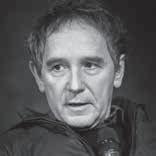
Tokioko Yamanote linea hiria inguratzen duen metro biribila (zenbait zatitan airetik dabilena) adar zirkularra da. Gauez edota egunez erabiliz gero, lozorro sakonean dauden bidaiari asko aurki daitezke, eta aurpegiak argitzen dizkieten argipirrintek beren amets laburren proiekzioak dirudite. Japonian, kaleetan barrena noraezean dabiltzan itzalek eta siluetek ez dute begiradarik altxatzen eta erdi lo daude. Somnanbulismoa loaren nahasmendu bat da, eta hura duten pertsonek jarduera motorrak gara ditzakete inkontziente eta komunikatzeko aukerarik gabe dauden bitartean.

Tokyo’s Yamanote line is the overhead circular line of the metro around the city. Travellers using it at night, or even by day, will find many passengers slumped in deep lethargy, as if the shards of light flitting over their faces were nothing more than a projection of their fleeting dreams. In Japan, the shadows and silhouettes moving through the streets ramble half asleep, never lifting up their gaze. Sleepwalking is a disorder in which people develop motor activities, but are unaware of what is going on, and do not have the wherewithal for communication.
La línea Yamanote de Tokio es la línea circular del metro (elevado en algunos tramos) que rodea la ciudad. Si uno la utiliza de noche, incluso de día, descubrirá a muchos pasajeros sumidos en un letargo profundo, como si las ráfagas de luz que apenas iluminan sus rostros no fuesen sino una proyección de sus sueños fugaces. En Japón, las sombras y siluetas que caminan por las calles deambulan medio dormidas sin levantar la mirada. El sonambulismo es un trastorno del sueño en el que las personas desarrollan actividades motoras mientras permanecen inconscientes y sin posibilidad de comunicación.

@ kimuak@filmotecavasca.com

Islandian, urtearen zati handi bat ilunpean igaro ohi dute. Badu alde ona horrek, gaua dekoratua ezkutatzen duen atze-oihala bezalakoa da, funtsezkoa dena baizik ez baitu ikusten uzten; marrazten hasi behar zaren orri zuria.
Iceland lives in darkness for much of the year. The good thing about night is that it’s like a backdrop which erases the set and leaves you looking at the bare essentials, like looking at sheet of paper you have to draw on.
En Islandia se vive en la oscuridad una gran parte del año. Lo bueno que tiene la noche es que es como un telón de fondo que borra el decorado y que te deja frente a lo más esencial, como frente a una hoja de papel en la que debes dibujar.

Irudiek bere buruaren isla gisa funtzionatzen dute. Isla bat agertzen da uraren azalean, baina baita harrien azal leunetan ere. Harrobiek, gatzagek, beren egoera fisikoa galduko dute, beren materialtasuna, eta deuseztatu egingo dira. Gizakion lanak ingurune naturalak aldatzen ditu, begi berriekin begiratzeko aukera ematen digun arte, eskainitako lana eta denbora aintzat hartu arte. Muñoz Molinaren hitzetan, Disdiraken osotasuna ikusten dugu, bere islan bakartuta.
Images that function as reflections of themselves. A reflection appears on the surface of water, but also, on the smooth surfaces of rocks. The quarry, the salt mines, will one day loose their physical status, their materiality, and will end up dissolved. Human labour modifies the natural space until it offers us the possibility of looking with new eyes, appreciating the labour and time involved. In Muñoz Molina’s words, we find in Disdirak plenitude engrossed in her mirrored reflection.
Imágenes que funcionan como reflejos de ellas mismas. El reflejo aparece en la superficie del agua, pero también en las caras lisas de las piedras. La cantera, las salinas, perderán por un momento su estado físico, su materialidad y terminarán diluyéndose. La labor humana modifica el espacio natural hasta ofrecernos la posibilidad de mirar a nuestro alrededor con nuevos ojos, apreciando el trabajo y el tiempo que esto supone. En palabras de Muñoz Molina, nos encontramos en Disdirak con la plenitud ensimismada en los espejos.



Islandiak paisaia bikainak eskaintzen dizkigu, urrunekoak eta irisgarritasun txikikoak. Birta Mirkur obrak Islandiako geografiaren leku harrigarri horietako batean jartzen du arreta. Naturaren ahalmen iradokitzailea bistakoa da Reykjaviketik gertu dagoen Bláalonid urmaelean, zeina Salaberriaren bideoaren protagonista baita. Lainonak urmaeletik igotzen den lurrunaren artean lausotzen. Ura zuria da, eta zerua ere izan liteke. Lurrun uhinduaren abiadurak eta proiektatzen dituen itzalek irrealitate sentsazioa eragiten digute, irudia tratatua izan balitz bezala.
Iceland has some incredible scenery, remote spaces where access is difficult. Birta Mirkur homes in on one of the country’s surprising geographic locations. Nature’s evocational potential manifests itself in the Bláalonid lagoon near Reykjavík, which rises up as the main feature of Iñigo Salaberria’s film work. Clouds hazily merging with the steam coming up from the lagoon. The white water could also be the sky. The speed of the wavy lines of steam and the shadows it projects give us an unreal sensation, as if the image had been touched up.
Islandia ofrece paisajes increíbles, espacios alejados a los que cuesta llegar. Birta Mirkur se centra en uno de estos sitios sorprendentes de la geografía islandesa. El poder de evocación de la naturaleza se manifiesta en la laguna de Bláalonid, en las cercanías de Reykjavik, y se convierte en protagonista del trabajo videográfico de Iñigo Salaberria. Nubes difuminándose entre el vapor que asciende de la laguna. El agua, de color blanco, también podría ser el cielo. La velocidad del vapor ondulante y las sombras que proyecta, nos producen una sensación de irrealidad, como si la imagen hubiese sido tratada.
 © Albert Triviño
© Albert Triviño
Albert Serraren (Banyoles, Girona, 1975) lorategi zinematografikoan abesten duten txoriak oso hegazti delikatuak dira, lumaje guztiz arraroak dituzte, eta gai dira bere film bakoitzean polikromia eta polifonia deigarriak egiteko. Mundu osoko kritikari eta zinemazale askoren iritziz artegatasun handia sortzen duen zuzendaria da eta, paradoxikoki, oso maitatua da nazioarteko zinemaldi ospetsuenetan. Ederki jakin du nola mamitu bere irudian —Salvador Dalí herrikidearen keinuen ihakin dibertigarria eta haren ahozko talentu oparoa, umorismo jator batez eta era guztietako erreferentzia jantziez josiz— zinema garaikideko autorearen ezaugarri pertsonal eta artistiko erradikalenetako batzuk.
Horregatik guztiagatik, zinemagile paregabe honen filmografia osatzen duten obrek bere nahi hori adierazten dute: zinema konbentzionala irudikatzeko moduen aurkaratze konplexugabe bat burutzea, hainbestetan aitortua izan den azken helburu batekin, zinematografoaren artearen garrantzi etiko eta estetikoa garai guztietako Arte Ederren baitan goratzea.
Hori lortzeko hainbat estrategia erabili ditu. Lehenik eta behin, Historiara eta mendebaldeko kulturaren parte diren pertsonaia eta kontakizun batzuetara hurbiltzea. Bertan, azpimarratzekoak dira Espainiako kulturaren ekarpen batzuk. Hala gertatzen da On Kixoterekin (Honor de cavalleria, 2006), Mateoren araberako Ebanjelioko Errege Magoekin (El cant dels ocells, 2008), Fray Luis de Leónekin (Els noms de Crist, 2010), Giacomo Casanova libertino eta idazle veneziarraren eta Bram Stoker eleberrigile irlandarraren izaki hilezkorra den Drakula kondearen fikziozko topaketarekin (Història de la meva mort, 2013) eta Luis XIV. arekin (La mort de Louis XIV, 2016).
Bigarren estrategia Albert Serrak bere filmen eszenaratzea eraikitzeko baliatzen duen prozeduran oinarritzen da: tramaren atzealdea dei genezakeen horretan murgiltzea, hau da, tramarik ez dagoen edo trama lausoki iradokitzen deneraino desagertzen den lekuetan eta uneetan murgiltzea, zinema tradizionalaren progresio dramatikoaren eta erritmo narratiboaren antipodetan kokatzen den mugimenduan dauden irudiak sortzeko modu bat erabiliz. Beste era batera esanda, ikusleriaren gehiengoari zuzendutako kontsumo handiko filmetan gauza asko gertatu behar badira, ikuslearen interesa areagotu nahi duen ekintza mordo bat, Albert Serraren filmetan ez da ezer gertatzen edo oso gutxi gertatzen da. Horrela, bada, uler daiteke, esate baterako, aipatu Honor de cavalleria filmean ez ikustea Kixoteren balentria hain ospetsuaren ekintza gogoangarriak, baizik eta haren atzealdea, atseden-uneak, etzanda edo erdi etzanda ematen dituztenak, Gironako landazabal ederrean, zeinetan zalduna eta ezkutaria elkarrizketa hutsaletara edo gutxi gorabehera garaiz kanpoko espekulazioetara as-
katzen diren; horrela ulertzen da, halaber, aipatutako La mort de Louis XIV horretan errege absolutu handiaren agonia ia soilik bere aurpegi nekatu eta minduaren lehen plano eder baten bidez erakustea —Jean-Pierre Léauden interpretazio bikainarekin—, bere ministroen joan-etorri zehaztugabeen eta erdizka edo ia ikuseremutik kanpo ikusten den ganbera-laguntzaren bidez; azkenik, horrela ulertzen da ere Pacifictionen (2022) ikusleari espioi-film baten antzeko gisa iradokitzen zaiona pantailan ebazten den moduan ebaztea, hau da, protagonistaren giza-izaerari eta —Polinesiako uhartediko Frantziar Estatuko goi-mandataria izanik— duen botere politikoaren izaerari buruzko gaueko dibagazioetan oinarrituz.
Albert Serra bere beste edozein lankideren artetik bereizten duen beste prozedura bat zera da, bere obren planoen sorkuntza arretatsua. Miniaturagile mozarabiar baten pazientzia berberarekin, zuzendariak bere lanaren alderdi horri honela ekiten dio, plano bakoitzak besteengandik eta baita filmetik bertatik ere autonomoa izan daitekeen pieza artistiko bat balu bezala jorratuz. Helburu horrekin, hainbat erregistro erabiltzen ditu, Honor de cavalleria edo El cant del ocells filmetan darabilen irudi hustu, liriko eta sotilki naifetik hasi eta Pacifictionen Sergi Lópezek duen taberna barruko dantzari polinesiarren gaueko konposizio koloreaniztun eta koreografikoetaraino, zeinak gay ukitu harrigarri batekin irudikatu baitzituen. Arlo honetan, beste bi estilo-ezaugarri gisa, gehitu egin behar dira, batetik, bere perfekzionismo formalean erabat hertsia den enkoadraketaren kudeaketa eta, bestetik, plano bakoitzaren iraupenaren ideia ongi pentsatua, oro har zabala, zeinak, berez, baztertu egiten baitu ohiko narrazio zinematografikorako edozein aukera. Orain, lerro hauek amaitze aldera, bereziki interesgarria iruditzen zaidan azken estrategia bati buruz hitz egin nahi nuke. Paisaiari buruz duen ikuspegi adanista gisa adieraz genezakeenaz ari naiz, munduaren edertasunaren aurrean lurrean izan zen lehen gizonaren begiradak agertutako harridura, edo antzinako lehen bidaiarien begiradan egon zatekeen hura. Hala erakusten digu bere sorterriko Gironako paisaien behaketa sutsu horretan, Errege Magoek Islandian zehar egindako bidaian edo Polinesia Frantseseko ilunabarretan eta gauetan.
Izan ere, Albert Serrak, bere zinemarekin —zeinak diziplinarteko bokazio sendoa baitu denbora historikoari eta gainerako jardubide artistikoei dagokienez—, ikusle-mota berri bati dei egiten baitio: gizon eta emakume askeei, kontenplazio patxadatsukoei, gure garaiko zinemako bide ez hain erabilietan barrena ibiltzeko gai direnei.
Zorionak ZINEBI 64ri Ohorezko Mikeldi zoragarri honengatik.
Luis EguiraunThe birds singing in Albert Serra’s cinematographic garden (Bañolas, Girona, 1975) are rather delicate specimens with decidedly rare plumages, with the wherewithal to put on a polychromic and indeed a polyphonic show in all his films. An unsettling director for many critics and filmgoers everywhere, but paradoxically much appreciated at the top international festivals, he has proved able to personify in himself - a mixture of his festive imitation of the gesturing of his fellow Catalan Salvador Dalí and his torrential verbal talent, heady with genuine humour and all manner of erudite references - some of the most radical personal and artistic traits of the auteur in contemporary filmmaking.
And so the work that makes up the filmography of this incomparable director expresses his wish to carry out a complex-free challenge of modes of representation in contemporary cinema, for the ultimate purpose, stated so many times, of doing so to elevate the ethical and aesthetic importance of the filmmaker’s art within all Fine Arts of all time.
He has been using a number of different strategies to achieve this. Firstly, an approach to History and to some of the characters and stories which form part of Western culture, featuring some contributions by Spanish culture. This was the case with Don Quijote (Honor de cavalleria, 2006), the Three Kings in the Gospel according to Saint Matthew (El cant dels ocells, 2008), Fray Luis de León (Els noms de Crist, 2010), the fictional encounter of Venetian libertine and writer Giacomo Casanova and Count Dracula, the immortal creature of Irish novelist Bram Stoker (Història de la meva mort, 2013) and Louis XIV (La mort de Louis XIV, 2016).
Another strategy is based around the procedure used by Albert Serra to fashion the mise en scène for his films: an immersion in what we might tentatively term the other side to the plot, in other words, the places and times when there is no plot, or the plot vanishes to the point that it is vaguely hinted at, a way of creating images in movement as the direct opposite of the dramatic progression and the narrative pace found in traditional films. To put it another way, if in films lapped up by majority audiences many things must necessarily happen, as an accumulation of actions to boost the viewer’s interest at all costs, in Albert Serra’s films things do not happen, or very few things happen. And so it may be understood, for example, that in the aforementioned Honor de cavalleria we have none of the feats marking out the utterly famous exploits of Don Quijote, but by way of a reversal, we have moments of relaxation, resting or lying around in Gi-
rona’s pretty countryside, during which the knight and his squire go in for trivial dialogues or more or less speculatory comments; and it may also be perceived that in the likewise aforementioned La mort de Louis XIV the agony of the great absolute monarch is conveyed to us almost exclusively by means of a most beautiful close-up of his tired, pained face in a masterful interpretation by Jean-Pierre Léaud, amid distant glimpses of his ministers and valets traipsing haplessly about: and finally, in Pacifiction (2022), what is suggested to the viewer as something akin to a spy film is portrayed on screen on the basis of nocturnal ramblings in relation to the human condition and the nature of political power by the main character, a French High Commissioner in the islands of Polynesia.
Another procedure which sets Albert Serra apart from any of his colleagues is the hugely meticulous creation of the shots in his films. With the patience of a Mozarabic miniaturist, the director undertakes this aspect of his work as if each shot contained an artistic feature potentially independent from the rest and even from the film itself. To this end he avails himself of a number of registers - the stripped, lyrical and subtly naïf image of Honor de cavalleria or El cant dels ocells, or the colourful and choreographic nocturnal composition of the Polynesian dancers, represented with some surprising gay touches at the sleazy club run by Sergi López in Pacifiction. In this regard, some mention should be made of two more aspects of style - the most unwavering management of frames in terms of their formal perfectionism, and above all his well thought out ideas on the duration of each sequence, generally quite long, and this alone eliminates any possibility of a standard cinematographic narration.
I now wish to refer, as I near the end, to a final strategy which I find particularly interesting. This is what we might term his Adamist vision of the surroundings, astonishment at the beauty of the world in the gaze of the first man on the earth or of the first ancient travellers. He demonstrates this to us in his visual slice of the scenery around his native Girona, the Three Kings on their Icelandic travels, or the sunsets and nights of French Polynesia.
Because Albert Serra’s films - with deeply-rooted interdiscipline in relation to historic time and other artistic practices - constitute an invitation to a new kind of spectator, free, serenely contemplative men and women, able to move along the less-travelled paths of the cinema of our age. Congratulations to ZINEBI 64 for this marvellous Mikeldi of Honour.
Luis EguiraunLos pájaros que cantan en el jardín cinematográfico de Albert Serra (Bañolas, Gerona, 1975) son aves muy delicadas de plumajes decididamente raros, capaces de componer llamativas policromías y polifonías en cada una de sus películas. Realizador desasosegante para muchos críticos y cinéfilos de todo el mundo, paradójicamente muy querido en los festivales internacionales más prestigiosos, ha sabido encarnar en su propia figura —una mezcla de su festivo remedo de la gestualidad de su paisano Salvador Dalí y su torrencial talento verbal, cargado de un genuino humorismo y de todo tipo de referencias cultas— algunos de los rasgos personales y artísticos más radicales del autor en el cine contemporáneo.
Por todo ello, las obras que componen la filmografía de este cineasta sin parangón expresan su voluntad de llevar a término una desacomplejada impugnación de los modos de representación del cine convencional, con el propósito último, tantas veces declarado, de elevar así la importancia ética y estética del arte del cinematógrafo en el conjunto de las Bellas Artes de todos los tiempos.
Viene utilizando distintas estrategias para conseguirlo. En primer lugar, un acercamiento a la Historia y a algunos de los personajes y los relatos que forman parte de la cultura occidental, dentro de la cual destaca algunas aportaciones de la cultura española. Sucede así con Don Quijote (Honor de cavalleria, 2006), los Reyes Magos en el Evangelio según San Mateo (El cant dels ocells, 2008), Fray Luis de León (Els noms de Crist, 2010), el encuentro en la ficción del libertino y escritor veneciano Giacomo Casanova y el Conde Drácula, la inmortal criatura del novelista irlandés Bram Stoker (Història de la meva mort, 2013) y Luis XIV (La mort de Louis XIV, 2016). Una segunda estrategia se basa en el procedimiento del que Albert Serra se sirve para construir la puesta en escena de sus películas: su inmersión en lo que tentativamente podríamos llamar el envés de la trama, es decir, los lugares y los momentos en los que no hay trama o ésta se desvanece hasta el punto de ser vagamente insinuada, una manera de crear imágenes en movimiento que se sitúa en los antípodas de la progresión dramática y el ritmo narrativo propios del cine tradicional. Dicho de otra manera, si en las películas de gran consumo para públicos mayoritarios han de pasar muchas cosas, un cúmulo de acciones que persigue aumentar a todo trance el interés del espectador, en las de Albert Serra no pasan cosas o pasan muy pocas. De esta manera se puede entender, por ejemplo, que en la citada Honor de cavalleria no asistamos a las hazañas que jalonan la celebérrima gesta quijotesca sino a su reverso, los momentos de descanso, recostados o tumbados en la bella campiña gerundense, en los que caballero y escu-
dero se libran a diálogos triviales o especulaciones más o menos extemporáneas; se entiende también que en la igualmente citada La mort de Louis XIV la agonía del gran monarca absoluto nos sea mostrada casi exclusivamente a través de un hermosísimo primer plano de su rostro cansado y dolorido en la genial interpretación de Jean-Pierre Léaud, con las desvaídas idas y venidas de sus ministros y ayudas de cámara entrevistos o fuera de campo; se entiende, por último, que en Pacifiction (2022) lo que se sugiere al espectador como algo parecido a una película de espías, se resuelva en la pantalla sobre la base de las divagaciones nocturnas acerca de la condición humana y la naturaleza del poder político de su protagonista, un Alto Comisionado del Estado francés en las islas de Polinesia.
Otro procedimiento que distingue a Albert Serra de cualquiera de sus colegas es la muy meticulosa creación de los planos de sus obras. Con una paciencia de miniaturista mozárabe, el realizador acomete este aspecto de su trabajo como si cada plano contuviese una pieza artística potencialmente autónoma de los demás e incluso de la propia película. Utiliza con este propósito diversos registros, desde la imagen despojada, lírica y sutilmente naif de Honor de cavalleria o El cant del ocells hasta las abigarradas y coreográficas composiciones nocturnas de los danzantes polinesios, representados con un sorprendente toque gay dentro del garito que regenta Sergi López en Pacifiction. Cabe añadir en este terreno, como dos rasgos de estilo más, una gestión del encuadre absolutamente férrea en su perfeccionismo formal y sobre todo su meditada idea de la duración de cada plano, en general extensa, lo que, por sí misma, excluye cualquier posibilidad de narración cinematográfica al uso.
Me gustaría ahora referirme, para acercarme a la conclusión de estas líneas, a una última estrategia que me resulta particularmente interesante. Se trata de lo que podríamos formular como su visión adanista del paisaje, el asombro ante la belleza del mundo en la mirada del primer hombre sobre la tierra o de los primeros viajeros antiguos. Así nos lo muestra en su arrebatada contemplación de los paisajes de su Gerona natal, del viaje de los Reyes Magos por Islandia o de las puestas de sol y las noches de la Polinesia francesa.
Porque Albert Serra convoca con su cine —de arraigada vocación interdisciplinar en relación con el tiempo histórico y las demás prácticas artísticas— a un nuevo tipo espectador, hombres y mujeres libres y serenamente contemplativos, capaces de transitar por los caminos menos trillados del cine de nuestro tiempo.
Enhorabuena a ZINEBI 64 por este maravilloso Mikeldi de Honor.
Luis EguiraunBeware of a Holy Whore (Rainer Werner Fassbinder, 1971), hoteleko tabernan eskatzen den koktelaren izena duen film labur honetan, abeslari batek serenata bat abesten dio gaueko klub ilun batean bildu den eta Fassbinderren pertsonaien antza duen talde txiki bati (Fassbinderrenak beraiek izan zitezkeen). Serrak omenaldia egiten du, ez Fassbinderren estiloa imitatuz, baizik eta harekin gehien identifikatzen diren pertsona, leku eta moduei dei alkimiko bat eginez.
In this short named after the cocktail ordered at the hotel bar in Beware of a Holy Whore (Rainer Werner Fassbinder, 1971), a singer serenades a small crowd in a moody nightclub who all look the part of Fassbinder characters—if not of Fassbinder himself. Serra pays homage not by mimicking Fassbinder’s style but rather by alchemically conjuring the people, places, and modes of performance most identified with him.

En este cortometraje, que lleva el nombre del cóctel que se pide en el bar del hotel en Atención a esa prostituta tan querida (Beware of a Holy Whore. Rainer Werner Fassbinder, 1971), un cantante da una serenata a un pequeño grupo de personas en un melancólico club nocturno en el que todos parecen personajes de Fassbinder, si es que no se trata del propio Fassbinder. Serra le rinde homenaje no imitando el estilo de Fassbinder, sino conjurando alquímicamente a las personas, los lugares y los modos de actuación que más se identifican con él.


@ info@squareeyesfilm.com
Bakarrizketa bat ertzen trinkotasunean bizi den eraiki batean, muga iragazkorrei eta lege iragazgaitzei buruzko istorioak, gogoeta bat zirkulazio askeak, ezagutza libreak eta espazio libreak duten mehatxuari buruz.
A monologue is performed in a building that inhabits the thickness of a borderline, telling stories of permeable borders and impermeable laws, reflecting on how free movement, free knowledge and free space are under threat.
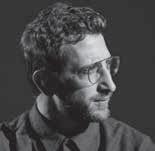
Un hombre realiza un monólogo en el interior de un edificio que se alza al borde de una línea fronteriza. Este cuenta historias de fronteras permeables y de leyes impermeables, reflexionando sobre cómo la libre circulación, el libre conocimiento y el libre espacio están amenazados.

director Maddi Barber
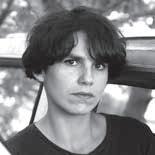
screenplay Maddi Barber (A partir de un poema de María Sánchez) editing Maddi Barber, Vicente Vázquez sound Oriol Campi
production Esto no es una poesía, Garde, Pirenaika distribution Esto no es una poesía @ estonoesunapoesia@gmail.com
Ilunabar baten argazkiak iragaten. Igelei buruzko liburu bat eskuen artean. Emakume baten aurpegia: irakurtzen ari da. Basakatu bat hainbat eskuren artean. Egunsenti bat igarotzen. María Sánchez albaitari eta idazlearen Esta es la mano que cuida (Hau da zaintzen duen eskua) poematik abiatuta, film hau beste espezieekin ditugun harremanetan gertatzen diren ikaskuntza prozesuei buruzko diptiko gisa eraikitzen da.

Photos of a sunset. A book about frogs held by hands. A woman’s face reading. A wildcat among several hands. A passing sunrise. Based on the poem Esta es la mano que cuida [This Is the Hand that Cares], by veterinarian and writer María Sánchez, this essay is build as a diptych on the learning processes of our relationship with other species.
Fotos de un atardecer. Un libro sobre ranas entre las manos. El rostro de una mujer leyendo. Varias manos que sostienen a un gato montés. Un amanecer que pasa. A partir del poema Esta es la mano que cuida, de la veterinaria y escritora María Sánchez, este ensayo se construye como un díptico sobre los procesos de aprendizaje de nuestra relación con otras especies.
Mendeak dira baleak arrantzatzen direla. Badirudi gizonaren indarkeriaren emaitza dela, zeinak bere burua suntsitzen baitu natura suntsituz. Kapitalismoaren goraldiarekin bat etorriz, oraindik ere indarrean jarraitzen du jardun horrek, gizakiek natura eta aurre egiteko gai ez diren izakiak betiereko nola suntsitzen dituzten islatuz.

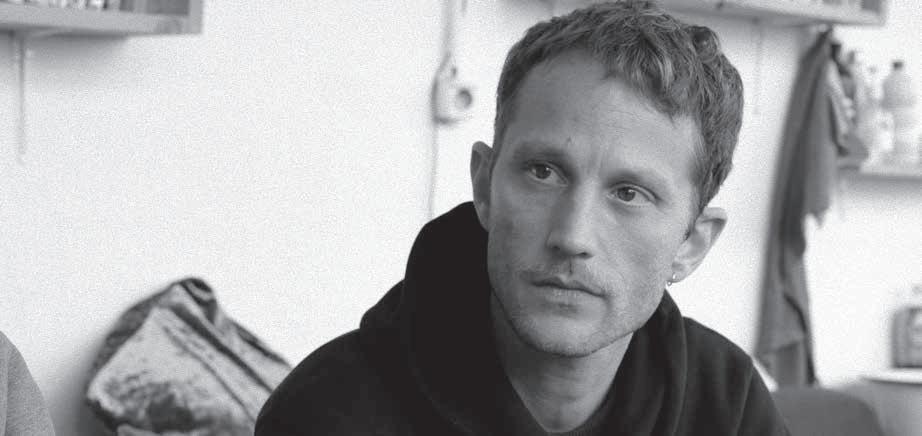
Whaling has been around for centuries. It seems the fruit of man’s violence, destroying himself by destroying nature. Accompanying the rise of capitalism, the practice survives today, reflecting humans’ eternal destructiveness of nature and the creatures unable to resist them.
La caza de ballenas ha existido durante siglos. Parece ser fruto de la violencia del ser humano que, al destruir a la naturaleza, se destruye a sí mismo. Acompañando al auge del capitalismo, la práctica sobrevive hoy en día reflejando la eterna destrucción de la naturaleza por parte de los seres humanos y la incapacidad de las criaturas para resistirse a ellos.
director · screenplay · editing Mila Zhluktenko, Daniel Asadi Faezi


cinematography Sadriddin Shakhabiddinov sound Fazliddin Musurmonov music Giovanni Berg cast Uralbay Utegenov production Daniel Asadi Faezi, O’zbekiston Kinematografiya Agentligi, Lotas Film distribution Daniel Asadi Faezi @ contact@asadifaezi.com
Paisaia mortu bat, beste planeta batekoa dirudiena. Hondartutako ontzi herdoildu eta bakarti batzuk. Inguruan basamortuko sasiak hazten dira, ekaitz gogorretan hareari eusten diotenak. Aralkum, Aral Basamortua, itsas hondo biluzi bat da, Aral itsasotik geratzen den azkeneko gauza. Ehundura zinematografiko desberdinak uztartuz, saiakera honek berrirudikatu egiten du jada lehortuta dagoen Aral itsasoa, arrantzale zahar bati berriz itsasoratzeko aukera emanez.

A desert landscape, as if from another planet. A few lonely, rusty shipwrecks. Low desert scrub grows around them to hold the sand together during the merciless storms. Aralkum, the Aral Desert, is the bare seabed, the last thing left of the Aral Sea. By weaving together different cinematic textures, this essay re-imagines the dried-up Aral Sea, allowing an old fisherman to set sail one last time.
Un paisaje desértico, como de otro planeta. Unos cuantos naufragios solitarios y oxidados. Alrededor de ellos crecen pequeños matorrales del desierto para mantener la arena unida durante las despiadadas tormentas. Aralkum, el desierto de Aral, es el fondo marino desnudo, lo último que queda del mar de Aral. Mediante el entrelazado de diferentes texturas cinematográficas, este ensayo reimagina el Mar de Aral desecado, permitiendo a un viejo pescador zarpar por última vez.
Sistema autoritarioaren forma berri baten eta horretara egokitu diren herritarren arteko harremana aztertzen duen fabula bat. Pertsona talde bat jada garbi-garbi dagoen espazio ezezagun bat garbitzen ari da. Behin eta berriz ohartarazten dituzte estralurtarren eraso bat datorrenaz. Hareazko ekaitz batek espazioa betetzen du, estralurtarren erasoaren atariko gisa. Dena den, pertsona batek hareazko ekaitzaren atzean datzan sekretua aurkitzen du… Benetan existitzen al dira erasotzaile estralurtarrak?
A fable exploring the relationship between a new form of authoritarian system and its citizens who have adapted to it. A group of people are cleaning a spotless unknown space. The broadcast repeatedly warns them about the coming attack of aliens. A sandstorm invades the space as the foreshadow of the arrival of aliens. However, one person accidentally discovers the mystery hidden in the sandstorm… Do the alien attackers really exist?


Una fábula que explora la relación entre una nueva forma de sistema autoritario y sus ciudadanos, que se han adaptado a él. Un grupo de personas limpia un espacio impoluto sin identificar. Una emisión transmitida sin interrupción les advierte reiteradamente sobre el próximo ataque extraterrestre. Una tormenta de arena invade ese espacio como si fuera un presagio de la inminente llegada de los alienígenas. Sin embargo, una persona descubre accidentalmente el misterio que esconde la tormenta de arena... ¿Existen realmente los atacantes alienígenas?

@ festival@miyu.fr
Ez da segurua airean itzulipurdi bat egiten saiatzea. Lepoa hautsi dezakezu, buruarekin lurreratu edota eskumuturretan kolpe txar bat hartu. Aukera horietako bat ere ez da atsegina eta, horregatik, nire avatarra arduratzen da horiek egiteaz. 6 nukleoko prozesadore batean praktikatzen du, ikaskuntza automatikoaren laguntzaz. Prozesadorea ez da munduko modernoena, baina iterazio bakoitzeko sei jauzi kalkulatzen ditu. Iterazio batek minutu bat behar du, hau da, 360 jauzi dira ordubetean eta 8.640 jauzi egunean. Nik neuk ezingo nituzke hainbeste jauzi egin.
Attempting a backflip is not safe. You can break your neck or land on your head, or land badly on your wrists. None of that is nice, so my avatar does the trick. It practices on a 6-core processor with the help of Machine Learning. The processor is not the newest but still calculates six jumps per iteration. One iteration takes one minute, this is 360 jumps in an hour and 8.640 jumps in a day. I wouldn’t be able to jump so much myself.

Intentar una voltereta hacia atrás no es seguro. Te puedes romper el cuello, aterrizar de cabeza o caer de mala manera sobre las muñecas. Nada de eso es agradable, así que mi avatar lo hace por mí. Este practica en un procesador de 6 núcleos con la ayuda del Machine Learning. El procesador no es el más nuevo, pero aún puede calcular seis saltos por iteración. Una iteración tarda un minuto, esto es 360 saltos en una hora y 8.640 saltos en un día. Yo mismo no sería capaz de saltar tanto.

Aspaldi honetan gatazkak areagotu egiten dira futbol estadioetan, izan ere, futbol partidatan egoten diren gertaerak titulu supiztaile gisa iristen dira hedabideetara. Bien bitartean, Jugoslaviako sei errepublika ohietako armadak urtero elkartu dira azken hamarkada honetan bakearen izenean areto-futbol txapelketa bat egiteko, eta hedabideek ez dute ia horren berri eman.


Football stadiums have long been the designated places for the escalation of conflicts and every incident during a football match makes for a fire-starting headline material. Meanwhile, the armies of six former Yugoslav republics have been getting together every year for over a decade, for a futsal tournament in the name of peace, in almost complete media silence.
Los estadios de fútbol han sido durante mucho tiempo los lugares designados para escalar conflictos. Cada incidente durante un partido de fútbol se convierte en material de titulares que avivan el fuego. Mientras tanto, los ejércitos de seis repúblicas de la antigua Yugoslavia se reúnen cada año desde hace más de una década para disputar un torneo de fútbol sala en nombre de la paz, con un silencio mediático casi absoluto.
director Maria Inês Gonçalves editing Maria Inês Gonçalves, Diogo Vale sound Inês Adriana music Margarida Gonçalves, Meadow Brooks cast Júlia Neuparth Troni, Ana Carolina Dias Cortez, Diogo Botelho, Raquel Botelho, Raquel Seabra

production Maria Inês Gonçalves, Elías Querejeta Zine Eskola distribution Portugal Film - Portuguese Film Agency @ pf@portugalfilm.org
Ama bat bere haur jaioberria bainatzen ari da; bien bitartean, gainerako haurrak ihinztagailuetako urekin jolasten ari dira. Familiaren irudien eta irudi intimoen artean, zerbait argitzen hasten da: espazioak eraldatu egiten dira, traumari azaleratzeko aukera emanez. Oroitzapen pertsonal batetik hasita, eta ura bizitzarako beharrezkoa den baina suntsigarria izan daitekeen substantzia gisa ulertzen duen ikuspegitik, bidaia murgiltzaile batera garamatza fikzio honek, haurtzaroko pertzeptzioaren egoeretan zehar, uraren materialtasuna filmaren materialtasunarekiko paraleloan arakatuz.
A mother bathes her baby, while other children play with the water coming from the sprinklers. Between intimate and familiar images, something begins to unravel: spaces are transformed, allowing trauma to surface. Starting from a personal memory and from the notion of water as a vital but also potentially destructive substance, this fiction takes us on an immersive journey through childhood’s states of perception, exploring the materiality of water in parallel with the materiality of film.
Una madre baña a su bebé, mientras otros niños juegan con el agua que sale de los aspersores. Algo comienza a gestarse entre estas imágenes íntimas y familiares: los espacios se transforman, permitiendo que aflore un trauma. Partiendo de un recuerdo personal y de la noción del agua como sustancia vital pero también potencialmente destructiva, esta ficción nos lleva a un viaje inmersivo por los estados de percepción de la infancia, explorando la materialidad del agua en paralelo a la materialidad del cine.

Bergie terminoa Hegoafrikako hitz bat da, etxegabeei erreferentzia egiten diena. Horrela esaten diete iraganean Taula Mendian (afrikaansez: Tafelberg) babesten zirelako. Legearen agente batek etxegabeak bota behar ditu 10 kilometroko aisialdiko lasterketa bat dela-eta; orduan, legearen eta erantzukizun pertsonalaren arteko elkargune konplexuan barrena ibili beharko da, sarritan alde batera utziak direnen duintasunari aurre egin behar baitio.
The term bergie is a South Africanism that refers to people that are homeless, since they sought refuge on the slopes of Table Mountain in the past (in Afrikaans: Tafelberg). When a law enforcement officer has to remove homeless people to make way for a 10 km fun-run, he has to navigate the complex intersection of the law and personal responsibility when confronted with the dignity of those often ignored.
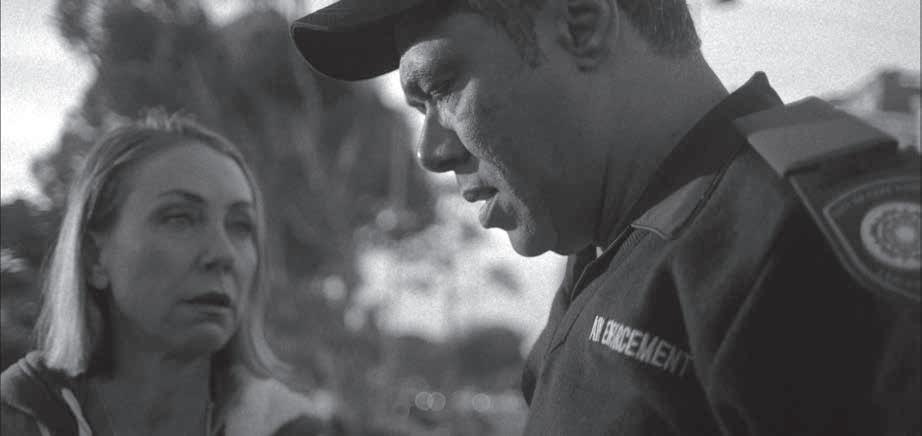
Bergie es un término sudafricano que se refiere a las personas sin hogar, ya que en el pasado se refugiaban en las laderas de Table Mountain (en afrikáans: Tafelberg). Cuando un agente de policía tiene que desalojar a personas sin hogar para preparar una carrera de 10 km, se encuentra en una compleja situación en la que colisionan la ley y la responsabilidad personal, al enfrentarse con la dignidad de quienes a menudo son ignorados.
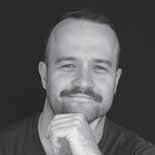
Singapore, 2022 | 23 min | Fiction
director Jonathan Choo

screenplay Jonathan Choo, Nicolette Lin cinematography Rachel Liew

editing Paul Lin sound Xander Toh art Grace Song music Robbie Say cast Benedict Lin, Jonathan Choo production Judith Tong
@ jonathanchoo117@gmail.com
Guoqiang sozialki baldarra da; poeta da eta instagramen eskuz idatzitako bere Haikuak argitaratzen ditu noizean behin. Bere haikuentzako arreta handiagoa lortzeko asmoz, Guoqiangek Augustine Chua tokiko idazlearen idazketa taldera joatea erabakitzen du, haren iritzia jasotzeko. Azkenean, galdera-erantzunetarako tartean galderak egiteko tartea du eta guztiz nahastuta geratzen da, talde osoan deserosotasun handia sortuz.
Guoqiang is a socially awkward Instagram poet and occasionally posts his self penned haikus on his Instagram page. In order to get more attention for his haiku, Guoqiang decides to go to local author Augustine Chua’s writing panel to get his feedback. When he eventually gets the chance to ask questions during the Q&A, he comes off confusing instead, creating mass awkwardness.
Guoqiang es un poeta con pocas habilidades sociales que ocasionalmente publica los haikus que él mismo escribe en su página de Instagram. Para conseguir más lectores, Guoqiang decide ir al encuentro del autor local Augustine Chua para pedir su opinión. Cuando finalmente tiene la oportunidad de plantear sus dudas durante la sesión de preguntas y respuestas, se muestra confuso, lo que genera una gran sensación de incomodidad.
China, 2022 | 13 min | Fiction

director · screenplay · editing Lin Tu cinematography Haonan Wang sound Sam Fan music Wei Zuo, Di Liu
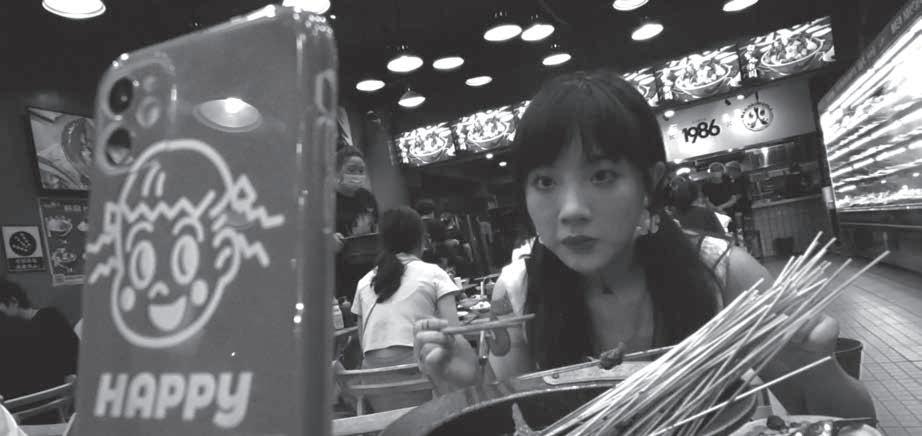
production Cat People Productions distribution Manifest @ festivals@manifest.pictures
33 influencerraren bizitza zenbat eta zoroago bihurtu, orduan eta gehiago hazten zaio beheko ezpaineko afta…
As the flashy life of the influencer 33 gets crazier, the canker sore inside her lower lip keeps growing larger…
A medida que la ostentosa vida de la influencer 33 se va volviendo más loca, no para de crecerle el afta que tiene en el labio inferior.
France - Spain, 2022 | 21 min | Fiction
director · screenplay Blanca Camell Galí cinematography Juliette Barrat editing Laura Rius Aran sound Osman Gené Martín, Raphaël Zucconi art Luis Sánchez Santa María music De Loretta cast Carla Linares, Jaume Madaula Izquierdo, Jan Matheu Montserrat production Mathilde Delaunay, Nadine Rothschild distribution La Aventura Cine @ nadine@voltaproduccion.com
Borisengandik banandu ondoren, Lara bere sorterrira itzuli da, Bartzelonara. Han, bere lagunek, maitaleek eta Castells-en tradizio katalanek bere ametsak eta nahiak eraldatuko dituzte.
After breaking up with Boris, Lara returns to her hometown, Barcelona. There, her friends, lovers and the Catalan traditions of the Castells will change her dreams and desires.

Tras separarse de Boris, Lara regresa a su Barcelona natal. Allí, sus amigos, sus amantes y las tradiciones catalanas de los Castells transformarán sus sueños y sus deseos.

director Alize Sotelo, Rita Ataide Novais screenplay Júlia Alcañiz sound Yin Lee cast Natalie McKay, Anna Mason production Rita Ataide Novais @ alize.sotelo@gmail.com
Zein da IKEAko mahai baten haustura-puntua hondatzen ari den adiskidetasun baten pisuaren aurrean? Postrearen ordua da ia, eta prentsatutako egur zatiak apurtzeko zorian daude. Istorio kubista bat da hau, bi lagunei, galdutako mahai bati eta haren ordezkoari buruz.
What’s an IKEA table breaking point at the weight of a crumbling friendship? It’s nearly time for dessert, the pressed down wood chips are about to crack. This is cubist history about two friends, a lost table and its replacement.
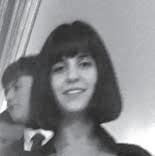

¿Cuál es el punto máximo de deformación antes de que una mesa de IKEA se rompa debido al peso de una amistad que se desmorona? Es casi la hora del postre y los trozos del aglomerado de madera están a punto de agrietarse. Esta es la historia cubista de dos amigos, una mesa perdida y su reemplazo.

Paisaia berreraikitzeko ahalegin bat da hau. Kantauri itsasoaren ertzetan dagoen atsedenleku eta tiro-zelai bat, 1937 eta 1943 artean frankismoaren kontzentrazio-eremu izandakoa. Ikuslearekin behatzailearen begirada partekatuz, filmak espazio horri esanahi berri bat eman nahi dio, bere esanahi politikoa itzuliz. Baina helburua ez da ikusezina den hori erakustea, ezta filmatzea ere, baizik eta gaur egun existitzen den horretan falta dena ikusaraztea.

This is an attempt to rebuild a landscape. Between 1937 and 1943 in Asturias, during Franco’s regime, a recreational area and a target shooting range housed a concentration camp. Sharing a pensive observational gaze with the viewer, this essay attempts to resignify the space and revive its political meaning. It is not a question of showing (or filming) the invisible, but rather revealing what is absent from what exists today.
Este es el intento de reconstruir un paisaje: un área recreativa y un campo de tiro a orillas del mar Cantábrico que, entre 1937 y 1943, albergaron un campo de concentración del franquismo. Compartiendo una mirada observacional con el espectador, esta pieza pretende resignificar ese espacio, devolverle su significado político. Pero no se trata de mostrar –ni de filmar– lo invisible, sino de hacer ver en lo que hoy existe aquello que falta.

director · screenplay Jan Bujnowski cinematography Kasper Lorek editing Olga Bejm, Stanisław Frankowski sound Bogdan Klat art Weronika Lipka music Jan Bujnowski, Bogdan Klat animation Sławosz Tejkowski cast Sebastian Pawlak, Jadwiga Jankowska-Cieślak, Waldemar Czyszak, Danuta Borsuk
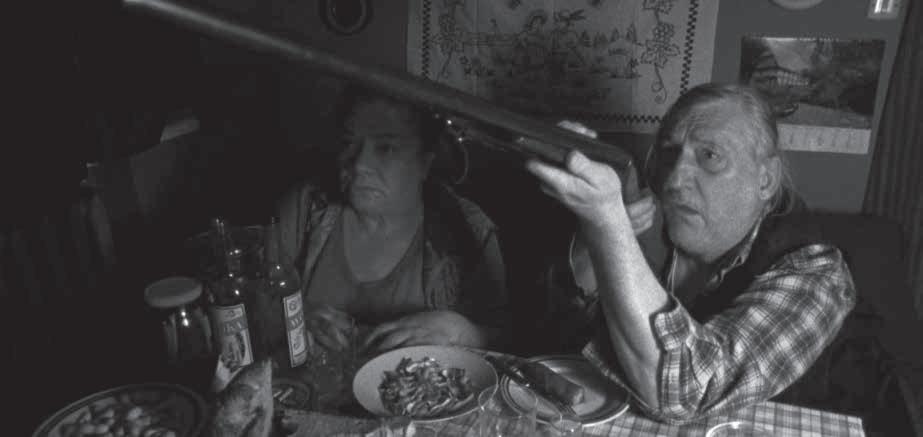
production · distribution National Film School in Łódź (Poland) @ janbujnowski1@gmail.com
Iritzi Publikoko Ikerketa Institutuak (OPOB) 90eko hamarkadan egindako ikerlanen arabera, poloniarren % 95 inguruk fededun gisa identifikatzen du bere burua. Aldi berean, langabezia-tasak marka guztiak hautsi zituen. Krisi garaian, jendeak espiritualtasuna bilatzen duenean, itxuraz ezinezkoak diren gertaerak posible bihurtzen dira.
According to researches made throughout 1990s by the Institute for Public Opinion Research (OPOB), approximately 95 % of Poles identified themselves as believers. At the same time, unemployment rates reached record values. In times of crisis, when people sought spirituality, seemingly impossible events are possible.
Según las investigaciones realizadas durante la década de 1990 por el Instituto de Estudios de Opinión Pública (OPOB), aproximadamente el 95% de los polacos se reconocían como creyentes. Al mismo tiempo, las tasas de desempleo alcanzaron valores récord. En tiempos de crisis, cuando la gente busca la espiritualidad, los acontecimientos aparentemente imposibles son posibles.
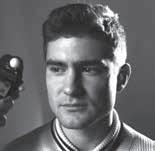
director · screenplay Stéphanie Roland cinematography Jorge Piquer Rodriguez editing Margaux Serre, Stéphanie Roland sound Ludivine Pelé
production Le Fresnoy - Studio national des arts contemporains @ steph.roland@gmail.com
Lan esperimental honek objektu espazial bat eta hura hilerri espazial batera nola erortzen den erakusten du. Emakume zientzialari batek objektu horrekiko atxikimendua eta leku misteriotsu hura dokumentatzen duten irudirik eza agertzen ditu. Zientzia-fikziozko alderantzizko bidaia baten moduan, saiakera honek benetako artxiboak eta fikziozkoak nahasten ditu eta gidatu egiten gaitu, jazarleak bagina bezala, leku ikusezin baten kanpoaldeetara.
This experimental work portrays a space object and its fall into the darkness of a space cemetery. A woman scientist reveals her attachment to this object and the absence of images documenting this mysterious place. As a reverse sci-fi journey, this work mixes real and fictional archives to guide us, like a stalker, to the outskirts of an invisible place.

Esta obra experimental retrata un objeto espacial y su caída en la negrura de un cementerio espacial. Una científica revela su apego a este objeto y la ausencia de imágenes que documenten este misterioso lugar. Como un viaje de ciencia ficción a la inversa, este trabajo mezcla archivos reales y ficticios para guiarnos, como un acosador, a las afueras de un lugar invisible.

director · screenplay · art · editing Txuspo Poyo cinematography Juantxu Beloki sound Javier Álvarez music Javier Quislant cast Virginia Morant, Maral Kekejian, Ettore Siniscalchi production Academia de España en Roma @ txuspo@hotmail.com

Balea baten hezurdura —Nazareno ikastetxeko kabineteko pieza esanguratsuenetako bat— daraman furgoi bat martxan jartzen da, ikastetxeko eraikina luxuzko hotel bat egiteko saldua izan ondoren. Furgoia Erromako leku enblematikoetatik igarotzen da eta horiek ere, ikastetxea bezala, lekualdatu eta esanahiz hustu dira, hiriko turismoak berak sortutako historia garbitzeko eragiketa espekulatibo batean.
A wagon loaded with the skeleton of a whale — one of the most significant pieces of the Nazarene school cabinet, leaves after the school building was sold to make a luxury hotel. The van crosses those emblematic places of Rome, which, like the school itself, have been displaced and emptied of meaning in a speculative operation to clean up the history generated by the city’s own tourism.
Un furgón cargado con el esqueleto de una ballena —una de las piezas más significativas del gabinete del colegio Nazareno— parte después de que el inmueble del colegio se vendiera para hacer un hotel de lujo. El furgón atraviesa aquellos lugares emblemáticos de Roma que, como al propio colegio, han sido desplazados y vaciados de significado en una operación especulativa de limpieza de la historia generada por el propio turismo de la ciudad.

director Ainhoa Olaso, Enara Garcia screenplay Ainhoa Olaso cinematography Andrea Martínez editing Imanol Muro sound Andrea Saenz Pereiro art Ane Cerrato cast Ane Sagüés Abad, Miren Gaztañaga, Aroa Blanco, Mila Goikoetxea production Ainhoa Olaso, Enara Garcia distribution Kimuak - Esther Cabero @ kimuak@filmotecavasca.com
Matixa, 22 urteko gaztea gurasoen etxean bizi da. Logela eta egonkortasuna hankaz gora jarrita, egoera lehertu egiten zaio. Familiatik kanpo bilatzen du babesa, lagun duen Leirek lagunduta. Amarengandik askatzeak libreago egingo duela erabakita, etxetik alde joaten da.
Matixa, 22, lives with her parents. Her bedroom and her stability are in disarray: the situation is explosive. Helped by her friend Leire, she looks for support outside the family. Convinced that cutting ties with her mother will make her freer, she decides to leave home.
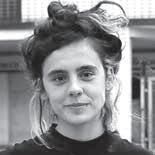

Matixa, de 22 años, vive en casa de sus padres. Su dormitorio y su estabilidad están “patas arriba”. La situación es explosiva. La joven busca apoyo fuera de la familia y es su amiga Leire quien le ayuda. Convencida de que liberarse de su madre la hará más libre, opta por irse de casa.

cast Sam Zeitlin, Julia Fossi, Dina Serra, Clara Sans, Lily Roberts, Quique Muro, Gloria Sirvent, Julia Mascort, Marcel Borràs, Olalla Escribano production Nica Fazio distribution Gerard Vidal - ESCAC Films @ gerard.vidal@escac.es
Eguzki argirik ikusten ez duten nerabe batzuek bidaia bat egiten dute Balear Uharteetara eguzkiaren eta beroaren bila. Xurgatu egin beharko dute eta edukiontzi gisa jokatu, beren sorterria den Erresuma ilunera eramateko.
Sun starved teenagers take on a dreamy trip to the Balearic Islands in the pursuit of light and warmth. They must absorb it and be a vessel in order to transport it back to their heavy clouded Kingdom.

Adolescentes ávidos de sol se embarcan en un viaje a las Islas Baleares en busca de luz y calor. Deberán absorberlo para poder llevárselo de vuelta a su sombrío Reino natal.

Misio heroiko batetik itzultzen ari dela, Cassi uharte misteriotsu batean harrapatuta geratzen da. Eremita xelebre bat ezagutzen du eta biak martxan jartzen dira itsasontzi berri bat bilatzeko. Uhartearen sakonera aldakorrek behartu egiten dute Cassi bere bilaketa berriz ebaluatzera; bien bitartean, eremitak bere iraganeko norbaiti aurre egin beharko dio.

On her way back from a heroic mission, Cassi gets stranded on a mysterious island. She meets an eccentric hermit, and they set off to find her a new boat. The erratic depths of the island force Cassi to reevaluate her quest, while the hermit must face someone from his past.
De regreso de una misión heroica, Cassi queda varada en una isla misteriosa. Allí conoce a un excéntrico ermitaño y se ponen en marcha para encontrarle un nuevo barco. Pero las imprevisibles profundidades de la isla obligan a Cassi a replantearse su búsqueda, mientras que el ermitaño tendrá que enfrentarse a alguien de su pasado.

director · screenplay · editing · animation Maria Nitek sound Lucyna Wielopolska music Antonina Nowacka, Bogumila Nowacka production National Film School in Łódź (Poland) distribution KFF Sales & Distribution @ marta.swiatek@kff.com.pl
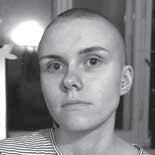

Ezerezak eztanda egiten du eta zerbait ateratzen da bere baitatik. Masa ilun eta mundruneztatu batetik izakiak ateratzen dira begiztan, mugimentu errepikakorretan: ez dute generorik eta bakarrik daude. Dena aldatzen da haietako batek “zerbait” aurkitzen duenean. Bere baitatik ateratako bola gorri bat da. Berehala, bola handitzen hasten da, forma aldatzen du eta izaki guztiak hipnotizatzen hasten da.
Nothingness bursts, and lets out something. From a dark, tarry mass beings emerge genderless, looped and alone, in repetitive aimless motions. Everything changes when one of them discovers “something”. It is a red ball taken from within itself. Immediately, the ball starts getting bigger, shifting its shape and hypnotising all of the beings.
Estalla la nada y desprende algo. De una masa oscura y alquitranada surgen seres asexuados, manera repetitiva y sin rumbo que se mueven de manera repetitiva y como sin rumbo. Todo cambia cuando uno de ellos descubre “algo”. Se trata de una bola roja que saca de su interior. Inmediatamente, la bola comienza a hacerse más grande, cambia de forma y empieza a hipnotizar a los seres.
1966. Ipar Euskal Herriko Bizkarsoroko herrixkan, lau gaztek hitz batzuk aurkitu dituzte mendian lurperatuta. Euskarazko hitz zaharrak. Herrian, gero eta gutiago mintzatzen da hizkuntza hori. Gazteak frantsesez ari dira. Michellek 21 urte ditu, eta ez ditu ulertzen. Bere familian aspaldi ez da hizkuntza hori hitz egiten.

1966, in the French Basque Country. In the small village of Bizkarsoro, four young girls find Basque words buried in the woods. Michelle is 21 and doesn’t understand them. The language used on these scraps of paper is long lost in his family.
1966. En el pequeño pueblo de Bizkarsoro, en el País Vasco francés, cuatro jóvenes encuentran algunos pedazos de papel enterrados en un bosque. Estos tienen viejas palabras escritas en vasco, pero Michelle tiene 21 años y no las entiende. En su familia hace tiempo que no se habla esa lengua.

Lur idor batean negutegi bakarti bat dago, lau biztanlerekin. Handik gertu dagoen laku batetik gizon misteriotsu bat atera da eta motor gainean doa bizidunen arimak ehizatzera. Negutegiko neska batek —harrapatu ez duen bakarrak— arimen ehiztariari jarraitzen dio korridorez eta hondakinez betetako erreinu ezkutu bateraino. Azkenean, bere etsaiaren gordeleku sekretura iristen denean, ulertzen du den-dena zeremonia alkimiko baten parte zela, eta berak jarri behar diola amaiera.

In a barren land there is a lone greenhouse with four inhabitants. From a nearby lake a mysterious man emerges and goes on a motorbike hunt for living souls. A girl from the greenhouse, the only one uncaptured, follows the soul hunter into a hidden realm of hallways and ruins. When she finally reaches her enemy’s secret lair, she realizes that it was all part of an alchemical ceremony that she herself has to bring to its conclusion.
En una tierra estéril existe un invernadero con cuatro habitantes. Un hombre misterioso emerge de un lago cercano para, en su motocicleta, intentar cazar cualquier alma viva. Una chica del invernadero —la única que no ha sido capturada todavía— sigue a este cazador hasta un enigmático reino hecho de callejones y ruinas. Cuando finalmente llega a la guarida secreta de su enemigo, se da cuenta de que todo formaba parte de una ceremonia alquímica que ella misma tiene que concluir.

director Paula Iglesias, Marta Gómez screenplay Paula Iglesias, Marta Gómez, Amaia Pérez Orozco, Silvia Piris Lekuona cinematography Lara Vilanova editing Paula Iglesias sound Tito Blázquez art Amaia Santamaría music Ainara LeGardon cast Ima Peiro, Gladys Carrasco production Al Borde Films distribution Agencia Freak @ info@albordefilms.com
Bi emakumek zaintzak hondarretan dauzkan mundu bati eusten diote. Gladys, bere betiko konfinamenduan, barneko emakume gisa lan egiten duen etxean. Ima, beti itxaroten itsaso aurrean beste ontzi batek bere sareak hautsi arte. Lanak diren espazioak, etxeak diren lanak eta beti familiak ez diren etxeak. Bere bizipenen oroitzapenak galdera bateraino garamatzan zentzumen-kontakizun batean elkartzen dira: noren esku dago egoera aldatzea?
Two women take the weight of a world where care is in ruins. Gladys, from her everlasting confinement in the house where she works as a live-in servant. Ima, in her unending wait in front of the sea for the next ship to break its nets. Spaces that are also work, works that are houses and houses that are not always homes. The memories of their experiences are intertwined in a sensory story that leads us to the question: In whose hands is it that the situation changes?
Dos mujeres sostienen un mundo en el que los cuidados estan en ruinas. Gladys, desde su eterno confinamiento en la casa donde trabaja como interna, e Ima, en eterna espera frente al mar hasta que otro barco rompa sus redes. Espacios que son trabajo, trabajos que son casas y casas que no siempre son hogares. Los recuerdos de sus vivencias se entrelazan en un relato sensorial que nos conduce hasta una pregunta: ¿En manos de quién está que la situación cambie?




director Tanmay Chowdhary, Tanvi Chowdhary screenplay Tanvi Chowdhary cinematography · editing Tanmay Chowdhary sound Hindole Chakraborty music Rohan Prasanna cast Madhyama Halder, Satakshi Nanny production Peru Films @ tanmay0601@gmail.com
Satakshi eta Madhu elkarrekin joan ziren eskolara; hainbat urte dira ez dutela elkar ikusi eta Kalkutako Durga Puja jaialdiko gau batean topo egiten dute. Gauak aurrera egin ahala, elkarrekiko sentimenduak dituztela jakingo dugu, baina ez dira elkarri adierazteko gai. Beren sekretuak jasota daude: Madhuk eskola garaitako koaderno batean idatziz jaso zuen, eta Satakshik Madhuri gau hartatik sei urte igaro zirenean postal bat bidali zion.

Satakshi and Madhu, who went to school together, reunite after years of being apart on a night of festivities during the Durga Pujo in Kolkata. As the night progresses, we find out that both of them have feelings for each other, but they are not able to express it. Their secrets are preserved in a notebook entry by Madhu from her school days, and in a postcard that Satakshi sends Madhu six years from this night.
Satakshi y Madhu, que fueron juntas al colegio, se reencuentran tras años de separación en una noche de fiesta durante el Durga Pujo en Calcuta. A medida que avanza la noche, descubrimos que cada una siente algo por la otra, pero no son capaces de expresarlo. Sus secretos se conservan en una anotación del cuaderno de Madhu de cuando iba a la escuela, y en una postal que Satakshi le envía a Madhu seis años después de esa noche.


Behatu gabeko emozio ugari ditugu. “I”ari beldurra ematen dio bota ez den kafe kikara batengatik besteek hura zalantzan jartzeak. Film osoa emozio horren behaketaren ingurukoa da. Hazten ari diren lau gauza hutsal irudikatuz, eta sortzeko arrazoiaren bilaketaren bidez, “I”ak, azkenean, emozio horren sorrera ikustea lortzen du.

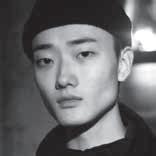
We have many emotions that have not been observed. “I” has a feeling of fear of being doubted by others because of a cup of coffee that has not been thrown away. The whole film revolves around the observation of this emotion. By depicting four trivial things that are growing up, and tracing the reasons for its formation, “I” finally sees the appearance of this emotion.
Tenemos muchas emociones que no han sido examinadas con atención. “I” teme que los demás duden de él al ver una taza de café que no se ha tirado a la basura. Toda la película gira en torno a la observación de esta emoción. Al reflexionar sobre cuatro situaciones triviales, "I" logra identificar el origen de esa emoción.
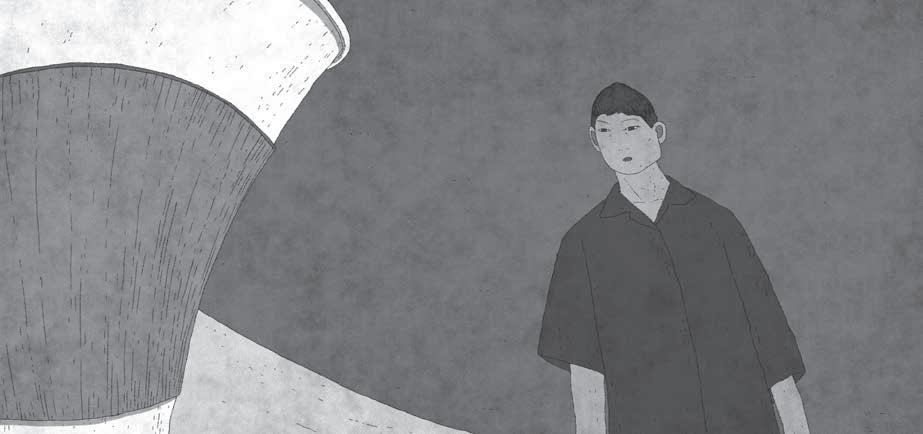
Bosnia - Spain - United Kingdom, 2022 | 17 min | Fiction
director · screenplay · art Anna Fernandez de Paco cinematography Pablo Rojo editing Sajra Subašić sound Nenad Kovačević cast Marko Tomaš, Marija Novaković, Vučka production Anna Fernandez De Paco, Emina Ganić, Abbas NokhastehOpenvizor @ anna@eyecollective.net
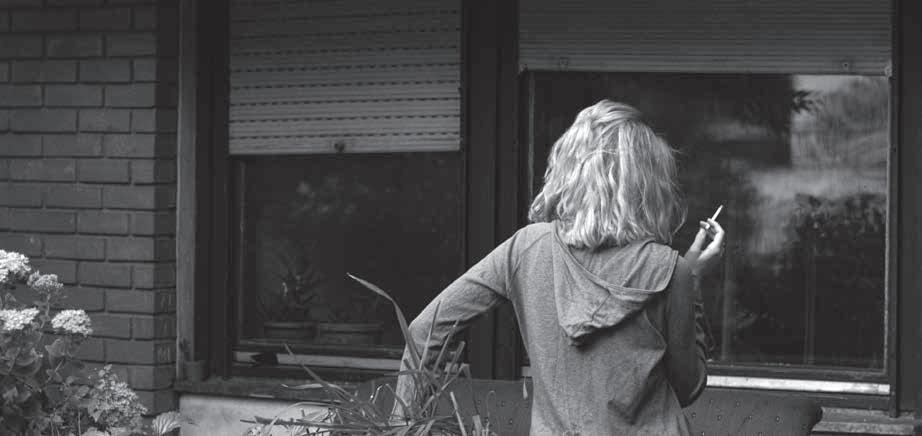
Marko eta Maja pisuz aldatzen ari dira Sarajevon eta inoiz ikusten ez ditugu solasaldien arteko isiltasuna beren maitasunaren hondarrak dira. Majaren depresioak Markoren borroka poesia bihurtzen du, eta irratian Markoren poemak entzuten dira, beraien arteko komunikaziorako azken zubi bihurtuz.

Marko and Maja are moving flats in Sarajevo. Maja’s depression turns Marko’s struggle into poetry, and played on the radio, Marko’s poems become the last bridge of communication between them.
Marko y Maja se están mudando de piso en Sarajevo. La depresión de Maja provoca que la lucha interna de Marko se transforme en poesía. Transmitidos en la radio, los poemas de Marko se convierten en el último puente de comunicación entre ellos.
Dokumentalaren eta ikusizko kontakizunaren arteko espazioa. Artxiboko materiala eta irudi berriak tartekatuz, film honek ikuspegi paregabea eskaintzen digu Ermandade Zuri Unibertsalaren bide baketsu eta sublimatuei buruz.
Liminal space between documentary and visual tale. Alternating archival film material with new footage, this film grants a unique insight into the peaceful and sublime ways of the Universal White Brotherhood.
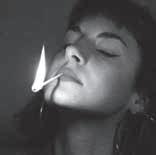
En el espacio liminar entre documental y relato visual, alternando material de archivo y metraje nuevo, esta película ofrece una visión única de los pacíficos y sublimes caminos de la Hermandad Blanca Universal.

Uzkurtzen denean, hedatu egiten da. Flotatzen du eta hondoratu egiten da. Banantzen du, baina lotzen du. Haiek ikusten ari naizela uste dudanean, haiek dira ni ikusten nautenak. Animaziozko errima bat, behaketa, grabaketa eta esperimentazio egun asko elkartzen dituena.
When it shrinks, it expands. It floats and it sinks. It separates but connects. When I think I’m watching them, they’re actually watching me. A animation rhyme that weaves together the many days of observing, recording, and experimenting.
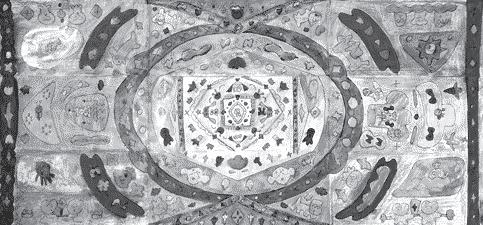
Cuando se encoge, se expande. Flota y se hunde. Se separa, pero se conecta. Cuando creo que los estoy observando, en realidad me están observando a mí. Una rima de animación que entreteje muchos días de observación, grabación y experimentación.
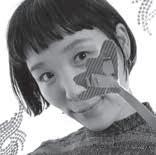
Holokaustotik bizirik atera zen pertsona batek bizitza salbatu zion txerriari idatzitako gutuna irakurtzen du. Neskatxa batek bere testigantza entzuten du eskolan eta amets bitxi batean murgiltzen da, non identitateari, trauma kolektiboari eta giza izaeraren muturreko portaerei buruzko galderei aurre egin behar baitie.
A Holocaust survivor reads a letter he wrote to the pig who saved his life. A young schoolgirl hears his testimony in class and sinks into a twisted dream where she confronts questions of identity, collective trauma, and the extremes of human nature.
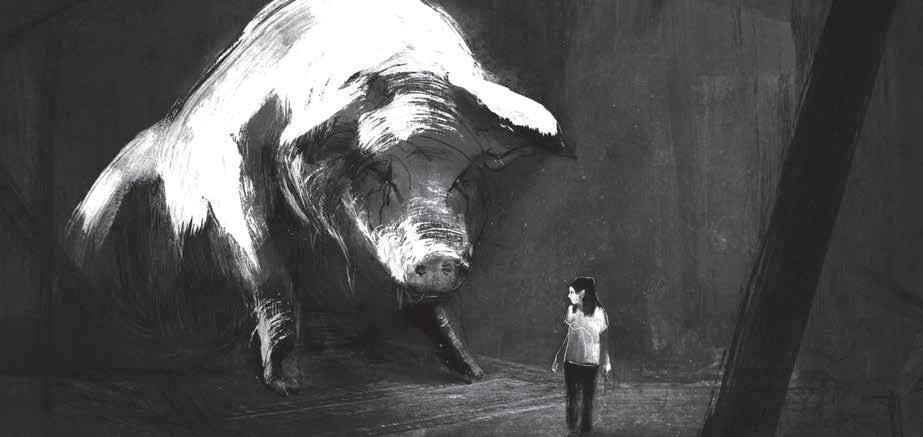
Un superviviente del Holocausto lee una carta que escribió al cerdo que le salvó la vida. Una joven estudiante escucha su testimonio en clase y se sumerge en un retorcido sueño en el que se enfrenta a cuestiones de identidad, traumas colectivos y los extremos de la naturaleza humana.

director · screenplay Mara Tamkovich cinematography Krzysztof Trela editing Katarzyna Leśniak sound Joanna Napieralska, Jerzy Murawski art Martyna Solecka music Martyna Kacprowicz cast Aliaksandra Vaitsekhovich, Palina Chabatarova, Andrei Novik production Wajda Studio distribution Wajda Studio
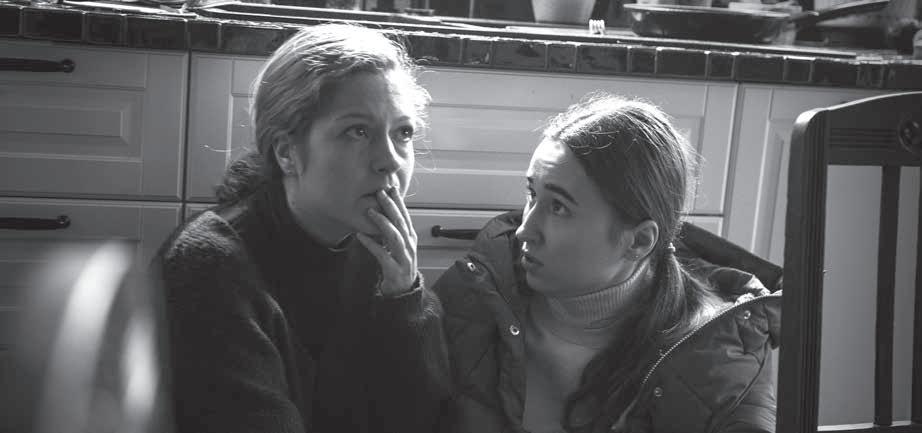
@ jhan@wajdaschool.pl, mara.tamkovich@gmail.com
Poliziak bortizki erreprimitu du manifestaldi baketsu bat Minsken. Bielorrusiako Belsat TV telebista kate independenteko bi emakume kazetari dira gertaerak zuzenean ematen ari diren bakarrak. Poliziaren drone batek aurkitzen dituenean, erabaki dramatiko bati egin beharko diote aurre. Katerina Bakhvalova eta Daria Chultsovaren benetako istorioan oinarritutako drama bat da. 2020an kolonia penal batean bete behar zuten bi urteko zigorra jarri zieten eta, 2022ko uztailean, Katerinaren epaia zortzi urtera luzatu zuten.
A peaceful demonstration in Minsk is brutally put down by the police. Two female journalists from an independent Belarusian TV station are the only ones broadcasting the events live. When they are tracked down by a police drone, they face a dramatic choice. A drama inspired by the true story of Katerina Bakhvalova and Daria Chultsova, two Belsat TV journalists who were sentenced to two years in a penal colony in 2020. In July 2022 Katerina’s sentence was extended to eight years.
Una manifestación pacífica en Minsk es brutalmente reprimida por la policía. Dos mujeres periodistas de una cadena de televisión independiente bielorrusa son las únicas que transmiten los acontecimientos en directo. Cuando son localizadas por un dron de la policía, se enfrentan a una terrible decisión. Un drama inspirado en la historia real de Katerina Bakhvalova y Daria Chultsova, dos periodistas de Belsat TV que fueron condenadas a dos años en una colonia penal en 2020. En julio de 2022 la condena de Katerina se amplió a ocho años.

Detroiteko paisaia postindustrialaren aurrean, “bisitariak” zerutik iristen dira jakintza bila. Zibilizazio baten aztarnak baino ez dituzte aurkitzen, eta transmisio kodetu bat, hiriko irudien eta soinuen artean.
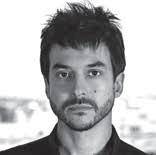
Against the post-industrial landscape of Detroit, “visitors” arrive from the sky in search of knowledge. They find nothing but traces of civilization, and a coded transmission between the images and sounds of the city.
A la búsqueda de conocimiento, al paisaje postindustrial de Detroit llegan "visitantes" desde el cielo. Sin embargo, no encuentran más que rastros de civilización y una transmisión codificada entre las imágenes y los sonidos de la ciudad.

director Kim Torres screenplay Kim Torres, Ana Luisa Mora cinematography Mel Nocetti editing Mauricio Esquivel sound Gabriela Rivas Feoli art Mauricio Esquivel music Rogelio The IIIrd cast Melissa C. Pérez, Valentina Chinchilla Pérez, Arturo Gael Chinchilla Pérez production Alejandra Vargas Carballo distribution Premium Films @ ale@noche-negra.com
Ale, hamazazpi urteko neska gazte bat da, eta Costa Ricako landa eremu batean bizi da bere bi neba-arreba txikiekin. Isiltasunak, erresuminak eta alaitasun une laburrek elikatutako paisaien bitartez, Ale bere anaiak egia larritik babesten saiatuko da: amak abandonatu egin ditu.
Ale, a 17-year-old woman, lives in rural Costa Rica with her two younger siblings. Through landscapes fuelled by silence, resentment and brief moments of joy, Ale will try to protect them from the seething truth, their mother has left them and is not coming back.

Ale, una joven de diecisiete años, vive en una zona rural de Costa Rica con sus dos hermanos pequeños. A través de paisajes imbuidos de silencios, resentimientos y breves momentos de alegría, Ale intentará protegerlos de la angustiosa verdad: su madre los ha abandonado.

production Ana Vijdea, Docnomads, Remora Films distribution Ana Vijdea
@ anavijdea@gmail.com
Maria, 48 urteko emakume bat, bi munduren artean harrapatuta dago: bata aszetismoak gidatzen du eta, bestea, bere bi semeekiko harremana berreskuratzeko eta haiekin egoteko beharrak. Kontu handiz konposatutako planoen eta soinu minimalisten bidez, bere eguneroko bizitza, pentsamenduak eta emozioak antzeman ditzakegu.
Maria, a 48-year-old woman, is trapped between two worlds: one guided by asceticism, the other fuelled by the need to reconnect and be with her two sons. Through carefully composed shots and minimalistic sound, we glimpse into her everyday life, thoughts, and emotions.
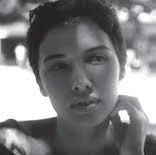
María es una mujer de 48 años que está atrapada entre dos mundos: uno guiado por el ascetismo y otro alimentado por la necesidad de volver a conectar y estar con sus dos hijos. A través de planos cuidadosamente compuestos y un sonido minimalista, nos adentramos en su vida cotidiana, en sus pensamientos y en sus emociones.
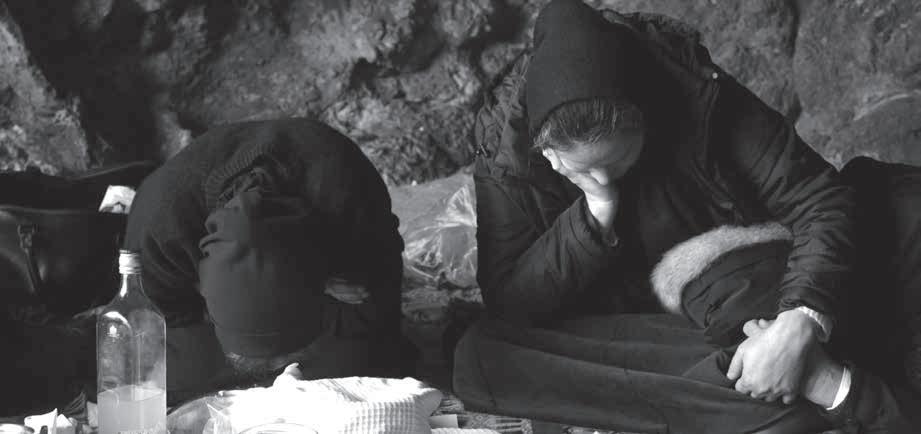
director · screenplay · art Marta Magnuska editing Ewa Golis, Marta Magnuska sound Michał Fojcik MPSE animation Marta Magnuska, Mārtiņš Dūmiņš, Kristīne Zvirbule production · distribution ANIMOON @ glowinska@animoon.pl

Emakumea eta gizona gela batean daude, geko bat dago terrarium batean, hainbat euli lanpara baten inguruan hegan ari dira. Pixkanaka, bere jardueren eta behatutako elementuen arteko dependentzia eta analogia gehiago ezagutzen ditugu, beraien unibertsoen erritmoa azkartu ahala. Badirudi erakusten den mikrokosmosak interakzio erritmiko bat duela eta ordena kosmikoren baten baitakoa dela.
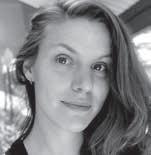
A woman and a man are in a room, a gecko sits in a terrarium, several flies are circling a lamp. Gradually we find more and more dependencies and analogies between their activities and observed elements as the rhythm of their universes accelerates. The microcosms shown seem to interact rhythmically and belong to some cosmic order.
Una mujer y un hombre se encuentran en una habitación. Una salamanquesa permanece en su terrario. Varias moscas dan vueltas alrededor de una bombilla. A medida que pasa el tiempo y se acelera el ritmo de sus universos, vamos observando más dependencias y analogías entre sus actividades. Cada microcosmos parece interactuar rítmicamente y pertenecer a algún tipo de orden cósmico.
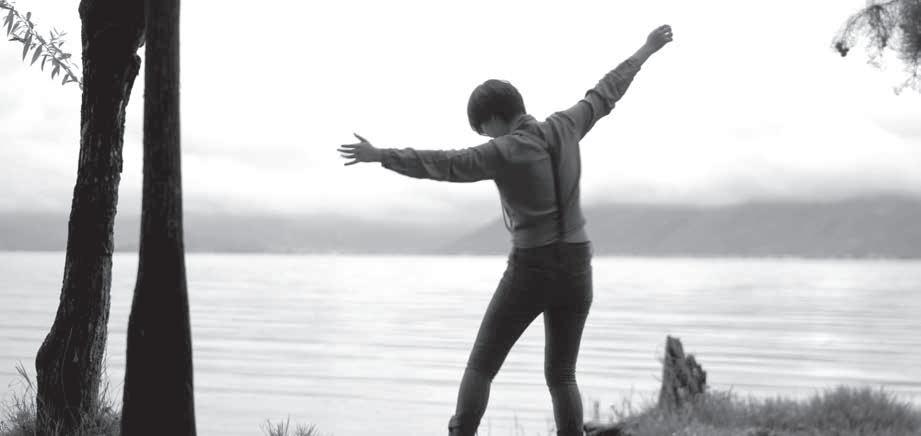
Hiru neska txinatar gazte “hitzordu” berezi batean daude beren bikotekide artifizialki adimendunekin, eta era horretako harreman intimoen bakantasunaz eta mugez gogoeta egiten dute. Lan honek lotura horien aberastasuna jasotzen du, galdera filosofikoetatik hasi eta une intimoetaraino, maitale artifizialki adimendun horiek benetan ematen duten segurtasun eta konpainia sentsaziotik igaroz.
During their special “dates” with their artificially intelligent companions, three young Chinese women reflect on the uniqueness and boundaries of such intimate relationships. This work captures the richness of these bonds, from philosophical questions to intimate moments to the real sense of security and companionship afforded by these artificially intelligent lovers.
Durante sus “citas” especiales con sus compañeros de inteligencia artificial, tres jóvenes chinas reflexionan sobre la singularidad y los límites de estas relaciones íntimas. Esta obra capta la riqueza de estos vínculos, desde cuestiones filosóficas hasta momentos íntimos, pasando por la sensación real de seguridad y compañía que proporcionan estos amantes de inteligencia artificial.

Hauek dira labanetatik eta odolez zikindutako trapuetatik gertuago sentitzen den pertsona baten haurtzaroko soinu eta irudiak; eta ez hainbeste haurrak jolaseak imajinatzean haurtzaroari egozten zaion araztasunaren hurbil dagoen batenak. Haurtzaroaz hitz egitea, ordea, ez da soilik odolaz hitz egitea, baizik eta baita amaz eta haren haragiaren usainez hitz egitea ere.
Sounds and images of the childhood of someone who feels closer to blood-stained knives and rags than to the purity with which childhood is usually conceived when imagining children playing with each other. However, to speak of her childhood is not just to speak of blood, but of her mother and the smells of her flesh.
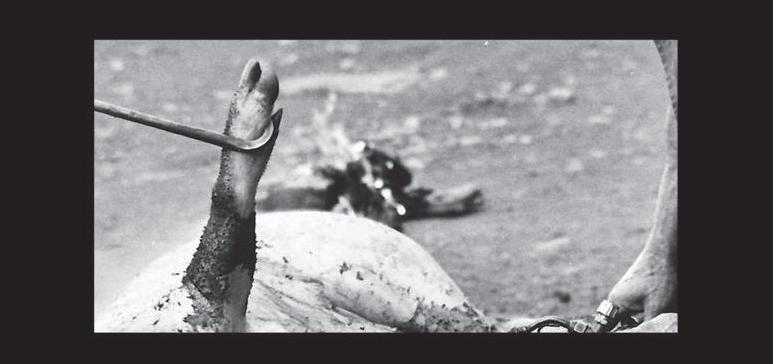
Estos son los sonidos y las imágenes de la infancia de alguien que se siente más cerca de los cuchillos y de los trapos manchados de sangre, que de la pureza con la que se suele concebir la niñez cuando se imagina a unos niños jugando. Pero hablar de la infancia no es solo hablar de la sangre, sino de la madre y de los olores de su carne.

Zinemagile batek 2020ko otsailean gurasoekin Singapurren egindako txango paregabe bat dakar gogora. Bizitzari, heriotzari eta uharte txiki honetako paisaia aldakorrari buruzko behaketa bat da.
A filmmaker recalls a unique outing with his parents in Singapore on February 2020. A contemplation on life, death and the ever-changing landscape on this small island.
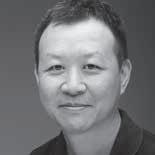
Un cineasta recuerda una excursión única junto a sus padres a Singapur en febrero de 2020. Una contemplación sobre la vida, la muerte y el paisaje siempre cambiante de esa pequeña isla.

Eliasek 17 urte ditu eta aita bat-batean galdu du. Bai institutuan, bai etxean, ama eta lagunak bere erreakzioaren zain daude, baina ez da iristen. Eliasek bere bizitzarekin jarraitzen du ezer gertatu izan ez balitz bezala.
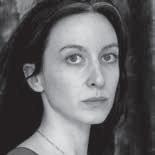
Elias, 17 years old, suddenly loses his father. In high school as at home, his mother and friends await his reaction which does not arrive. Elias goes on with his life as if nothing had happened.
Elías, un joven de 17 años, pierde repentinamente a su padre. Tanto en el instituto como en casa, su madre y sus amigos esperan de él una reacción que no llega. Elías continúa con su vida como si no hubiera sucedido nada.
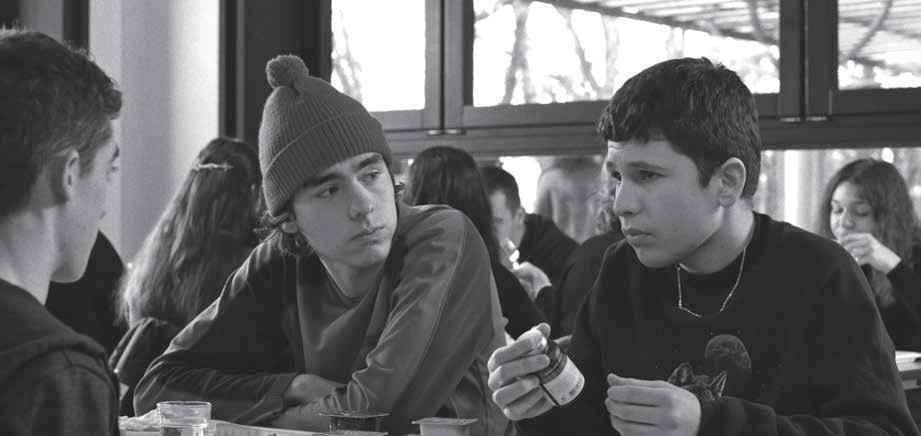
director · screenplay Jérémy Depuydt, Giuseppe Accardo editing Jérémy Depuydt sound Laurent Martin (Empire Digital) art Giuseppe Accardo, Jérémy Depuydt, Gustave Isheja, Yohan Fontaine, Zélie Elkihel music Laurent Cabrillat, David Gana (Hey!Music), I Fratelli Rimi


animation Pauline Defachelles, Vincent Detourb, Jérémy Depuydt, Judith Dessy, Patrick Alfred, Apolline Delporte, Elhadj I. Rousseau, Bianca Scali, Adriano Correia, Sara Antonio, Mélanie Cot, Gustave Isheja, José Hurtado Pita cast (voice-over) Chiara Calandrino, Pina Cesare Biondolillo, Maria Stellino, Marciello Rimi, Giacomo Risico, Giuseppe Randazzo
production Maxime Feyers - Next Days Films; Lucas Tothe - Punchline Cinema distribution Mathilde Brunet - Agence belge du court métrage @ info@agenceducourt.be
XIX. mende amaieran, Siziliako landazabaleko herrixka batean, Pina gazteak lurra leheneratzeko ahalmena du. Uzta bakoitzarekin, mafiak inolako lotsarik gabe arpilatzen du herria. Pinaren eta mafiako buruzagiaren arteko topaketak gosete batean murgilduko du herrixka, herrialde osoaren patua arriskuan jarriz.
At the end of the 19th century in a Sicilian countryside village, the young Pina holds the power to regenerate the land. With each harvest, the village is prey to shameless mafia looting. Pina’s encounter with the mafia chief will plunge the hamlet into an era of starvation, endangering the destiny of the whole country.
A finales del siglo XIX, en un pueblo de la campiña siciliana, la joven Pina tiene el poder de regenerar la tierra. Sin embargo, con cada cosecha, el pueblo se enfrenta al saqueo infame de la mafia. El encuentro de Pina con el jefe del hampa sumirá a la aldea en una época de hambruna, poniendo en peligro el destino de todo el país.

director · screenplay Mathis Raymond, Marguerite Thiam Donnadieu cinematography Julien Saez editing Mia Collins sound Frédéric de Ravignan art Lola Carriere music Cerrone cast Nailia Harzoune, Vassili Schneider, Clémence Boisnard, Khalil Ben Gharbia production Jeanne Breteau, Sarah Henochsberg - Ad Vitam Court @ advitamcourt@gmail.com
Ava eta Hélios, maitale diren lagunak, beren bilakaera izaten ari dira Paris zoragarrian. Festa batean, elkarrekiko duten obsesioak gehiegikerietara eta manipulaziora eramaten ditu.
Ava and Hélios, friends-in-love, evolve in a golden Paris. At a party, their obsession with each other drives them to excess and manipulation.

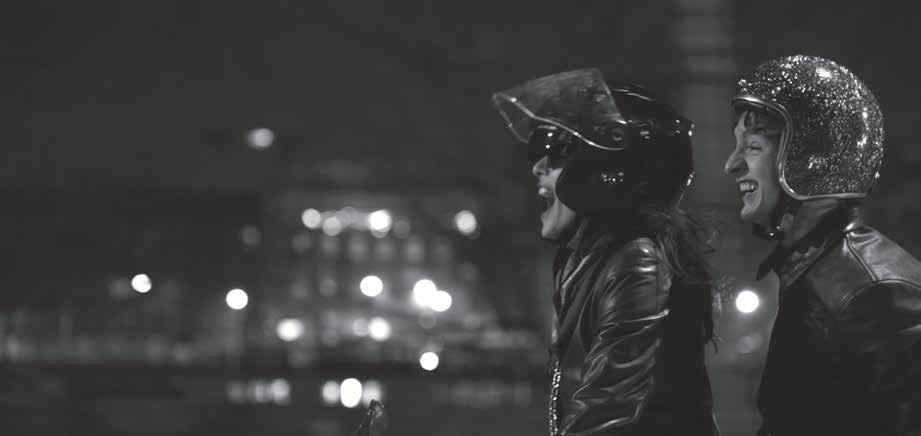
Ava y Hélios son amigos y amantes que viven en el glamuroso París. En una fiesta, su obsesión por el otro les lleva a excesos y a la manipulación.

Portugal, 2022 | 14 min | Fiction
director · screenplay · editing Francisco Valente cinematography Ana Mariz sound Miguel Coelho, António Porém Pires cast Maria Jorge, Marco Mendonça production Agosto Film @ francisco.eca.valente@gmail.com
Egun eder batean, bi ezezagunek lehenengo aldiz topo egiten dute. Hizketan hasi eta elkartzen ezagutzen ari direla, urrunean, badirudi mundua dardara batean dagoela.
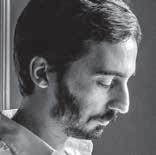
Two people meet for the first time in a park on a beautiful day. As they engage in conversation and get to know each other, the world from afar seems to tremble.
Dos personas se conocen en un día precioso. Mientras entablan conversación, el mundo exterior parece temblar.
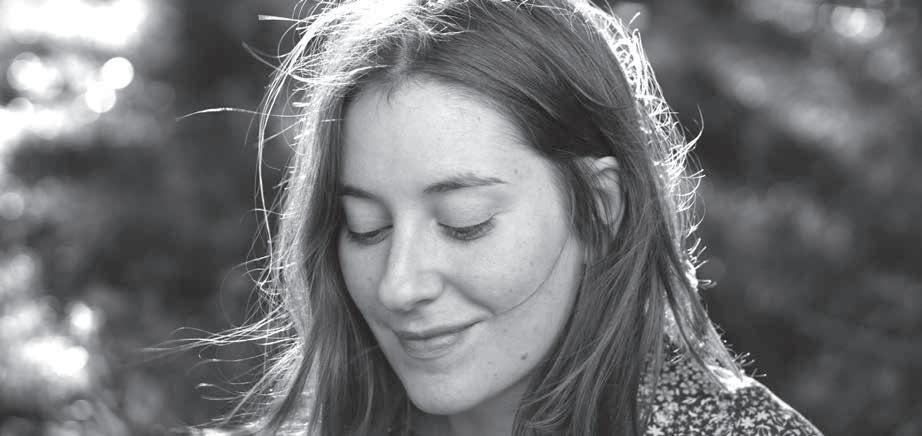
Oroitzapen bat —eta haren atzetik datorren desintegrazioa— berriz bizitzeko prozesua irudi asoziatibo batzuen bitartez. Bere irudien efektuaren bitartez, animazioak ikusleak egoera mental eta emozional hipnotiko batera eraman nahi ditu, memoriaren izaera anitza eta gure oroitzapenetara jaistearen poz atsegin eta iragankorra sentitu ditzaten.
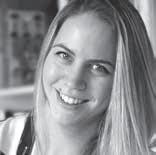
The process of reliving a memory – and the disintegration that follows, through a series of associative images. Through the effect of its images, the animation attempts to lead viewers into a hypnotic mental and emotional state, where they can experience the manifold character of memory, and the pleasant, yet ephemeral joys of descending into our recollections.
Este es el proceso de revivir un recuerdo —y su desintegración consiguiente— a través de una serie de imágenes asociativas. La animación trata de llevar al espectador a un estado mental y emocional hipnótico en el que pueda experimentar la variada naturaleza de la memoria a través de sus imágenes, y las agradables, aunque efímeras, alegrías de descender a nuestros recuerdos.

Puntadaz puntada, fotogramaz fotograma eta oroitzapenez oroitzapen, lan honek Heleny Guariba filosofo, irakasle eta antzerki-zuzendariaren istorioa ematen du ezagutzera. 1971n desagertu zen Brasilen izan zen diktaduraren ondorioz. Arpillerak ditu inspirazio-iturri, Txilen sortu zen ehun-artea, zeina Augusto Pinocheten erregimen militarraren izugarrikarien aurreko erantzun gisa sortu baitzen, hitzek kontatzerik ez zutena agerian jartzeko.
Stitch by stitch, frame by frame and memory by memory, this animated documentary unburies Heleny Guariba’s history, a Brazilian philosopher, theatre director and professor disappeared in 1971 under the dictatorship. It is inspired by the arpilleras, tapestries that emerged from the horrors of Pinochet regime in Chile as a unique form of political protest.

Puntada a puntada, fotograma a fotograma y recuerdo a recuerdo, este trabajo da a conocer la historia de Heleny Guariba, filósofa, profesora y directora de teatro desaparecida en 1971 a manos de la dictadura brasileña. Está inspirado en las arpilleras, arte textil popular que surgió en Chile en respuesta a los horrores del régimen militar de Augusto Pinochet, que desvelaban lo que las palabras no podían contar.

France - Portugal - Qatar, 2022 | 9 min | Animation
director · screenplay Sofia El Khyari cinematography Nadine Buss editing Philippe Baranzini sound Romane Millet music Widad Brocos, Khalil Epi animation Sofia El Khyari, Camille Gibut, Margaux Kuhn, Ala Nunu production Yves Bouveret @ yves.bouveret@orange.fr
Baso misteriotsu batean, amets nostalgiko batek emakume bat erakartzen du, tximeletei begira dagoenean.
In a mysterious forest, a woman is slowly lured into a nostalgic daydream as she observes butterflies.
En un misterioso bosque, una mujer se sumerge lentamente en una nostálgica ensoñación mientras observa mariposas.


Ming 19 urteko neska bakarti bat da, eta gaueko txandan egiten du lan denda batean. Egun batean, Udaberriko Jaialdirako gutxi falta denean, bere auzoko Ruik gonbidatu egiten du afari “berezi” batera, bere iragan ezkutua gogoraraziz.
19-year-old Ming is a loner who works the night shift at a convenience store. One day near the Spring Festival, her neighbor Rui invites her for a “special” dinner, which summons up her hidden past.
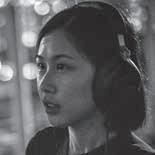
Ming es una joven solitaria de 19 años que trabaja en el turno de noche en una tienda de conveniencia. Un día, cerca de la Fiesta de la Primavera, su vecino Rui la invita a una cena “especial”, lo que le hace recordar su pasado oculto.
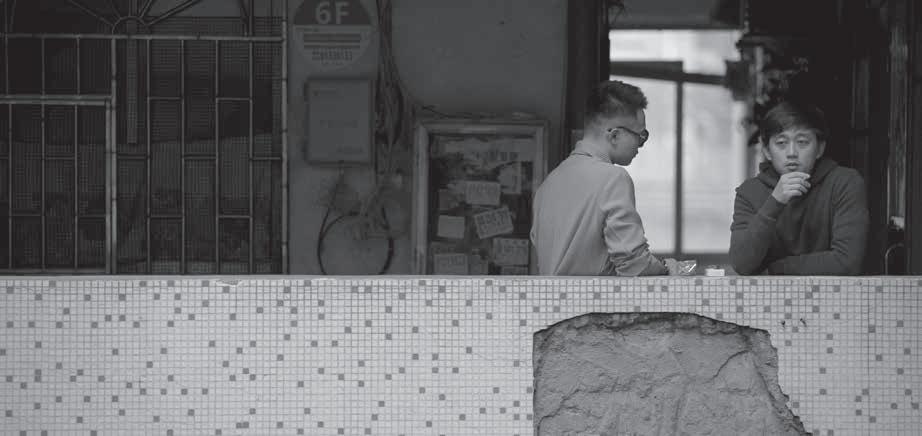
@ fernanda@pessoaproducoes.com
2021ean, ehunka mila pertsona kaleetara irten ziren Brasilen, pandemia betean, Bolsonaroren gobernuaren aurkako protesta egiteko. Joyce Wielanden 1973ko izen bereko filmean oinarrituz, film honek manifestaldi horiek erretratatzen ditu, arreta gizakien eskuetan jarriz, eta ez Wielanden oinetan. Super 8 mm-ko ektachromean egindako irudiek hainbat keinu erakusten dituzte, afektua, erresistentzia, babesa, poza edo errepresioa adieraziz.
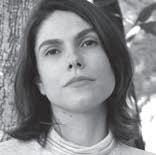
In 2021, hundreds of thousands of people took over the streets in Brazil, in the midst of a pandemic, to protest against the Bolsonaro government. Inspired by Joyce Wieland’s 1973 film of the same name, this film portrays these manifestations by focusing on the expressiveness of human hands rather than Wieland’s feet. Gestures of affection, resistance, protection, joy or repression are revealed in these images made in super 8mm ektachrome.
En 2021, cientos de miles de personas tomaron las calles en Brasil, en plena pandemia, para protestar contra el gobierno de Bolsonaro. Inspirada en la película homónima de Joyce Wieland de 1973, este documental experimental retrata estas manifestaciones centrándose en la expresividad de las manos humanas en lugar de los pies de Wieland. Con estas imágenes realizadas en super 8mm ektachrome se ponen de manifiesto gestos de afecto, resistencia, protección, alegría o represión.
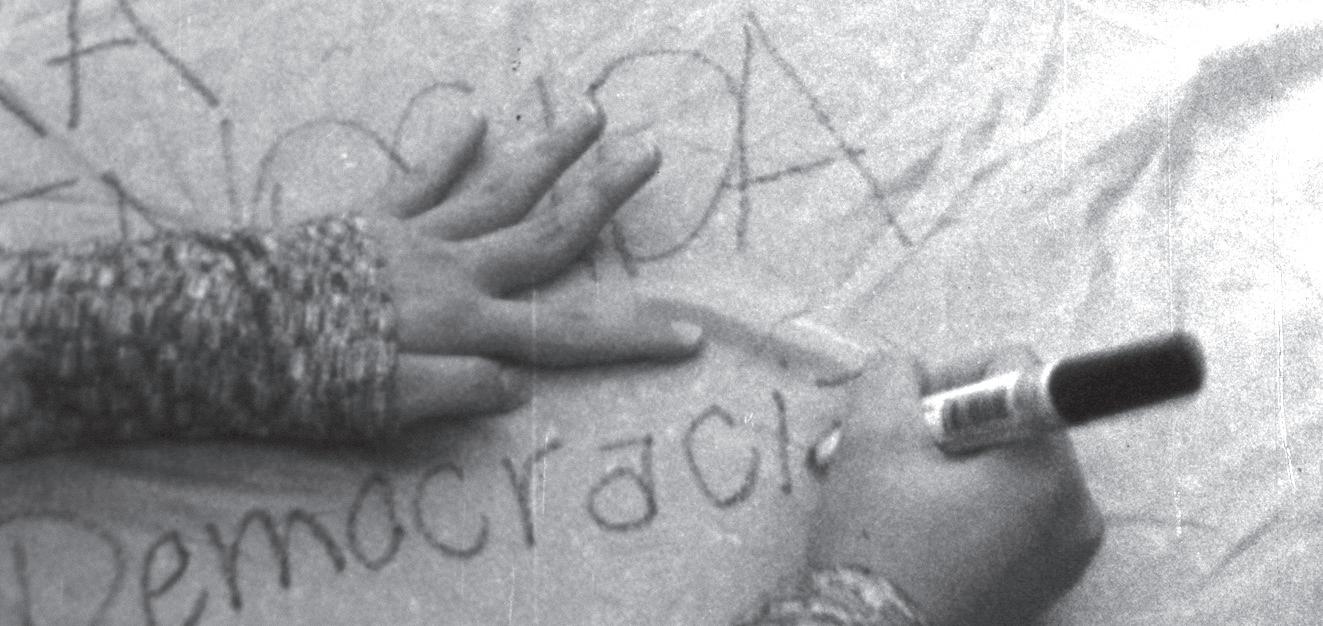
Bakytek 10 urte ditu eta aitarekin bizi da. Elkarrekin joaten dira bainuetxeetara eta elkarrekin bazkaltzen dute. Ez dute asko hitz egiten. Aita haurraren independentzia sustatzen saiatzen da eta, horregatik, gauetan aita ez da etxera etortzen. Bakytek, bere antsietateak ezkutatuz, bere eguneroko errutinarekin jarraitzen du. Ikastetxera joaten da, janaria prestatzen du… baina gauak, aita gabe, gero eta jasangaitzagoak dira.
10-year-old Bakyt lives with his father. They go to the baths together and eat together. Their relationship is not verbose, the father tries to bring up independence in the child. Thus, the father does not come home at night. Bakyt, hiding his anxieties, continues his daily routine. He goes to school, cooks for himself, but every night without his father it becomes harder and harder for him to endure.
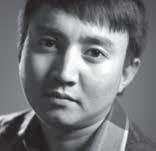
Bakyt, un niño de 10 años, vive con su padre. Acuden juntos a los baños públicos y también comparten las comidas, pero su relación no es excesivamente verbal. El padre trata de fomentar la independencia del niño y no vuelve a casa por la noche. Bakyt, ocultando sus ansiedades, continúa con su rutina diaria. Acude a la escuela y prepara sus propias comidas, pero la ausencia de su padre cada noche le resulta cada vez más difícil de soportar.

Sergio Cortesik eguzkiaren behaketari eskaini zion bere bizitza. Locarnoko La Specola Solare Ticinese behatoki federalean, 1957 eta 2021 bitartean, eguzki-orbanen 15.000 marrazkitik gora egin zituen, bere jainkoaren erantzunik inoiz jaso ez duen monje baten pareko fedeak bultzatuta.
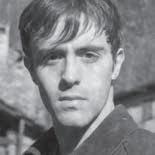

Sergio Cortesi dedicated his life to solar observation. At La Specola Solare Ticinese federal observatory in Locarno, between 1957 and 2021, he made over 15.000 sunspots drawings, driven by the faith of a monk to whom his own god never gave an answer.
Sergio Cortesi dedicó su vida a la observación solar. En el observatorio federal La Specola Solare Ticinese de Locarno, entre 1957 y 2021, Cortesi realizó más de 15.000 dibujos de manchas solares, impulsado por la fe de un monje al que su propio dios nunca dio respuesta.
director Salla Sorri, Eva-Maria Koskinen screenplay Eva-Maria Koskinen cinematography Samuli Aho editing Nina Ijäs sound Emil Soininen cast Alma Pöysti, Linda Zilliacus, Vivian Taht production Paria Eskandari - Aamu Film Company distribution Raina Film Festival Distribution @ andy@rainafilms.com
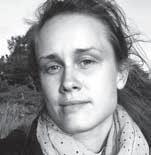
Hainbat urtez elkar ikusi gabe egon ondoren, Annak ete Jasminek (ikastetxean Anna jazartzen zuen neskak) kasualitatez egiten dute topo Jasminek alaba Annaren dantza eskoletara eramaten duenean. Anna eta Jasmine modu zibilizatuan portatzen saiatzen dira, baina zerbait dago ezkutuan eta, elkar ikustearen ondorioz, dantza-eskola alaia izango zena estatusagatiko borroka bihurtzen da, non emozioek Annaren zentzua lausotzen baitute. Biktima jazartzaile bihurtuko ote da?

After not seeing each other for years, Anna and her former school bully, Jasmine, meet by coincidence when Jasmine brings her daughter to Anna’s dance class. Anna and Jasmine try to behave in a civilized manner, but there’s something bubbling beneath the surface and the encounter turns a cheerful dance class into a battle for status where emotions blur Anna’s judgment. Will the bullied become the bully?
Después de años sin verse, Anna y su antigua acosadora escolar, Jasmine, se encuentran por casualidad cuando esta última lleva a su hija a la clase de baile de Anna. Ambas intentan comportarse de forma civilizada, pero hay algo que bulle bajo la superficie. El encuentro convierte una alegre clase de baile en una batalla por el estatus, en la que las emociones nublan el juicio de Anna. ¿Se convertirá la acosada en la acosadora?

director · screenplay · cinematography · editing · animation Shiva Sadegh Assadi
sound Changiz Sayyad
art Shiva Sadegh Assadi
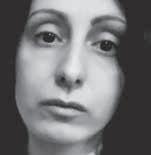
music Amir Pourkhalaji
production Shiva Sadegh Assadi
@ shivasadeghassadi@gmail.com
Emakume bat orbanez, puntuz eta pentsamendu errepikakorrez betetako mundu batean harrapatuta dago.
A woman is stuck in a world full of stains, spots and repetitive thoughts.
Una mujer se encuentra atrapada en un mundo lleno de manchas, puntos y pensamientos repetitivos.
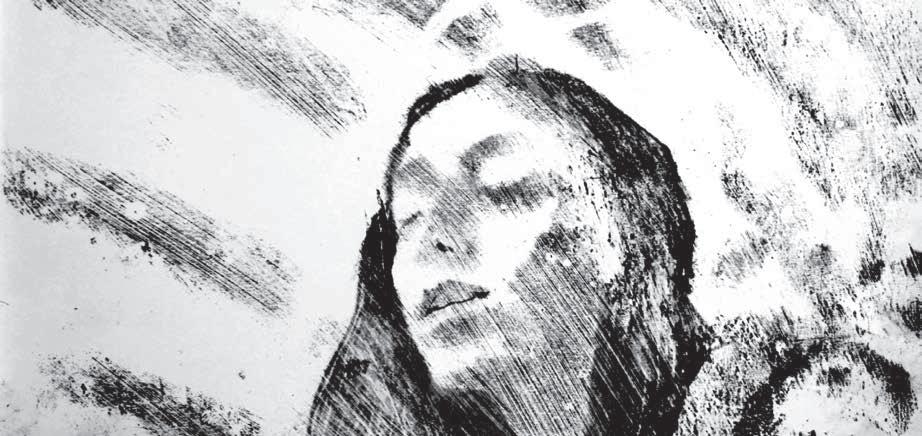
director Lewie Kloster, Noah Kloster screenplay Sara Driver cinematography Ben Klein editing Lewie Kloster sound David Britton art Emily Kreusch music Brian Mcomber, The Bush Tetras animation Lewie Kloster, Noah Kloster cast Sara Driver production Lewie Kloster, Noah Kloster @ lewie@tallglasswithice.com
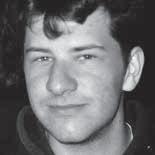
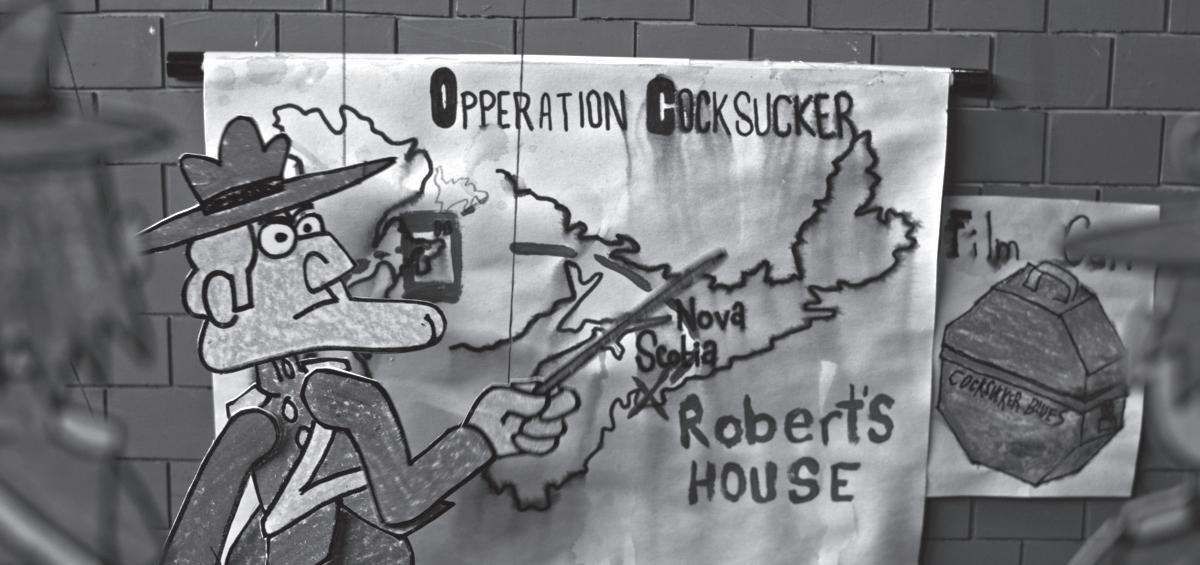
Filmak finantzatzeak lapurreta baten itxura du maiz. Taldea biltzeak lapurreta bat antolatzearen antza du. Lortu dutenek arma sekretu bat eduki dute. Jim Jarmuschentzat Sara Driver zen bere arma sekretua. Bere film laburra Rotterdameko Nazioarteko Zinemaldi ospetsura gonbidatu dute: aukera ezin hobea da finantzaketa bermatzeko. Baina arazo bat dago: zinemaldiak zuzendariaren hegaldia soilik ordain dezake. Jim ez da ona plangintzan, esan genezake ideiak dituena izan ohi dela. Sara berarekin joan behar da zinemaldian egongo diren finantzariekin hitz egiteko.
Film funding often resembles thievery. Assembling your team is a lot like assembling a heist. Those who have made it have had a secret weapon. For Jim Jarmusch, his was Sara Driver. His short was invited to the famed Rotterdam International Film Festival, the perfect shot at securing funding. The only problem: The festival only had the money to fly the director out. Jim was not a planner, he’s more of what you would call an ideas-guy. Sara needed to join him to talk to financiers at the festival.
La financiación de una película a menudo se asemeja a un robo. Reunir el equipo es muy parecido a montar un atraco. Los que lo consiguieron era porque tenían un arma secreta. Para Jim Jarmusch, la suya fue Sara Driver. Su cortometraje fue invitado al famoso Festival Internacional de Cine de Róterdam, la oportunidad perfecta para conseguir financiación. El único problema es que el festival no tenía dinero más que para el billete de avión del director. Como Jim nunca ha sido bueno planificando -es lo que podríamos llamar un hombre de ideas-, Sara tuvo que ingeniárselas para acompañarle y hablar con quienes podrían financiar su película.
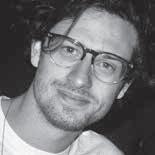
Dentistaren besaulkiaren menpe, protagonistak minari aurre egitea eta gizakion izaera zekenari aurre egitea, beste aukerarik ez du. Bere burua distraitzeko, arrantzaleei eta itsasoari buruzko fantasiazko istorio batean babesten du bere burua.
At the mercy of the dentist’s chair, the protagonist cannot escape the confrontation with pain and the dregs of the miserable human condition. To distract himself, he takes refuge in a fantasised story of fishermen and the sea.

A merced del sillón del dentista, el protagonista no puede más que hacer frente al dolor y a las miserias de la condición humana. Para distraerse, se refugia en una historia fantástica de pescadores y mar.

All My Scars Vanish in the Wind
director · animation Angélica Restrepo, Carlos Velandia sound · music Carlos Velandia cast Luz Guzmán production Angélica Restrepo, Carlos Velandia distribution Carlos Velandia @ cdvelandiav@gmail.com
Oroitzapen intrusiboen eta bilatutako memorien artean, emakume batek bere izanaren sakontasunetatik jasotako dei bati erantzuten dio. Gero eta ulergarriagoa den laguntza-oihu kriptiko batek jatorrizko zauriraino gidatuko du, bere baitako haurreraino, eta kontsolatu egingo du, azkenean bere buruaren babesle bihurtzeko.
Among intrusive and sought-after memories, a woman hears a disconcerting call from the depths of her being. A cryptic cry for help that becomes intelligible guides her to the original wound, to her inner child, becoming her own protector.
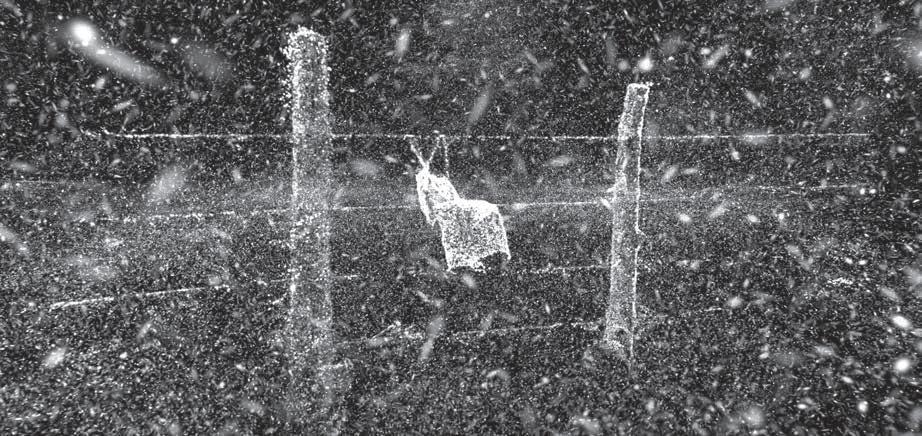
Entre recuerdos intrusivos y memorias buscadas, una mujer atiende un desconcertante llamado desde las profundidades de su ser. Un críptico grito de auxilio que se hace cada vez más inteligible la guía hacia la herida original, hacia su niña interior, a quien dará consuelo para finalmente convertirse en su propia protectora.
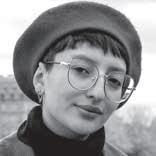


Umerzuztu berria den, eta galera itzel baten zauria duen mutiko batek besoko protesi bat uzten dio ikaskide bati egun baterako. Ikaskideak protesia hainbat ehundura eta materialen eraginpean jartzen du, prozesu guztia dokumentatuz. Ilargia eguzkira hurbildu ahala, mutikoak uraren gainean ezohiko isla bat ikusten du… Zer gertatuko da gorputz-adarrarekin, eta zer gertatuko da grabatutako bideoekin?
Newly orphaned and freshly wounded from an immense loss, a boy lends his companion a prosthetic arm for the day. The companion would then expose the prosthetic limb to a mélange of textures and materials, whilst documenting the whole process. As the moon inches closer and closer towards the sun, the boy sees something unusual reflected on the water’s surface… What will become of the limb, and what will become of the video recordings?
Huérfano reciente, y apesadumbrado por una inmensa pérdida, un niño le presta a su compañero una prótesis de brazo para pasar el día. El compañero expone el miembro protésico a varias texturas y materiales mientras documenta la totalidad del proceso. A medida que la luna se acerca más y más al sol, el niño ve algo inusual reflejado en la superficie del agua… ¿Qué será del miembro, y qué será de las grabaciones de vídeo?

Aitak, bere bizitza osoan, behin baino ez zuen erabili kamera bat. Hogeita hamar urte geroago, filmatu zuen materiala digitalizatzeko eskatu zidan. Zer gogoratzen ote zuen jakin nahi nuen. Atxibo pertsonaleko materiala berriz ikusteko eta birpentsatzeko bulkadatik abiatuta, filmak memoria arakatzen du, eta baita memoriak dokumentazioaren eta erakundeetatik kanpo egiten den artxibo jarduketarekin duen harremana ere. Politika eta espazio intimoak lotuz, filmak galderak egiten ditu gerrak artxibo pribatuetan duen eraginari buruz eta lorategiek hasiera berrietarako leku gisa duten zereginari buruz.
My father only used a camera once in his life. Thirty years later, he asked me to digitise the material he had filmed. I was wondering what he remembers. Created from an impulse to rethink and rewatch personal archive footage, the film explores memory and its relation to documentation and non-institutional archive practices. Connecting politics with intimate spaces, the documentary questions both the influence of war on private archives and the role of gardens as places of new begginings.

Mi padre utilizó una cámara una sola vez en su vida. Treinta años después, me pidió que digitalizara el material que había filmado. Entonces me planteé qué es lo que él recordaba. Creada a partir de un impulso para repensar y volver a ver material de archivo personal, el trabajo explora la memoria y su relación con la documentación y las prácticas de archivo no institucionales. Conectando la política con los espacios íntimos, el documental cuestiona tanto la influencia de la guerra en los archivos privados como el papel de los jardines como lugares de nuevos comienzos.
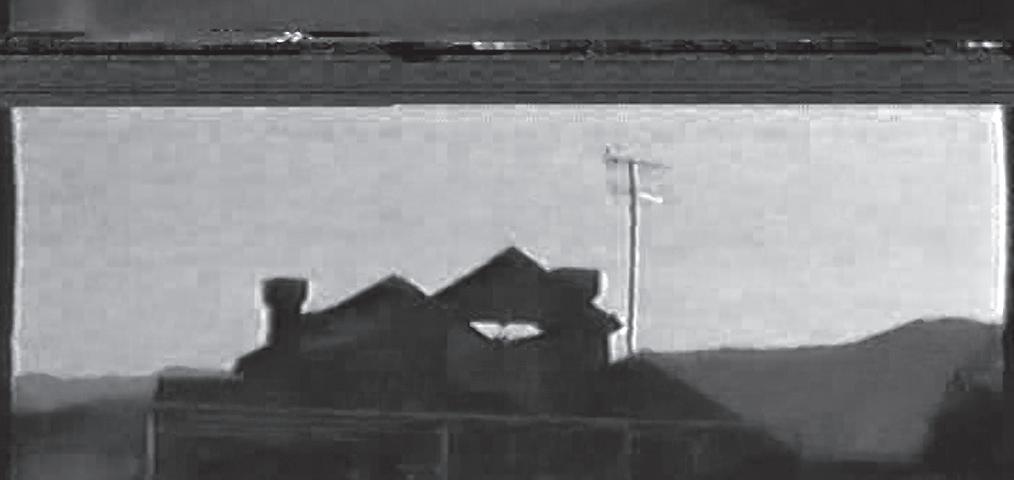

director · editing Jonatan Schwenk screenplay Jonatan Schwenk, Merlin Flügel music David Kamp animation Thalke Thyen, Max Mörtl, Maria Teixeira, Merlin Flügel, Carolina Iglesias, Jonatan Schwenk, Ramona Lüdemann, Jonatan Schwenk, Marta Magnuska, Anne Breymann, Hélène Tragesser production Jonatan Schwenk distribution Miyu Distribution @ festival@miyu.fr
Gaueko baso bateko zingira ilunetan, axolote distiratsuen talde bat araldian dago, elkarri laztanak eta hozka egiten. Handik gutxira, basoko biztanle askoz handiago batek, bi hankatan dabilenak, talde lizunarekin topo egiten du; makurtu egiten da izaki txiki eta distiratsuetako bat irensteko. Bere lagun potzoloek ere parte hartzen dute eta oturuntza hasten da. Eguna pixkanaka argitu ahala, beste jolas alai bat hasten da adarren goiko aldean.
In the dark swamps of a nocturnal forest, a group of gleaming axolotls is in heat, nuzzling and nibbling one another’s limbs. Soon a much larger, two-legged forest-dweller encounters the lustful group and reaches down to gobble one of the small shimmering creatures. His plump friends begin to partake as well and a feast begins. While dawn is slowly breaking, a cheerful game begins higher up in the branches.
En los oscuros pantanos de un bosque nocturno, un grupo de relucientes axolotes está en celo, acariciándose y mordisqueándose los miembros unos a otros. Pronto, un bípedo que habita en el bosque y es mucho más grande que ellos, se encuentra con el lujurioso grupo y engulle a una de las pequeñas y brillantes criaturas. Sus iguales también participan y se inicia un festín. Mientras amanece lentamente, comienza un alegre juego en lo alto de las ramas.
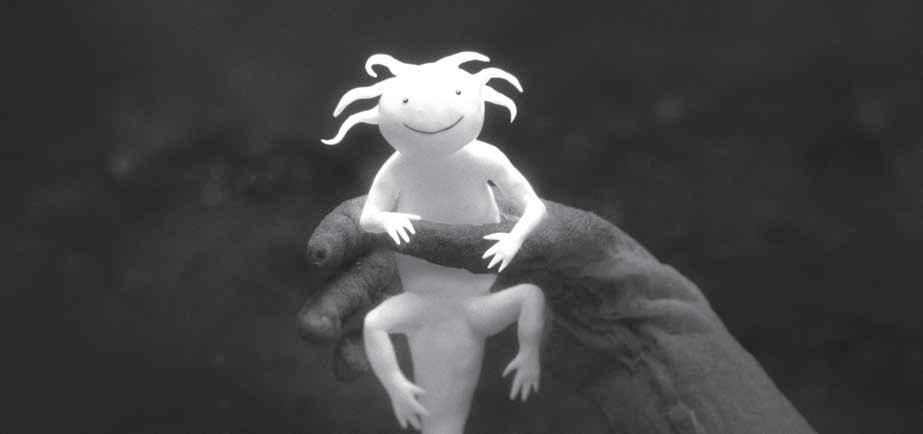
director · screenplay · cinematography Theo Montoya editing Matthieu Taponier, Delia Oniga, Theo Montoya sound Eloísa Arcila Fernández, Estephany Cano, Marius Leftărache, Victor Miu, Marian Bălan, Dragoș Știrbu music Vlad Feneșan, Marius Leftărache production Desvio Visual (CO), Monogram Film (RO), Dublin Films (FR), Amerikafilm (DE) distribution Square Eyes @ berry@squareeyesfilm.com

Hiletaauto batek Medellingo kaleak zeharkatzen ditu eta, bitartean, zuzendari gazte batek hiri bortitz eta kontserbadore honetan bizitako iraganaren istorioa kontatzen du. Gogora ekartzen du nolakoa izan zen bere lehen filmaren preprodukzioa, mamuak zituen B klaseko filmarena. Filmean Medellingo queer eszena gaztea erakusten da, baina protagonista nagusia heroina gaindosi baten ondorioz hiltzen da 21 urterekin, zuzendariaren hainbat lagun bezala. Dokumentala honek belaunaldi suntsitu baten ametsak, zalantzak eta beldurrak aztertzen ditu, eta baita zinema egiten jarraitzeko dauden zailtasunak ere.
A funeral car cruises the streets of Medellín while a young director tells the story of his past in that violent and conservative city. He remembers the pre-production of his first film, a B-movie with ghosts. The young queer scene of Medellín is the film’s cast, but the main protagonist dies of a heroin overdose at the age of 21, just like many friends of the director. This documentary explores the dreams, doubts and fears of an annihilated generation, and the struggle to carry on making cinema.
Un coche fúnebre recorre las calles de Medellín mientras un joven director cuenta su pasado en esa ciudad violenta y conservadora. Este recuerda la preproducción de su primera película, una cinta de serie B con fantasmas. La escena queer juvenil de Medellín es elegida como el reparto de la película, pero el protagonista principal muere de una sobredosis de heroína a los 21 años, al igual que muchos amigos del director. Este documental explora los sueños, las dudas y los miedos de una generación aniquilada, y la lucha por continuar haciendo cine.

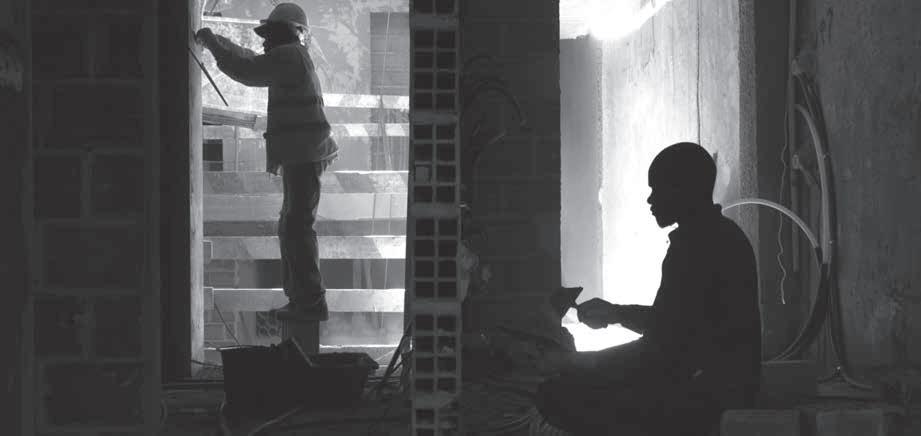
Portugal, 2022 | 115 min | Documentary director · screenplay · cinematography João Rosas editing Raúl Domingues, João Rosas sound Nuno Carvalho cast Armando Correia, José Rosa, Nicolas Dalibot, Calisto Belchior, José Francisco, Ismael Alves, Aliou Ba, António Melo, Amâncio Espírito Santo, José Carlos, Rui Santos, Henrique João, Primos Sing, Ussumane Darame, Fernando Pina, Rangel Leal, Mohamadu Saliu Bah, Paulo Vicente Vaz, Carlos Marques, Mamasamba, Armando Melo, Mamadu Banjai, Jorge Silva, Armando Balanta, Mário Jaura, Alcides Vieira, Ran Murti

production · distribution Terratreme Filmes @ nevena.desivojevic@terratreme.pt
Bairro Altoko bihotzean, Lisboako erdigunean, inprenta zahar baten eraikina eraitsi dute luxuzko apartamentuak egiteko. Eraispen horretan, zuzendariak Lisboa jakin baten heriotzaren irudi perfektua ikusten du —zeina krisi finantzarioaren eta horren ondoriozko higiezinen salmentaren boomak eragin baitute—, eta hiriko eguneroko bat filmatzea proposatzen du, eraikuntza lanen eta bertako langileen egunerokotasuna erretratatuz.
In the heart of Bairro Alto, right in the centre of Lisbon, the building of an old printing workshop is demolished to make way for a development of luxury apartments. Seeing this demolition as a perfect image for portraying the death of a certain Lisbon in the wake of the financial crisis and the ensuing real estate and touristic boom, the director proposes to film an urban diary portraying the daily life of the construction site and those who work there.
En el corazón del Barrio Alto, en pleno centro de Lisboa, el edificio de una antigua imprenta es demolido para dar paso a la construcción de un complejo de viviendas de lujo. Considerando esta demolición como la imagen perfecta para retratar la muerte de cierta Lisboa tras la crisis financiera y el consiguiente boom inmobiliario y turístico, el director propone filmar un diario urbano que retrata la vida cotidiana de la obra y de quienes trabajan en ella.
director · screenplay Dušan Zorić, Matija Gluščević cinematography Aleksa Radunović, Marko Kažić, Milica Drinić editing Olga Košarić sound Luka Gamulin art Iva Ilić, Milena Grošin music Stipe Škokić aka DJ Jock cast Ksenija Marinković, Isidora Simijonović, Boris Isaković, Alex Elektra, Ivana Vuković, Vlasta Velisavljević, Goran Bogdan, Jasna Đuričić, Radoje Čupić production Čarna Vučinić distribution Non-Aligned Films @ cvucinic@gmail.com
Udako egun baten berotan, Draginjak bere antza duen gorpu bat aurkitzen du. Udako egun baten berotan, Draginjak sasisenar bat kontratatzen du bere lagunen aurrean plantak egiteko. Neguko gau baten hotzetan, Draginja kalez kale dabil, galdutako oroimena berreskuratzeko itxaropenez. Hiru bizitza posibleren bitartez, adin ertaineko emakume bat bere larrutik ateratzen saiatzen da.
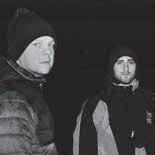
In the heat of a summer day, Draginja discovers a dead body that resembles her. In the heat of a summer day, Draginja hires a fake husband to show off in front of her friends. In the cold of a winter night, Draginja roams the streets hoping to recover her lost memory. Through three different life possibilities, a middle-aged woman tries to get out of her skin.
En el calor de un día de verano, Draginja descubre un cadáver que se parece a ella. En el calor de un día de verano, Draginja contrata a un falso marido para presumir delante de sus amigas. En el frío de una noche de invierno, Draginja vaga por las calles con la esperanza de recuperar su memoria perdida. Mediante tres diferentes posibilidades de vida, una mujer de mediana edad intenta salir de su piel.

@ nevena@lightdox.com
Depresioaren Federazioaren erregimen gero eta autokratikoagoak isilarazita, 16 urte dituen Marusyak urte amaierarako bere belaunaldiaren suizidio estatistiketan sartzea erabaki du. Orduan, Kimi ezagutzen du eta maitasun istorio bat hasten da gobernu zapaltzailearen ondoezak harrapatuta dituen bi millenialen artean. Elkarrekin, Marusyak eta Kimik gaztaroko euforia, antsietatea eta miseria filmatzen dituzte, denborarik galdu gabe, drogen eta musikaren akuiluarekin.
Muzzled by the increasingly autocratic regime of the Depression Federation, 16-yearold Marusya decides to join her generations’ suicide statistics by year’s end. Then she meets Kimi and a love story begins between the two millennials caught in the undertow of their oppressive government. Together, Marusya and Kimi film the euphoria, anxiety and misery of their youth, burning the candle at both ends, fuelled by drugs and music.

Silenciada por el régimen cada vez más autocrático de la Federación de la Depresión, Marusya, de 16 años, decide ser una cifra más de las estadísticas de suicidio de su generación para finales de año. Pero todo cambia cuando conoce a Kimi. Entonces comienza una historia de amor entre dos millennials atrapados en las corrientes subterráneas de un gobierno opresivo. Juntos filman la euforia, la ansiedad y la miseria de su juventud, quemando las naves, alimentados por las drogas y la música.

Haleh ama oso babeslea da, bere 4 urteko semea, Ilya, mizke hazten duena. Egun batean, semeak hitz egiteari uzten dio eta Haleh eta bere senarra, Amir, batbateko mututasunaren arrazoiaren eta erremedioaren bila hasten dira. Zenbat eta gehiago saiatu haurrarekin hitz egiten edo adituei kontsulta egiten, orduan eta okerrago jartzen dira gauzak bikotearentzat eta familiarentzat.
Haleh is a very protective mother, who easily spoils her 4 years-old boy, Ilya. When one day the boy stops talking, Haleh and her husband Amir start searching for the reason and the remedy for this sudden mutism. The more they try to talk to the boy or consult experts, the worst things are becoming in the couple and the family.

Haleh es una madre sobreprotectora que mima con facilidad a su hijo de cuatro años, Ilya. Cuando un día el niño deja de hablar, Haleh y su marido Amir empiezan a buscar el motivo y el remedio para este repentino mutismo. Pero cuanto más intentan hablar con el niño o consultar a expertos, peor se ponen las cosas en la pareja y la familia.
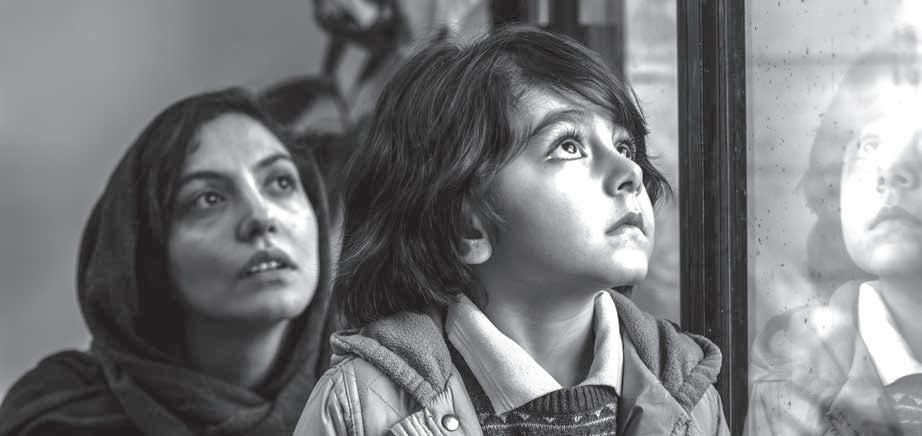
art Hyeonsun Seo
music Roth Bart Baron
cast Lina Arashi, Daiken Okudaira, Arash Kahafi Zadeh, Lilly Kahafi Zadeh, Lion Kahafi Zadeh, Kan Hanae, Shunya Itabashi, Oolongta Yoshida, Ryo Ikeda, Kentaro Tamura
production Bandai Namco Arts, AOI Pro. @ intlsales@gaga.co.jp
Sarya (17) Japonian errefuxiatuta dagoen neska kurdu bat da. Badirudi ondo doakiola: unibertsitatera sartzeko nota onak ditu, lagun onez inguratuta dago eta Sotarekin duen harremana gero eta bereziagoa da. Dena den, Saryaren bizitza hankaz gora jartzen da errefuxiatu estatusa ukatzen dietenean, bere familiak ezingo baitu, ez hirian lan egin, ez bidaiatu.


For Sarya (17), a Kurdish refugee girl in Japan, life seems to be looking up: her grades at school are enough to pursue college, she’s surrounded with good friends and her relationship with Sota is becoming special. Sarya’s life becomes upside down, however, when she learns that her family’s refugee status is turned down, restricting her family of work and traveling across the city.
Para Sarya (17 años), una joven kurda refugiada en Japón, la vida parece ir viento en popa: sus notas en la escuela son suficientemente buenas como para pensar en la universidad, está rodeada de buenos amigos y su relación con Sota se está convirtiendo en especial. Sin embargo, su vida da un vuelco cuando se entera de que el estatus de refugiada que tenía su familia ha sido rechazado, lo que restringe sus posibilidades de trabajar y viajar por la ciudad.

Pieza hau irudien, errepikapenen eta memorien collage bat da, 80ko hamarkadan Kolonbian emandako albistegietako artxiboetan esku hartuz egin dena. Berreraikuntza hau belaunaldi batekin lotuta dago —nire belaunaldiarekin— zeina normal bihurtu ziren eta zentzurik ez zuten irudi horiez inguratuta hazi baitzen.
This work is a collage of images, repetitions, and memories, built through the intervention of the Colombian news archive during the 80s and 90s. It also reconstructs a story linked to a generation — my generation, that grew up by normalizing violence through these same senseless images.
Esta pieza es un collage de imágenes, repeticiones y memorias, construido a través de la intervención de los archivos de telediarios emitidos en Colombia en los años 80. Esta es también una reconstrucción relacionada con una generación —mi generación— que creció rodeada de esas imágenes hasta que se hicieron normales, carentes de sentido.


Ukrainako 2014ko iraultzan zehar, Roma, 13 urteko kaleko mutiko bat, Kieveko fronteko lerroetan korrika dabil harriak eta molotov koktelak jaurtitzen. Azkar bihurtuko da iraultzaren aurpegi eta maskota. Baina, kamuflaje uniformearen, eguzkitako betaurrekoen eta beldurgabetasunaren azpian, umezurztegi bateko mutil bakarti bat ezkutatzen da, zeinak, 5 urte geroago, 18 urte beteko baititu eta kale gorrian geratuko baita, poltsikoan metxero bat eta laban bat besterik ez dituela.
During the 2014 revolution in Ukraine, 13-year-old street boy Roma runs around the front lines of Kyiv throwing stones and molotov cocktails. He quickly becomes a familiar face and a mascot for the revolution. But behind the camouflage uniform, sunglasses and fearlessness hides a lonely boy from an orphanage who, five years later, turns 18 and is suddenly back on the streets with nothing in his pocket but a lighter and a knife.
Durante la revolución de 2014 en Ucrania, Roma, un niño de la calle de trece años, recorre las líneas del frente de Kiev lanzando piedras y cócteles molotov. Rápidamente se convierte en una cara conocida y en la mascota de la revolución. Pero tras el uniforme de camuflaje, las gafas de sol y esa aparente intrepidez se esconde un huérfano solitario que, cinco años después, cumple dieciocho años y, de repente, vuelve a las calles sin nada más en el bolsillo que un mechero y una navaja.
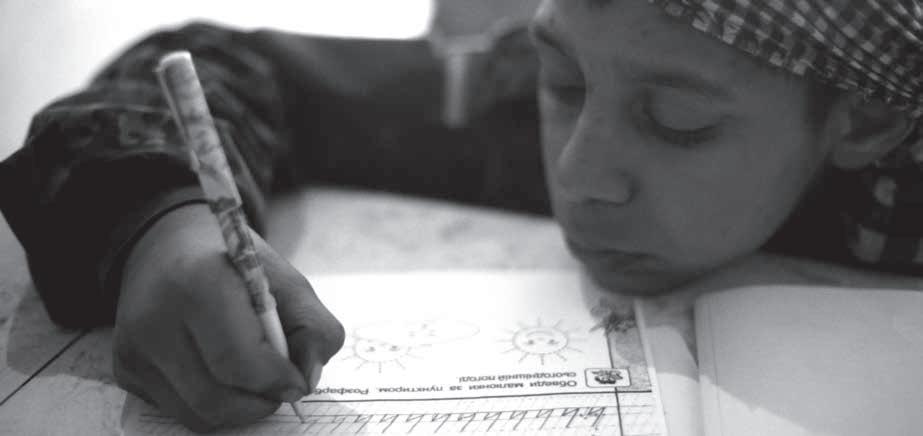
Haur komunitate bat Amazoniako oihanean isolatuta bizi da, eta naturarekiko harreman oso estua du. Pastaza ibaiaren urten eta zuhaitzen adaburuen artean, haurrok beren eguneroko bizitza ia modu autonomoan bizitzen dute, elkarlanaren zentzu handiarekin.
Isolated in the Amazon rainforest lives a community of children in deep intimacy with the nature around. Between the waters of the Pastaza River and the top of the trees, these kids run their daily lives almost autonomously and with a strong sense of collaboration.

Aislada en la selva amazónica vive una comunidad de niños que convive en profunda intimidad con la naturaleza que les rodea. Entre las aguas del río Pastaza y las copas de los árboles, estos niños llevan su vida cotidiana de forma casi autónoma y con un fuerte sentido de la colaboración.


director · cinematography · editing Maria Elorza sound Maria Elorza, Xanti Salvador cast Tonina Deias, Loreto Casado, Viki Claramunt, Waltraud Kirste, Anne Elorza production Koldo Almandoz, Marian Fernández Pascal - Txintua Films @ txintxua@txintxua.com

Emakume bati ia Avioneta izena jarri zioten. Beste batek, liburutegi bat izan zuen bere kotxeko atzeko eserlekuan. Besteak, etxeko liburutegiko apal errebeldeen ondorioz hatz bat hautsi zuen. Zigarrogileek irakurketak entzuten dituzte lanean ari diren bitartean. Plantxagileek poemak gogoratzen dituzte. Horiei guztiei kantatzen diet. Suaren, uraren, sitsaren, hautsaren, ezjakintasunaren eta fanatismoaren aurka, emakume armada anonimo batek liburuak zaintzen ditu. Erresistentzia intimo bat da, epikarik gabekoa, iraultzarik gabekoa, armarik gabekoa.
A woman was almost called Avioneta [small airplane] at birth. Another had a library in the back seat of her car. Yet another fractures her finger with the rebel shelves of her bookshop. Lectors read to cigar makers while they work. Women remember poems while they iron. And to them all I sing. Standing against fire, water, moths, dust, ignorance and fanaticism, an anonymous female army looks after books. An intimate resistance, lacking epic events, revolution or weapons.
Una mujer casi fue llamada Avioneta. Otra tuvo una biblioteca en el asiento trasero de su coche. Una más se fractura un dedo con los estantes rebeldes de su librería. Las cigarreras escuchan lecturas mientras trabajan. Las planchadoras recuerdan poemas. A todas ellas, les canto. Contra fuego, agua, polilla, polvo, ignorancia y fanatismo, un ejército anónimo de mujeres cuida de los libros. Es una resistencia íntima, sin épica, sin revolución, sin armas.

director Éric Baudelaire screenplay Anne-Louise Trividic, Éric Baudelaire cinematography Claire Mathon editing Claire Atherton sound Éric Lesachet, Philippe Welsh art Roy Genty cast Oxmo Puccino, Dali Benssalah production Poulet-Malassis Films, Les films du Worso @ solene@worso.com
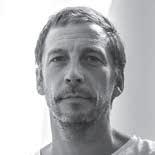
Film bat bi zatitan: lehenengo ekitaldia munduko lore azokarik handienetako baten behaketa-dokumental gisa filmatuta dago eta, ondoren, gizon bati buruzko fikziozko bigarren ekitaldia dugu: gaixotasun terminal bat du eta ezezagun batekin topo egiten du tren geltokiko tabernan. Hausnarketa erradikal bat agortzen den denborari buruz eta egiteke dagoenari buruz, zeina Pirandelloren antzezlan baten egokitzapena baita.
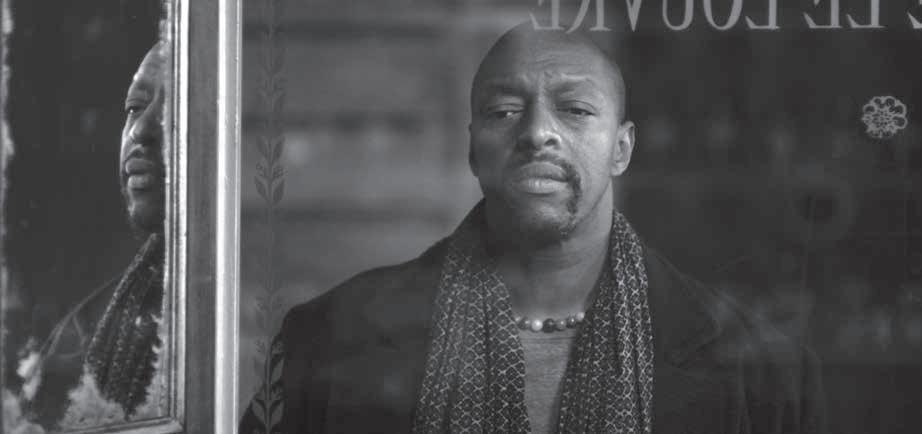
A film in two parts: a first act filmed as an observational documentary in the world’s largest flower market, followed by a fictional second act about a man, afflicted by a terminal illness, encountering a stranger in a train station bar.
A radical reflection about time running out and what remains to be done, adapted from a play by Pirandello.
Una película que se divide en dos partes: un primer acto filmado como un documental de observación en el mayor mercado de flores del mundo, seguido de un segundo acto ficticio sobre un hombre, aquejado de una enfermedad terminal, que se encuentra con un desconocido en el bar de una estación de tren. Una reflexión radical sobre el tiempo que se agota y lo que queda por hacer. Adaptación de una obra de teatro de Pirandello.
50eko eta 60ko hamarkadetan, Estatu Batuetako landazabalaren sakonenean, Catskills mendien magalean zegoen egurrezko etxe bat, atzean aletegi bat ere bazuena, trabestien lehen sare klandestinoaren egoitza izan zen. Dianek eta Katek 80 urte dituzte orain. Bere garaian, gizonak ziren, eta baita erakunde sekretu haren parte ere. Gaur egun, trans nortasunaren lehen egunetako oinarrizko kapitulu ahaztu hau kontatzen digute.

In the 50s and 60s, deep in the American countryside at the foot of the Catskills, a small wooden house with a barn behind it was home to the first clandestine network of cross-dressers. Diane and Kate are now 80 years old. At the time, they were men and part of this secret organization. Today, they relate this forgotten but essential chapter of the early days of trans-identity.
En los años 50 y 60, en lo más profundo del campo estadounidense, a los pies de las montañas de Catskill, una pequeña casa de madera con un granero detrás albergaba la primera red clandestina de travestis. Diane y Kate tienen ahora 80 años. En aquella época, eran hombres y formaban parte de esta organización secreta. Hoy relatan este capítulo olvidado, pero esencial, de los primeros tiempos de la transexualidad.

Sable uharteko ekosistema aberatsean murgilduko gara Zoe Lucas naturalista eta ekologistaren eskutik, zeinak 40 urtetik gora baitarama Ozeano Atlantikoaren ipar-mendebaldeko urruneko lur eremu honetan. 16mm-tan filmatuta eta teknika zinematografiko ekologiko eta berritzaileekin egina, saiakera hau mundu naturalarekiko lankidetza ludiko eta begirunetsu bat da. Zoek zaldi basatien, foken eta zomorroen artean eramango gaitu, tontor, haran, sustrai, harea, eguraldi, urtaro eta izarren artean.
Immersion into the rich ecosystem of Sable Island, guided by naturalist and environmentalist Zoe Lucas who has lived over 40 years on this remote sliver of land in the Northwest Atlantic Ocean. Shot on 16 mm and created using a scope of innovative eco-friendly filmmaking techniques, this essay is a playful and reverent collaboration with the natural world. Zoe leads us among wild horses, seals and bugs, through peaks, valleys, roots, sands, weathers, seasons and stars.

Inmersión en el rico ecosistema de la isla Sable, guiada por la naturalista y ecologista Zoe Lucas, que ha vivido más de 40 años en esta remota franja de tierra del océano Atlántico noroccidental. Filmado en 16 mm y realizado con una serie de innovadoras técnicas cinematográficas respetuosas con el medio ambiente, este ensayo es una colaboración lúdica y reverente con el mundo natural. Zoe nos conduce entre caballos salvajes, focas y otros animales, a través de picos, valles, raíces, arenas, climas, estaciones y estrellas.
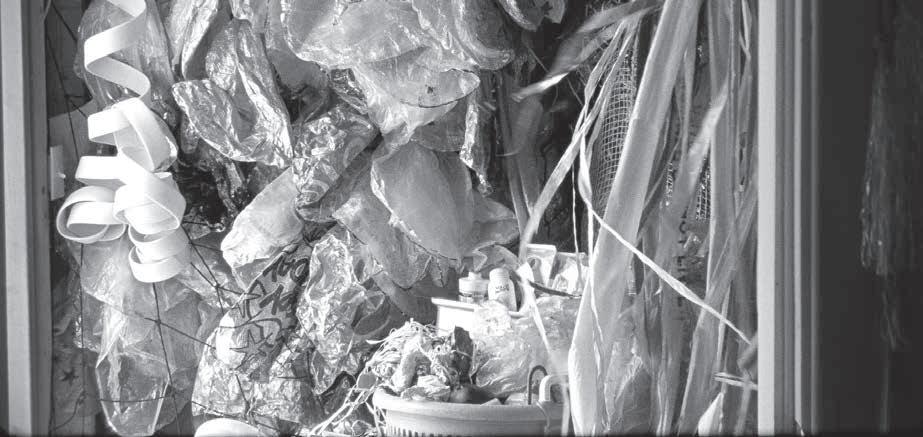
@ sales@fandango.it
Tooba Gondal jihadista britainiar zitalenetako bat da. 20 urte besterik ez zituela, Londresetik joan zen Estatu Islamikoarekin bat egiteko, eta mundu osoan ospetsu egin zen “ISISeko ezkontzagin” gisa, ISISeko borrokalariekin ezkontzeko prest zeuden mendebaldeko dozena bat emakume errekrutatu ondoren. 2014 eta 2017 bitartean, modu aktiboan aritu zen sare sozialetan propaganda egiten. Bi urtez desagertuta egon ondoren, 2019an Benedetta Argentieri zuzendari eta kazetari freelanceak Tooba filmatu zuen, ArRaqqan, Sirian. Kameran ikusten dugun neska jator, argi eta otzana al da? Edo estremista biolento bat? Gerra Santu Islamikoari buruzko gogoeta interesgarri bat da, kalifaherriko parte diren emakumeen, borrokalarien eta borreroen beraien ikuspegitik.

Tooba Gondal is one of the most infamous British jihadists. When she was only 20 years old she left London to join the Islamic State and gained popularity worldwide as “the ISIS matchmaker” after she recruited a dozen of Western women to marry ISIS fighters. Between 2014 and 2017 she actively engaged in propaganda on social networks. After disappearing for two years, Tooba was filmed in 2019 by director and freelance reporter Benedetta Argentieri, in Raqqa, Syria. Is she really the nice, intelligent and submissive girl we see on camera? Or is she a violent extremist? An interesting reflection on the Islamic holy war seen from the point of view of the women who are part of the caliphate, fighters and executioners themselves.
Tooba Gondal es una de las más infames yihadistas británicas. Con tan solo veinte años abandonó Londres para unirse al Estado Islámico y ganó popularidad en todo el mundo como "la casamentera del ISIS" tras reclutar a una docena de mujeres occidentales para que se casaran con combatientes del ISIS. Entre 2014 y 2017 se dedicó activamente a la propaganda en las redes sociales. Tras desaparecer durante dos años, Tooba fue filmada en 2019 por la directora y reportera independiente Benedetta Argentieri, en Al Raqa, Siria. ¿Es de verdad la chica simpática, inteligente y sumisa que vemos en cámara? ¿O es una extremista violenta? Una interesante reflexión sobre la guerra santa islámica vista desde el punto de vista de las mujeres que forman parte del califato, ellas mismas, combatientes y verdugos.

Denmark, 2022 | 92
Documentary
director Jørgen Leth, Andreas Koefoed screenplay Jørgen Leth, Andreas Koefoed, Adam Nielsen cinematography Adam Jandrup, Dan Holmberg, Andreas Koefoed editing Adam Nielsen sound Peter Albrechtsen music Jakob Bro cast Christensen, Manfred Eicher, Midori Takada production Emile Hertling Péronard - Ánorâk Film Denmark


@ emile@emileperonard.dk
Zer sentitzen da musika jotzen duzunean? Zer esan nahi du entzuteak? Musikariei galdera existentzialak egin ahala, etenaldi luzeak gertatzen dira. Izan ere, posible al da musikaren emozioak hitzetan jartzea? Dokumentala inprobisazio zinematografikoko pieza bat da. Orainan presente egoteari buruzkoa da, jotzeari eta inprobisatzeari buruzkoa, jazzaren aitzindarien belaunaldien legatuarekin jarraitzeari buruzkoa eta inoiz entzun ez duzun zerbait sortzeari buruzkoa.
How does it feel to play? What does it mean to listen? As some of these existential questions are asked to musicians, long pauses occur. Because is it even possible to put the emotions of music into words? The documentary is a cinematic improvisation piece. It’s about being present in the now, about playing and improvising, about carrying on the legacy of generations of jazz pioneers and creating something, unlike anything you’ve ever heard before.
¿Qué se siente al tocar? ¿Qué significa escuchar? A medida que se van planteando preguntas existenciales a los músicos, se suceden largas pausas. ¿Es posible poner en palabras las emociones de la música?
Este documental es una pieza de improvisación cinematográfica. Se trata de estar presente en el ahora, de tocar e improvisar, de continuar el legado de generaciones de pioneros del jazz y de crear algo que no se parezca a nada que se haya escuchado anteriormente.

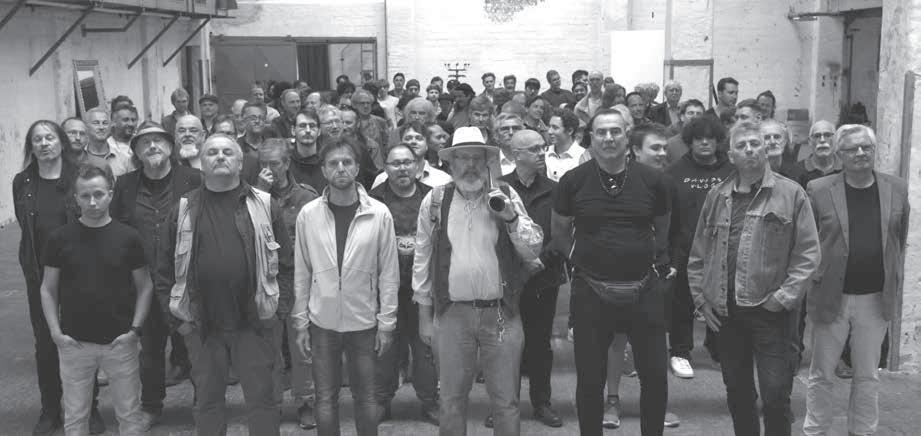
Egunkariko iragarki batean, Ruth Beckermannek casting bat iragartzen du testu pornografiko oso ezagun batean oinarritutako film baterako. Ehunka gizon ikusten ditugu “Josefine Mutzenbacher or The Story of a Viennese Whore, as Told by Herself” eleberriaren pasarteei aurre egiten, sexua inoiz baino nonahikoa izan arren, oso giro moral kargatua dagoen garai batean.
With an ad in a newspaper, Ruth Beckermann announces a casting call for a film based on a well-known pornographic text. A hundred men confront with excerpts from the novel, “Josefine Mutzenbacher or The Story of a Viennese Whore, as Told by Herself”, in an age when sex is more ubiquitous than ever, and yet at same time is met with a highly charged moral environment.
Por medio de un anuncio en un periódico, Ruth Beckermann anuncia una convocatoria de casting para una película basada en un conocido texto pornográfico. Un centenar de hombres se enfrentan a fragmentos de la novela “Josefine Mutzenbacher - La historia de la vida de una prostituta vienesa tal como la relató", en una época en la que el sexo es más omnipresente que nunca y, al mismo tiempo, se encuentra con un entorno moral muy cargado.

director Ainara Vera cinematography Ainara Vera, Inuk Silis Høegh editing Ainara Vera, Gladys Joujou sound Jérémie Halbert music Amine Bouhafa

production Point du Jour - Les Films du Balibari - Ánorâk Films distribution Jour2Fete @ sales@thepartysales.com
Hayat marinel aditua da, gizakiengandik eta bere senideek Frantzian duten iraganetik urrun nabigatzen duena, Ozeano Artikoan barrena. Baina bere ahizpa txikia, Leila, Inaya izeneko neskaz erditzen denean, bien mundua hankaz gora jartzen da; Iparrizarrak gidatuta, beren familiaren patua gainditzeko egingo duten bidaiaren lekuko izango gara.
Hayat, an expert sailor in the Arctic, navigates far from humans and her family’s past in France. But when her little sister Leila gives birth to a baby girl Inaya, their worlds are turned upside down; we witness their journey, guided by the polar star, to overcome the family’s fate.
Hayat es una experta marinera que surca el Ártico alejándose de los humanos y de un duro pasado familiar en Francia. Cuando su hermana pequeña Leila da a luz a una niña —Inaya—, sus mundos dan un vuelco. Entonces somos testigos de su viaje, guiado por la estrella polar, para superar el destino de la familia.
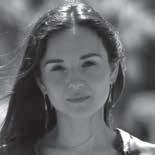
director · screenplay Mitra Farahani cinematography Fabrice Aragno, Daniel Zafer, Mitra Farahani editing Mitra Farahani, Yanick Kergoat, Fabrice Aragno sound Fabrice Aragno
cast Jean-Luc Godard, Ebrahim Golestan production Mitra Farahani, Écran Noir Productions @ contact@ecrannoirproductions.frc
“Korrespondentzia batekin hasi beharko ginateke, agian ez diogu elkarri idatziko. Ebrahimek ostiral honetan bidal diezadake gutun bat, eta nik datorren ostiralean erantzungo diot. Beraz, ostiralera arte, Robinson!” Eta, horrela, Jean-Luc Godardek bere eguneroko pentsamenduak antolatzen ditu, etsipen jakintsu batekin, eta irudiak eta hitzak bidaltzen ditu Suitzatik kanaleko beste aldera. Sussexeko bere etxe dotorean, Ebrahim Golestan OHE-mezu horiek deskodetzen saiatzen da, eta trebetasun handiz ahalegintzen da horiei arrazoimenaren itxura ematen. Eta, horrela, belo bat jausten da ihesean dabiltzan bi Jainko horien gainera. Poeten existentziak ba al du oraindik, saminaren garai hauetan, inolako zentzurik?
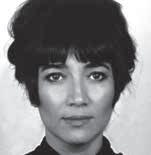
“We should start with a correspondence, maybe we will not correspond to one another. Ebrahim can send me a letter this Friday, and I’ll answer him next Friday. So, see you Friday, Robinson!" And so, Jean-Luc Godard stages himself in his daily thoughts, wisely desperate, and sends images and words from Switzerland to the other side of the Channel. In his mansion in Sussex, Ebrahim Golestan tries to decode these UFO-messages and skillfully seeks to bring them back to the appearance of reason. And so on, until the day a veil falls over the two Gods on the run. Does the existence of poets still have any meaning in these times of distress?
“Deberíamos empezar con una correspondencia, tal vez no nos correspondamos. Ebrahim puede enviarme una carta este viernes, y yo le responderé el próximo viernes. Así que, ¡nos vemos el viernes, Robinson!" Y así, Jean-Luc Godard se escenifica en su pensamiento cotidiano, sabiamente desesperado, y envía imágenes y palabras desde Suiza al otro lado del Canal. En su mansión de Sussex, Ebrahim Golestan intenta descifrar estos mensajes-OVNI y busca hábilmente devolverles la apariencia de la razón. Y así hasta el día en que un velo cae sobre los dos dioses a la fuga. ¿Tiene aún algún sentido la existencia de los poetas en estos tiempos de angustia?


director Ainhoa Urgoitia, Enrique Rey screenplay Ainhoa Urgoitia cinematography Marta F. Pisonero editing Bittor Gonzalez sound Javi Hernando music Nerea Alberdi animation Enrique Rey production Fernado Diez Varela - Bitart New Media distribution Ainhoa Urgoitia @ onthefloor@hotmail.es
Pabellón Nº6 sortu zenetik hamar urte bete direnean, sortzaileek eta hari lotutako aktoreek, entseguetan, zerrategi zahar bat kultura erakartzeko gune bihurtzeak ekarri duenaz hitz egin dute.
Ten years have passed since the creation of the Pabellón Nº6 space. The founders as well as actors and actresses linked to it talk about what the reconversion of an old sawmill into a pole of cultural attraction has meant.


Cuando se cumplen diez años de la creación del espacio Pabellón Nº6, los y las fundadoras, así como los actores y las actrices vinculados al mismo, hablan entre ensayos de lo que ha supuesto la reconversión de una antigua serrería en un polo de atracción cultural.
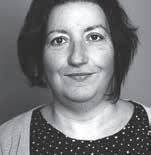
Juanjo Navas kantaria, kale garbitzaile lanetan, Blas de Otero poetari eskainitako kaletik zebilen, XX. mendeko poeta handienetako bat eta frankismoaren aurkako borrokaren ikurra. Poetaren bertsoak deskubritu zituen halabeharrez, eta Blas de Otero Fundazioaren laguntzarekin, kantu flamenko bihurtzea erabaki zuen. Dokumental honek poesia eta flamenkoaren arteko topaketa hori jarraitzen du, Bilbo eszenatoki eta katalizatzaile den hiri batean.

While doing his job as a street sweeper, Juanjo Navas went through the street named after the poet Blas de Otero, one of the great XX Century lyric authors and an emblem of the fight against the Francoist Dictatorship. By chance he discovered his verses and, with the assistance of the Blas de Otero Foundation, he decided to turn them into flamenco. This documentary follows the steps of that encounter between poetry and flamenco in a city, Bilbao, which is scene and catalyst.
Ejerciendo su oficio de barrendero, el cantaor Juanjo Navas recorría la calle dedicada al poeta Blas de Otero, uno de los grandes poetas del siglo XX y emblema de la lucha antifranquista. El azar hizo que el cantaor descubriera los versos del autor de Pido la paz y la palabra y, con el apoyo de la Fundación Blas de Otero, decidiera convertir los poemas en cante flamenco. Este documental sigue ese encuentro entre la poesía y el flamenco en una ciudad, Bilbao, que es escenario y catalizador.

director Izaro Andres Zelaieta, Ander Merino Etxebeste screenplay · art · music Izaro Andres Zelaieta cinematography Mattin Saldias Zubizarreta editing · cast Ander Merino Etxebeste sound Asier Renteria Condon production Izaro Music, Badator, Ginmusica @ produccionizaro@gmail.com
2022ko maiatzaren 7an Anoetako Belodromoan egindako kontzertura bidean Izarok bizitako erronken eta erronka hauekiko hausnarketen bilduma. Bost urte eskasean, kantautore hirueledun gaztea Euskal Herriko artistarik garrantzitsuenetarikoa bihurtu da. Muga fisiko eta mentalak gainditu ditu, bere lurraldeko agertoki guztiak lehertzera arte. Amaral, Zahara, Rozalén, Xoel López, Alex Ferreira eta Daymé Arocena bezalako artistekin kolaboratu du, eta Paris, Helsinki, Mexiko Hiria eta Buenos Aires bezalako hirietan jo. Dokumental honek Izaroren bidaia emozional pertsonala jasotzen du, pertsona/artista bizitza aldaketari buruzko hausnarketak, bake-itunak, lankidetza, eta zaintza eta samurtasunaren iraultza.
A collection of the challenges and reflections Izaro faced before her May 7th, 2022 concert at Anoeta’s Velodrome. In just five years the young trilingual singer has become the most important singer in the Basque Country. She has overcome many barriers and frontiers as well as achieved amazing success in all her region’s stages. She has collaborated with artists such as Amaral, Zahara, Rozalén, Xoel López, Alex Ferreira and Daymé Arocena, and has played in cities like Paris, Helsinki, Buenos Aires and Mexico City. This documentary follows Izaro’s emotional journey, her reflections on the difference between the personal and public character, peace treaties, fellowship, and the revolution of tenderness and care.
Recopilatorio de los retos y reflexiones a los que se enfrentó Izaro de camino al concierto celebrado el 7 de mayo de 2022 en el Velódromo de Anoeta. En apenas cinco años, la joven cantautora trilingüe se ha convertido en la artista más importante del País Vasco. Ha superado barreras y fronteras hasta llegar a reventar todos los escenarios de su tierra. Ha colaborado con artistas como Amaral, Zahara, Rozalén, Xoel López, Alex Ferreira y Daymé Arocena; y ha tocado en ciudades como París, Helsinki, Buenos Aires y Ciudad de México. Este documental guarda el viaje emocional y personal de Izaro, reflexiones sobre el cambio de vida persona-artista, tratados de paz, compañerismo, la revolución del cuidado y la ternura.




director · screenplay Iratxe Fresneda cinematography Juantxu Beloki, Iratxe Fresneda editing Laurent Dufreche, Raúl López sound Haimar Olaskoaga, Maitane Carballo music Jonay Armas, Jorge Drexler, Elisa Villota cast Irina Conca, Mohamed Iacob production Gentzane Martinez de Osaba, Iratxe Fresneda, Oihane Iriarte @ pimpinellafilms@gmail.com, marmoka@marmokafilms.com

Bizitza errealeko esperientzietan oinarrituta, Iratxe Fresnedak bidaia pertsonal batean eramango gaitu Tetuan filmean. Iraganak eta orainak bat egiten dute ikus-entzunezko esperientzia hunkigarri eta sentsorial batean. Danubio ibaiaren ertz lasaietatik hasi, Euskal Herria zeharkatu eta Saharako basamorturaino jarraitzen ditu dokumentalak lau protagonisten istorioak.
Magnificent landscapes, gorgeous nature and swarming cities laying beyond the sea. The life and tribulations of communities sharing their destiny with the desert: what the camera doesn’t capture live, archival materials provide, blending past and present punctuating them by the rhythm of Iratxe Fresneda’s flow of thoughts, through her voice over.
Basándose en experiencias de la vida real, Iratxe Fresneda nos adentra en un viaje personal en el que pasado y presente se funden en una experiencia visual sobrecogedora y sensorial; desde las tranquilas orillas del Danubio, pasando por el desierto del Sáhara hasta la agitada vida de Madrid, cuatro historias entrelazadas convergen y se pierden en los misterios de Tetuán.
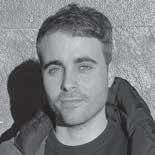
Muino batean eserita, Inaxiok emaztearen heriotza deitoratzen du bertso batekin. Bere biloba Ekaitz, aitonaren kantuak deitu izan balu bezala, baserrira itzultzen da aitona eta elikagaiak ematen dizkieten animaliak zaintzeko, horiek dituztela ere lagun. Biek, ingurua ikusteko begirada desberdinak eduki arren, bat egingo dute berriz ere eta elkarrekin egingo dizkiete aurre etorkizuneko zailtasunei.
Sitting on a hill, Inaxio mourns the death of his wife through a bertso [Basque verse]. His grandson Ekaitz seems to have been invoked by his song and returns to the farmhouse to take care of his grandfather and the animals that provide them food and company. The two, with different visions of the environment, will unite again to face the complications of the future together.
Sentado en un cerro, Inaxio lamenta la muerte de su mujer a través de un bertso [verso]. Su nieto Ekaitz parece haber sido invocado por su canto y regresa al caserío para cuidar de su abuelo y de los animales que les hacen compañía y dan alimentos. Los dos, con visiones distintas del entorno, se unirán de nuevo y harán frente a las complicaciones del futuro en común.

Nereak eta Martinak, lagun bat galdu dute. Gertaera honen ondoren ez dute elkar komunikatzea lortu. Egun batean, Nereak hondartzara gonbidatzen du Martina. Iristean, mina saiestezko, Nereak karta jokoa proposatzen dio bere lagunari. Jolasten ari dira, baina bakoitzaren jarrerak oso desberdinak dira. Nerea aktibo dago, egoerari buelta emateko gogoz, Martinak, aldiz, eta haserre dago, amorrua ematen dio Nereak egoeraz hitz egitea saihesten duela sentitzeak.
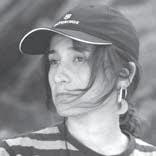
Nerea and Martina´s life has not been the same. They have been distancing themselves for a long time. They were best friends but after what happened, they do not know how to behave or what to say to each other. They keep spending time together but their conversation is not the same, they seem like two strangers. One day they decide to go to the beach to spend the day. Loneliness and their inner strength leads them to face their memories and relieve their tension.
La vida de Nerea y Martina no ha sido la misma. Llevan tiempo distanciándose. Siempre fueron las mejores amigas pero, tras lo ocurrido, no saben cómo comportarse ni qué decirse. Siguen pasando tiempo juntas, pero su conversación no es la misma, parecen dos extrañas. Un día deciden ir a la playa a pasar el día. La soledad y su propia fortaleza las lleva a enfrentar sus recuerdos y aliviar la tensión que hay entre ellas.

director · screenplay Estibaliz Urresola Solaguren cinematography Lara Vilanova editing Sergio Jiménez
sound Luca Rullo, Koldo Corella cast Begoña Suárez, Miguel Garcés, Xanti Aguirrezabalaga, Jone Laspiur, Garazi Olaizola, Oier Zuñiga, Ainhoa Jauregi production Estibaliz Urresola Solaguren - Sirimiri Films; Ana Angulo, Itxaso Frau - Katz Estudio; Lara Izagirre - Gariza Films distribution Kimuak, Marvin & Wayne @ fest@marvinwayne.com, kimuak@filmoteka.eus
Rita abesbatza batean dago, baina desegitear dago entseguetarako lokala mantentzea ahalbidetzen zien udalaren dirulaguntza galdu dutelako. Orain, taldeak erabaki egin behar du ea onartu egingo duten bailara gehien kutsatzen duen enpresaren babesletza.
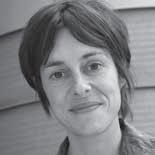
Rita belongs to a women’s choir which is in danger of breaking up because they’ve lost the municipal subsidy that allowed them renting their rehearsal room. Now the group has to decide whether accept or not the sponsorship of one of the companies that pollutes the valley the most.
La coral de mujeres a la que pertenece Rita está a punto de disolverse porque han perdido la subvención municipal que les permitía mantener el local de ensayo. Ahora el grupo tiene que decidir si acepta o no el patrocinio de una de las empresas que más contamina en el valle.

Urtebete igaro da Ainhoaren aita hil zenetik. Ordutik, amarekin bizi da aitarekin bizi ziren baserrian. Inguru guztiak aita gogorarazten dioenez, Ainhoak bertatik alde egin nahiko du. Amak, ordea, alaba berarekin mantendu nahiko du. Baserriko behi baten heriotzaren aitzakia hartuta, Ainhoa hirira joatea ekiditen ahaleginduko da ama.
A year has passed since the death of Ainhoa’s father. Since then, mother and daughter live in the farmhouse where they use to live together. As everything around reminds her of her father, Ainhoa will want to leave. Her mother, however, will try to keep her around her. With the excuse of the death of a cow in the farmhouse, the mother will try to prevent Ainhoa from leaving.

Ha pasado un año desde la muerte del padre de Ainhoa. Desde entonces, permanece con su madre en el caserío donde vivían con él. Como todo el entorno le recuerda a su padre, Ainhoa querrá abandonar el lugar. La madre, sin embargo, querrá mantener a su hija junto a ella. Con la excusa de la muerte de una vaca del caserío, la madre tratará de evitar que Ainhoa se marche.

director Tana Garrido Ruiz

screenplay · editing Tana Garrido Ruiz, Pablo Jurado cinematography Tana Garrido Ruiz, Guillermo Etchemendi sound Alberto Carlassare cast Delfina Ruiz Fernández production Tana Garrido Ruiz @ tanagarrido.art@gmail.com
Ez nuen amona ezagutu, baina orain bere etxean bizi naiz. Pareta huts bat, atearen eskutokia, tantak darion txorrota. Bere objektuen memoria arakatzen dudan bitartean, nire amaren ahotsak iragan arrakaladun bat aipatzen du. Filmatu egiten dut. Oharkabean, gurea zen kontakizunak gure izateari utzi dio.

I never met my grandmother, but I live now in what used to be her house: an empty wall, a doorknob, a dripping tap. As I trace the memory of those objects, my mother’s voice invokes a cracked past. I film. Inadvertently, a story that was ours no longer belongs to us.
Nunca conocí a mi abuela, pero ahora vivo en la que fue su casa. Una pared vacía, el pomo de una puerta, un grifo que gotea. Mientras rastreo la memoria de sus objetos, la voz de mi madre invoca un pasado agrietado. Filmo. Sin darnos cuenta, un relato que era nuestro, deja de pertenecernos.
director Maider Fernández Iriarte screenplay Maider Fernández Iriarte, Irati Gorostidi Agirretxe cinematography Carlos Muñoz Gómez-Quintero editing Virginia García del Pino sound Andrea Sáenz Pereiro cast Alai Goñi, Blanca Morera, María José Dronda, Joxemari Arrinda, Jenifer Gómez, Mari Carmen del Hierro, Nora Etxabeguren, María Luisa Garcés, Elisa Pérez production Apellaniz y de Sosa, Leire Apellaniz distribution Esther Cabero - Kimuak @ kimuak@filmoteka.eus

Sofiari Ama Birjina agertu zitzaion. Gero, Lurdako Andredena Mariaren santutegiara joan zen, eta gaitz sendaezin batetik sendatu zen. Beste garai batean eta beste leku batean, mediku-talde bat haren kasua aztertzeko bildu da. Zer gertatzen da zientziak eta erlijioak topo egiten dutenean?
The Virgin appeared to Sofía. Then she travelled to the Sanctuary of Our Lady of Lourdes and was cured of something incurable. In another time and another place, a group of doctors meet to discuss her case. What happens when science and religion meet?
A Sofía se le apareció la Virgen. Después viajó al Santuario de Nuestra Señora de Lourdes y se curó de algo incurable. En otro tiempo y otro lugar, un grupo de médicos se reúne para analizar su caso. ¿Qué sucede cuando la ciencia y la religión se encuentran?

Basoan pieza mekanikoak jasotzen dituen robot batek liluratu eta erakarri egiten duen ninfa bat aurkitu du. Izakira hurbildu eta haren antza izateko asmoz, elementu naturalekin mozorrotzen saiatuko da, beldar batek epaitzen dituen bitartean.

A robot whose job is to collect mechanical parts from the forest spots a nymph that fascinates and attracts him. Trying to look alike the wood’s creature and get near just to meet her, he starts dressing up with natural elements while a caterpillar decides if the costume is valid or not.
Un robot que se dedica a recoger piezas mecánicas en el bosque se encuentra con una ninfa que le fascina. Con el objetivo de poder acercarse y parecerse a la criatura, intentará disfrazarse con elementos naturales mientras una oruga los juzga.

Antzezle bat eta filmegile bat zinemarako gidoi bat entseatzen ari dira. Gidoiak María Dolores González Katarain “Yoyes” zenak 1980tik 1985era bitartean idatzi zuen egunkariaren zatiak jasotzen ditu. Egunkaria Mexikon erbesteratuta zegoenean idatzi zuen, jada ETAko buruzagitza eta erakunde armatua bera utziak zituenean.

An actress and a filmmaker rehearse a film screenplay. The screenplay includes excerpts from the diary written by María Dolores González Katarain “Yoyes” during her exile in Mexico between 1980 - 1985, after leaving ETA, the armed organisation she used to lead.
Una actriz y una cineasta ensayan un guion cinematográfico que recoge fragmentos del diario que María Dolores González Katarain “Yoyes”, escribió durante su exilio en México entre 1980 y 1985, tras haber abandonado ETA, la organización armada que había dirigido.

director Iñigo Jimenez Bohoyo editing Zazpi T´Erdi

sound Xabi Erkizia, Luca Rullo animation Unai Ruiz
production Kolabazulo Produkzioak @ sutiliense@yahoo.es
Rachid Infernuko auzoan bizi da, zehazki Heriotza-Fabrika zahar batean, berak deitzen duen moduan. Inork ez du ziur zergatik deitzen dioten horrela; hipotesiak eta kondairak baino ez daude. Rachidek badaki zergatik.
Rachid lives in an old Factory of Death — as he calls it, in El infierno neighborhood. Nobody really knows why do they call it like that, there are only hypotheses and legends. But Rachid do knows why.
Rachid vive en el barrio de El Infierno, concretamente en una antigua Fábrica de Muerte, tal y como él la llama. Nadie está seguro de por qué lo llaman de este modo, solo hay hipótesis y leyendas. Pero Rachid sabe el motivo.

screenplay Nerea Torrijos, Ainara Mentxaka cinematography Marino Pardo editing Lander Castro sound Iosu Gonzalez music Xabi Arratibel cast Edurne Azkarate

production Ikusgarri Films, Ahora Producciones, Epic Films @ Ikusgarrifilms@gmail.com
Karen gaztea obsesionatuta dago uneko influencer ospetsuenarekin, Kamilah Kayrekin, eta bere antz handiagoa izateko ebakuntza bat egitea erabakitzen du. Karen berriak sareetan duen harrera ona ikusita, aurreztutako diru guztia ebakuntzatan gastatzen hasten da. Zenbat eta Kamilahren antz handiagoa eta bere buruaren antz txikiagoa izan, orduan eta hobea da bere bizitza, harik eta egun batean bere bizitza berri idilikoan zerbait izugarria gertatzen delako dena hankaz gora jartzen den arte.
Karen, a young girl obsessed with the influencer of the moment, Kamilah Kay, decides to have surgery to look like her. When she sees that the new Karen is going down so well on social media, she begins to use her savings for more operations. The more closely she resembles Kamilah and the less she resembles herself, her life gets better, until one day something horrible shakes up her new idyllic life.
Karen, una joven obsesionada con la influencer más importante del momento, Kamilah Kay, decide someterse a una operación de cirugía para parecerse a ella. Al ver la buena aceptación que tiene en redes la nueva Karen, empieza a gastarse sus ahorros en más operaciones. Cuanto más se parece a Kamilah y menos a ella misma, su vida empieza a mejorar, hasta que un día, algo horrible sacudirá su nueva e idílica vida.

director · screenplay Maider Oleaga cinematography Lara Vilanova editing Maialen Sarasua sound Andrea Sáenz Pereiro music Marta Sánchez
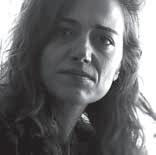
cast Izaro Nieto, Ángela Echaniz Oyarzabal, Xabier Elizalde production Ander Sagardoy, Eneko Sagardoy - Sumendi Filmak; Ander BarinagaRementeria - Galapan Productions; Maider Oleaga distribution Esther Cabero - Kimuak
@ kimuak@filmoteka.eus

Izaro eta Clara, 17 urteko neska nerabe bi, begirale lanetan ari dira haurrentzako udalekuetan. Egun berotsu batean, Clarak irrikaz musukatzen du laguna. Izaro, grinak itsututa, noraezean dabil gertatu zaiona kudeatu nahian, baina prest dago Clarari jarraitzeko, hark nahi duen eremura.
Izaro and Clara, both 17, work as instructors at a children’s summer camp. On a hot summer’s day, Clara kisses her friend passionately. Izaro, filled with desire, feels confused as she tries to process what has happened to her and is willing to follow wherever Clara wants to take her.
Izaro y Clara, dos chicas adolescentes de 17 años, trabajan como monitoras de las colonias infantiles. Un día de calor, Clara besa apasionadamente a su amiga. Izaro, impregnada de deseo, está desorientada intentando gestionar lo que le ha pasado y dispuesta a seguir hasta donde Clara quiera llevarle.
Basque Country, 2022 | 10 min | Documentary
director Irati Cano Alkain

screenplay Irati Cano Alkain
cinematography Irati Cano Alkain, Tana Garrido
editing Jorge Moneo Quintana
cast Tsomo Bayaraa, Ostaizka Serra eta Olia Toporkov.
production Irati Cano Alkain
@ info.iraticano@gmail.com

Mendeak gizonen begiradak jasaten. Orain, medusa hauek harri bihurtzen dute begiratzen dien oro.
Centuries enduring masculine gazes. Now, these jellyfish turn everyone who looks at them to stone.
Siglos soportando miradas masculinas. Ahora, estas medusas convierten en piedra a todo aquel que las mira.


director Nacho Solana screenplay Jordi Farga cinematography Laura Hojas editing Nerea Mugüerza sound Ignacio Román Muñoz, David Moikave cast Catalina Sopelana, Agus Ruiz, Loli Astoreka production Burbuja Films, Mordisco Films, [Pico tres cine], Amania films distribution Digital 104 Film Distribution @ distribucion@digital104.com
Andrea ogibide berezia duen neska gazte bat da. Norbaitek gertakari paranormalak sumatzen ditu etxean eta bera da azalpen bat eman dezakeen bakarra. Baina Andreak gauza bera esaten dio bisita bakoitzean: ez dago mamurik, inoiz gure artean egon zen norbaiten oihartzunak dira.
Andrea is a young woman with a special profession. When somebody feels paranormal phenomenons at home, she is the only one who can explain them. Nevertheless, on each visit Andrea insists: there are no ghosts, those are echos of someone who was among us once.
Andrea es una joven con un oficio particular. Cuando alguien experimenta ciertos fenómenos paranormales en su casa, solo ella puede dar una explicación. Pero Andrea insiste en cada visita: no hay fantasmas, son los ecos de alguien que una vez estuvo entre nosotros.
Berriz hasiko den baso bat. Inoiz ikusi ez duen paisaia oroitzen ari den herri bat. Eskuekin eta atxurrekin, lur idorrari eraginez, gainazalera atera nahi ditu noizbait Ullan hazitako zuhaitzak. Hemen etengabe jaiotzen ari da erreka, orain ere bai eta jada ahaztu duen hizkuntza batean mintzo da. Basoa izatera heltzean nork biziko ote du? Nola askatu daiteke lursail bat? Norbaitek izendatuko ote du? Non du hasiera herri batek?


The forest begins once again where the river is reborns constantly and murmurs in a forgotten tongue. The townsfolks work the dry soil to bring to the surface the trees that once habitated Ulla. They recall the landscape they never got to see. Who will habitate the forest when it starts to be one? Can a forest be seeded? Will someone name it? Where does a town begin?
Un bosque que vuelve a empezar. Un pueblo recuerda el paisaje que nunca llegó a ver. Manos, azadas y botas que agitan la tierra seca para sacar a la superficie los árboles que alguna vez habitaron Ulla. Aquí nace el río constantemente y murmura una lengua ya olvidada. ¿Quién habitará este bosque cuando llegue a ser? ¿Puede un bosque ser plantado? ¿Alguien lo nombrará? ¿Dónde empieza un pueblo?
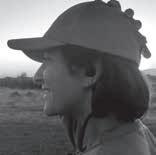
Ekaineko gau bero bat da. Maia eta Txemak ostiral arrats lasai bat pasatuko dutela pentsatzen dute. Alabaina, bere pisutik, bikoteak gatazka bat entzuten du kanpoan. Maia karrikan emazte batentzat zerbait larria gertatzen ari dela sentitzen du eta Txemaren konbentzitzea saiatzen da bere bikotea zalantzan eman arte.
A hot midsummer night. The young couple, Maia and Txema, finally relaxes after a long day. Suddenly they get anxious because of some screaming. Maia tries to convince her partner that something bad is going on. The evening out then turns into a fight that questions their relationship.
En una calurosa noche de verano, la joven pareja de Maia y Txema se relaja tras una larga jornada. Pero unos gritos en el piso de abajo les alteran. Maia trata de convencer a Txema de que algo grave ocurre. Entonces la velada se transforma en una discusión que pone en duda su relación.

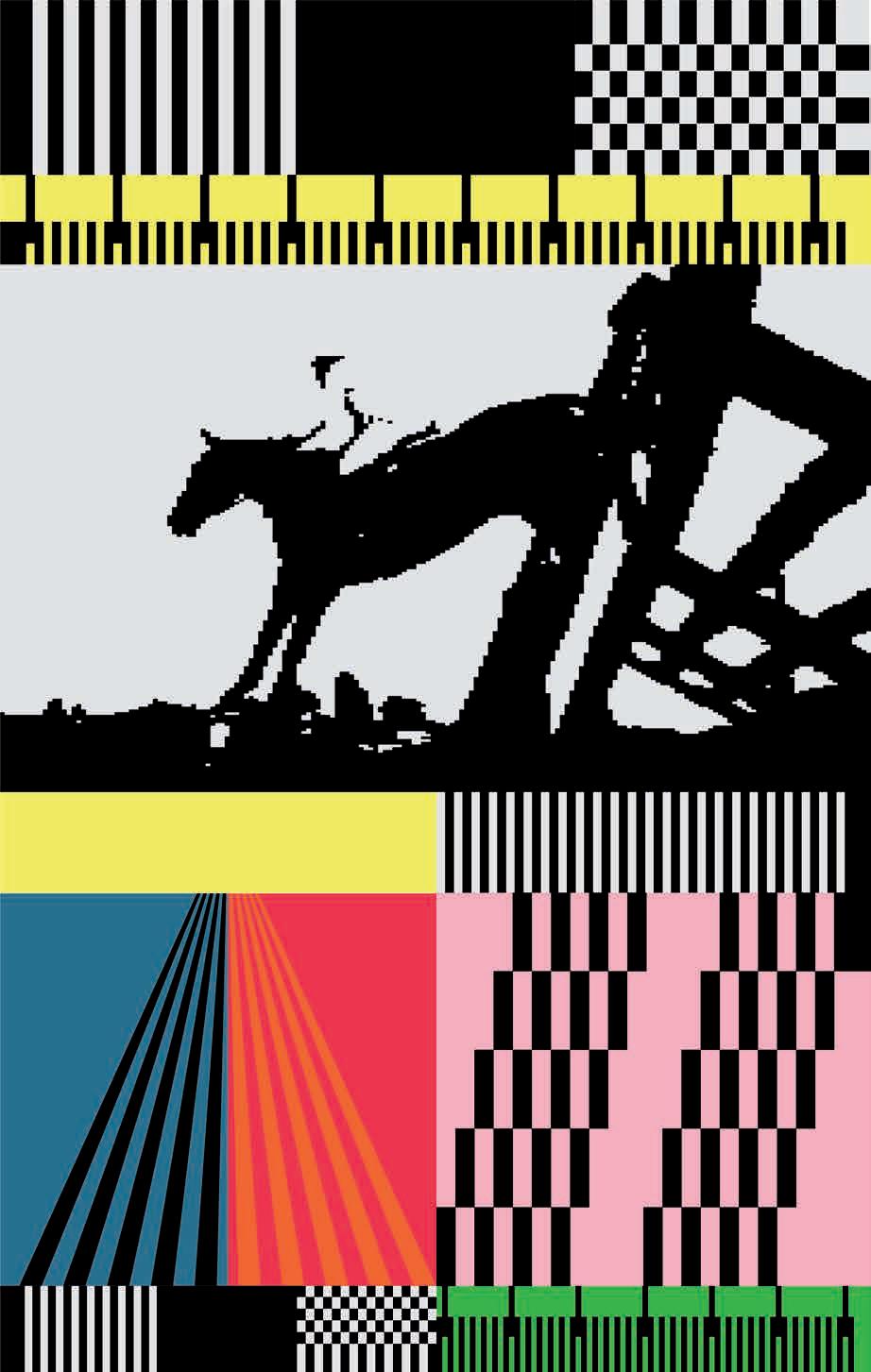
Batzuentzat errebelazio bat izan daiteke, baina Ukraina da zinema asmatu zen tokietako bat. “Mugimenduan zeuden irudiak” proiektatzeko ideia airean zebilen XIX. mende amaieran. Hala ere, zehazki 1893an, Odesan —Lumière anaiek eta Thomas Edisonek baino pixka bat lehenago— , Joseph Tymchenkok lehen zinema-aparatua asmatu zuen, baina ezin izan zuen, ez patentatu, ez haren publizitaterik egin.
Mendeetan zehar, ukrainar zinemak tartekatu egiten zituen gainbehera-aldiak eta biziraupenaren aldeko borroka-aldiak. Hala eta guztiz ere, bi Mundu Gerrek, sobietarren zentsurak, errepresioek eta errusiarren kolonizazioak ere ez zuten geldiarazi, ez ukrainar mugimendu kulturala, ez artelan zinematografiko handien agerpena. Aipatzekoak dira, besteak beste, Oleksandr Dovzhenko berritzailearenak, edo 60ko eta 70eko hamarkadako ukrainar zinema poetikoaren sortzailea den Sergiy Parajanov-renak. Azken honek egindako film bat —Shadows of Forgotten Ancestors ( , 1965)— sobietarren nazionalitate-politikaren aurkako erreakzio gisa egin zen, eta zuzendariak motibo surrealisten eta etnografikoen adierazkortasun bisualean jarri zuen arreta. Urte batzuk geroago, film hura garai guztietako film ukrainar onena izendatu zuten.
Ukrainako independentziaren garaian —SESBren kolapsoaren ondoren—, zinema ukrainarrak erronka berriei aurre egin behar izan zien, eta gainbehera bat izan zuen urte batzuetan. SESBen kolapsoaren ondoren sortzen jarraitu zuen zinema zuzendaria Kira Muratova saritua izan zen, zeinaren lanak urte askotan zentsuratuta egon baitziren. Zuzendari errusiar gisa aipatzen zuten pertsonaia ospetsu horietako bat zen, baina, benetan, jatorri judu errumaniarra zuen. Estilo nahiko berezia zuen eta, batez ere Odesan (Ukraina) bizi eta lan egin zuen, eta bere film gehienak Odesako Estudio Zinematografikoetan filmatu zituen.
90eko hamarkada gogorra izan zen Ukrainako industria zinematografikoarentzat: urtean fikziozko film bakarra ekoizten zen eta telebistarako edukiak ziren nagusi. Bereziki, errusiera hiztunei zuzendutako telesail asko egiten ziren. Horrela, bada, 2014an Ukrainako zinema-olatu berri bat sortu zen. Duintasunaren Iraultzak, Europaren aldeko aldarte berri batek, gizarte zibilaren altxamendu masibo batek eta kultura nazionala babesteko gobernu-politikak zinemagile ukrainarrei bultzada bat eman zieten, eta fikziozko filmak eta dokumental bikainak eskaini zizkiguten. Ukrainako filmak A kategoriako zinemaldietan agertzen hasi ziren, eta ukrainar zinemagileek atzerriko lankideekin batera koproduzitzen zuten, gero eta maizago. 2014tik, Ukrainak ehunka film ekoitzi ditu, eta baita nazioarteko sari ugari irabazi ere. Urte horretan
ere aurrerapauso handia eman zen fikziozko zinemagintzan. The Tribe ( , 2014), Myroslav Slaboshpytskyirena, soinurik gabeko film bat da, shock bat izan zen eta baita esperimentu bat ere, “XXI. mendeko zinema mutua”, aktore gor eta ez-profesionalekin egindakoa. Hiru sari irabazi zituen Cannesko Zinemaldian.
Eta, horrela, 5 urte geroago, 2019an, hasi zen Valentyn Vasyanovychen Atlantis ( ) filmean. Film distopikoa eta postapokaliptiko bat zen, Ukrainak gerra irabazi ondorengo etorkizunari buruzkoa, eta Veneziako Nazioarteko 76. Zinemaldiko Orizzonti sailean film onenaren saria jaso zuen. 2020an, bai Siriako, bai Ukrainako gerra bizitako gizon bati buruzko dokumentalak — Alina Gorlovaren This Rain Will Never Stop ( , 2020)— opera prima onenaren IDFA saria jaso zuen. Eta urte horretan bertan, Iryna Tsilyk ukrainar zuzendariak Munduko Zinemako Dokumentalaren kategoriako Zuzendaritza Saria irabazi zuen Sundanceko Zinemaldian, The Earth Is Blue as an Orange ( , 2020) filmarekin. ZIFF Sari Nagusia ere irabazi zuen ZINEBI - Bilboko Dokumentalen eta Film Laburren Nazioarteko Jaialdian.
Gerra eta Errusiak Krimea, Donetsk eta Luhansk eskualdeetan egindako okupazioa 2014an hasi ziren. Ukrainar zinemagileek ordura arte ezezaguna zuten erronka berri bati aurre egin behar izan zioten: nola biziraun eta filmatzen jarraitu dena erreta dagoenean, milaka pertsona hiltzen ari direnean eta zure herrialdearen zati bat okupatuta dagoenean. Baina sekretu bat aurkitu zuten, eta oso erraza zen berez: kosta ahal kosta lan egiten jarraitzea, hau zure herriagatik eta egiaren izenean egiten duzulako. Horregatik, otsailaren 24an, Errusiak eskala handiko inbasioa hasi zuenean, ez zen shock bat izan zinemagileentzat: 8 urteko praktika zuten dagoeneko. Ukrainako industria zinematografikoak jauzi handia egin zuen bere garapenean azken hamarkadan, eta horren emaitzak —egoera jasanezinean jarraitzeko zailtasunekin batera— dira ZINEBIren 64. edizioan ikusi ahal izango dituzuenak. Aurten, programan Ukrainako filmak eta Ukrainari buruzko filmak ere badaude. Mariupolis 2 ( 2, 2022), hil osteko film bat, Mantas Kvedaravičius-ena, zeina errusiar armadak udaberrian Mariupolen hil baitzuten. Filma Hanna Bilobrova emaztegaiak amaitu zuen. One Day in Ukraine ( , 2022), Volodymyr Tykhyyrena, Errusiako eskala handiko inbasio bati buruzko lehen dokumentala da. Filmak metroan ezkutatu ziren pop musikako eta Playboyko izarren, bideo-ingeniarien, pentsiodunen, haurren eta beste batzuen bizitzak erakusten dizkigu, martxo erdialdeko egun batean zehar; guztiek ere gerrari aurre egin behar diote eta gerra horren eraginak pairatzen dituz-
te. Jendeak Ukrainako beste hiri batzuetan gerrari nola aurre egin zion ikusteko aukera izango duzue Kinodopomoharen Ukraine. Overcoming the Darkness ( , 2022) dokumentalean. Aurten ZINEBIk film labur ukrainarrak ere proiektatuko ditu.
Film horiek guztiak gaur egungo ukrainarrei buruzkoak dira, gure borroka, itxaropen, beldur eta
etorkizuneko garaipenari buruzkoak. Ikusi Ukrainako filmeak, babestu gure zinemagileak eta lagundu Ukrainari askatasunaren aldeko borroka hau irabazten.
It might come as a revelation, but Ukraine is one of the places where cinema was invented. The idea of projecting “moving pictures” literally hovered in the air at the end of the 19 century. However, in 1893 in Odesa, a little bit ahead of the Lumière brothers and Thomas Edison, Joseph Tymchenko invented the first film apparatus, though couldn’t patented or advertised it.
For centuries Ukrainian cinema was in periods of decadence and struggle for survival. Nevertheless, even two World Wars, Soviet censorship, repressions, and Russian colonization couldn’t stop the Ukrainian cultural movement and the appearance of great pieces of film art such as works of the innovator Oleksandr Dovzhenko or the founder of Ukrainian poetic cinema (’60S -’70s) Sergiy Parajanov. A film by the latter — Shadows of Forgotten Ancestors ( , 1965)— was made as a reaction to Soviet nationality policy, where the director focused on the visual expressiveness of surreal and ethnographic motifs. Years later, this film was named the best Ukrainian film of all time.
In the era of Ukrainian independence after the collapse of the USSR, Ukrainian cinema faced new challenges and declined for some years. The film director who continued to create after the collapse of the USSR was award-winning Kira Muratova, whose work was censored for many years. She was one of the leading figures marked as a Russian director, but actually of Romanian Jewish descent. Having quite a unique style, she mostly lived and worked in Odesa, Ukraine, shooting most of her films at Odesa Film Studios.
The ’90s were hard on the Ukrainian film industry: only one fiction film per year was produced and TV-content prevailed, in particular, lots of TV-series created for Russian speaking audiences.
So, a new wave of Ukrainian cinema emerged in 2014. The Revolution of Dignity, a new pro-European mood, a massive uprising of civil society, and government policy in supporting national culture pushed Ukrainian filmmakers and gave us great fiction and documentary films. Ukrainian films began to appear at A-class festivals and Ukrainian filmmakers coproduced with foreign colleagues more and more. Since 2014 Ukraine produced hundreds of films and won numerous international awards. A huge breakthrough in fiction filmmaking also happened that year. The Tribe ( , 2014), by Myroslav Slaboshpytskyi is a film without any sounds, a shock, and an experiment, “silent cinema of the 21st century” featuring deaf and non-professional actors. It won three prizes at Cannes Film Festival. And so, it began already 5 years later in 2019 Valentyn Vasyanovych Atlantis ( ), the first dystopian and post-apocalyptic film about the future after Ukraine won the war, received the award for Best Film in the Horizons section at the 76th Venice International Film Festival. In the 2020 documentary about a man who faced two wars in Syria and Ukraine, This Rain Will Never Stop ( , 2020) by Alina Gorlova, got the IDFA Award for Best First Appearance. And the same year, Ukrainian director Iryna Tsilyk won the Directing Award in the World Cinema Documentary category for the film The Earth Is Blue as an Orange ( , 2020) at the Sundance Film Festival. It also won the ZIFF Grand Award at ZINEBIInternational Festival of Documentary and Short film of Bilbao.
The war and temporary occupation of Crimea, Donetsk, and Luhansk regions by Russia started in 2014. Ukrainian filmmakers faced a new previously unknown challenge. How to survive and continue to film when everything is burnt, thou-
sands of people are dying, and part of your country is under occupation? But they discovered this secret, and it was a very simple thing — just continue working against all odds, because you’re doing this for your country and in the name of truth. That’s why the 24th of February, when Russia launched a full-scale invasion, didn’t come as a shock for filmmakers — they had 8 years of practice.
The Ukrainian film industry made a giant leap in development during the last decade and the results of it as well struggle to continue under unbearable circumstances you will be able to see at the 64 ZINEBI edition.
This year the programme includes Ukrainian films and films about Ukraine. A posthumous film Mariupolis 2 ( 2, 2022) by Mantas Kvedaravičius, killed by Russian troops in Mariupol this spring. The film ended by his fiancée Hanna Bilobrova. One Day in Ukraine (
, 2022), by Volodymyr Tykhyy is the first documentary about a fullscale invasion by Russia. The film shows one middle-of-March day of the lives of pop music and Playboy stars, video engineers, pensioners and children who hid in the subway, and others, who face the war and are radically affected by it. You will also have a chance to see how people faced the war in other Ukrainian cities in the documentary Ukraine. Overcoming the Darkness ( , 2022) by Kinodopomoha. This year ZINEBI will screen Ukrainian short films also.
All these films are about Ukrainians now, our struggles, hopes, fears, and our future victory. Watch Ukrainian cinema, support our filmmakers and help Ukraine win this fight for freedom!
Iryna Kyporenko Film Programme Manager Ukrainian Institute, KyivPuede resultar una revelación, pero Ucrania es uno de los lugares donde se inventó el cine. La idea de proyectar “imágenes en movimiento” flotaba literalmente en el aire a finales del siglo XIX. Sin embargo, exactamente en 1893, en Odesa, un poco antes de los hermanos Lumière y Thomas Edison, Joseph Tymchenko inventó el primer aparato cinematográfico, aunque no pudo patentarlo ni publicitarlo.
Durante siglos, el cine ucraniano vivió períodos de decadencia y de lucha por la supervivencia. Sin embargo, ni siquiera las dos guerras mundiales, la censura soviética, las represiones y la colonización rusa pudieron frenar el movimiento cultural ucraniano y la aparición de grandes obras de arte cinematográfico, como las del innovador Oleksandr Dovzhenko o las del fundador del cine poético ucraniano (años 60 - 70)
Sergiy Parajanov. Una película de este último — Shadows of Forgotten Ancestors ( , 1965)— fue realizada como reacción a la política de nacionalidad soviética. En esta, el director se centró en la expresividad visual de los motivos surrealistas y etnográficos. Años más tarde, esta película fue nombrada la mejor película ucraniana de todos los tiempos.
Ya en la época de la independencia de Ucrania, tras la caída de la antigua URSS, el cine ucraniano se enfrentó a nuevos retos y experimentó un declive durante una serie de años. La directora de cine que continuó creando tras el colapso de la URSS fue la premiada Kira Muratova, cuya obra fue censurada durante bastantes años. Muratova fue una de las principales figuras señaladas como directora rusa, pero en realidad era de ascendencia judía rumana. Con un estilo bastante singular, vivió y trabajó sobre todo en Odesa, Ucrania, y rodó la mayoría de sus películas en los Odesa Film Studios.
Los años 90 fueron duros para la industria cinematográfica ucraniana: únicamente se producía una película de ficción al año y predominaban los contenidos televisivos, en particular, muchas series de televisión creadas para el público de habla rusa. Así, en 2014 surgió una nueva ola de cine ucraniano. La Revolución de la Dignidad, una nueva actitud proeuropea, un levantamiento masivo de la sociedad civil y la política gubernamental de apoyo a la cultura nacional impulsaron a los cineastas ucranianos y nos dieron grandes películas de ficción y documentales. Las películas ucranianas empezaron a aparecer en festivales internacionales de cine de categoría A y los
cineastas ucranianos comenzaron a coproducir cada vez más con otros colegas extranjeros. Desde 2014, Ucrania ha producido cientos de películas y ha ganado numerosos premios internacionales. Ese año también se produjo un gran avance en el cine de ficción. The Tribe ( , 2014), de Myroslav Slaboshpytskyi, es una película sin sonido, una conmoción y un experimento, “cine mudo del siglo XXI”, que cuenta con actores sordos y no profesionales. Esta ganó tres premios en el Festival de Cannes.
Y así, en el año 2019, Valentyn Vasyanovych comenzó Atlantis ( ), su primera película distópica y postapocalíptica sobre el futuro después de que Ucrania ganara la guerra. Esta obtuvo el premio a la Mejor Película de la sección Horizontes en la 76ª edición del Festival Internacional de Cine de Venecia. En 2020, el documental sobre un hombre que se enfrentó a dos guerras en Siria y Ucrania, This Rain Will Never Stop ( , 2020), de Alina Gorlova, obtuvo el Premio IDFA a la mejor ópera prima. Y ese mismo año, la directora ucraniana Iryna Tsilyk ganó el Premio de Dirección en la categoría de Documental de Cine Mundial por la película The Earth Is Blue as an Orange ( , 2020) en el Festival de Cine de Sundance. También ganó el Gran Premio ZIFF en ZINEBI - Festival Internacional de Cine Documental y Cortometraje de Bilbao.
La guerra y la ocupación temporal de las regiones de Crimea, Donetsk y Luhansk por parte de Rusia comenzaron en 2014. Los cineastas ucranianos se enfrentaron a un nuevo reto hasta entonces desconocido. ¿Cómo sobrevivir y seguir filmando cuando todo se está quemando, miles de personas están muriendo y parte de tu país está bajo una ocupación? Entonces descubrieron este sencillo secreto: seguir trabajando con-
tra viento y marea, porque lo haces por tu país y en nombre de la verdad. Por eso, el 24 de febrero, cuando Rusia lanzó una invasión a gran escala, no fue un shock para los cineastas: ya contaban con 8 años de práctica.
La industria cinematográfica ucraniana ha experimentado un espectacular avance en la última década y los resultados de la misma, así como la lucha por continuar en circunstancias insoportables, podrán verse en la 64 edición de ZINEBI.
Este año el programa incluye películas ucranianas y sobre Ucrania. Una película póstuma Mariupolis 2 ( 2, 2022) de Mantas Kvedaravičius, asesinado por las tropas rusas en Mariupol esta primavera. La película la terminó su prometida Hanna Bilobrova. One Day in Ukraine ( , 2022), de Volodymyr Tykhyy es el primer documental sobre una invasión a gran escala por parte de Rusia. La película muestra un día de mediados de marzo de la vida de estrellas de la música pop y de Playboy, ingenieros de vídeo, pensionistas y niños que se escondieron en el metro, y otros, que se enfrentan a la guerra y se ven radicalmente afectados por ella. También tendrán la oportunidad de ver cómo la gente se enfrentó a la guerra en otras ciudades ucranianas en el documental Ukraine. Overcoming the Darkness ( , 2022) de Kinodopomoha. Este año ZINEBI proyectará también cortometrajes ucranianos.
Todas estas películas tratan de los ucranianos de ahora, de nuestras luchas, esperanzas, miedos y de nuestra futura victoria. Vengan a ver cine ucraniano, apoyen a nuestros cineastas y ayuden a Ucrania a ganar esta lucha por la libertad.
Iryna KyporenkoResponsable del programa cinematográfico Ukrainian Institute, Kiev
director Mantas Kvedaravičius, (co-directed) Hanna Bilobrova edition Dounia Sichov
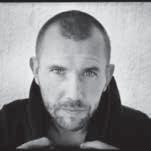
sound Rana Eid, Lama Sawaya, Sherif Allam, Rob Walker
production Uljana Kim, Mantas Kvedaravičius, Nadia Turincev, Omar El Kadi, Thanassis Karathanos, Martin Hampel; Easy Riders Films distribution Alfa Pictures
@ joan@alfapictures.com
2022an, Mantas Kvedaravičius Ukrainara itzuli zen, Mariupolera, gerraren bihotzera, 2015ean ezagutu eta filmatu zuen jendearekin egoteko. Haren heriotzaren ondoren, bere ekoizleek eta kolaboratzaileek ahalegin guztiak batu dituzte bere obra, ikuspegia eta fimak transmititzen jarraitzeko. Indar eta sentsibilitate handiz, dokumentu honek islatu egiten du nolakoa den bizitza bonbardaketen artean, eta tragedia eta itxaropena transmititzen duten irudiak erakusten dizkigu.
In 2022, Mantas Kvedaravičius went back to Ukraine, Mariupol, at the heart of the war, to be with the people he had met and filmed in 2015. Following his death, his producers and collaborators have put all their strength into continuing transmitting his work, his vision and his films. With huge force and sensitivity, the film depicts life as it continues amidst the bombing and reveals images that convey both tragedy and hope.
En 2022, Mantas Kvedaravičius volvió a Ucrania, Mariupol, en el corazón de la guerra, para estar con la gente que había conocido y filmado en 2015. Tras su muerte, sus productores y colaboradores han puesto todas sus fuerzas para seguir transmitiendo su obra, su visión y sus películas. Con gran fuerza y sensibilidad, este documento retrata la vida en medio de los bombardeos y revela imágenes que transmiten tanto tragedia como esperanza.
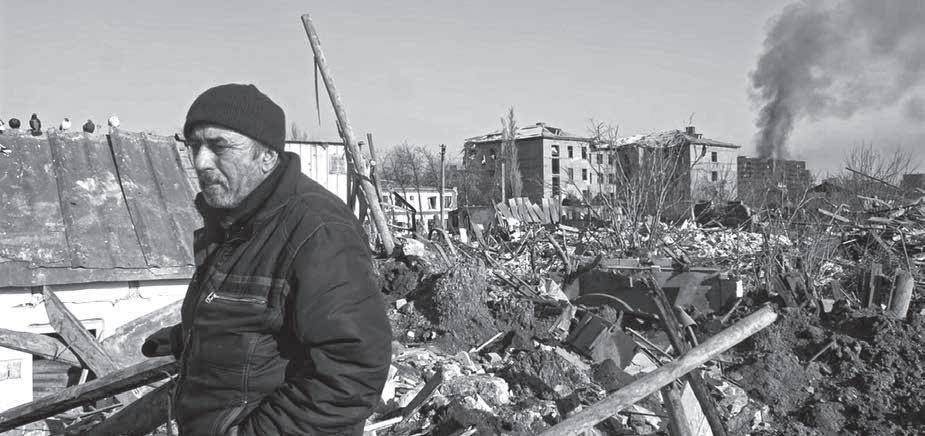
director · screenplay Volodymyr Tykhyy cinematography Yaroslav Pilunskiy, Yevhen Kozeko, Serhii Stetsenko, Ihor Ivanko, Illya Yehorov, Ivan Bannikov, Roman Liubyi, Oleksandr Shkrabak, Ihor Lutsenko, Maksym Ruban, Yuri Gruzinov, Yuri Pupyrin editing Volodymyr Tykhyy, Ivan Bannikov sound Andrii Rogachov, Maria Nesterenko, Bob Shevyakov art Mykyta Moiseiev music Mykyta Moiseiev cast Volodymyr Tykhyy, Ivan Bannikov production Igor Savychenko, Volodymyr Tykhyy - #Babylon`13; Kamil RutkowskiBlack Photon 8 (co-producer) distribution #Babylon`13 @ ukraine.babylon13@gmail.com
2022ko martxoaren 14a, Errusia eta Ukrainaren arteko gerraren 2.944. eguna. Azken asteotan, gerra biziak lekuak eta pertsonak nahastu ditu, ezaugarri eta rol berriak azalerarazten dituen dimentsio postapokaliptiko bat sortuz. Milaka kievtar metro geltokietan bizitzen ari dira. Hiriburuko aldiriak, behin eremua lasaiak zirenak, okupatzaile errusiarren suntsipenaren eta arpilatzearen gune bihurtu dira gerra honetan.
March 14, 2022, the 2,944th day of the Russian-Ukrainian War. In the last few weeks, intense warfare has surreally mixed places and people and created a post-apocalyptic dimension revealing new qualities and roles. Thousands of Kyivans have moved to live in subway stations. The capital city’s previously calm suburbs have been transformed into battle zones of destruction and looting by Russian occupiers.
14 de marzo de 2022, el día 2.944 de la guerra ruso-ucraniana. En las últimas semanas, la intensa guerra ha mezclado lugares y personas y ha creado una dimensión postapocalíptica que revela nuevas cualidades y roles. Miles de ciudadanos de Kiev se han trasladado a vivir a las estaciones de metro. Los suburbios de la capital, antes tranquilos, se han transformado en zonas de batalla, de destrucción y saqueo por parte de los ocupantes rusos.



Film laburren bilduma batek Errusiak 2022ko otsailean Ukrainan egindako inbasioaren ondorengo tragedia osoa azpimarratzen du. Xehetasun handiz erakusten du errusiarrek herrialdean nola egiten zuten aurrera, eskala handiko erasoaren eragina pairatzen zuten bizitzen eta komunitateen bitartez, eta baita lurraren alde borrokatzen dutenen bitartez ere. Dokumentalak erasoen indarra zehazten du, baina arreta nagusia komunitateen indarrean jartzen du, lazeria izugarriak pairatu baitituzte, baina erresilientziaz eusten baitiote hain zapalkuntza handiaren aurrean. Tragedia moderno honen errealitatea dokumentatzen duten gero eta film kopuru handiagoarekin bat egiten du bilduma honek.
A compendium of short films that highlight the full tragedy that followed the Russian invasion of Ukraine in February 2022. It charts the course of the Russian progression across the country through the lives and communities of those affected by the wide-scale aggression, alongside those fighting for their land. It also details the force of the assault, but its primary focus lies with the strength of the communities that have had to endure unimaginable hardships but who remain resilient in the face of such oppression. It joins an increasing number of ground-level films documenting the reality of this modern tragedy.
Este conjunto de cortometrajes destaca toda la tragedia que siguió a la invasión rusa de Ucrania de febrero de 2022, y describe los avances rusos a través de las personas y comunidades afectadas por la agresión a gran escala, que tratan de luchar por defender su territorio. El documental detalla la fuerza del asalto, aunque se centra principalmente en la fuerza de las comunidades que han tenido que soportar dificultades inimaginables, pero que siguen siendo resistentes ante tal opresión. Este documental se suma a un número cada vez mayor de películas sobre el terreno que documentan la realidad de esta tragedia contemporánea.

Obra honen ezinbesteko iturrietako bat To Watch the War (2018) bost orduko dokumental anonimoa da: topatutako metrajeko zinemagintza bere horretan. Film hau, beraz, Ukrainako Donbass eskualdean filmatutako irudi amateurren bigarren mailako jabetze artistiko bat da, eta irudi horiek konbinatu egiten dira Kavelinak berak egindako gerraren aurkako poema surrealista bat sortuz. Gerrako bideoen artean tartekatu egiten dira zuzendariaren beraren segmentu bizidunak, mise-en-scènes antzeztuak eta 1930etik aurrerako Donbasseko artxiboko irudiak (garai hartan eskualdea Estalinen Sobiet Batasunaren industrializazioaren ardatz bihurtu zen, eta baita klaseen arteko gerra kartsu baten gune ere).
Based on the found-footage anonymous five-hour documentary, To Watch the War (2018), this film is thus a second-degree artistic appropriation of amateur footage shot during the war in the Donbass region of Ukraine, recombined into a surreal anti-war film-poem — authored by Kavelina herself. The war videos are interspersed with the director’s own animated segments, staged mise-en-scènes, and archival footage of the Donbass from the 1930s (when the region became a hotspot for Stalinist industrialization of the Soviet Union, and of heated class warfare) onwards.
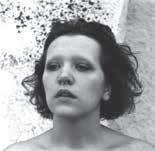
Basado en el documental de cinco horas realizado con metraje encontrado, To Watch the War (anónimo, 2018), esta es una apropiación artística de segundo grado de material amateur filmado durante la guerra del Dombás, integrado a un surrealista poema cinematográfico antibélico de autoría de la propia directora. Los vídeos de la guerra se intercalan con segmentos animados de la mano de Kavelina, puestas en escena e imágenes de archivo del Dombás desde la década de 1930 (cuando la región se convirtió en un punto caliente de la industrialización estalinista de la Unión Soviética y de la encarnizada guerra de clases) en adelante.
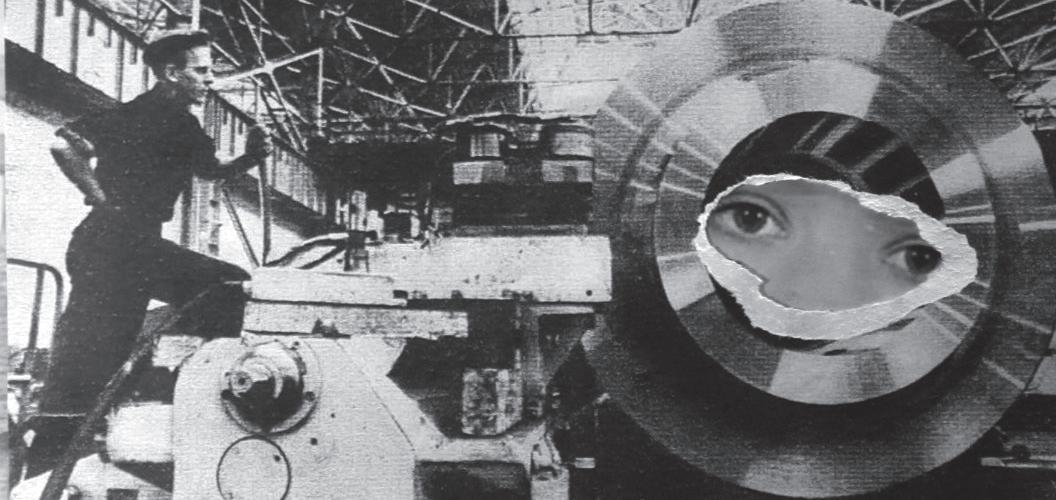
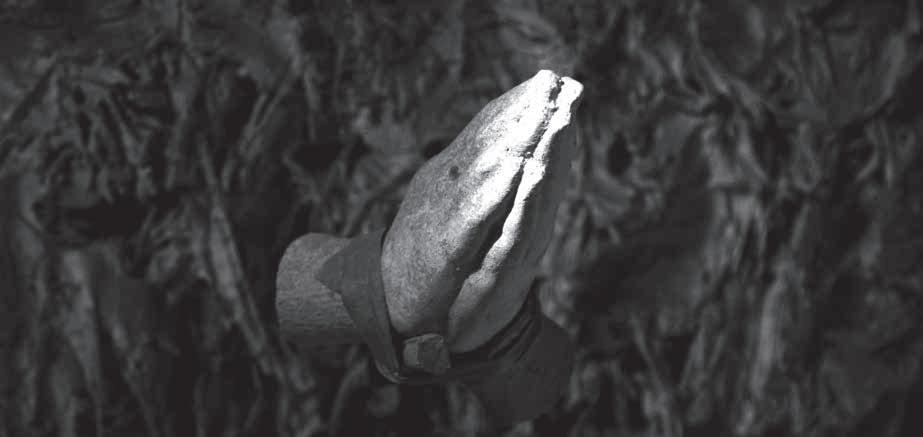
director · screenplay Dmytro Sukholytkyy-Sobchuk cinematography Dmytro Sukholytkyy-Sobchuk, Andriy Lysetskiy, Kostiantyn Kliatskin, Denys Vorontsov, Denys Tokarev editing Sergo Klepach sound Maria Nesterenko art Choir Artos (Conductor Natalia Ivashkiv) music Choir Artos (Conductor Natalia Ivashkiv) cast Sergo Klepach production The New Yorker distribution CUC (Contemporary Ukrainian Cinema) @ dmytro.sukholytkyy.sobchuk@gmail.com
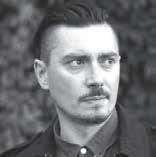
Ukrainako errealitatea bi alditan banatzen da: gerra aurrekoa eta gera ondorengoa. Herrialde osoa hartzen duen erresistentzian, herritar oro saiatzen da laguntzen. Ukrainarrek ogibideak aldatu dituzte gerra garaiko beharretara egokitzeko. Eskultoreek tankeen aurkako oztopoak fabrikatzen dituzten beren arte lantegietan. Terrakotazko armada bezalaxe, irudi isilak —Ukrainako pertsonaia ospetsuenak, aingeruenak, kosakoenak eta Jesu Kristoren kopia ugari— izoztuta daude sorkuntza berriak iristen diren bitartean. Artisauek metalezko tresnak galdatzen dituzte Ukrainako Indar Armatuentzat.
Ukrainian reality is divided into two periods — before and after the war. In the nationwide resistance, every citizen tries to be helpful. Ukrainians change professions and adapt to wartime needs. Sculptors fabricate anti-tank obstacles in their art workshops. Just like the Terracotta Army, silent figures of Ukrainian personalities, angels, Cossacks, and multiple copies of Jesus Christ are frozen in anticipation of new creations. Craftsmen weld metal defense items for the Armed Forces of Ukraine.
La realidad ucraniana se divide en dos períodos: antes y después de la guerra. En la resistencia a nivel nacional, todos los ciudadanos intentan ser útiles. Los ucranianos cambian de profesión y se adaptan a las necesidades de la guerra. Los escultores fabrican obstáculos antitanque en sus talleres de arte. Como un ejército de terracota, figuras mudas de personalidades ucranianas, ángeles, cosacos y múltiples copias de Jesucristo se congelan a la espera de nuevas creaciones. Los artesanos sueldan artículos metálicos de defensa para las Fuerzas Armadas de Ucrania.
Errusiak Ukraina inbaditu eta bi astera idatzia, drama honek Andrii Bondarenko antzerkigileak Ukrainan izandako bizitza irudikatzen du: bere haurtzaroko bakea eta lasaitasuna, eta dena markatu zuten trauma historikoak, iraultzak eta gerra.
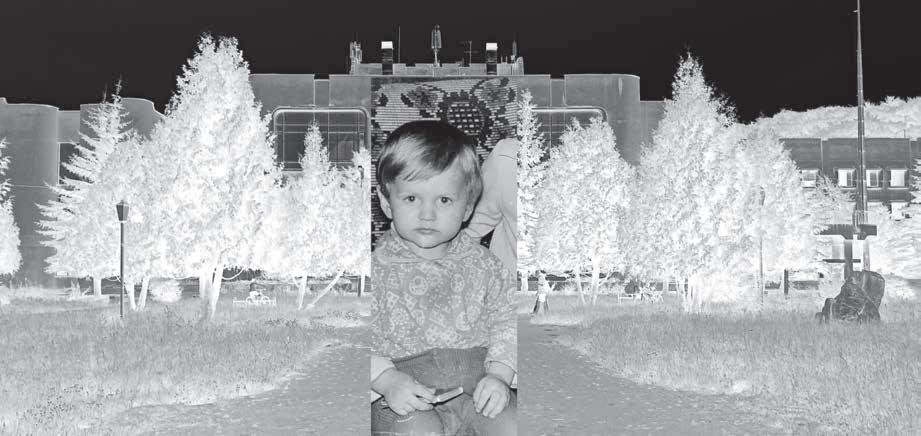
Written two weeks after Russia’s invasion of Ukraine. This drama conjures up playwright Andrii Bondarenko’s life in Ukraine: the peace and tranquillity of his boyhood — bookended by historical traumas, revolutions and war.
Este drama, escrito dos semanas después de la invasión rusa de Ucrania, evoca la vida del dramaturgo Andrii Bondarenko en Ucrania: la paz y la tranquilidad de su infancia, marcadas por traumas históricos, revoluciones y guerras.

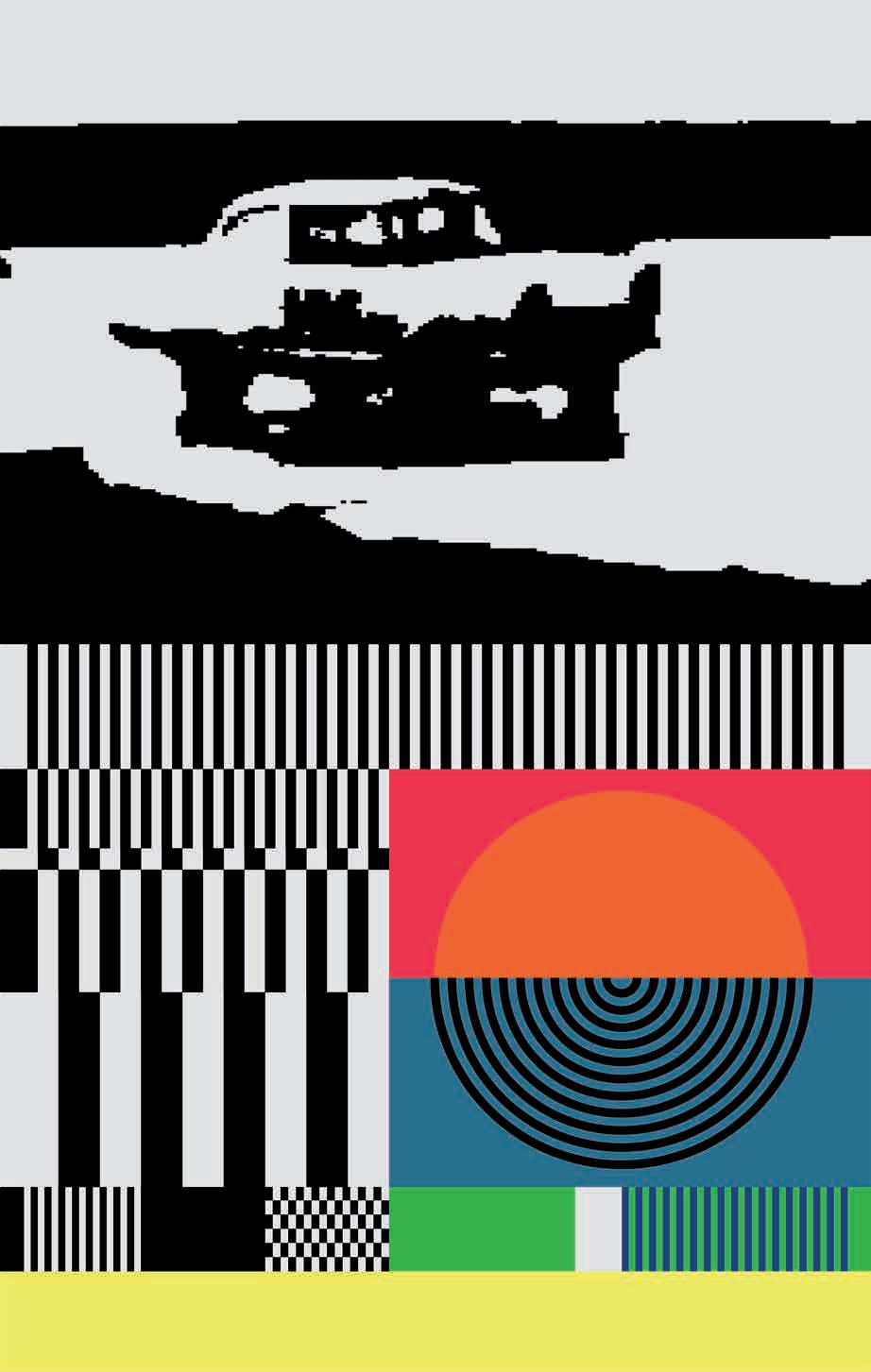
1996an, Éric Rohmerrek gertuen zituen kolaboratzaile batzuekin lan egin zezakeela pentsatu zuen —tailer kolektibo moduko batean, industria tradizionaletik at—, eta bere ekoiztetxe txikiarekin (CER zuen izena, Compagnie Éric Rohmer) zenbait film labur jarri zituen martxan, Françoise Etchegaray bere lankide estua eta ohiko ekoizpen-zuzendaria zenarekin elkarlanean, eta nolabaiteko “familia egonkor” batekin batera: Diane Baratier argazkiaz arduratzen zen, Mary Stephen muntaiaz eta Pascal Ribier soinuaz. Horrela, lau film laburrez osatutako lehen serie bat sortu zen (“Anniversaires” izenburu generikoarekin), esparru tematiko baten inguruko istorioekin: France (Diane Baratier), Des Goûts et des Couleurs (Anne-Sophie Rouvillois), Heurts Divers (Florence eta Frédéric Rauscher) eta Les Amis de Ninon (Rosette), aipatutako emakume horiek idatzitakoak. Eta, geroxeago, hamarkada amaiera aldera, talde berarekin beste serie bat jarri zuen martxan, gai komun bati buruzkoa ere (oraingoan “Le Modèle” zen), hainbat sortzaileren eta erretratatzen dituzten emakumeen arteko harremanak aztertzeko sortua. Horrela, sei pieza berri sortu ziren, baina oraingoan tarte handiagoa zegoen horien sortzeuneen artean. Sei film labur, honako hauek izan zirela lehen zirriborren arduradun, hurrenez hurren: Un Dentiste Exemplaire (Aurélia Alcaïs, Haydée Caillot, Stéphane Pioffet, 1998), Une Histoire qui se Dessine (Rosette, 1999), La Cambrure (Edwige Shaki, 1999), Le Canapé Rouge (Marie Rivière, 2004), Le Nu à la Terrasse (Joëlle Miquel, 2008) eta La Proposition (Anne-Sophie Rouvillois, 2009).
France izan ezik, non Rohmerrek Diane Baratierri (garai hartan bere ohiko argazkizuzendaria zenari) filma idazteko, zuzentzeko eta argazkia egiteko erabateko askatasuna ematen dion, gainerako guztiak lehen aipatutako emakumeek idatzi edo iradokita daude hasieran, baina gidoiaren lehen bertsio hori Rohmerrek berak berrikusten du gero, sakonki berridatziz edo elkarrizketak berreginez. Eta ez hori bakarrik: zinemagileak castingaren gaineko kontrol zorrotza egiten du,
bertan dago filmatzen dutenean, eszenaratzea eta plangintza zehazten ditu, eta muntaian ere parte hartzen du, beti Mary Stephenen ondoan. Kolaboratzaileei ahalik eta ikusgaitasun handiena emateko, kredituetan haiek agertzen dira beti idazketaren arduradun gisa; Rohmerrek, berriz, “Eric” (edo soilik “Rohmer”) diskretu batekin sinatzen du découpagea, baina fotograma beraren barruan, non —tipografia berberarekin— “Diane”k (edo “Baratier”) argazkia sinatzen baitu, “Pascal”ek (edo “Ribier”) soinua eta “Mary”k (edo “Stephen”) muntaia, bere lanerako ahalik eta diskrezio eta anonimotasun handiena bilatuz.
“Le Modèle” serieko film laburrek modu esplizituan jorratzen dituzte desioaren bulkada anbiguoen eta irudikapen artistikoen arteko harremanak, eta deigarriki esplizitua den moduan barneratzen dira biluziaren irudikapenean eta erotismoari buruzko hausnarketa intelektualean. Horrek azaltzen du biluzien plano osoak edo partzialak aurkitu ahal izatea, naturaltasun handiz grabatuta, adibidez, Un Dentiste Exemplaire, La Proposition eta La Cambrure filmetan, guztiak ere desira erotikoaren eta sorkuntza estetikoaren arteko loturetan egindako ikerketak baitira, sentsualitate esplizituz blaituak.
“Cuentos morales” deritzonetako protagonista batzuen nortasunaren azpian ezkutatzen den bulkada fetitxista eta nartzisista berriro agertzen da hemen, argazkilari baten (Un Dentiste Exemplaire), eskultore baten eta arte-ikasle baten (La Cambrure) eta hainbat margolariren (Le Canapé rouge, Le Nu à la terrasse, La Proposition) begirada voyeurpean makurtuta, baina baita bakoitzaren modeloen begiradan eta jarreran ere. Forma artistiko “handia”ren berezko tentaziotik eta hertsaduretatik askatutako zirriborroak eta saiakerak balira bezala, askatasun osoz eta inolako zor komertzialik gabe filmatuak, sei piezek berehalakotasun fisiko garbia arnasten dute, garaikidea den horren bibraziotik oso gertu.
Éric Rohmerren atelierra | Éric Rohmer's Atelier | El atelier de Éric RohmerIn 1996, Éric Rohmer devised the possibility of working - in a kind of group workshop, outside the traditional industry - with some of his closest associates on a number of short films created with his own small production company (CER; Compagnie Éric Rohmer), working closely alongside his usual head of production and right-hand woman, Françoise Etchegaray, and also a kind of “stable family”: Diane Baratier for photography, Mary Stephen on editing, and Pascal Ribier on sound.
This led to an initial series of four short films (under the generic title “Anniversaires”), with stories based on this common theme: France (Diane Baratier), Des Goûts et des Couleurs (Anne-Sophie Rouvillois), Heurts Divers (Florence and Frédéric Rauscher) and Les Amis de Ninon (Rosette), written by the aforementioned women. And slightly later, towards the end of the decade, he used the same team to bring out another series on a common theme (this time: “Le modèle”), devised to examine the relations between a number of creators and the women they portray. This brought about six new works, albeit with longer intervals between them: Six short films, with titles and directors in their initial versions as follows: Un Dentiste Exemplaire (Aurélia Alcaïs, Haydée Caillot, Stéphane Pioffet, 1998), Une Histoire qui se Dessine (Rosette, 1999), La Cambrure (Edwige Shaki, 1999), Le Canapé Rouge (Marie Rivière, 2004), Le Nu à la Terrasse (Joëlle Miquel, 2008) and La Proposition (Anne-Sophie Rouvillois, 2009).
With the sole exception of France, where Rohmer gave Diane Baratier (his usual director of photography at the time) free rein to write, direct and photograph the film, all the rest were initially written or suggested by these women, but the first version of the script was then revised by Rohmer, who rewrote and reworked the dialogues. And not only that: the director also took firm control of the casting, he was present during
shoots, he managed scenes and took charge of planning, and also worked on editing, alongside Mary Stephen at all times. To give his associates maximum visibility, they always appear in the script credits, whereas Rohmer signs off exclusive découpage discreetly as “Eric” (or just “Rohmer” in other cases), but, in the photogram — in the same font — “Diane” (or “Baratier”) signs off on the photography, “Pascal” (or “Ribier”) on the sound, and “Mary” (or “Stephen”) on the editing, seeking the greatest possible discretion and anonymity for his work.
The short films in the “Le modèle” series explicitly address relations between ambiguous impulses of desire and artistic representations, moving with striking explicitness into the representation of nudity and intellectual reflection on eroticism. This means it is possible to find total or partially nudity in the ultra-natural scenes of Un Dentiste Exemplaire, La Proposition and La Cambrure, investigations into the links between erotic desire and aesthetic creation impregnated with explicit sensuality.
The fetishist, narcissistic impulse hidden away in the personality of some of the characters in the “Contes moraux” emerges again here as the voyeuristic gaze of a photographer (Un Dentiste Exemplaire), a sculptor and an art student (La Cambrure) and successive painters (Le Canapé Rouge, Le Nu à la Terrasse, La Proposition), but also in the gaze and attitudes of the respective models. As if they were preliminary sketches and test pieces free of the temptations and constrictions of artistic “large format”, filmed in total freedom with no commercial easements of any kind, the six works exude an immediate physical neatness closely linked to the vibrations of contemporary art forms.
Carlos F. Heredero (Caimán Cuadernos de Cine, nº 171; November 2022)
En 1996, Éric Rohmer concibe la posibilidad de trabajar —en una especie de taller colectivo, al margen de la industria tradicional— con algunos de sus colaboradores más cercanos en una serie de cortometrajes que pone en marcha con su propia y pequeña productora (la CER; Compagnie Éric Rohmer), en estrecha colaboración con su habitual directora de producción y mano derecha, Françoise Etchegaray, y con una especie de “familia estable”: Diane Baratier en la fotografía, Mary Stephen en el montaje y Pascal Ribier en el sonido.
Surge así una primera serie de cuatro cortos (bajo el título genérico de “Aniversarios”) cuyas historias giran sobre ese marco temático común: France (Diane Baratier), Des Goûts et des Couleurs (Anne-Sophie Rouvillois), Heurts Divers (Florence y Frédéric Rauscher) y Les Amis de Ninon (Rosette), escritos por las mujeres aquí citadas. Y algo más tarde, hacia el final de década, pone en marcha con el mismo equipo otra serie diferente también sobre un tema común (esta vez: “El modelo”), concebida para examinar las relaciones entre diferentes creadores y las mujeres a las que retratan. Surgen así seis nuevas piezas, pero esta vez con una gestación más distanciada entre ellas. Seis cortos cuyos títulos y responsables de su primer esbozo son, respectivamente: Un Dentiste Exemplaire (Aurélia Alcaïs, Haydée Caillot, Stéphane Pioffet, 1998), Une Histoire qui se Dessine (Rosette, 1999), La Cambrure (Edwige Shaki, 1999), Le Canapé Rouge (Marie Rivière, 2004), Le Nu à la Terrasse (Joëlle Miquel, 2008) y La Proposition (Anne-Sophie Rouvillois, 2009).
Con la única excepción de France, en el que Rohmer permite a Diane Baratier (su habitual directora de fotografía por aquella época) una libertad total para escribir, dirigir y fotografiar el film, todos los demás están inicialmente escritos o sugeridos por las mujeres antes citadas, pero esa primera versión del guion es revisada después por el propio Rohmer, que la reescribe a fondo y rehace los diálogos. Y no solo eso: el cineasta ejerce luego un severo control sobre el
casting, está presente en el rodaje, determina la puesta en escena y la planificación e interviene también en el montaje, siempre al lado de Mary Stephen. Para ceder a sus colaboradoras la máxima visibilidad, en los créditos ellas aparecen siempre como responsables de la escritura, mientras que Rohmer firma exclusivamente el découpage con un discreto “Eric” (o solamente “Rohmer” en otros), pero dentro del mismo fotograma en el que —con idéntica tipografía— “Diane” (o “Baratier”) firma la fotografía, “Pascal”(o “Ribier”) el sonido y “Mary” (o “Stephen”) el montaje, buscando así la mayor discreción y anonimato posible para su trabajo.
Los cortos de la serie “El modelo” abordan de forma explícita las relaciones entre los ambiguos impulsos del deseo y las representaciones artísticas, adentrándose con llamativa explicitud en la representación del desnudo y en la reflexión intelectual sobre el erotismo. De ahí que sea posible encontrar planos de desnudo total oparcial, filmados con total naturalidad, en Un Dentiste Exemplaire, La Proposition y La Cambrure, sendas indagaciones en los vínculos entre el deseo erótico y la creación estética impregnadas de una explícita sensualidad.
El impulso fetichista y narcisista que se esconde bajo la personalidad de algunos protagonistas de los “Cuentos morales” reaparece aquí agazapado bajo la mirada voyeur de un fotógrafo (Un Dentiste Exemplaire), de un escultor y de un estudiante de arte (La Cambrure) y de sucesivos pintores (Le Canapé Rouge, Le Nu à la Terrasse, La Proposition), pero también en la mirada y en la actitud de sus modelos respectivos. Como si fueran bocetos y ensayos liberados de la tentación y de las constricciones propias de la “gran forma” artística, filmadas con entera libertad y sin servidumbres comerciales de ningún tipo, las seis piezas respiran una limpia inmediatez física estrechamente pegada a la vibración de lo contemporáneo.
Carlos F. Heredero (Caimán Cuadernos de Cine, nº 171; noviembre, 2022)
Éric Rohmerren atelierra | Éric Rohmer's Atelier | El atelier de Éric RohmerFrance, 1996 | 25 min | Fiction
director · screenplay Rosette découpage Éric Rohmer cinematography Diane Baratier, Sébastien Leclercq editing Mary Stephen sound Pascal Ribier music Ronan Girre, Jean-Louis Valéro cast Rosette, Julie Jézéquel, Philippe Caroit, Mickaël Kraft, Dominique Lyon, Pascal Greggory, Arielle Dombasle, Isild Le Besco production Françoise Etchegaray - Compagnie Éric Rohmer @ compagnie.eric.rohmer@gmail.com
Ezkonduta egon arren, Ninonek bere maitale eta ezkongai ohi batzuk gonbidatzen ditu bere urtebetetzera.
Although she is a married woman, Ninon decides to invite some of her former lovers and would-be lovers to her birthday party.
Pese a estar casada, Ninon decide invitar a su cumpleaños a algunos de sus antiguos amantes y pretendientes.

France, 1993 | 12 min | Fiction
director · screenplay Haydée Caillot découpage Éric Rohmer cinematography Denis Morel editing Yves Sarda sound Ludovic Hénault music Roland Vincent cast Dorothée Blanck, Corinne Colas, Jean-Luc Revol production Françoise Etchegaray - Les Films du Losan - Compagnie Éric Rohmer @ compagnie.eric.rohmer@gmail.com

Bere 50. urtebetetze egunaren bezperan, Paula Dukerquera itzultzen da, aspaldi bizi izan zen lekura. Han, ez du aurkitzen bere iraganeko gizon bakar bat ere.
The day before she turns 50, Paula goes back to Dunkirk, where she lived some time ago. There she does not meet up with any men from her past.
En la víspera de su 50 cumpleaños, Paula regresa a Dunkerque, donde vivió hace tiempo. Allí, no da con ninguno de los hombres de su pasado.
Éric Rohmerren atelierra | Éric Rohmer's Atelier | El atelier de Éric RohmerFrance, 1999 | 16 min | Fiction
director · screenplay Edwige Shaki découpage Éric Rohmer cinematography Diane Baratier editing Mary Stephen sound Pascal Ribier cast Edwige Shaki, François Rauscher, André Del Debbio production Françoise Etchegaray - Compagnie Éric Rohmer @ compagnie.eric.rohmer@gmail.com
Roman, Artearen Historiako ikaslea, Evaz maiteminduta dago; neska gazte haren siluetak osabak egindako eskultura bat ekartzen dio gogora.
Roman, an Art History student, is in love with Eva, a girl whose silhouette reminds him of a sculpture his uncle made.
Roman, estudiante de Historia del Arte, está enamorado de Eva, una joven cuya silueta le recuerda la de una escultura que hizo su tío.

France, 2004 | 24 min | Fiction
director · screenplay Marie Rivière découpage Éric Rohmer cinematography Diane Baratier editing Mary Stephen sound Pascal Ribier
cast Marie Rivière, Charlotte Vêry, Philippe Magnan production Françoise Etchegaray, Bethsabée Dreyfus - Compagnie Éric Rohmer @ compagnie.eric.rohmer@gmail.com
Luciek eta Evak ustekabean topo egiten dute aspaldian elkar ikusi gabe egon eta gero. Eva margolaria da orain, eta Lucie konbentzitu egin du berarentzat posa dezan bere egongelako sofa gorrian.
Lucie and Eva meet up by chance after a long time with no contact. Eva, who has become a painter, persuades Lucie to pose for her on the red sofa in her lounge.
Lucie y Eva se encuentran por casualidad después de mucho tiempo sin verse. Eva, que se hizo pintora, convenció a Lucie para que posase para ella en el sofá rojo de su salón.
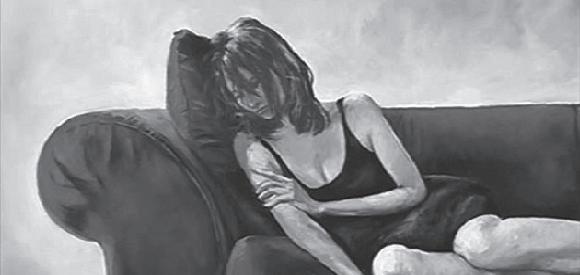 Éric Rohmerren atelierra | Éric Rohmer's Atelier | El atelier de Éric Rohmer
Éric Rohmerren atelierra | Éric Rohmer's Atelier | El atelier de Éric Rohmer

director · screenplay Aurélia Alcaïs, Stéphane Pioffet, Haydée Caillot cinematography Diane Baratier editing Mary Stephen sound Pascal Ribier music Sébastien Erms cast Aurélia Alcaïs, Laura Favali, Stéphane Pioffet, Jeanloup Sieff, Joël Barbouth production Françoise Etchegaray - Compagnie Éric Rohmer @ compagnie.eric.rohmer@gmail.com
Mélanie Parisen ikasten ari den neska gazte bat da, eta biluzik posatuko du argazkilari batentzat.
Mélanie is a young student who is going to pose nude for a photographer.
Mélanie es una joven estudiante parisina que va a posar desnuda para un fotógrafo.
France, 1996 | 17 min | Fiction
director · screenplay · cinematography Diane Baratier découpage Éric Rohmer editing Mary Stephen sound Pascal Ribier, Ghislaine Vingot music Rémy Chaudagne cast Nathalie Moncorger, François Raoul-Duval, France Zobda production Compagnie Éric Rohmer @ compagnie.eric.rohmer@gmail.com

Bere urtebetetze egunean, France, alaitu beharrean, bere beldurretan sartuz doa.
Instead of feeling happy on her birthday, France gradually succumbs to her fears.
En el día de su cumpleaños France, en lugar de alegrarse, va encerrándose en sus miedos.
Éric Rohmerren atelierra | Éric Rohmer's Atelier | El atelier de Éric RohmerFrance, 1996 | 21 min | Fiction
director Anne-Sophie Rouvillois découpage Éric Rohmer screenplay Éric Rohmer, Anne-Sophie Rouvillois cinematography Diane Baratier, Sébastien Leclercq editing Mary Stephen sound Pascal Ribier music Konrad Max Kunz cast Laure Marsac, Éric Viellard, Anne-Sophie Rouvillois production Françoise Etchegaray - Compagnie Éric Rohmer @ compagnie.eric.rohmer@gmail.com
Nicolasek Violette gonbidatzen du bere urtebetetzea elkarrekin ospatu dezaten.

Nicolas invites Violette to celebrate his birthday with him.
Nicolas invita a Violette a celebrar juntos su cumpleaños.
France, 1997 | 24 min | Fiction

director · screenplay François Rauscher, Florence Rauscher découpage Éric Rohmer cinematography Diane Baratier, Thierry Faure editing Mary Stephen sound Pascal Ribier, Laurent Lafran, Jean-Paul Mugel music Marc Bredel, Matthieu Davette cast Julie Debazac, Laurent Le Doyen, Florence Rauscher, François Rauscher production Françoise Etchegaray - Compagnie Éric Rohmer @ compagnie.eric.rohmer@gmail.com
Florence eta François anaiak aitaren urtebetetzea ospatzeko prestatzen ari dira.
Florence and her brother François get ready to celebrate their father’s birthday.
Los hermanos Florence y François se preparan para festejar el cumpleaños de su padre.
Éric Rohmerren atelierra | Éric Rohmer's Atelier | El atelier de Éric RohmerFrance, 1999 | 10 min | Fiction

director · screenplay Rosette découpage Éric Rohmer cinematography Diane Baratier editing Mary Stephen sound Pascal Ribier cast Rosette, Emmanuel Salinger, Vincent Dieutre, Michiko Sato, Masahiro Miyata production Françoise Etchegaray - Compagnie Éric Rohmer, Les Films du Losan @ compagnie.eric.rohmer@gmail.com
Ninon eta Vincent kaleko bi margolari dira, eta erretrata ditzaketen turisten ehizan dabiltza Parisko kaleetan.
Ninon and Vincent are two street artists on the lookout for tourists to draw in the streets of Paris.
Ninon y Vincent son dos dibujantes callejeros a la caza de turistas a los que retratar por las calles de París.
France, 2008 | 26 min | Fiction
director · screenplay Annie Balkarash découpage Éric Rohmer cinematography Diane Baratier sound Pascal Ribier music Louis de Venthobe cast Fanny Vambacas, Olivier Blond, Marie-Françoise Audollent, Camille Vambacas, Alexandre Murard production Françoise Etchegaray - Compagnie Éric Rohmer @ compagnie.eric.rohmer@gmail.com

Bikote ezkonberri bat bere apartamentu berrira iritsi berri da. Hura apaintzeko, luzaroan beraiekin egongo den 30eko hamarkadako pintura bat aukeratzen dute.
A newly-wed couple have just moved into their home. To decorate the new flat they choose a 1930s paint which will stay with them for a long time.
Una pareja de recién casados se acaba de instalar. Para decorar su nuevo apartamento eligen una pintura de los años 30 que los acompañará durante mucho tiempo.
Éric Rohmerren atelierra | Éric Rohmer's Atelier | El atelier de Éric RohmerFrance, 2009 | 15 min | Fiction
director · screenplay Anne-Sophie Rouvillois screenplay Anne-Sophie Rouvillois, Éric Rohmer, Sybille Chevrier cinematography Diane Baratier editing Mary Stephen sound Pascal Ribier music Marcela Coloma cast Elodie Meurlarger, Adèle Jayle, Yves Alcaïs production Françoise Etchegaray - Compagnie Éric Rohmer @ compagnie.eric.rohmer@gmail.com

Parisen ikasle dabilen neska gazte bat margolari batentzat biluzik posatzea pentsatzen ari da.
A young girl studying in Paris considers posing nude for a painter.
Una joven estudiante parisina se plantea posar desnuda para un pintor.

Itsasadar bat ez da ibai bat. Uren arteko topagune bat da. Puntu zehatz batean, ibaiak ibai izateari uzten dio eta itsasoak lurrean duen sargune bihurtzen da, itsasadar bihurtzen da. Ur gaziko mihi hori itsasaldien ekintzaren mende dago. Ilargiaren eta eguzkiaren erakarpen grabitatorioek sortzen eta zuzentzen dituzte bere erritmoak. Bilboko itsasadarreko urak itsasaldien erritmo ziklikoen mende dauden bitartean, ibaiertzak denbora historikoaren inposaketen mende daude. Abandoibarra izan zen joan den mende amaieran “Bilbo efektua” izenez ezagutzen dena eragin zuten hirigintza eraldaketen epizentroa; gaur egun, bertan, museo bat, kongresu jauregi bat, etxe orratz bat, paraninfo bat, merkataritza gune bat eta luxuzko hainbat etxebitza daude, duela hogeita hamar urte ontziola bat, tren linea bat, edukiontzi terminal bat eta zamalanetarako garabi batzuk zeuden lekuan. Hamarkada batzuk lehenago, portuko instalazioekin batera, hirira lan bila etorritako pertsonek eraikitako txabolen kokaleku bat zegoen.
Urak dakar Bulegoa z/b ren Space is The Place / The Place is Space programaren edizio berria da. Programa 2018an hasi zen, eta 1974an Sun Rak egindako film afrofuturistaren izenburua parafraseatzen du.
ZINEBIren 64. edizioan egindako proiekzio batzuekin eta topaketa batzuekin, Urak dakar-en udazkeneko programa estrategia afrofuturistan oinarritzen da: fikzioa tresna gisa erabiltzen du, denborazkotasunak desordenatzeko eta historiaren irakurketa berriak eskaintzeko. Programak hainbat gai jorratuko ditu: hala nola kapitalis-
moaren eta haren iragan kolonialaren egiturazko indarkeriak, edo oroimenaren eta ekintza kolektiboaren ahalmenak. Bi ekitaldiak Abandoibarran izango dira, non iragan industrialaren arrastoak ezabatu egin baitira eta eraikin berrien akabera distiratsuekin ordezkatu baitituzte. Hori aprobetxatu nahi izan dugu proposatzeko lekuan bertan pentsatzea, espazioan eta tokiarekin.
Programa honako hauek osatzen dute: A la vuelta del grito (Lumbreras, Lisa, Colectivo Cine de Clase, 1976/77), Territories (Isaac Julien, Sankofa Film, Video Collective, 1984), Handsworth Songs (Akomfrah, Black Audio Film Collective, 1986), Serpent Rain (Neuman, Ferreira, 2016) eta Euritan (Gorostidi, Santesteban, 2017). Bost filmak testuinguru geografiko eta denborazko anitzetakoak dira, eta zinema tresna kritiko gisa ulertzeko modu bera dute.
Honako hizlari hauek izango ditugu Bizkaia Aretoko topaketetan: Sara Alberani eta Marta Federici, Denise Ferreira da Silva eta Arjuna Neuman, Irati Gorostidi eta Arantza Santesteban, Louis Henderson eta Kodwo Eshun, Pablo La Parra, Rachel Weiss; eta performer gisa: Josu Bilbao eta Estanis Comella, Giulia Crispiani eta Patrizia Rotonda, Sofía Montenegro, Itziar Okariz. Urak dakar programaren parte dira ere 2022an Raúl Domínguez, Equipo Jeleton, Marion Cruza Le Bihan eta Aitor Izagirre, Tripakek zuzendutako lau tailer, eta 2023ko otsailean Bizkaia Aretoan egingo den erakusketa bat.
Urak dakar programak Eusko Jaurlaritzaren, Bizkaiko Foru Aldundiaren eta ZINEBIren babesa du.
An estuary is not a river. It is a place where waters meet. At a specific point, the river ceases to be a river and becomes the sea’s penetration of land, an estuary. That sliver of salt water is subject to the action of tides. The gravitational force of the moon and the sun create and govern their pace.
While the water of Bilbao’s estuary is subject to the cyclical pace of tides, its banks are subject to the impositions of the history of time. In Abandoibarra, the epicentre of the town planning transformations at the end of the last century which brought about the so-called “Bilbao effect”, now featuring a museum, a conference centre, a skyscraper, a paranymph, a shopping centre and a number of luxury residences, where thirty years ago there was a shipyard, a train line, a container terminal, and cranes loading and unloading goods. Decades before, the port facilities were located alongside a community of shabby dwellings built by those who had come to the city looking for work.
Urak dakar [Water brings] is the latest round of the programme z/b Space is The Place / The Place is Space. Begun in 2018, the title of the programme paraphrases the title of the 1974 Afrofuturist film by Sun Ra.
Composed of projects carried out during the 64th ZINEBI and various encounters, the Urak dakar autumn programme is inspired by the Afrofuturist strategy of using fiction as a tool to distort timelines in order to produce new readings of history. The programme addresses issues such as the structural violences of capi-
talism and its colonial past and the potential of memory and collective action. The two events are located in Abandoibarra, an area where the traces of an industrial past have been eliminated and replaced by the shiny finishes of the new buildings. We have availed ourselves of this circumstance to encourage thought in situ, in the space and with the location.
The programme is composed of the following: A la vuelta del grito (Lumbreras, Lisa, Colectivo Cine de Clase, 1976/77), Territories (Isaac Julien, Sankofa Film, Video Collective, 1984), Handsworth Songs (Akomfrah, Black Audio Film Collective, 1986), Serpent Rain (Neuman, Ferreira, 2016) and Euritan (Gorostidi, Santesteban, 2017). The five films cover several geographical and temporal contexts, and share the same notion of cinema as a critical tool.
The following are speakers at the Bizkaia Aretoa encounters: Sara Alberani and Marta Federici, Denise Ferreira da Silva and Arjuna Neuman, Irati Gorostidi and Arantza Santesteban, Louis Henderson and Kodwo Eshun, Pablo La Parra, Rachel Weiss; as performers: Josu Bilbao and Estanis Comella, Giulia Crispiani and Patrizia Rotonda, Sofía Montenegro, and Itziar Okariz. The Urak dakar programme also features four workshops run in 2022 by Raúl Domínguez, Equipo Jeleton, Marion Cruza Le Bihan and Aitor Izagirre, Tripak, and a February 2023 exhibition at Bizkaia Aretoa.
Urak dakar is backed by the Basque Government, the Bizkaia Provincial Council and ZINEBI.
Una ría no es un río. Es un lugar de encuentro de aguas. En un punto concreto, el río deja de ser río y se convierte en una penetración de la mar en la tierra, una ría. Esa lengua de agua salada está sometida a la acción de las mareas. Las fuerzas de atracción gravitatoria de la luna y el sol son las que producen y rigen sus ritmos.
Mientras las aguas de la ría de Bilbao se someten a los ritmos cíclicos de las mareas, sus riberas lo hacen a las imposiciones del tiempo histórico. En Abandoibarra, epicentro de las transformaciones urbanísticas que a finales del siglo pasado produjeron el conocido como “efecto Bilbao”, donde hoy se alza un museo, un palacio de congresos, un rascacielos, un paraninfo, un centro comercial y varias residencias de lujo, hace treinta años había un astillero, una línea de tren, una terminal de contenedores y varias grúas de carga y descarga. Décadas antes, las instalaciones portuarias convivieron con un asentamiento de chabolas levantadas por personas venidas a la ciudad en busca de trabajo. Urak dakar [El agua trae] es la nueva edición del programa de Bulegoa z/b Space is The Place / The Place is Space. Iniciado en 2018, el programa parafrasea en su título el de la película afrofuturista de 1974 de Sun Ra.
Compuesto de unas proyecciones realizadas durante la 64 edición de ZINEBI y unos encuentros, el programa de otoño de Urak dakar se inspira en la estrategia afrofuturista de utilizar la ficción como herramienta que desordena las temporalidades para ofrecer nuevas lecturas de la historia. El programa aborda cuestiones como
las violencias estructurales del capitalismo y su pasado colonial o las potencialidades de la memoria y la acción colectiva. Los dos eventos se alojan en Abandoibarra, área en la que los rastros del pasado industrial han quedado borrados y sustituidos por los acabados brillantes de los nuevos edificios. Hemos aprovechado esta circunstancia para proponer pensar in situ, en el espacio y con el lugar.
Conforman el programa: A la vuelta del grito (Lumbreras, Lisa, Colectivo Cine de Clase, 1976/77), Territories (Isaac Julien, Sankofa Film, Video Collective, 1984), Handsworth Songs (Akomfrah, Black Audio Film Collective, 1986), Serpent Rain (Neuman, Ferreira, 2016) y Euritan (Gorostidi, Santesteban, 2017). Los cinco filmes pertenecen a contextos geográficos y temporales diversos, y comparten una misma noción del cine como herramienta crítica.
Participan como ponentes en los encuentros en Bizkaia Aretoa: Sara Alberani y Marta Federici, Denise Ferreira da Silva y Arjuna Neuman, Irati Gorostidi y Arantza Santesteban, Louis Henderson y Kodwo Eshun, Pablo La Parra, Rachel Weiss; como performers: Josu Bilbao y Estanis Comella, Giulia Crispiani y Patrizia Rotonda, Sofía Montenegro, Itziar Okariz. Forman también parte del programa Urak dakar cuatro talleres dirigidos en 2022 por Raúl Domínguez, Equipo Jeleton, Marion Cruza Le Bihan y Aitor Izagirre, Tripak y una exposición en febrero de 2023 en Bizkaia Aretoa.
Urak dakar cuenta con el apoyo de Gobierno Vasco, Diputación Foral de Bizkaia y ZINEBI.
Krisialdi betean, MEGESA (Sevilla), Battenfeld, Fisam, Eursotil, Roselson (Bartzelona) eta Babcock & Wilcox (Bizkaia) enpresetako langileek beren lekukotasuna jasota uzten dute. Krisialdi ekonomikoak enpleguaren erregulazioak, lantegiak ixtea eta jendea kaleratzea eragiten du. Sindikatuak kalera ateratzen dira, baina Moncloarekin lortzen dituzten akordioek ez dituzte langileak asetzen. Batzarrak, martxak, zirkulazioa mozteko ekintzak eta elkartasun eskeak herri osora hedatzen dira eta, Euskadin, Francoren heriotzaren osteko lehen greba orokorra antolatzen da.
Mid-crisis, the employees of MEGESA (Sevilla), Battenfeld, Fisam, Eursotil, Roselson (Barcelona) and Babcock & Wilcox (Bizkaia) give their testimony. The economic crisis leads to redundancies, closure of factories, and layoffs. The trade unions emerge, but the agreements they reach with the Spanish government do not satisfy the workers. Assemblies, marches, traffic-stops and calls for solidarity assail the country, and the first general strike since the death of France is organised in the Basque Country.
En plena crisis, los y las trabajadoras de MEGESA (Sevilla), Battenfeld, Fisam, Eursotil, Roselson (Barcelona) y Babcock & Wilcox (Bizkaia) dejan constancia de su testimonio. La crisis económica provoca regulación del empleo, cierre de fábricas, despidos. Los sindicatos salen a la luz, pero los pactos a los que llegan con la Moncloa no satisfacen a los obreros. Las asambleas, marchas, cortes de circulación y peticiones de solidaridad se suceden en todo el país, y en Euskadi se organiza la primera huelga general después de la muerte de Franco.

Basque Country, 2017 | 20 min | Documentary
director · screenplay · editing Irati Gorostidi, Arantza Santesteban cinematography Irati Gorostidi, Arantza Santesteban, Kepa Matxain sound Gerard Ortín Castellví production Irati Gorostidi, Arantza Santesteban distribution Esther Cabero - Kimuak @ kimuak@filmotecavasca.com
Filmaren abiapuntua Europan 60ko hamarkadan egindako zine militantearen berrikuspen kritikoa da, eta arreta emakumeek zine-genero horretan zeukaten ahalmen disruptiboan ipini da. Filmaren egiturak Itxaro Borda idazle euskaldunaren Klara eta biok (1985) narrazioaren berrikuspena du oinarri. Idazlea eta haren iraganeko hitzak aurrez aurre jarrita, euskal nortasun militantearen ikuspegi kritikoa eguneratu nahi da.
A new critical look at the militant cinema of the 1960s in Europe, that focusses on the disruptive potential of women in the film genre. The structure of the film is based on a reassessment of the story Klara eta biok (Klara and Me, 1985) by the Basque writer Itxaro Borda. Confronting the author with her words from the past, it aims to provide an updated critical perspective on the Basque militant identity.
Este ensayo parte de la revisión crítica del cine militante de los sesenta en Europa y se centra en el potencial disruptivo de las mujeres en este género cinematográfico. Su estructura se basa en la revisión de la narración Klara eta biok (Klara y yo, 1985), de la escritora vasca Itxaro Borda. Enfrentando a la autora con sus palabras del pasado, se pretende actualizar una mirada crítica en torno a la identidad militante vasca.

United Kingdom, 1986 | 59 min | Documentary
director John Akomfrah (Black Audio Film Collective) screenplay Black Audio Film Collective (John Akomfrah, Reece Auguiste, Edward George, Lina Gopaul, Avril Johnson, David Lawson, Trevor Mathison) cinematography Sebastian Shah editing Anna Liebschner sound · music Trevor Mathison cast (voice-over) Pervais Khan, Meera Syal, Yvonne Weekes production Lina Gopaul - Black Audio Film Collective distribution Lux @ bookings@lux.org.uk
Film hau saiakera bat da, 80ko hamarkadan Britainia Handian gertatutako arrazagatiko eta mugimendu zibilengatiko istiluei buruz, eta 1985eko hiriko matxinadei buruz. Zehazki, 1985ean Birminghameko Handsworth auzoan eta Londresko erdigunean gertatutako istilu zibilak hartzen ditu abiapuntu gisa. Ideia batek zeharkatzen du film osoa: istiluak gizarte britainiarrak presentzia beltzaren gainean egindako errepresio luzearen emaitza izan zirela. Desordena zibila atsekabe baten istoriorako sarrera gisa irudikatzen da, eta atsekabe hori lotuta dago gainbehera industrialak eragindako drama nazionalarekin.
A film essay on race and civil disorder in 1980s Britain and the inner city riots of 1985, as point of departure the civil disturbances of September and October 1985 in the Birmingham district of Handsworth and in the urban centres of London. Running throughout the film is the idea that the riots were the outcome of a protracted suppression by British society of black presence. The film portrays civil disorder as an opening onto a secret history of dissatisfaction that is connected to the national drama of industrial decline.
Ensayo fílmico sobre los disturbios raciales y civiles en la Gran Bretaña de los años 80 y las revueltas urbanas de 1985, concretamente los disturbios de septiembre y octubre de 1985 en el barrio de Handsworth de Birmingham y el centro de Londres. Se intuye la idea de que las revueltas fueron el resultado de la prolongada represión de la presencia negra por parte de la sociedad británica. El desorden civil como la entrada a una historia secreta de descontento que conecta con el drama nacional del declive industrial.

Elkarrekin lan egiteari buruzko esperimentu bat eta etorkizunari buruzko film bat. Elkarlana hondoratutako esklabo ontzi bat aurkitu zutenean hasi zen, eta artista batek filosofo bati zera galdetu zionean: nola iritsi gizakiostera teknologiarik gabe? Eta filosofoak zera erantzuten dio: agian, denborarik gabeko film bat egin dezakegu. Emaitza esklabotzaren eta baliabideen erauzketaren arteko ebaketa barrutik hitz egiten duen bideo bat da, Black Live Matters eta bizitzaren materiaren artean dagoena, elementuen egoeraaldaketaren, intenporalitatearen eta tarotaren artean dagoena. Elkarrekin, gure buruari zera galdetzen diogu: zer gertatzen zaio gizatiarra den horri elementuen bidez adierazten badugu?
An experiment in working together and a film about the future. The collaboration began with the discovery of a sunken slave ship, and an artist asking a philosopher — how do we get to the post-human without technology? And the philosopher replying — maybe we can make a film without time. The result is a video that speaks from inside the cut between slavery and resource extraction, between Black Lives Matter and the matter of life, between the state changes of elements, timelessness and tarot. Together we ask: what becomes of the human if expressed by the elements?
Un experimento acerca de una colaboración y una película sobre el futuro. La colaboración se inició con el descubrimiento de un barco de esclavos hundido y en el momento en que una artista pregunta a una filósofa: ¿cómo llegamos a lo post-humano sin la tecnología? A lo que la otra responde: tal vez podemos hacer una película sin tiempo. El resultado es un dispositivo audiovisual que habla sobre la fragmentación/escisión entre el esclavismo y la extracción de recursos, entre Black Live Matters y la materia de la vida, entre el cambio de estado de los elementos, la intemporalidad y el tarot. Juntas, nos preguntamos: ¿qué le pasa a lo humano si lo expresamos a través de los elementos?

director Isaac Julien (Sankofa Collective, Video Collective) cast (voice-over) Maureen Blackwood, Kevin Graal, Andrea Julien, Nadine Marsh-Edwards, Antonia Thomas production Sankofa Collective distribution BFI British Film Institute @ info@isaacjulien.com
Filmak forma esperimentalak baliatzen ditu 1984ko Britainia Handiko bizitza behatzeko, arreta pertsona afrobritainiarretan jarriz. Filmak onartu egiten du zaila dela azalpen soiletara murriztea esperientzia horiek eragiten dituzten botere dinamikak eta, horren ordez, “lurraldeak” terminoa erabiltzen du esku hartzen duten agenda eta esperientzia anitzak islatzeko. Agenda —edo lurralde— horietan arraza, klasea eta sexualitatea sartzen dira.
The film uses experimental forms to look at life in Britain in 1984, focusing on the experience of the Black British. It recognises that the different power dynamics that determine this experience are difficult to reduce to straightforward explanations and instead uses the term “territories” to reflect the multiple agendas and experiences at work. These agendas — or territories — involve race, class and sexuality.
El film emplea formas experimentales para observar la vida en Gran Bretaña en 1984, centrándose en las experiencias de las personas afrobritánicas. Este asume que es difícil reducir a explicaciones simples las diferentes dinámicas de poder que determinan estas experiencias, y en su lugar emplea el término “territorios” para reflejar las múltiples agendas y experiencias involucradas. Estas agendas —o territorios— implican cuestiones de raza, clase y sexualidad.


Peloponesoko Zinema Dokumentalaren Nazioarteko Jaialdia Kalamatako Sorkuntza Zentro Dokumentalak antolatzen du. Kalamatan du egoitza eta Peloponeso eskualdeko beste 12 hiritan proiektatzen da. Europako zinemaldiekin etengabeko lankidetzatan jardutearen esparruan, Peloponesoko Zinema Dokumentalaren Nazioarteko Jaialdiak atsegin handiz egin du elkarlana ZINEBIrekin, Bilboko Dokumentalen eta Film Laburren Nazioarteko Jaialdiarekin, zeina mundu mailan ospetsua den zinemaldia baita. Duela hiru urte, bi jaialdiak beren zinemagileen lanak sustatzeko moduak aztertzen hasi ziren, baina baita haien arteko komunikazioa eta lankidetza sustatzeko moduak ere. Horrela, lankidetza oso garrantzitsu bat sortu zen azken urteotan: sei zinemagilek, herrialde bakoitzeko hiruk, dokumental modular bat ekoiztea. Honako hauek dira sinatu dutenak: Greziako Ismini Sakellaropoulou, Kalliopi Legaki eta Giorgos Danopoulos, eta Euskadiko Marisol Gil Antillano, Aleix Aguilá, Paula Gómez González eta Marcos Urquijo Yañez. Dokumentalaren izenburua Askatasuna aldarrikatuz da. Proiektu horrez gain, bi jaialdiek omenaldia egin zioten Euskadiko eta
Greziako ekoizpen dokumentalari, eta herrialde bakoitzeko hiruna dokumental proiektatu zituzten beren jaialdietan 2021ean. Proiektu honetarako beharrezkoa zen zinema zuzendariek elkar ezagutzea eta, hori dela eta, euskal eta greziar zuzendarien arteko topaketa bat egin zen Peloponesoko Zinema Dokumentalaren Nazioarteko Jaialdiaren 8. edizioan, 2021eko apirilean. Bertan, beren lanaren aurrerapenak aurkeztu zituzten eta oso harrera ona izan zuten ikusleen aldetik. Amaierako emaitza aurtengo ZINEBIn estreinatuko da eta oso pozik gaude koprodukzio honen emaitza burutua ikusita. Zinemagile guztiak etorriko dira dokumentalaren estreinaldira. Garrantzitsua da aipatzea Greziako telebista nazionalak lankidetza hori babestea erabaki zuela eta, horregatik, dokumentala emango duela.
Etorkizunerako lankidetza emankorrak opa ditugu, eta espero dugu gure jaialdiek gure bi herrialdeetako dokumentalen ekoizpena sustatzen jarraituko dutela.
Gina PetropoulpouPeloponesoko Zinema Dokumentalaren Nazioarteko Jaialdiko zuzendari artistikoa
The Peloponnisos International Documentary Festival is organized by the Creative Documentary Center of Kalamata, which is centered in Kalamata with screenings in 12 more cities of the Peloponnese Region. In the framework of constant collaborations with European festivals, the Peloponnisos International Documentary Festival was delighted to collaborate with ZINEBI, the International Festival of Documentary and Short Film of Bilbao, a world-renowned film festival.
Three years ago, both festivals began exploring ways to promote the works of their filmmakers, but also to promote the communication and the collaboration between them. This is how a very important collaboration emerged during those last years: The production of a modular documentary by six filmmakers, three from each country, signed by Ismini Sakellaropoulou, Kalliopi Legaki and Giorgos Danopoulos from Greece, and Marisol Gil Antillano, Aleix Aguilá, Paula Gómez González and Marcos Urquijo Yáñez from the Basque Country. The documentary is entitled Claiming Freedom. On top of this project, both festivals held tributes to the Basque and
Greek documentary production by screening three documentaries from each country in their respective festivals in 2021.
This project required a substantial acquaintance between the film directors, so a meeting took place between the Basque and the Greek directors during the 8th Peloponnese International Documentary Festival in April 2021, where they presented the progress of their work, which was very well received by the audience. The final result will be premiered at the ZINEBI festival this year and we are very happy that this co-production has come to an end. All the filmmakers will attend the premiere of the documentary. It is important to mention that the national Greek television agreed to support this collaboration and will broadcast the documentary.
We wish for a fruitful collaboration in the future and hope that our festivals will continue to promote the documentary production of our two countries.
Gina Petropoulpou Artistic director of Peloponnisos International Documentary FestivalEl Festival Internacional de Cine Documental de Peloponnisos está organizado por el Centro de Cine Documental Creativo de Kalamata, que tiene su sede en Kalamata, con proyecciones en otras 12 ciudades de la región del Peloponeso. En el marco de las constantes colaboraciones con festivales europeos, el Festival Internacional de Cine Documental de Peloponnisos tiene el placer de colaborar con ZINEBI, el Festival Internacional de Cine Documental y Cortometraje de Bilbao, un festival de cine de renombre mundial. Hace tres años, ambos festivales empezaron a explorar formas de promover las obras de sus cineastas, a la vez que fomentar la comunicación y la colaboración entre ellos. Así surgió una colaboración muy importante durante estos últimos años: La producción de un documental modular realizado por seis cineastas, tres de cada país, firmado por Ismini Sakellaropoulou, Kalliopi Legaki y Giorgos Danopoulos de Grecia, y Marisol Gil Antillano, Aleix Aguilá, Paula Gómez González y Marcos Urquijo Yáñez de Euskadi. El documental se titula Reivindicar la libertad. Además de este proyecto, ambos festivales celebraron home-
najes a la producción documental vasca y griega proyectando tres documentales de cada país en sus respectivos festivales en 2021.
Este proyecto requería una gran compenetración de los y las directoras de las películas, por lo que mantuvieron un encuentro durante el 8º Festival Internacional de Cine Documental del Peloponeso en abril de 2021, donde presentaron los avances de su proyecto, que fueron muy bien acogidos por el público. El resultado final se estrenará en el festival de ZINEBI de este año, y nos sentimos muy felices de que esta coproducción haya llegado a su fin. Todos los cineastas asistirán al estreno del documental. Es importante mencionar que la televisión nacional griega aceptó respaldar esta colaboración y retransmitirá el documental.
Es nuestro deseo que la colaboración sea fructífera en el futuro y esperamos que nuestros festivales sigan promoviendo la producción de documentales de nuestros dos países.
Gina PetropoulpouDirectora artística del Festival Internacional de Cine Documental de Peloponnisos
Duela hiru urte, ZINEBI eta Peloponesoko Zinema Dokumentalaren Nazioarteko Jaialdia beren zinemagileen lanak sustatzeko moduak aztertzen hasi ziren, baina baita haien arteko komunikazioa eta lankidetza sustatzeko moduak ere. Horrela, lankidetza oso garrantzitsu bat sortu zen azken urteotan: sei zinemagilek, herrialde bakoitzeko hiruk, dokumental modular bat ekoiztea. Dokumentalaren izenburua Askatasuna aldarrikatuz da. Proiektu horrez gain, bi jaialdiek omenaldia egin zioten Euskadiko eta Greziako ekoizpen dokumentalari, eta herrialde bakoitzeko hiruna dokumental proiektatu zituzten beren jaialdietan 2021ean.
Three years ago, ZINEBI and The Peloponnisos International Documentary Festival began exploring ways to promote the works of their filmmakers, but also to promote the communication and the collaboration between them. This is how a very important collaboration emerged during those last years: The production of a modular documentary by six filmmakers, three from each country. The documentary is entitled Claiming Freedom On top of this project, both festivals held tributes to the Basque and Greek documentary production by screening three documentaries from each country in their respective festivals in 2021.
Hace tres años, ZINEBI y el Festival Internacional de Cine Documental de Peloponnisos empezaron a explorar formas de promover las obras de sus cineastas, a la vez que fomentar la comunicación y la cooperación entre ellos. Así surgió una colaboración muy importante durante estos últimos años: la producción de un documental modular realizado por seis cineastas, tres de cada país. El documental se titula Reivindicar la libertad Además de este proyecto, ambos festivales celebraron homenajes a la producción documental vasca y griega proyectando tres documentales de cada país en sus respectivos festivales en 2021.

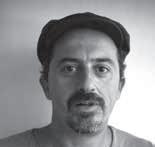



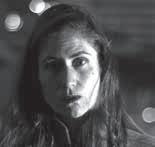

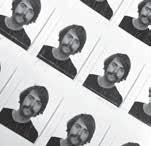

Erantzukizun handia genuen esku artean, ZINEBIrako bi film aukeratu behar baikenituen, baloiak eta dokumentalak topo egiten dutenaren adibide onak izango zirenak. Erantzukizuna are handiagoa zen, gainera, kontuan izanda aukera hori munduko txapelketa aurreko datetarako egiten ari ginela. Erraza zatekeen salaketa-dokumental bat aukeratzea, edo futbol-hitzordu handienaren handitasunaren laudorio horietako baten alde egin izana. Beraz, erdibideko aukera egitea erabaki genuen. Munduko Txapelketari buruzko film bat aukeratu genuen, bai, baina aurreko faseari buruzkoa da: amaierako hitzordua baino bi urte lehenago hasten da, eta beren ametsik onenetan ere sailkatuko ez liratekeen horiek erori egiten dira. Next Goal Wins (Brett, Jamison, 2014) filmak munduko futbol-talderik txarrenaz hitz egiten digu, Samoa Estatubatuarraz, zeinak ez baitu inoiz partida bakar bat irabazi. Ikusiko dugunez, beraientzat lehiatzeak oso esanahi berezia du. Garaipena al da talde osoaren helburua?
Bestalde, izar bat ere aukeratu dugu, baina oso izar berezia. Garrinchari buruzko dokumentala
estilo-ariketa bat da (iraultzailea izan zen), eta baita futbolez jantzitako konpromiso sozialaren erakusgarri bat ere. Filmak ordubete eskas irauten du, eta idoloaren erabateko laguntza du. Une hartan, oraindik ez zekien oso ondo zer eragin izango zuen denborarekin bere bat-bateko ospeak. Joaquim Pedro de Andraderen Garrincha -Alegria do Povo (Garrincha - The People’s Joy, 1963), filmak kamerak kalean duen indarrarekin eta Brasilgo musika herrikoiak ematen dionarekin adierazten du herrialde horretan gainezka egiten duen alaitasun naturala, non futbolak, erritmoak, eguzkiak eta alaitasunak bat egiten duten, kultura propio bat eta bizitzeko modu bat eratuz.
Andraderen kamera txandaka aritzen zen dokumentalaren —Brasília, contradiçoes de uma cidade (Brasília, Contradictions of a New City, 1967)— eta fizkioaren artean —O padre e a moça (The Priest and the Girl, 1966), Manacuíma (Macunaima, 1969), Guerra conjugal (Conjugal Warfare, 1974)—, baina ez zuen inoiz Garrincharen hegoekin bezain goian hegan egin.
Carlos Marañón, Galder RegueraIt is an enormous responsibility for us to choose films for ZINEBI that are good examples of when the ball merges with the documentary. An even greater responsibility, if that is possible, when the choice emerges in the run-up to the World Cup. It would have been easy to choose a documentary-denunciation, or settle for one praising the magnificence of football’s supreme event. So we split the difference. We chose a film on the World Cup, yes, but on the preliminary rounds, which begin two years before the final event, knocking out teams that could not imagine being classified even in their wildest dreams. Next Goal Wins (Brett, Jamison, 2014) portrays the world’s worst team, the American Samoa, a team that has never won a match, for which competing has a very special meaning. Is victory the objective of any team? We also chose another famous and very special film. The documentary on Garrincha is an exercise in style (revolutionary at the time) and an example of social commitment within football.
The film, with a running time of barely an hour, had the full support of the idol, who still cannot precisely calculate what his surge of popularity will eventually generate. Garrincha - Alegria do Povo (Garrincha - The People’s Joy) by Joaquim Pedro de Andrade (1963), expresses, with all the power of the outdoor camera and popular Brazilian music, the natural joy unleashed in a country where the combination of football, rhythm, sun and glee has created a national culture and a way of life.
Andrade’s camera, which continues to alternate between documentaries, Brasília, contradiçoes de uma cidade (Brasília, Contradictions of a New City, 1967) and fiction O padre e a moça (The Priest and the Girl, 1966), Manacuíma (Macunaima, 1969), Guerra conjugal (Conjugal Warfare, 1974), never flew as high as it did on Garrincha’s wings.
Carlos Marañón, Galder RegueraEnorme responsabilidad, la nuestra, la de elegir dos películas para ZINEBI que sean buenos ejemplos de cuando el balón se cruza con el documental. Más responsabilidad, si cabe, cuando esta elección cae en fechas premundialistas. Era sencillo haber elegido un documental-denuncia, tanto como habernos decantado por una de las loas a la magnificencia de la mayor cita futbolística. Así que hemos optado por lo intermedio. Elegimos una película que trata sobre el Mundial, sí, pero la fase previa, esa que comienza dos años antes de la cita final y en la que caen aquellos seleccionados que ni en sus mejores sueños podrían imaginar clasificarse. Next Goal Wins (Brett, Jamison, 2014) nos habla del peor equipo del mundo, la Samoa Americana, una selección que jamás ha ganado un partido y cómo para ellos competir tiene un significado muy especial. ¿Es la victoria la meta de todo equipo?
Por otro lado, elegimos también una estrella, pero una muy especial. El documental sobre Garrincha es un ejercicio de estilo (revolucionario
entonces) y una muestra de compromiso social revestido de balompié. El filme, de una hora escasa, cuenta con la colaboración total del ídolo, que todavía no acierta a calcular con certeza lo que va a generar con el tiempo su estallido de popularidad. Garrincha - Alegria do Povo (Garrincha - The People’s Joy), de Joaquim Pedro de Andrade (1963), expresa con toda la fuerza de la cámara en la calle y de la música popular brasileña, la alegría natural que se desborda en un país donde la combinación de fútbol, ritmo, sol y alegría ha conformado una cultura propia y una manera de vivir.
La cámara de Andrade, que siguió alternando entre documental, Brasília, contradiçoes de uma cidade (Brasília, Contradictions of a New City, 1967) y ficción, O padre e a moça (The Priest and the Girl, 1966), Manacuíma (Macunaima, 1969), Guerra conjugal (Conjugal Warfare, 1974), nunca volvió a volar tan alto como con las alas de Garrincha.
Carlos Marañón, Galder RegueraGarrincha - Alegria do povo
Brazil, 1963 | 63 min | Documentary
director Joaquim Pedro de Andrade screenplay Luiz Carlos Barreto, Mário Carneiro, David Neves, Armando Nogueira cinematography Mário Carneiro editing Joaquim Pedro de Andrade, Nello Melli sound Sérgio Montagna music Carlos Lyra, Severino Silva cast Heron Domingues, Garrincha production Lucy Barreto, Paula Barreto, Luiz Carlos Barreto - Produções Cinematograficas L.C. Barreto distribution Mondo Films @ contato@lcbarreto.com.br
Dokumental bat Brasilen inoiz egon den futbol jokalari onenetako bati buruz. Izenburuak Garrinchak bere zaleak liluratzeko zuen gaitasun horri egiten dio aipamena, nortasun chaplindarra, hanka okerrak eta arerioak ustekabean harrapatzeko gaitasuna zituen eta.
A documentary about one of the greatest Brazilian soccer players of all time. The title refers to Garrincha’s ability to enchant his fans with his Chaplinesque personality, his bow legs, and his unconventional talent for surprising his opponents.
Una película en torno a uno de los mayores atletas de todos los tiempos del fútbol brasileño: Garrincha. El título se refiere a su excepcional capacidad de encantar a los aficionados de los estadios, tanto por su estilo chapliniano de ser, como por sus famosas piernas torcidas y por su forma poco convencional de sorprender a sus adversarios en el juego.
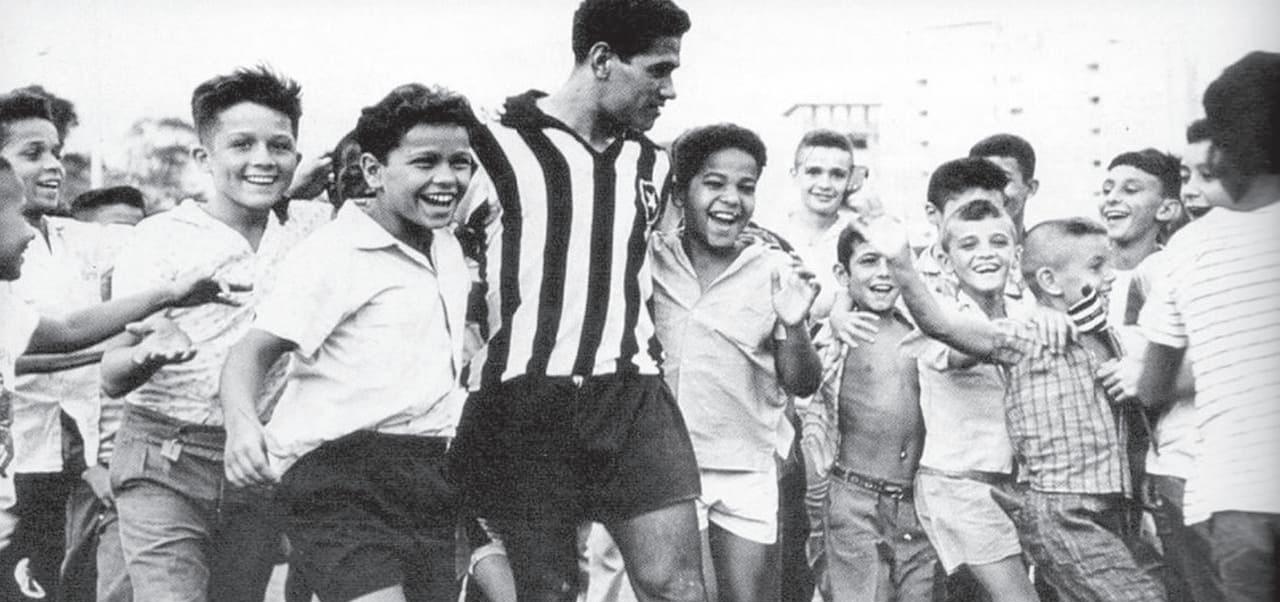
United Kingdom, 2014 | 97 min | Documentary
director Mike Brett, Steve Jamison cinematography Steve Jamison editing Julian Quantrill music Roger Goula cast Thomas Rongen, Jaiyah Saelua, Nicky Salapu, Tavita Taumua, Larry Mana’o production Kristian Brodie, Mike Brett, Steve Jamison, Agile Films @ carl@hydeparkentertainment.com
Samoa Estatubatuarreko futbol talde nazionalak munduko porrot okerrena jasan zuen Australiaren aurrean 31-0 galdu zuenean, FIFAren munduko sailkapeneko azken postura eroriz. Harrezkero, “munduko talderik txarrena” bezala da ezaguna. Hamarkada bat baino gehiago da ez duela partida ofizialik irabazi, baina, hala eta guztiz ere, taldeak elkarrekin jarraitzen du futbolari dion maitasun hutsagatik, fede sakonagatik eta Samoa Estatubatuarreko harrotasunagatik.
When the American Samoan national soccer team suffered the world’s worst defeat, losing to Australia 31-0, these tiny islands crash-landed into last place in the FIFA world rankings, and became known as “the worst team in the world.” Despite having not won an official match for more than a decade, the team is held together by their pure love of soccer, deep faith, and American Samoan pride.
Cuando la selección nacional de fútbol de Samoa Americana sufrió la peor derrota del mundo al perder contra Australia por 31-0, estas pequeñas islas se colocaron en el último lugar de la clasificación mundial de la FIFA, y pasaron a ser conocidas como “el peor equipo del mundo”. A pesar de no haber ganado un solo partido oficial desde hace más de una década, el equipo se mantiene unido por su amor al fútbol, su profunda fe y el orgullo samoano.
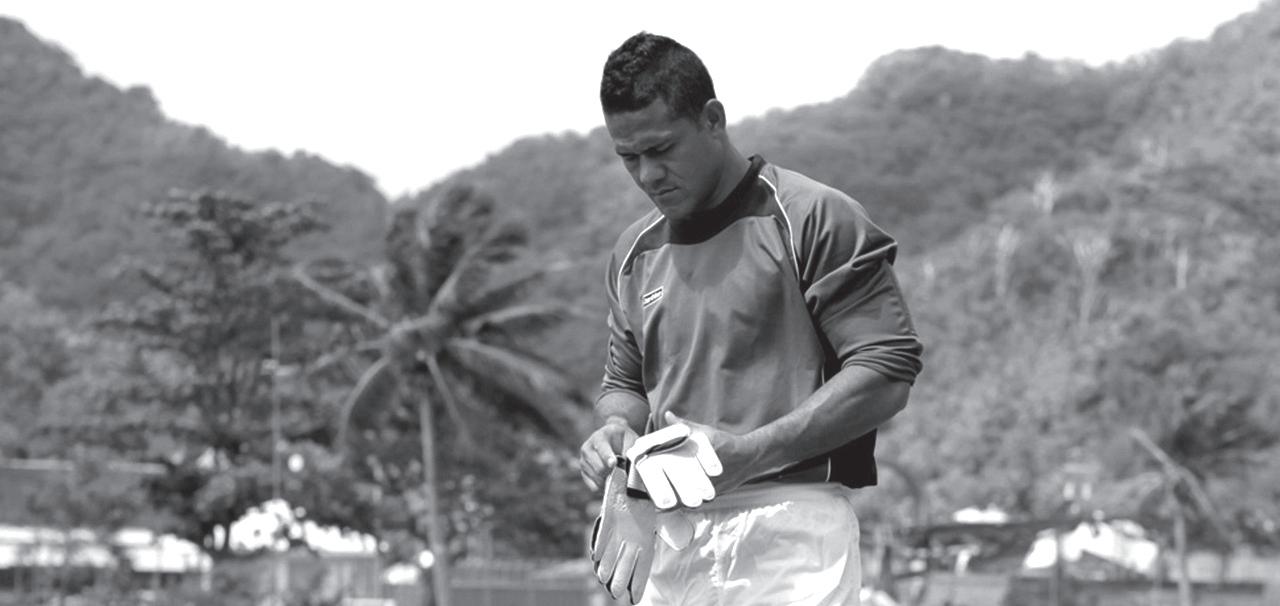

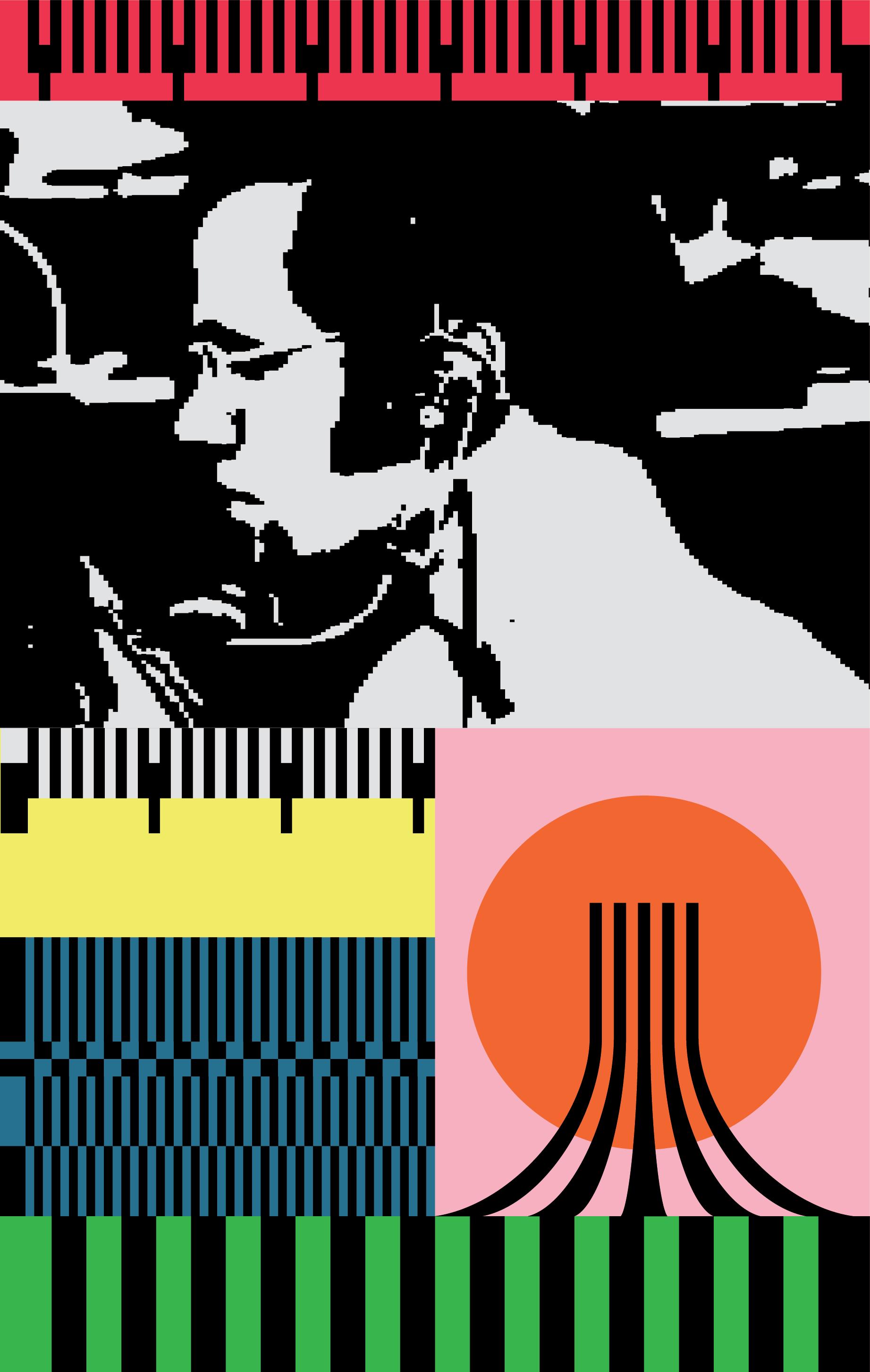
Zinema sortu zenean, zeinu hizkuntzak bitarteko bat aurkitu zuen hura jaso eta erreproduzitzeko. Bitarteko hori bere ikusizko eta keinu bidezko izaerarekin bat zetorren, gainera. Ordura arte, zeinu hizkuntza erregistratzeko saiakerak irudi estatikoen bidez egiten ziren (argazkiak edo ilustrazioak), mugimendua iradokitzen zuten argibideekin. Zeinatutako diskurtsoaren posibilitateek, beraz, zazpigarren artean aliatu ezin hobea aurkitu zuten denboran zehar iraun ahal izateko. Horrekin paraleloan, zinema isilaren garaiko soinu ezak ikusle gorren eta entzuten zutenen esperientzia filmikoa berdintzen zuen, ez baitzuten azpititulurik behar filmak berak zekarren testurako. Soinuak 1929tik aurrera hizkuntza zinematografikoari eman zizkion aukera narratiboek, ordea, traba batzuk ekarri zizkieten ikusle gorrei.
Gaur egun, ugaritu egin dira, bai azpitituluak, bai irudiak jasotzeko eta erreproduzitzeko bitartekoak, eta baita mezularitza eta sare sozialetako aplikazioak ere; horri guztiari esker, mundu osoko zeinu hizkuntzen kontserbazioa eta zeinatzen duten pertsonen arteko komunikazioa une loriatsua bizitzen ari dira.
Film laburren saio honek zeinu hizkuntzetarako hainbat hurbilketa biltzen ditu, eskaintzen dituzten diskurtso aukerei, aukera formalei eta estetikoei erreparatuz. Eta har daitezkeen erabakien artean daude, besteak beste, filmatzen duen subjektuaren eta filmatua denaren arteko distantzia, eskuen mugimenduekin lotutako kamera mugimenduak, edo testuren, islen eta irudi gainjarrien erabilera zer nolakoak izango diren.
Aitor Gametxo ZabalaWith the advent of films, sign language found a method for capture and reproduction well suited to its own visual-gesticulatory nature. Until then, any attempts at registration entailed stationary images (photographs or illustrations) with certain indications suggesting movement. The possibilities of signed discourse, then, found that the seventh art was the perfect ally to help it subsist over time.
In parallel fashion, the absence of any sound in the era of silent films made the film experience the same for both deaf and non-deaf viewers, who had no need of subtitles for the text in the film itself. But the narrative possibilities that talkies began to give the cinematographic language after 1929 constituted an impediment for deaf viewers.
At the present time, the proliferation of subtitles and means of capture and reproduction of images, in addition to messaging applications and social media, means that preservation of the different sign languages worldwide and communication among signers are experiencing a glorious heyday.
This session of short films compiles various approaches to the different sign languages, with respect to the discursive, formal and aesthetic possibilities. Decisions which contemplate, among others, the distance between the subject filming and the subject filmed, the camera movements associated with hand movements or the use of textures, reflections and the superimposing of images.
Aitor Gametxo ZabalaCon el surgimiento del cine, la lengua de signos encontró un medio para su captura y reproducción afín a su naturaleza viso-gestual. Hasta entonces, las tentativas para su registro suponían imágenes estáticas (fotografías o ilustraciones) con indicaciones que sugerían el movimiento. Las posibilidades del discurso signado pues, encontraron en el séptimo arte un aliado perfecto para su persistencia en el tiempo.
En paralelo, la ausencia de sonido propia de la época del cine silente, igualaba la experiencia fílmica de espectadores sordos y oyentes, quienes no necesitaban subtítulos para el texto que la propia película incorporaba. Pero las posibilidades narrativas que el sonido comenzó a dotar al lenguaje cinematográfico a partir de 1929, supusieron cierto impedimento para los espectadores sordos.
En la actualidad, la proliferación de subtítulos y de medios de captura y reproducción de imágenes, así como de las aplicaciones de mensajería y redes sociales, hacen que la conservación de las diferentes lenguas de signos de todo el mundo y la comunicación entre las personas signantes estén viviendo un momento glorioso.
Esta sesión de cortometrajes recopila distintos acercamientos a las diferentes lenguas de signos atendiendo a sus posibilidades discursivas, formales y estéticas. Decisiones que contemplan, entre otros, la distancia entre el sujeto filmante y el filmado, los movimientos de cámara asociados a los movimientos de las manos o el uso de texturas, reflejos y superposiciones de imágenes.
Aitor Gametxo ZabalaUSA, 1901 | 1 min
director Ezezaguna / Unknown / Desconocido production · distribution American Mutoscope, Biograph Company
Neska gazte gor batek The Star Spangled Banner (AEBko himno nazionala) errezitatzen du zeinu hizkuntzan, Washingtongo Gallaudet Institutuan irakasten duten bezala. 1901ean Washington, D.C. Schools izeneko zikloaren baitan filmatutako hamabost piezetako bat da.
A young deaf girl recites The Star Spangled Banner in sign language, as taught at the Gallaudet Institute in Washington, D.C. This is one of fifteen films shot in 1901 as part of the series Washington, D.C., Schools.
Una joven sorda recita The Star Spangled Banner (himno nacional de los Estados Unidos) en lenguaje de signos tal y como se enseña en el Instituto Gallaudet de Washington, D.C. Esta es una de las quince películas rodadas en 1901 como parte de la serie Washington, D.C., Schools.
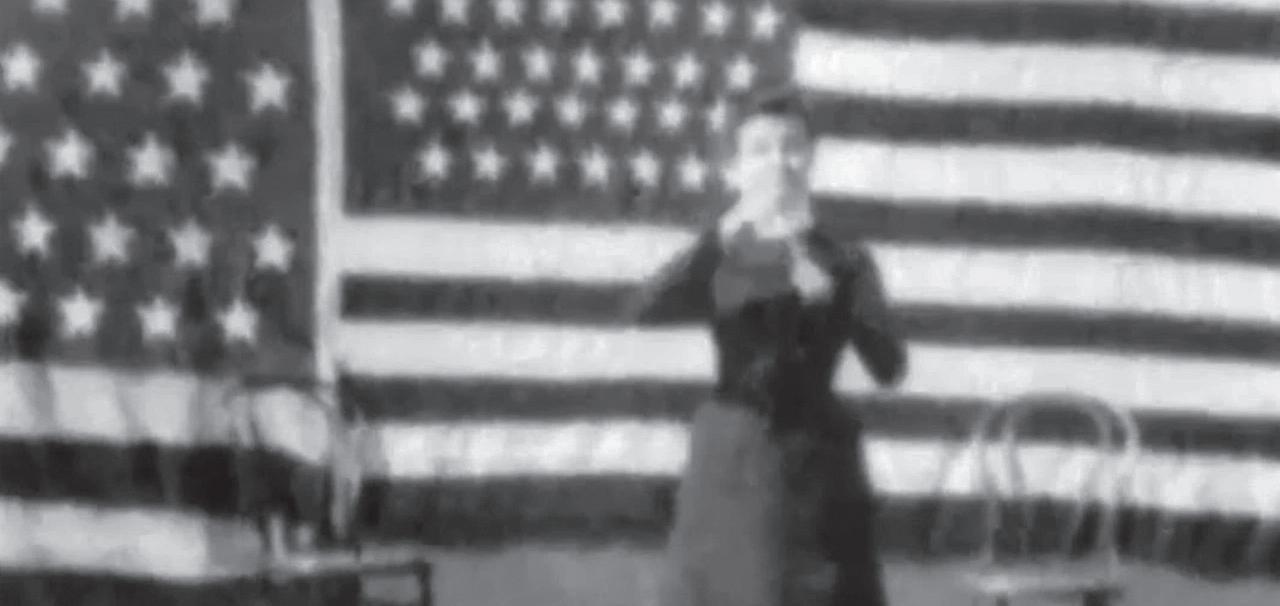
Ukraine, 2010 | 11 min | Fiction
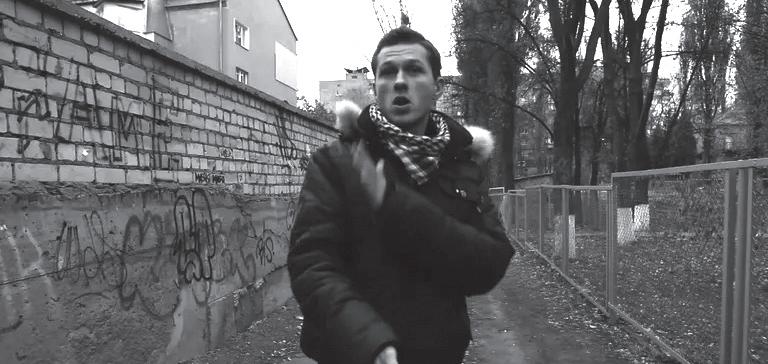
director · screenplay Myroslav Slaboshpytskiy cinematography Dmytro Sannykov editing Coffee Post sound Sergiy Stepanskiy cast Dmytro Sokol, Oleksand Fomichov, Sergiy Gavryluk production · distribution Arthouse Traffic (ig) @myroslav.slaboshpytskiy
Gorren barnetegi bateko ikasleen bizitzako hamar minutuko kapitulu bat denbora errealean berreraikita.
A ten-minute episode in the lives of the pupils at a deaf boarding school is reconstructed in real time.
Diez minutos de la vida de los alumnos de un internado para sordos es reproducida en tiempo real.
Brazil, 2019 | 26 min | Documentary
director Jonathas de Andrade cinematography Ivo Lopes editing Tita and Fábio Costa Menezes sound Mauricio D’Orey music Homero Basílio, Rodrigo Samico cast Várzea Queimada Community (ig) @jonathasdeandrade
Várzea Queimada komunitatean, Piauíko Sertãon, Brasilgo iparekialdean, 900 biztanle inguru eta biztanleria gorraren indize altua dituen leku batean, urarekiko sarbidea eta inbertsio publikoak eskasak dira, eta baita Brasilgo Zeinu Hizkuntza (Libras) ofiziala ikasteko aukerak ere. Muga horien guztien aurrean, Várzea Queimadako gorren komunitateak bere hizkuntza propioa sortu du. Gorputzeko eta ahoko ariketak, aire zabaleko agertoki inprobisatuak, bertako 18 pertsonen (gizonak eta emakumeak) lekukotasun espontaneoak jasotzeko. Lekukotasun gehienak, itzuli gabeak, hitzaldiz hitzaldi berrikusten dira, keinuak hitzekin lotuz, Várzea Queimadako keinuen hiztegia sistematizatuz; bere unibertsotik eta galderetatik harago doan hizkuntza berri bat irakasten duen bideo hezigarri baten aurrean gaudela dirudi.
In Várzea Queimada community, in the Sertão of Piauí, Northeast of Brazil, a place with about 900 inhabitants and a high rate of deaf population, access to water and public investment is scarce, as is the learning of the official Brazilian Sign Language (Libras), the Brazilian sign language. In the face of all these limitations, the deaf community created its own language. Body and speech exercises, improvising outdoor stages for spontaneous testimonials from a group of 18 local characters. Most of the statements, most of them untranslated, are revised speech by speech, linking gestures to words, systematizing Várzea Queimada’s gestural lexicon as if we were facing an educational video that teaches a new language, beyond its universe and its own questions.
En la comunidad de Várzea Queimada, en el Sertão de Piauí, nordeste de Brasil, un lugar con cerca de 900 habitantes y un alto índice de población sorda, son escasos el acceso al agua y las inversiones públicas, así como el aprendizaje de la Lengua Brasileña de Señas (Libras) oficial. Frente a todas estas limitaciones, la comunidad de sordos de esta comunidad creó su propia lengua. Ejercicios corporales y orales, improvisando escenarios al aire libre para los testimonios de un grupo de 18 personajes locales. La mayoría de las declaraciones, la mayor parte de ellas sin traducir, se revisan discurso a discurso, vinculando los gestos a las palabras, sistematizando el léxico gestual de Várzea Queimada como si estuviéramos ante un vídeo educativo que enseña un nuevo lenguaje, más allá de su universo y sus propias preguntas.
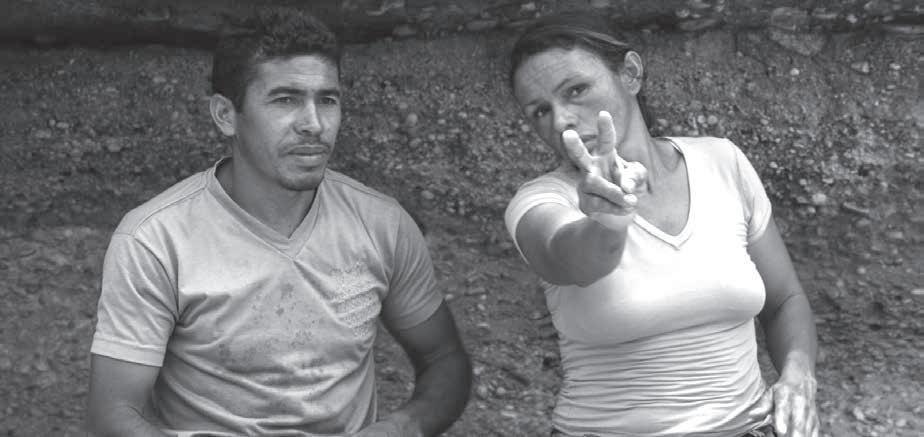

United Kingdom, 2002 | 4 min
Documentary
director · screenplay · cinematography · editing Matt Hulse music The Sex Pistols cast Samuel Dore (ig) @thisismatthulse
1977ko uda, Londres, Erresuma Batua. Sex Pistols taldeak God Save The Queen abestia atera du Erreginaren tronuratzearen 25. urteurrenaren ospakizunarekin bat etorriz. Berehala debekatzen dute. Musika zerrendetako 1go postura berehala iritsi arren, ez da inoiz irratian entzuten… isildu egin dute. Jatorrizko abestiaren sorrerako bulkada anarkikoaren omenaldi lotsagabea eginez, eta bisualki berrituz, gure bertsioak britainiar zeinu hizkuntzak oraindik ere sinesgarria den mezua helarazteko duen ahalmena aztertzen du.
Summer 1977, London, United Kingdom. The Sex Pistols release the song God Save The Queen to coincide with the Queen’s Jubilee — 25 years on the throne. It’s immediately banned. Even though it reaches Number 1 in the hit parade, it’s never heard on the radio — it’s silenced. As a form of cheeky tribute to the anarchic impulse and visual refreshment of the original song, this version explores the power of British Sign Language to convey the message which remains compelling.
Verano de 1977, Londres, Reino Unido. Los Sex Pistols lanzan la canción God Save The Queen para coincidir con el Jubileo de la Reina —25 años en el trono—. Esta es prohibida inmediatamente. Aunque llega al número 1 del hit parade, nunca se puede escuchar en la radio: se silencia. Como descarado homenaje al impulso anárquico y al renovador aproximamiento visual de la canción original, esta versión explora el poder del lenguaje de signos británico para transmitir un mensaje que sigue siendo convincente.
Rotkäppchen in Deutscher Gebärdensprache Germany, 2011 | 16 min | Fiction, Animation

director Britt Dunse, Isabelle Schmidt screenplay Britt Dunse, Birte Meesmann, Anja Conrad cinematography Gernot Bayer editing Isabelle Schmidt sound Almut Schwacke art Britt Dunse music Almut Schwacke animation Britt Dunse, Florian Obrecht, Micki Fröhlich cast Nikola Palacz, Felix Dunke, Ace Mahbaz, Marie-Luise Langwand, Sandra Steier production · distribution Britt Dunse Britt Dunse (ig) @brittdunse
Txanogorritxo amonaren etxera doa. Basoan, otso maltzurrarekin topo egiten du eta Txanogorritxo engainatzen saiatzen da, bera eta amona afaltzeko ahaleginean.
Little Red Riding Hood is on the way to her grandmothers. In the forest, she comes across the evil wolf who tries to fool her in order to eat her and her grandma for dinner.
Caperucita Roja va de camino a casa de su abuela. En el bosque, se encuentra con el malvado lobo, que intenta engañarla con el fin de comérselas a ella y a su abuela como cena.
Fire, Giselle Meyerrek hilkortasunari buruz idatzitakoa poema bat da, eta beirazko xafla mate baten atzetik filmatuta dago, maitagarrien ipuin baten antzeko ikuskizuna eskainiz. Bost film labur berritzaileko serie bateko pieza bat da, eta poesiak zeinu hizkuntzan duen indarra erakusten du. Motioning (Bewogen) izeneko serieko poemen film guztiek konposizioaren dinamika osatzen duten erritmo bisuala, errepikapena, plano zabalak eta lehen planoak dituzte.
Fire, a poem about mortality by Giselle Meyer, was shot from behind a matte glass sheet and provides a fairy-tale spectacle. This is one of a series of five innovative shorts, presenting the visual power of poetry in sign language. In all film poems of the series Motioning (Bewogen) visual rhythm, repetition, wide-angle and closeups shape the dynamics of the composition.
El poema que aborda el tema de la mortalidad, Fire, de Giselle Meyer, fue filmado utilizando como filtro una lámina de cristal mate, lo que ofrece un espectáculo de cuento de hadas. Este trabajo forma parte de una serie de cinco cortometrajes que muestran el poder visual de la poesía en lenguaje de signos. En todos los poemas cinematográficos de la serie Motioning (Bewogen) el ritmo visual, la repetición, el gran angular y los primeros planos perfilan el dinamismo de la pieza.

Germany, 2022 | 15 min | Documentary
director Cadenza Zhao screenplay Larissa Barros De Oliveira Holtz cinematography Richard Greif editing Ilya Gavrilenkov sound Enrique Cuesta, Horst Koerner, Bertold Budig music Max van Dusen cast Kassandra Wedel production · distribution Konrad Wolf - Filmuniversität Babelsberg (ig) @cadenzazhao, @kasscalldance
Kassandra Wedel dantzaria, aktorea eta, oro har, artista da. Hirian zehar ibiltzen da inguruko soinuak eta mugimenduak biltzen, bere musika eta dantza propioak konposatzeko. Berarentzat soinuak eta musikak zer esan nahi duten aztertuko dugu, eta dantza musikara itzultzeko prozesuaren lekuko izango gara. Soinua eta musika hautemateko ditugun moduak ezbaian jarriko ditu. Bere abantaila bakarra? Gorra dela.
Kassandra Wedel, dancer, actress and all around artist, roams the city picking up sounds and movements from her surroundings to compose her very own music and dance. We explore what sound and music mean to her and witness the process of translating dance into music. She challenges our current perception and understanding of sound and music. Her only advantage? Her deafness.
Kassandra Wedel, bailarina, actriz y artista en general, recorre la ciudad recogiendo algunos sonidos y movimientos de su entorno para componer su propia música y danza. Entonces somos testigos de lo que el sonido y la música significan para ella y del proceso de traducir la danza en música. Wedel desafía nuestra actual percepción y comprensión del sonido y la música. ¿Su única ventaja? Su sordera.









director · screenplay Sonia Gerbeaud editing Nikita Fraysse sound · music Manu Vidal animation Tom Chertier, Jon Boutin production Luc Camilli, Xbo Films, France @ diffusion@xbofilms.com
Ikasgelara elefante-burua duen ikasle bat iritsi da, eta horrek irainak eta sarkasmoa eragin ditu. Badirudi ikasleetako bat txundituta eta asaldatuta dagoela haur bitxi horren aurrean.
The arrival of a new elephant-headed student in class triggers mockery and sarcasm. One of the students seems captivated and disturbed by this strange child.
La llegada de un nuevo alumno con cabeza de elefante provoca burlas y sarcasmo en clase. Pero uno de los alumnos parece cautivado y perturbado por ese extraño niño.
France, 2022 | 7 min | Animation Germany, 2021 | 8 min | Animation
director Franka Sachse sound Christian Schunke, Florian Marquardt music Andreas Kuch animation Franka Sachse, Aline Helmcke production Ulrich Seis Mediengestaltung @ mail@uli-seis.de, sales@shortfilm.com

Mundu beltz batean bizi den txori batek mundu zuri batean bizi den katu batekin topo egiten du. Topo egiten duten unean, beren jatorriek talka egiten dute.
A white bird living in a black world encounters a black cat living in a white world. The moment they meet, their backgrounds literally collide.
Un pájaro blanco que vive en un mundo negro se encuentra con un gato negro que vive en un mundo blanco. En el momento en que se encuentran, su entorno, literalmente, colisiona.

United Kingdom - Canada, 2021 | 7 min | Animation
director India Barnardo screenplay India Barnardo, Amar Chundavadra, Martyn Smith sound Andreas Russo art Pablo Rivera music Liv Muir Wilson animation Martyn Smith production Emily Shinyi Hsu, Sarah Dacey @ info@catandmoth.com
Katu zuri iletsu batek unibertsoko lekurik erosoena aurkitzea besterik ez du nahi, baina ez daki beste norbaitek ere ikusi duela.
A fluffy white cat wants nothing more than to find the most comfortable spot in the universe, but little does she know someone else has their eye on it too.

Una esponjosa gata blanca no quiere otra cosa que encontrar el lugar más cómodo del universo, pero lo que no sabe es que otra persona también le ha echado el ojo.
Czech Republic, 2022 | 8 min | Animation
director · screenplay · art · animation Alžbeta Mačáková Mišejková editing Alexander Kashcheev, Lucie Hecht sound Tomáš Kozelka music Magdaléna Mišejková production Tomáš Šimon, Martin Vandas; FAMU @ alexandra.hroncova@famu.cz

Ez da beti erraza liskar baten ostean adiskidetzea. Batez ere, guztiz amorratuta bazaude.
It is not always easy to reconcile after an argument. Especially when you’re all plump and round with anger.
No siempre es fácil reconciliarse después de una discusión. Especialmente cuando te hinchas de rabia.
Georgia,
director Ana Chubinidze cinematography Sara Sponga editing Antoine Rodet sound Beso Kacharava, George Murgulia, Biko Gogaladze, Alexander Sanikidze art Elene Chichashvili, Ana Chubinidze, Eric Eglène, Khatia Iatashvili, Sophie Kahn, Tata Managadze, Nita Tabatadze music Erekle Gestadze, Zviad Mgebry animation Chaitane Conversat, Lorelei Palies, Sophie Roze, Iulia Voitova production Reginald de Guillebon - Folimage; Ana Chubinidze, Olivier Catherin - Pocket Studio distribution Folimage @ contact@folimage.fr
Franzy chef estralurtar bakartiak jakingo du bere zopa arrosa berezia, goxoa ez ezik, magikoa ere badela, planeta arrotz batean bizi diren izaki gosetiekin partekatzen duenean.
Lonely alien Chef Franzy discovers that her special pink soup is not just delicious, but also magical, when she shares it with starving creatures living on a strange planet.

Franzy es una solitaria chef extraterrestre que descubre que su especialidad, la sopa rosa, no solo resulta deliciosa, sino que también es mágica, cuando la comparte con las criaturas hambrientas de un planeta extraño.
Germany,
director Jan Gadermann, Sebastian Gadow screenplay Jan Gadermann cinematography Vicent Engel, Georg Meyer editing Martin Herold music Jens Heuler animation Jan Gadermann, Sebastian Gadow, Cornelius Koch production Konrad Wolf - Film University Babelsberg distribution Film University Babelsberg @ johannes@schubert.film
Nemoren itxura ez da besteena bezalakoa. Inork ez daramatza urpean igeri egiteko jantzia eta kasko hain handia. Baina, orduan, Laika astronauta ezagutzen du.
Nemo looks different. Nobody else wears a diving suit and such a huge helmet. But then he meets Laika, an astronaut.
Nemo tiene un aspecto diferente. Nadie más lleva una escafandra y un casco tan grande. Entonces conoce a Laika, la astronauta.

director · screenplay Antje Heyn cinematography Johanna Hochholzer sound Danco Lewin, Moritz Busch art Johanna Hochholzer music Peer Kleinschmidt animation Alexander Isert cast Ringu Tulku Rinpoche, Barry Kerzin production Protoplanet Studio distribution Kurzfilm Agentur Hamburg @ info@protoplanet-studio.de, verleih@shortfilm.com
Zirkulu edo esfera batek jatorria markatzen du. Txakur bat sartzen da korrika irudian, pilota jakin-minez aztertzen du… eta jan egiten du. Horrek metamorfosien segida bat eragiten du: hasieran izaki nahiko amorfoak sortzen dira, kaotikoki eta elkarren segidan, eta gero eta zehatzago bihurtzen dira, animalien antz gero eta handiagoa dute eta, azkenik, gizakien itxura hartzen dute.
A circle or a sphere marks the origin. A dog runs into the picture, explores the ball curiously — and eats it. This becomes the trigger for a series of metamorphoses: from initially rather amorphous, chaotically consecutive beings, more concrete, increasingly animal-like and finally also human-like figures emerge.

Un círculo o una esfera marca el origen. Un perro entra a cuadro, examina la bola con curiosidad… y se la come. Esto será el desencadenante de una serie de metamorfosis. De seres inicialmente bastante amorfos, caóticamente consecutivos, surgen figuras más concretas, cada vez más animales y finalmente también humanas.
France, 2021 | 1
director Théo Carme, Olivia Gombault, Louise Petit, Alessandra Rosmarino, Anaëlle Saba music Andrew Gebrael production Gobelins l’École de l’image @ info@gobelins.fr.
3000. urtea, festa, jolasak, histeria! Helburua ongi pasatzea da!
Year 3000, party, games, hysteria! The goal is to have fun!
Año 3000, ¡fiesta, juegos, frenesí! ¡El objetivo es pasarlo bien!


Bideoen bataila bat zera da, bi artista eta/edo kolektibo aurrez aurre jartzea, elkarri Interneteko bideoak umorez jaurti diezazkieten, ikusleen aurrean komentatzen dituzten bitartean.
Caostica Elkarteak egindako eta Borja Crespok girotutako gaueko emanaldi honetan, Velasco Broca eta Carlo Padial zinema zuzendariak gure artean izatearen luxua izango dugu. Txantxak bermatuta daude, bestela sarreraren kostua itzuliko dizuegu, doakoa da eta.
A video war means pitching two artists and/or groups against each other, throwing out humorous Internet videos while they talk about them to viewers.
In this session, set up by Asociación Caostica and whooped up by Borja Crespo, we are lucky indeed to have film directors Velasco Broca and Carlo Padial with us. A fun time is guaranteed, and if is this not the case we will refund the cost of admittance, which, incidentally, is zero.
Una guerra de vídeos consiste en enfrentar a dos artistas y/o colectivos lanzándose vídeos de Internet en clave de humor mientras los van comentando ante el público.
En esta velada, perpetrada por la Asociación Caostica y amenizada por Borja Crespo, tenemos el lujo de contar con los directores de cine Velasco Broca y Carlo Padial. La guasa está garantizada, de lo contrario devolveremos el coste de la entrada, que por cierto es gratuita.

Basque Country, 2022 | 28 min | Fiction

director · editing Velasco Broca screenplay Velasco Broca, Lucía Moreno cinematography Isabel Ruiz Ruiz sound Luca Rullo, Roberto Fernández art Pedro Muñoz animation (fx) Salvador J. Boluda, Jorge Torrens cast Juan Antonio Herreruela, Ramón Churruca, Fernando Moreno, Rafael Alberola, Barbara Mingo, José Luis Pérez Santiago, Nerea Revilla production Eduardo Carneros, Euskadi Movie AIE @ fest@marvinwayne.com
Oftalmologo baten aitortza eten egiten da harekin zegoen apaiza larrialdi bat dela eta joaten denean. Bere absoluzioa atzeratu egin denez, kontsultategira itzultzea erabakitzen du. Bidean, bere pentsamenduetan bakartuta doala, auto batek harrapatu eta hil egiten du. Une horretatik aurrera, bere arima hilezkorra Erdi Aroko itxura duen purgatorio batera botatzen dute, izaki groteskoen artera: blemiak eta deabruak daude.
An ophthalmologist’s confession is interrupted when the priest attending him leaves because of a sudden emergency. After his absolution is postponed, he decides to return to his office. On the way, he is hit by a car and fatally wounded. From that moment on, his immortal soul is thrown into a medieval-looking purgatory populated by grotesque creatures: blemmyes and devils.
Un oftalmólogo ve interrumpida su confesión cuando el sacerdote que le atendía parte de urgencia. Pospuesta su absolución, decide volver a su consulta. Por el camino, abstraído en sus pensamientos, es fatalmente arrollado por un coche. A partir de ese momento, su alma inmortal es arrojada a un purgatorio de aspecto medieval poblado de grotescas criaturas: blemitas y diablos.
Ez bultza egin! (EBE!) Igor Rezola Iztuetak eta Juan Pablo Ordúñez / MawatreS-ek zuzendutako proiektua da, eta zinema, musika eta artea uztartzen ditu.
ZINEBI Bilboko Zinema Dokumental eta Film Laburren Nazioarteko Jaialdiaren 64. ediziorako aurkezten duten proposamenak, Mathieu Kassovitzek zuzendu eta 1995ean estreinatutako La haine (Gorrotoa, euskarara itzulita) film frantsesa du abiapuntu. EBE!-k, ekoizpen kultural eta artistiko garaikidea medio, filma errebisatzeko, berrirakurtzeko, birpentsatzeko, berrinterpretatzeko eta modu kolektiboan honen inguruan lan egiteko ariketa bat egitea proposatzen du. Horretarako Los Voluble, Dano (Ziontifik), erra (ber 3), Beñat Krolem, Maria Muriedas + Iñaki Billelabeitia, Adrián Romero eta Miguel Espiga + Raúl Jiménezen partehartzearekin kontatuko da.
Ez bultza egin! (EBE!) is a project combining film, music and art, directed by Igor Rezola Iztueta & Juan Pablo Ordúñez / MawatreS.
The entry for the 64th ZINEBI - International Festival of Documentary and Short Film of Bilbao - is based on the French film La haine (Hate), directed by Mathieu Kassovitz, and first screened in 1995.
EBE! embarks on an exercise to revise, reread, rethink, reinterpret and work collectively on the film, as contemporary cultural and artistic production. To this end it will be joined by Los Voluble, Dano (Ziontifik), erra (ber 3), Beñat Krolem, Maria Muriedas + Iñaki Billelabeitia, Adrián Romero and Miguel Espiga + Raúl Jiménez.
Ez bultza egin! (EBE!) es un proyecto que conjuga cine, música y arte, dirigido por Igor Rezola Iztueta & Juan Pablo Ordúñez / MawatreS.
La propuesta que presentan para la 64 edición de ZINEBI, el Festival Internacional de Cine Documental y Cortometraje de Bilbao, toma como punto de partida la película francesa La haine (traducida al castellano como El odio), dirigida por Mathieu Kassovitz y estrenada en 1995.
EBE! propone realizar un ejercicio de revisar, releer, repensar, reinterpretar y trabajar de manera colectiva en torno a la película, desde la producción cultural y artística contemporánea. Para ello, se contará con la participación de Los Voluble, Dano (Ziontifik), erra (ber 3), Beñat Krolem, Maria Muriedas + Iñaki Billelabeitia, Adrián Romero y Miguel Espiga + Raúl Jiménez.

NOIZ eta ZINEBIk Martian Civilization A/V Show aurkezten dute, Zabala bilbotar musikari eta ekoizlearen eskutik musika elektronikoarekin eta ikusizko elementuekin zuzenean egingo den ikuskizuna.
Jon Aguirrezabalagak (WAS) disko futurista bat sinatu zuen 2020an, zeinak edertasun izoztuko doinuak eta paisaia atmosferikoak baititu. Bira ZINEBIn amaituko du. Mikel Aguirrezabalagaren ikusizko elementuekin osatutako ikuskizun bat. Elementuok diskurtso bat ehuntzen dute zuzenean, planeta gorriko distopia futurista bati buruz, ikusentzunezko material propioa Rafa Zubiríak eta Asier Buenok ekoitzitako metrajearekin konbinatuz. Gaua DJ saio batekin amaituko dugu, Easyerren eskutik.
NOIZ and ZINEBI present Martian Civilization A/V Show, with electronic music and live visuals by Bilbao musician and producer Zabala.
In 2020 Jon Aguirrezabalaga (WAS) produced a futuristic piece with melodies portraying a frozen beauty and atmospheric landscapes, a tour finishing up at ZINEBI.

A show with visuals by Mikel Aguirrezabalaga, weaving a live discourse combining his own audiovisual material with metrics produced by Rafa Zubiría and Asier Bueno, based on a futuristic dystopia on the red planet.
We round off the night with a DJ stint by Easyer.
NOIZ y ZINEBI presentan Martian Civilization A/V Show,un espectáculo de música electrónica y visuales en directo a cargo del músico y productor bilbaíno Zabala.
Jon Aguirrezabalaga (WAS) firmó en 2020 un disco futurista con melodías de belleza helada y paisajes atmosféricos cuya gira finaliza en ZINEBI.
Un show con visuales de Mikel Aguirrezabalaga, que tejen un discurso en directo combinando material audiovisual propio con metraje producido por Rafa Zubiría y Asier Bueno, en torno a una distopía futurista en el planeta rojo.
Cerramos la noche con una sesión de DJ a cargo de Easyer.

ZINEBI – Bilboko
Dokumentalen eta Film Laburren Nazioarteko Jaialdiak, Euskal Produktoreen Elkartearearekin batera (EPE-APV), Zinemagintzaren eta Ikus-entzunezko Arteen Institutua (ICAA), Europar Batasuna -NextGenerationEU, EITB MEDIA S.A.U. (EITB), Zineuskadi eta Europa Creativa Desk Media Euskadiren finantziazioarekin, eta Cannes Docs eta Scottish Documentary Institute erakundeen lankidetzarekin, Bilboko Zinema
Dokumentaleko bosgarren Foro Profesionala aurrera eramango du aurten, ZINEBI Networking: Dokumentalen sorgunea.
Berrikuntza nagusi gisa, Estatu osoan sortzen ari diren proiektuak onartu dira. Horiek horrela, lehen aldiz, ZINEBI Networking: Dokumental sorguneak dirutan ematen diren 10.000 euroko bi sari ditu: batetik, Euskal Autonomia Erkidegoko film luze dokumental onenaren saria eta, bestetik, Estatuko gainerako lurraldeetako proiektu onenaren saria.
Hori eginez, ZINEBIk eskualdeko ikusentzunezko sarea indartzen lagundu nahi du, eta baita dinamizaziorako eragile izan ere, sektoreko eragileek zinemagintzaren eta ikus-entzunezkoen industriako tokiko zein nazioarteko erakundeekin duten harremanari dagokionez.
The International Festival of Documentary and Short Film of Bilbao – ZINEBI, along with the Basque Producers Association (EPE-APV) and the backing of Institute of Cinematography and Audiovisual Arts (ICAA), European Union-NextGenerationEU, EITB MEDIA S.A.U. (EITB), Zineuskadi and Europa Creativa Desk Media Euskadi, in collaboration with Cannes Docs and Scottish Documentary Institute, is holding its fifth Professional Documentary Film Forum Bilbao, ZINEBI Networking: Dokumentalen sorgunea. The main feature is that emerging projects from all over the Spanish State have been admitted. And so, for the first time, ZINEBI Networking: Dokumental sorgunea has two 10,000 euro cash prizes: for the best documentary feature film in the Autonomous Community of the Basque Country, and the prize for the best entry from elsewhere in the Spanish State. ZINEBI wishes to take this opportunity to boost the regional audiovisual fabric, and streamline the relationship between agents operating in the sector and local and international institutions working in the filmmaking and audiovisual industry.
El Festival Internacional de Cine Documental y Cortometraje de Bilbao – ZINEBI, junto a la Asociación de Productores Vascos (EPE-APV) y la financiación del Instituto de la Cinematografía y de las Artes Audiovisuales (ICAA), la Unión Europea-NextGenerationEU, EITB MEDIA S.A.U. (EITB), Zineuskadi y Europa Creativa Desk Media Euskadi, y en colaboración de Cannes Docs y el Scottish Documentary Institute, celebra el quinto Foro Profesional de Cine Documental de Bilbao ZINEBI Networking: Dokumentalen sorgunea. Como principal novedad, se han admitido proyectos emergentes de todo el Estado. Así las cosas, por primera vez, ZINEBI Networking: Dokumentalen sorgunea cuenta con dos premios en metálico valorados en 10.000 euros cada uno: el galardón al mejor proyecto de largometraje documental de la Comunidad Autónoma Vasca, y el premio al mejor proyecto procedente del resto del Estado.
ZINEBI quiere contribuir de este modo al fortalecimiento del tejido audiovisual regional, así como a la dinamización de la relación que existe entre agentes del sector y las instituciones locales e internacionales de la industria cinematográfica y audiovisual.
Dirección Vanesa Fernández Guerra, Rubén Corral Secretaria Inés Intxausti Tutora Virginia García del Pino Moderadora Aída Vallejo Vallejo Coordinación de proyectos Maui Alena Asesor Ander Barinaga-Rementeria Comunicación Nueve Cartas Comunicación - Andrés García de la Riva Producción PACAY María Salazar Riaño, Yunuen Cuenca Vázquez, Noemí Cuetos

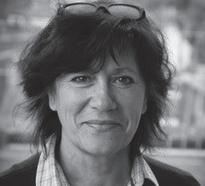









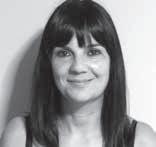

Aintzane Pérez del PalomarEITB - Euskal Irrati Telebista Anette Dujisin Filmin Portugal Lya Asian Shadows Ana Peláez RTVE - Radio y Televisión Española Cíntia Gil Festival de Cannes Noé Mendelle Scottish Documentary Institute Charlotte Serrand Internacional La Roche-sur-Yon

Zineuskadik eta Kantabriako Presidenteordetza eta Kultura Sailak beste urrats bat gehiago eman nahi dugu ikus-entzunezkoen sektoreari laguntzeko, bi eskualdeetako profesionalak harremanetan jarriz. Koprodukzioa sustatu nahi dugu, eta ekoizleei elkar ezagutzeko eta proiektuak mahai gainean jartzeko aukera emango dizkieten Networking guneak sortu, funtsezkoa baita Euskadiren eta Kantabriaren arteko elkarlana errazteko. Hori dela eta, ZINEBIrekin lankidetzan, jardunaldi bat sortu dugu, ekoiztetxeek eta bertako profesionalek informazioa ezagutu, partekatu eta truka dezaten, eta bi eskualdeetan sektorea indartuko duten lankidetzak sortzeko aukera emango dien espazio bat izan dezaten. Lehenengo jardunaldi honetan, bi erkidegoetan garatzen ari diren proiektuak aurkeztuko dira eta, gainera, entzute handiko bi ekoizleren aholkuak jasoko dituzte, Marisa Fernández Armenteros (kantabriarra) eta Nahikari Ipiña-renak (euskalduna), zeinak Cinco lobitos (Alauda Ruiz de Azúa, 2022) filma ekoizteko prozesuari buruz ere arituko baitira. Hori guztia ZINEBIren 64. edizioak eskaintzen duen esparru ezin hobean gertatuko da.
On behalf of Zineuskadi and Cantabria’s Vice-President’s Office and Department of Culture, we wish to take one more stride in terms of support for the audiovisual sector, bringing professional operators in both regions into contact.
Promoting co-production and creating networking spaces for producers to meet and table their projects are essential to assist with work between Euskadi and Cantabria. It is for this reason that, in collaboration with ZINEBI, we have created an event for producers and professional operators to meet, share, exchange information and make use of a space that may create collaboration to shore up the sector in both regions.
The first event will present projects ongoing in both communities, with mentoring by two highly acclaimed producers such as Marisa Fernández Armenteros (from Cantabria) and Nahikari Ipiña (from the Basque Country), who will also be giving us an insight into the production of Cinco lobitos (Alauda Ruiz de Azúa, 2022). This will all be carried out in the ideal context of the 64th ZINEBI Festival.
Desde Zineuskadi y la Vicepresidencia y Consejería de Cultura de Cantabria, queremos dar un paso más en el apoyo al sector audiovisual poniendo en contacto a los/las profesionales de ambas regiones.
Fomentar la coproducción y crear espacios de Networking en el que las productoras se conozcan y pongan sus proyectos sobre la mesa, es algo fundamental para facilitar el trabajo entre Euskadi y Cantabria. Por eso, en colaboración con ZINEBI, hemos creado una jornada para que las productoras y sus profesionales, conozcan, compartan, intercambien información y encuentren un espacio donde puedan surgir colaboraciones, que fortalecerán el sector en ambas regiones.
En esta primera jornada, se presentarán proyectos en desarrollo de ambas comunidades, además recibirán una mentoría por parte de dos productoras de reconocido prestigio como Marisa Fernández Armenteros (cántabra) y Nahikari Ipiña (vasca), que también nos contarán cómo ha sido producir la película Cinco lobitos (Alauda Ruiz de Azúa, 2022). Todo ello en el idóneo marco que ofrece la 64 edición de ZINEBI.
Ione Feijoo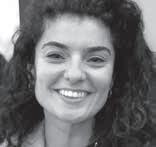





Gauza jakina da emakumeok gaur egun Estatuko zinemaldietako taldeeko funtsezko parte bat garela. Sektore honetan lan egiten dugun emakume guztiok badakigu ekoizpeneko, komunikazioko, kopien kudeaketako, gonbidatuen arretarako, protokoloko eta zinemaldietako beste arlo batzuetako talde gehienak emakumeek osatzen dituztela. Baina zer gertatzen da jaialdi horietako zuzendaritza-postuei eta programazio-taldeei erreparatuz gero?
Izugarri gustatuko litzaidake nire baieztapenei zenbakiak jarri ahal izatea, baina, tamalez, uste dut inolako erakunderi ez zaiola iruditu gaia azterlan baterako bezain garrantzitsua denik: zenbat emakume daude zinemaldietako zuzendaritza-taldeetan? Nola aldatzen da parte hartze hori jaialdiaren “kategoriaren” arabera? Nola banatzen da parte hartze hori, generoaren arabera, jaialdien barruko lan-esparru bakoitzean? Aldatu al da banaketa hori urteetan zehar?
Ez gara ehunekoez ari, baina ehunekoak eta estatistikak funtsezkoak dira errealitateari argia eta takigrafoak jartzeko.
Ez da kuoten kontua ere, nahiz eta kuotak funtsezko tresnak diren ezarritako botere egituren dinamikak zuzentzeko.
Zinemaldietako lantaldeen benetako aniztasuna funtsezkoa da programaziorako, hausnarketarako eta topaketarako gune pluralak sortzeko. Garrantzitsua da, intersekzionalitatearen eta iraunkortasunaren kontzeptuak ulertzeko orduan, horien ahalmen eraldatzailea gogoan izatea; ezin dugu saihestu aurrean dugun erronka: termino horiek modu automatikoan errepikatzearen ondorioz esanahiz ez hustutzearena.
Ekosistema ez hain lehiakorra sortzea, non lankidetza eta sinbiosi estrategiak gero eta sendoagoak izango baitira jaialdien eta erakunde bakoitzaren baitan. Lanerako molde horizontalagoak eta jasangarriagoak eraikitzea, bai ingurumenari dagokionez, bai ingurumena osatzen duten pertsonei dagokienez. Hazkunde esponentzialaren dinamika uztea: gero eta proiekzio gehiago, egoitza gehiago, estreinaldi gehiago, gonbidatu gehiago, gehiago, gehiago, gehiago. Jaialdiak negozio-eredu gisa ulertzen dituen paradigma uztea. Iruditeria berriak sortzen dituzten espazio gisa duten balioa aitortzea eta haien gizarte-eragina handitzearen alde egitea… Agian, horiek izan daitezke beste bide posible batzuetarako parametro orientagarrietako batzuk?
María ZafraIt is a fact that nowadays women are an essential part of the team in State film festivals. All of us in this sector know that the teams working on production, communication, copy management, guest services, protocol and other areas of film festivals are mostly composed of women. But what if we take a look at the management posts at the festivals, and the programming teams?
I would love to crunch some numbers for what I am saying here, but I fear that no institution has found the issue sufficiently relevant to merit a study: how many women form part of film festival management teams? how does this percentage vary depending on the “category” of the festival? how is this percentage distributed gender-wise in each working area at the festivals? has the percentage distribution changed over the years?
This is not a matter of percentages, although percentages and statistics are essential to put the reality in the spotlight.
Nor is it a matter of presence quotas, although quotas are definitely essential tools to correct the dynamics of the power structures established.
Real diversity in film festival teams is vital to create plural spaces for programming, reflection and encounters. Comprehension of the concepts of intersectionality and sustainability in terms of their transformational potential, and not simply as terms to be automatically repeated until they have been completely stripped of any meaning is a challenge we cannot avoid.
Creating a less competitive ecosystem, in which strategies of cooperation and symbiosis are increasingly more solid at festivals and within each organisation. Building work methods that are more horizontal and sustainable, both in terms of the environment and the people forming part of it. Breaking the dynamics of exponential growth: more and more projections, more venues, more premieres, more guests, more, more, more. Breaking the paradigm of festivals as a business model. Acknowledging their usefulness as spaces generating new scenarios and focusing on an increase in their social incidence… Could these be some of the guiding parameters for some possible alternative trajectories?
María ZafraQue las mujeres somos hoy parte fundamental de los equipos de los festivales de cine del Estado es un hecho. Todas las que trabajamos en este sector sabemos que los equipos de producción, comunicación, gestión de copias, atención a personas invitadas, protocolo y otras áreas de los festivales de cine están formadas, en su mayoría, por mujeres. Pero, ¿qué pasa si observamos los puestos de dirección en esos festivales y los equipos de programación?
Me encantaría poner números a estas afirmaciones, pero me temo que ninguna institución ha considerado este tema suficientemente relevante como para hacer un estudio al respecto: ¿cuántas mujeres forman parte de los equipos de dirección de los festivales de cine?, ¿cómo varía esa participación dependiendo de la “categoría” del festival?, ¿cómo se distribuye esta participación a nivel de género en cada ámbito de trabajo dentro de los festivales?, ¿ha variado esta distribución a lo largo de los años?
Esta no es una cuestión sobre porcentajes, aunque los porcentajes y las estadísticas son fundamentales para poner luz y taquígrafos a la realidad.
No es tampoco un asunto de cuotas, aunque las cuotas son sin duda herramientas esenciales
para corregir las dinámicas de las estructuras de poder establecidas.
La diversidad real en los equipos de los festivales de cine es fundamental para crear espacios de programación, de reflexión y de encuentro plurales. Entender los conceptos de interseccionalidad y sostenibilidad desde su potencialidad transformadora y no como unos términos a repetir de manera automática hasta vaciarlos totalmente de significado es un reto que no podemos eludir.


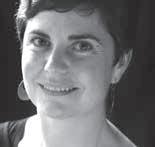
Crear un ecosistema menos competitivo, donde las estrategias de cooperación y simbiosis sean cada vez más sólidas entre los festivales y en el seno de cada organización. Construir formas de trabajo más horizontales y sostenibles, tanto con el medio ambiente como con las personas que lo conforman. Romper con la dinámica del crecimiento exponencial: cada vez más proyecciones, más sedes, más estrenos, más invitados, más, más, más. Romper con el paradigma de los festivales como modelo de negocio. Reconocer su valor como espacios generadores de nuevos imaginarios y apostar por el incremento de su incidencia social… ¿Quizás éstos podrían ser algunos de los parámetros orientativos para otros caminos posibles?



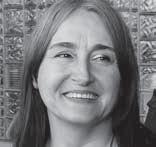
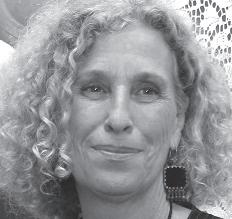


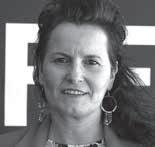
Zuzendariordeak
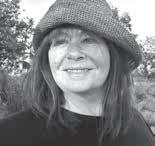
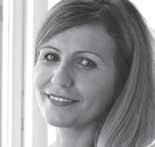
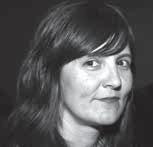
Zuzendaria | Director | Directora RIZOMA Festival
Zinema Komisario, Ekoizlea| Curator, Film Producer | Comisaria, Productora de Cine


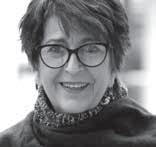



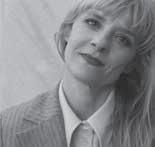

Coordinadora de Programación DocLisboa
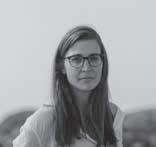
Euskadin batez ere Kimuak ezagutzen badugu ere, Estatuko autonomia erkidego gehienetan daude film laburrak banatzeko eta sustatzeko programak. Zineuskadik, ZINEBIrekin lankidetzan, film laburrak banatzeko erkidego mailako katalogoen lehen topaketa antolatu du. Azaroa-
ren 12an izango da, eta Kantauri itsasoko ertzeko autonomia erkidegoetako katalogoen ordezkariak izango ditu: Shorts from Galicia, Catálogo de cortometrajes Laboral Cinemateca (Asturias), Cantabria en Corto, Kimuak eta duela gutxi sortutako Navarra Shortzinema.
Although almost everyone knows Kimuak in the Basque Country, the programmes for distribution and promotion of short films are spread throughout most of the autonomous communities of the State. Zineuskadi, in collaboration with ZINEBI, has organized the first meeting of regional distribution catalogues of short films,
which will take place on November 12 and will have representatives of the catalogues of Autonomous Communities of the Cantabrian cornice: Shorts from Galicia, the Catalogue of Short Films Laboral Cinemateca (Asturias), Cantabria en Corto, Kimuak and the recently created Navarra Shortzinema.
Aunque en Euskadi conozcamos sobre todo Kimuak, los programas de distribución y promoción de cortometrajes se extienden por la mayoría de comunidades autónomas del Estado. Zineuskadi, en colaboración con ZINEBI, ha organizado el primer encuentro de catálogos de distribución autonómicos de cortometrajes, que
Jesús Arana Palacios
Comunidad Foral de Navarra
Comunidad Autónoma de Euskadi
Esther Cabero Gonzalo
Comunidad Autónoma de Euskadi
Ana Herrera Isasi
Comunidad Foral de Navarra
tendrá lugar el día 12 de noviembre y contará con representantes de los catálogos de comunidades autónomas de la cornisa cantábrica: Shorts from Galicia, el Catálogo de cortometrajes Laboral Cinemateca (Asturias), Cantabria en Corto, Kimuak y el recientemente creado Navarra Shortzinema.
Victor Lamadrid CantabriaGalicia
Jorge Rivero
Principado de Asturias
Aukera 18 eta 35 urte bitarteko emakumeei zuzendutako film laburren mentore-programa bat da, zeina ikus-entzunezkoen eta arte eszenikoen sektoreko emakumeak gogoan izanda lan egiten duen (H)emen elkarteak sustatzen eta antolatzen baitu, Zineuskadi, Kutxa Kultur, Bizkaiko Foru Aldundia, Gipuzkoako Foru Aldundia, Arabako Foru Aldundia eta ZINEBIrekin lankidetzan. Ikasketen ondoren profesionalizatzeko bidean, Aukerak ikus-entzunezkoen sektorean lan egin nahi duten emakumeak babestu eta ahaldundu nahi ditu. Iaz bezala, ZINEBIn programaren bi-
garren edizioan parte hartu duten zinemagileek garatutako proiektuen pitchingaren jendaurreko aurkezpena izango dugu; proiektuen aurkezpenak entzuten egongo dira epaimahaikideak ere: Lara Izagirre (Gariza Films) zuzendari, gidoilari eta ekoizlea; Nagore Eceiza (El Santo Films) zuzendari, editore eta ekoizlea, eta María Jesús Díaz (Barton Films) banatzailea. Aditu horiek arduratuko dira film laburren proiektuak baloratzeaz eta (H)emen Saria eta Sortzaileen Saria irabaziko duten hautagaiak zein izango diren erabakitzeaz.
Aukera is a short film mentoring programme for women aged between 18 and 35, launched and organised by the association targeting women in the audiovisual sector and scenic arts (H)emen, alongside Zineuskadi, Kutxa Kultur, the Bizkaia Provincial Council, Gipuzkoa Provincial Council, Araba Provincial Council and ZINEBI.
Aukera aims to protect and empower women wishing to work in the audiovisual sector as they move towards professional status from their studies. Like last year, ZINEBI will be staging the
public presentation of pitchings of projects by filmmakers in the second round of the programme, to a jury panel composed of director, scriptwriter and producer Lara Izagirre (Gariza Films), director, editor and producer Nagore Eceiza (El Santo Films) and distributor María Jesús Díaz (Barton Films). These specialists will be tasked with assessing the short films and choosing the winners competing for the Aukera (H)emen Saria (Aukera (H)emen Award) and the Sortzaileen Saria (Aukera Award for Creation).
Aukera es un programa de mentorías de cortometraje dirigido a mujeres de entre 18 y 35 años, impulsado y organizado por la asociación dirigida a mujeres del sector audiovisual y las artes escénicas (H)emen, en colaboración con Zineuskadi, Kutxa Kultur, Diputación Foral de Bizkaia, Diputación Foral de Gipuzkoa, Diputación Foral de Araba y ZINEBI.
En el camino de la profesionalización desde los estudios, Aukera pretende proteger y empoderar a las mujeres que quieran trabajar en el sector audiovisual. Como ya ocurrió el año pasado,
ZINEBI acogerá la presentación pública del pitching de los proyectos desarrollados por las cineastas participantes en la segunda edición del programa, ante un jurado integrado por la directora, guionista y productora Lara Izagirre (Gariza Films), la directora, editora y productora Nagore Eceiza (El Santo Films) y la distribuidora María Jesús Díaz (Barton Films). Estas especialistas se encargarán de valorar los proyectos de cortometraje y de elegir a las ganadoras, que optan por el Premio Aukera (H)emen y por el Premio Aukera a la Creación.
Le Canapé Rouge ............................................199 compagnie.eric.rohmer@gmail.com Canker..................................................................83 festivals@manifest.pictures Casa Susanna ..................................................145 julie@agatfilms.com Castells ...............................................................84 adine@voltaproduccion.com
Cat and Bird .....................................................246 Saka sy vorona mail@uli-seis.de sales@shortfilm.com
Cat and Moth ....................................................247 info@catandmoth.com Chopping Wood Chips .....................................85 alize.sotelo@gmail.com Contracampos ..................................................86 Camps vera.robert.r@gmail.com Cubalibre .............................................................69 andergraunfilms@gmail.com Cuerdas .............................................................163 Chords fest@marvinwayne.com kimuak@filmoteka.eus
D Deaf Mute Girl Reciting Star Spangled Banner................................................................237 Deafness ..........................................................238 Glukhota (ig) @myroslav.slaboshpytskiy
Death of a City..................................................132 A morte de uma cidade nevena.desivojevic@terratreme.pt
Des Goûts et des Couleurs ..........................202 compagnie.eric.rohmer@gmail.com
The Devil
Diabeł anbujnowski1@gmail.com Digo vivir
I Say to Live jfdelasota@gmail.com Directed Games
Jogos dirigidos (ig) @jonathasdeandrade Disdirak
Don’t Blow It Up................................................247 Odpusť alexandra.hroncova@famu.cz
E The Empty Sphere............................................88 Le Cercle Vide steph.roland@gmail.com Erro bi
nagoremurielletamendia@gmail.com Espera y sedimento
Hold On & Sediment tanagarrido.art@gmail.com Euritan
kimuak@filmotecavasca.com
In the Big Yard Inside the Teeny-Weeny Pocket .................................................................101 ミニミニポッケの大きな庭で koji@yamamura-animation.jp
Infernuan ...........................................................169 In Hell sutiliense@yahoo.es
Influencer ..........................................................170 Ikusgarrifilms@gmail.com
Irrits......................................................................171 Thirst kimuak@filmoteka.eus Izaro: limoiari eztia ...........................................157 Izaro: Tender Rebel produccionizaro@gmail.com
K Kalavrita-Guernica ........................................223 isminisakel@yahoo.gr
L L’Anniversaire de Paula ...................................197 compagnie.eric.rohmer@gmail.com Laika & Nemo ..................................................248 johannes@schubert.film
Letter to a Pig ...................................................102 festival@miyu.fr Letter to a Turtledove .....................................186
daria.kavelina@gmail.com Like a Fish on the Moon .................................135 lya@chineseshadows.com
Little Red Riding Hood in German Sign Language ..........................................................241 Rotkäppchen in Deutscher Gebärdensprache (ig) @brittdunse
Liturgy of Anti-Tank Obstacles ....................187 dmytro.sukholytkyy.sobchuk@gmail.com Live......................................................................103
Na żywo jhan@wajdaschool.pl mara.tamkovich@gmail.com
Lo ibiltariak ........................................................60
Lo-Tech Reality ................................................104 alexandre@lesvalseurs.com
Luz a la deriva......................................................61 Luz nocturna
ale@noche-negra.com
M Mariupolis 2
The Matchmaker
sales@fandango.it May the Earth Become the Sky....................106 Face-s-ar pământul cer anavijdea@gmail.com Medusak
Jellyfishes info.iraticano@gmail.com Meta...................................................................249 info@gobelins.fr
Misaligned
Koniunkcja glowinska@animoon.pl
Motioning - Fire
Bewogen - Vuur Music for Black Pigeons
emile@emileperonard.dk Mutzenbacher
sekretariat@ruthbeckermann.com
Caillou francois@barberousse-films.com
Searching Heleny .............................................116
Cadê Heleny? vercadeheleny@gmail.com
See You Friday, Robinson ...............................151 À Vendredi, Robinson contact@ecrannoirproductions.frc Serpent Rain .....................................................216 eightartwork@gmail.com
Shadow of the Butterflies ...............................117 L´Ombre des Papillons yves.bouveret@orange.f
The Silent Whistle.............................................118 风筝 liyingtong_123@outlook.com Solidarity ............................................................119 Solidariedade fernanda@pessoaproducoes.com Son of the Sun ..................................................120 Atasinin Salasi grigoriy@festagent.com Sonnenstube .....................................................121 administration@gargantuadistribution.it Spiral ..................................................................122 Kierre andy@rainafilms.com
Stain ...................................................................123 Lakkeh shivasadeghassadi@gmail.com Stranger than Rotterdam with Sara Driver 124 lewie@tallglasswithice.com
T Territories ...........................................................217 info@isaacjulien.com
Tetuán ................................................................158 Tetouan pimpinellafilms@gmail.com marmoka@marmokafilms.com
Think Something Nice ....................................125 mail@gentinettafilm.ch
Todas mis cicatrices se desvanecen en el viento..................................................................126 All My Scars Vanish in the Wind @ cdvelandiav@gmail.com Transfer .............................................................223 marcosurquijo@gmail.com
U Ukraine. Overcoming the Darkness ............185 beskhmelnitsyna@gmail.com Un Dentiste Exemplaire ................................200 compagnie.eric.rohmer@gmail.com Une Histoire qui se Dessine.........................204 compagnie.eric.rohmer@gmail.com
V Vibrations - Inner Music................................243 Vibrations – Innere Musik (ig) @cadenzazhao, @kasscalldance
W Waters of Pastaza............................................139 Juunt pastaza entsari jasmina@syndicado.com
Well Wishes My Love, Your Love ...................127 gabriel@gabrielgabrielgarble.com Wild Flowers .....................................................128 Divlje cvijeće karla.crncevic@gmail.com
Z Zoon ....................................................................129 festival@miyu.fr
Maria Elorza ........................................................143 Alba Esquinas ....................................................109
F Nikolett Fábián ....................................................115
Alice Fassi...........................................................100 Gonzalo Ernesto Fernández ...........................167 José Fernández de la Sota..............................156 Anna Fernández de Paco..................................99
Maider Fernández Iriarte .................................166 Denise Ferreira da Silva ...................................216 Iratxe Fresneda ..................................................158
G Gabriel Gabriel Garble......................................127
Jan Gadermann
Sebastian Gadow..............................................248 Enara García.........................................................90 Guillermo García López
Tana Garrido Ruiz
Claudius Gentinetta
Sonia Gerbeaud
Marisol Gil Antillano
223 Matija Gluščević
Olivia Gombault
Marta Gómez
Paula Gómez González
223 Maria Inês Gonçalves
Irati Gorostidi
Tian Guan
Dana
Marie Rivière .......................................................198 Stéphanie Roland ...............................................88 João Rosas ..........................................................132 Rosette ......................................................200, 203 Alessandra Rosmarino ....................................249 Anne-Sophie Rouvillois ...................................204
S Anaëlle Saba ......................................................249 Franka Sachse ...................................................246 Shiva Sadegh Assadi ........................................123 Ismini Sakellaropoulou ...........................222, 223 Iñigo Salaberria ...........................................54 - 63 Arantza Santesteban ........................................214 Isabelle Schmidt ................................................241 Jonatan Schwenk
Albert Serra .................................................64 - 69 Edwige Shaki.......................................................199 Myroslav Slaboshpytskiy.................................238 Nacho Solana .....................................................173 Salla Sorri.............................................................122 Alize Sotelo Gutiérrez ........................................85 Dmytro Sukholytkyy-Sobchuk ........................187 Marusya Syroechkovskaya ..............................134
T Mara Tamkovich .................................................103 Anatoliy Tatarenko .............................................188 Marguerite Thiam Donnadieu..........................113 Kim Torres............................................................105 Nerea Torrijos .....................................................170 Lin Tu ......................................................................83 Volodymyr Tykhyy
U Ane Unzalu
Ainhoa Urgoitia
Marcos Urquijo Yáñez
223 Estibaliz Urresola Solaguren
V Francisco
Carlos
Ainara
Ana
Esther
Dian
Cadenza
Olha
Mila
Dušan Zorić
Zuzendaria / Director / Directora Vanesa Fernández Guerra
Zinemaldiko Idazkari Nagusia / General Secretary / Secretaria General Inés Intxausti Programazioa / Programming / Programación Rubén Corral
Hautaketa Batzordea / Selection Committee / Comité de Selección Alaitz Arenzana Rubén Corral Víctor Iturregui Laura Lazcano Marcos Urquijo
Filmen Mugimendua / Print Traffic / Tráfico de Copias Cristina Ezquerra (PACAY S. L.)
Ekoizpena eta Koordinazioa / Production and Coordination / Producción y Coordinación María Salazar Riaño (PACAY S. L.)
Gonbidatuak / Guests / Invitados Marisol Gil Antillano (PACAY S. L.)
Epaimahiko Idazkaria / Secretary of the Jury / Secretario del Jurado Jose Manuel Arias Delgado
Katalogoa / Catalogue / Catálogo Yunuen Cuenca Vázquez (PACAY S. L.)
Komunikazioa eta Sare Sozialak / Communication & Social Media / Comunicación y RRSS Paula Gómez González
Ekitaldien zuzendaritza artistikoa / Galas Art Direction / Dirección Artística de las Galas La Dramática Errante (María Goiricelaya y Ane Pikaza)
Dirección Técnica de las Galas / Galas AV Production / Ekitaldien zuzendaritza teknikoa Claro de Luna
Prentsa Bulegoa / Press Office / Oficina de Prensa VK Comunicación
Komunikazio eta Prentsako Laguntza / Press and Communication Assistant / Apoyo en Comunicación y Prensa Comunicación Nueve Cartas (Andrés García)
Agencia de Publicidad y Comunicación / Publizitate eta Komunikazio Agenzia / Advertising and Communication Agency AURMAN
Itzulpenak / Translations / Traducciones Traductores e Intérpretes S. A. - TISA
Irudi-kanpaina / Graphic Campaign / Campaña gráfica Happyending Studio (Ángela Alonso y Elena Perea)
Katalogoaren Diseinua / Catalogue Design / Diseño de Catálogo Binari Comunicación
Web
Lander Telletxea Armendariz
Argazkilariak / Fotógrafos / Photographers Caostica
Bideoa / Vídeo / Video Begira Produkzioak
Azpititulo Elektronikoa / Electronic Subtitling / Subtitulado Electrónico Basque Films S. L.
Zerbitzu Teknikoa eta Proiekzioak / Servicio Técnico y Proyecciones / Technical Service and Screenings
Extremiana Audiovisuales, S. L.
Imprimatzaile / Printing House / Impresión Vascograf
